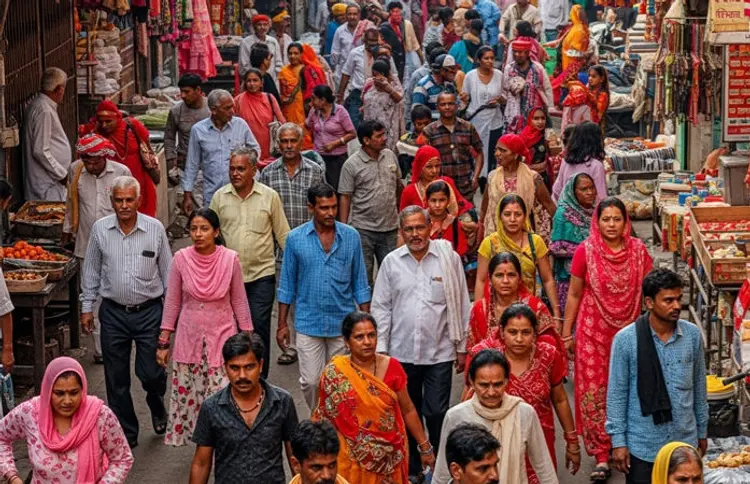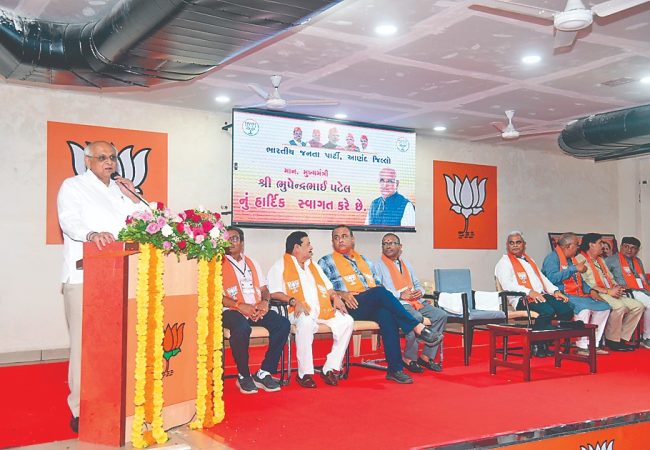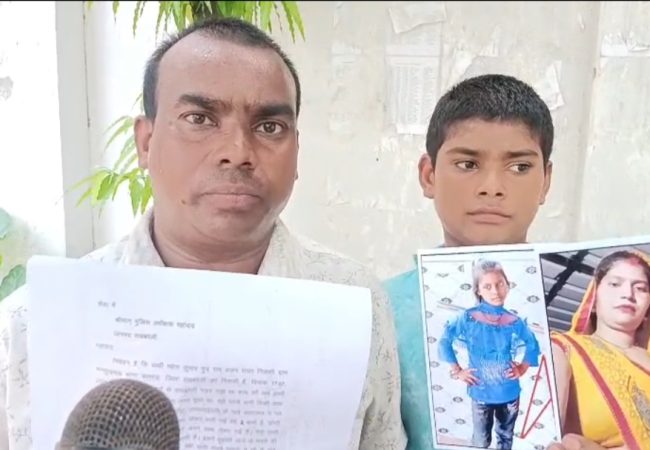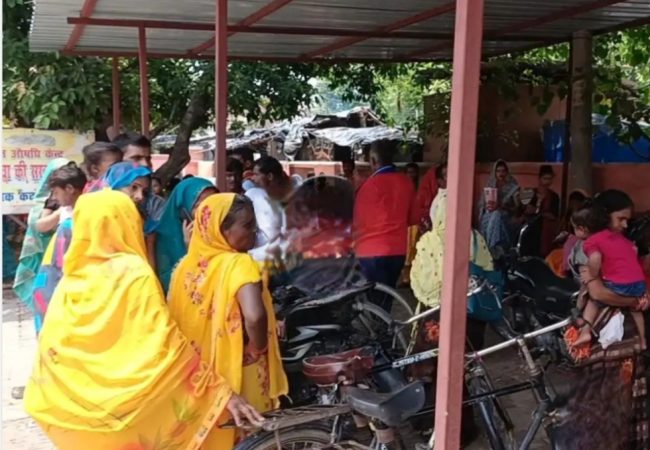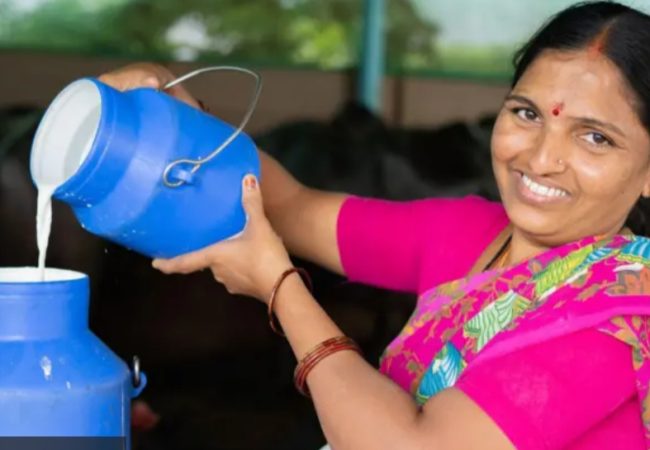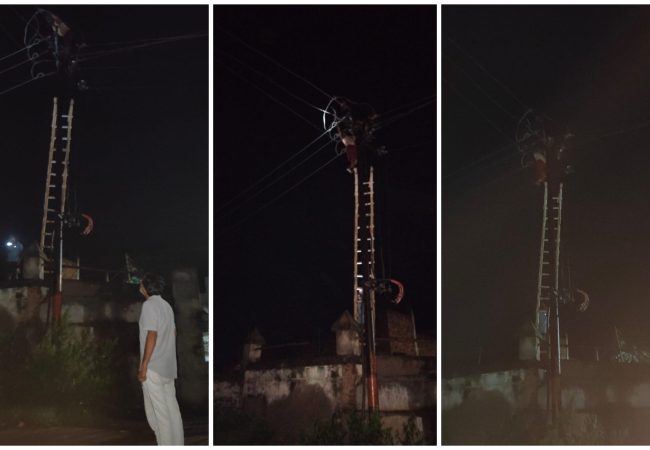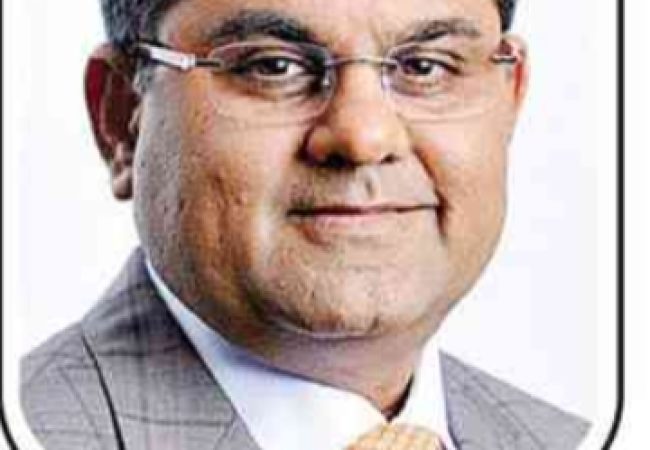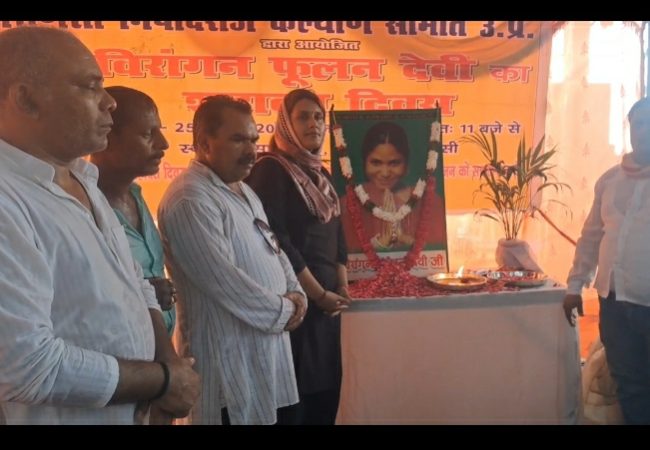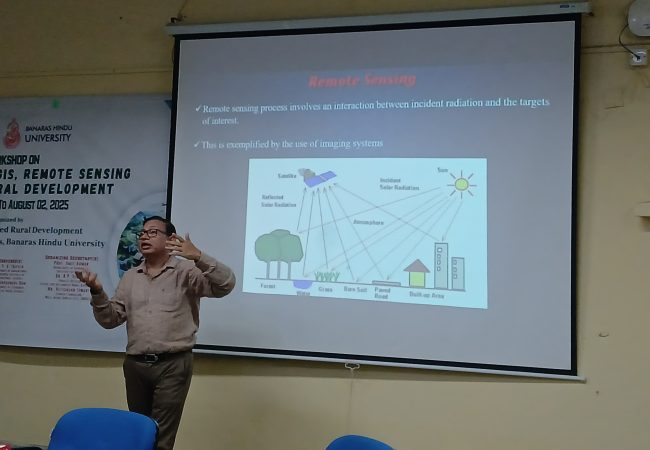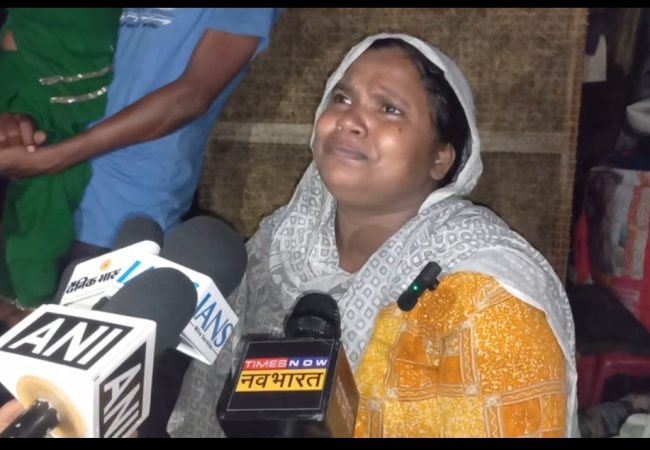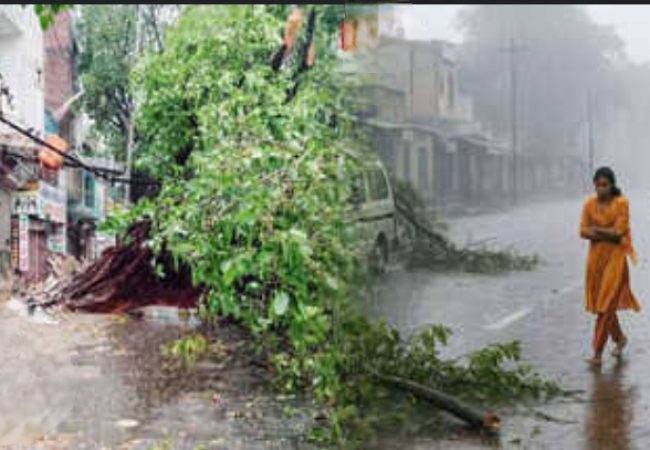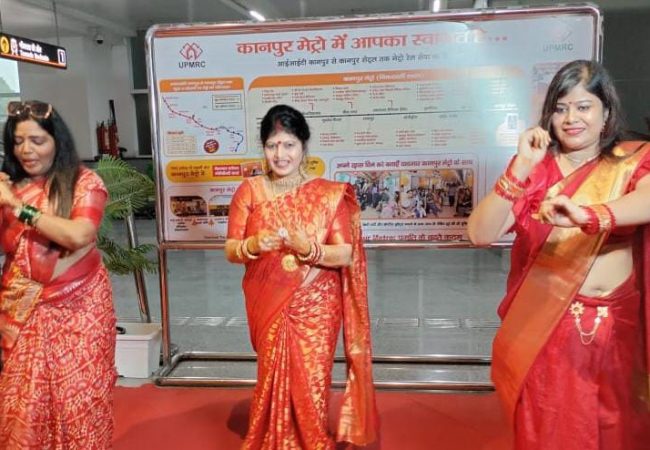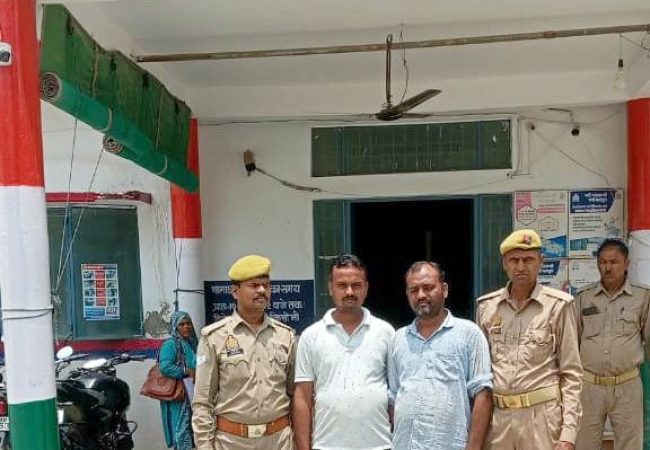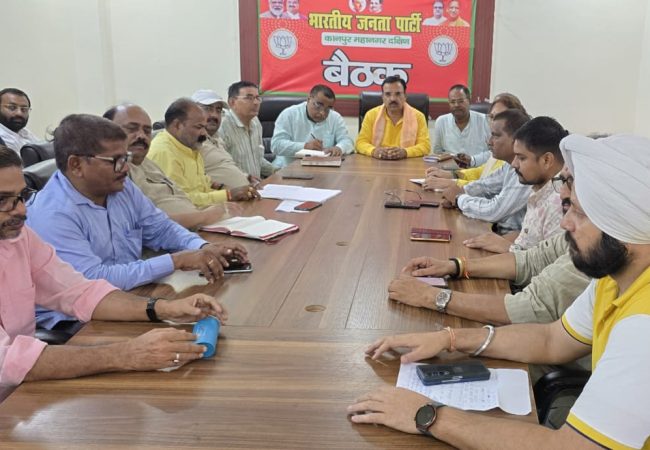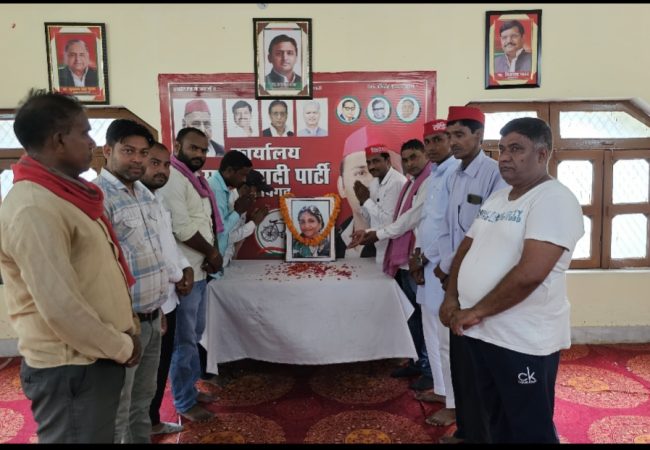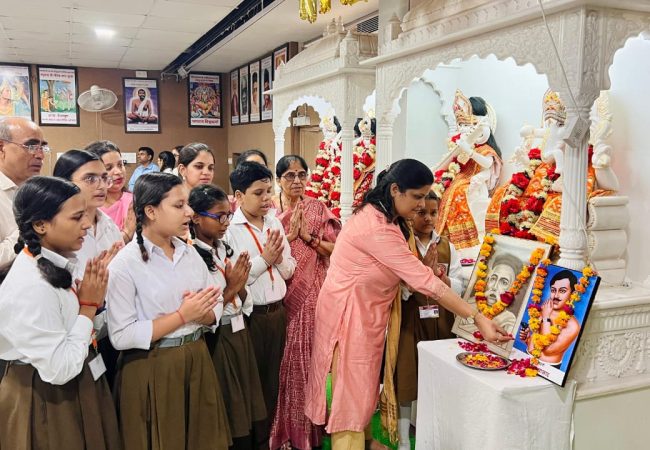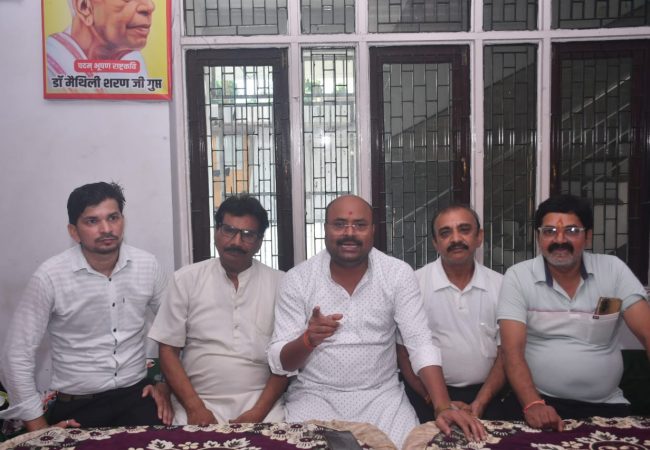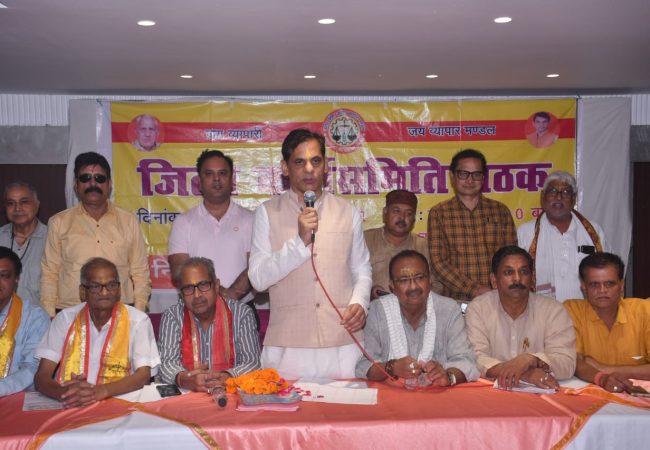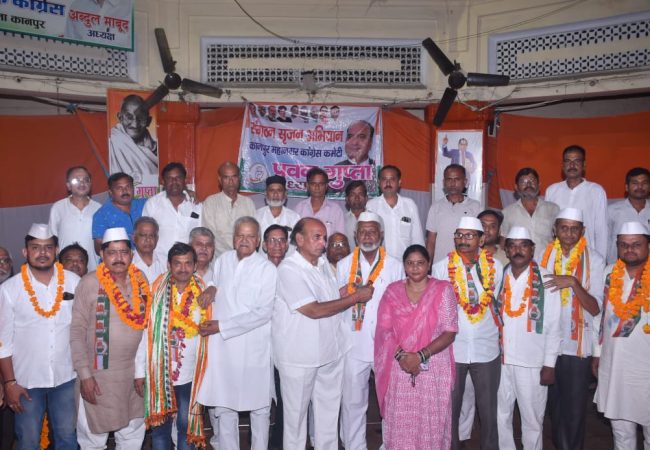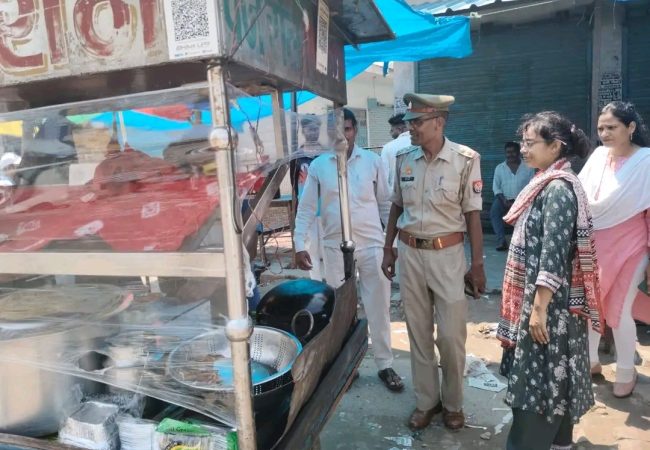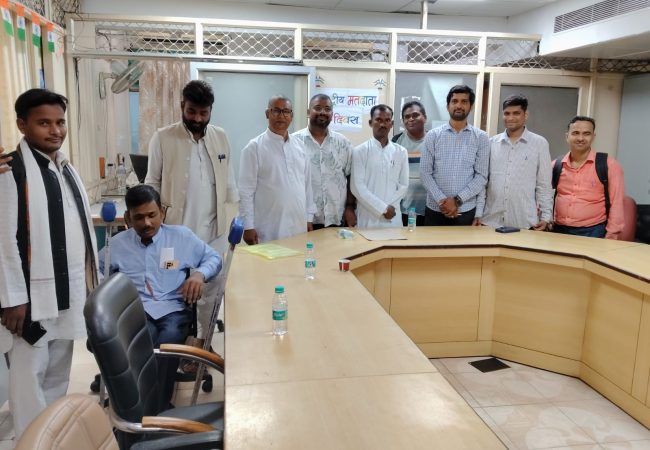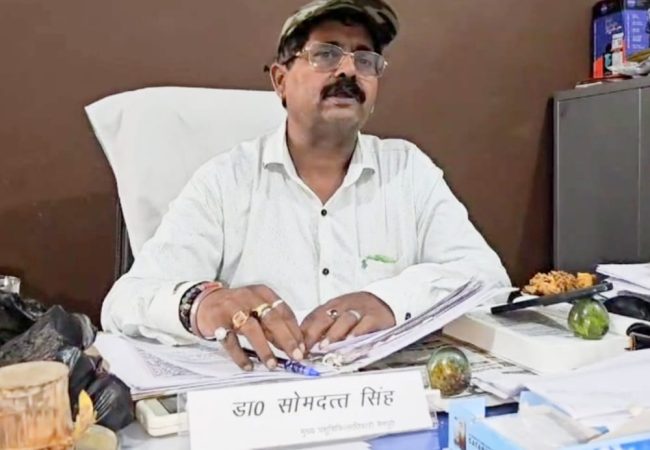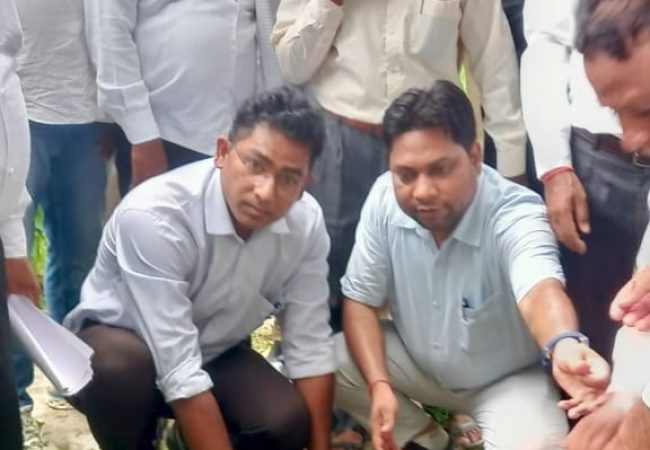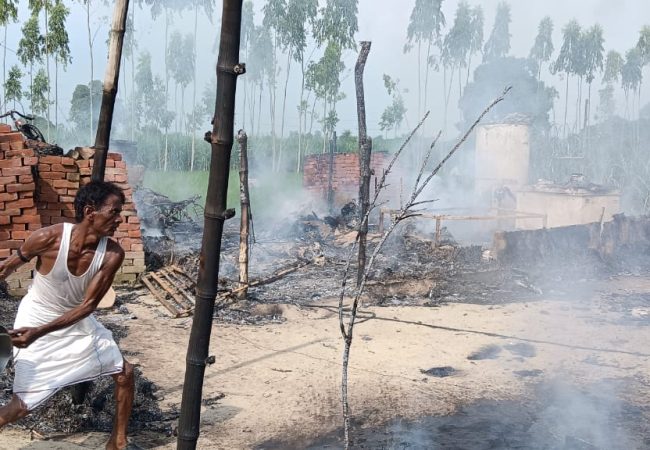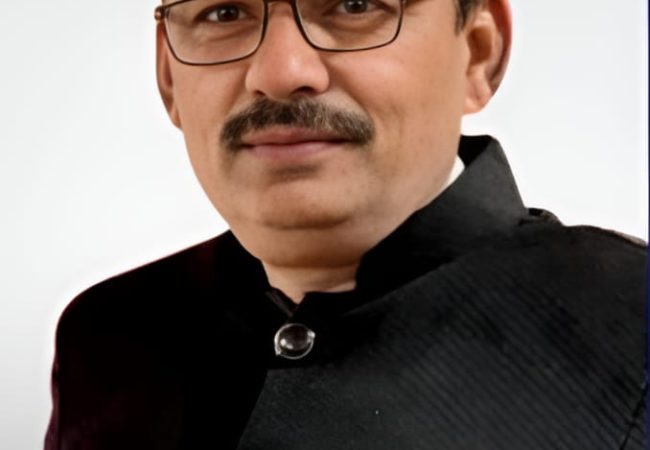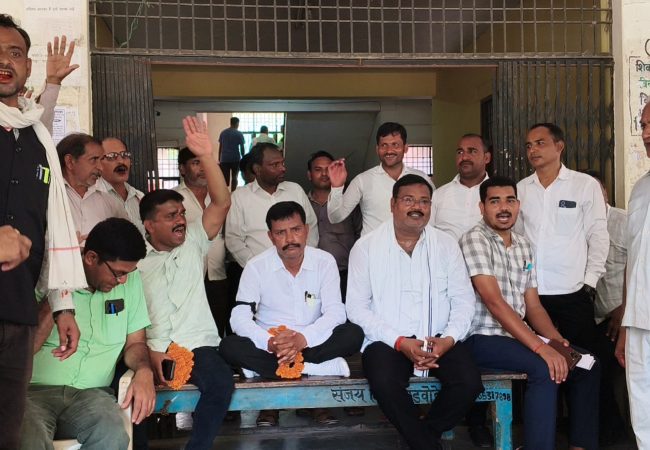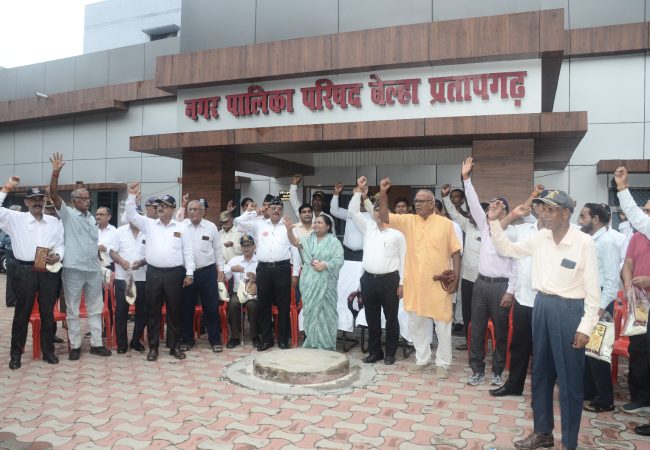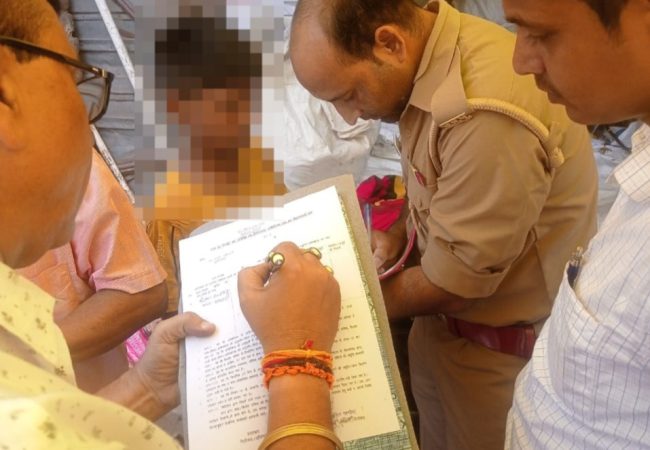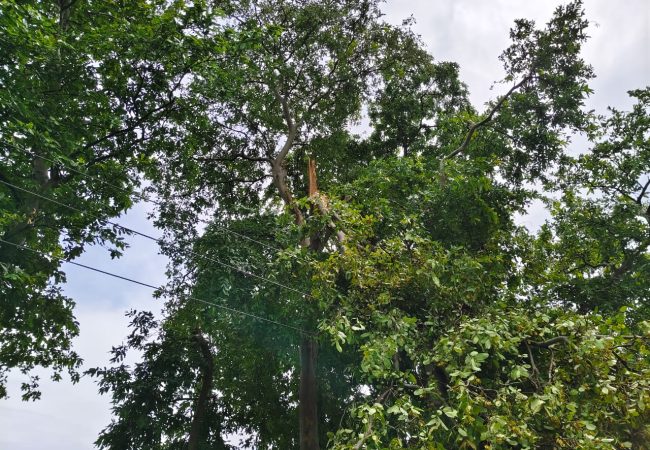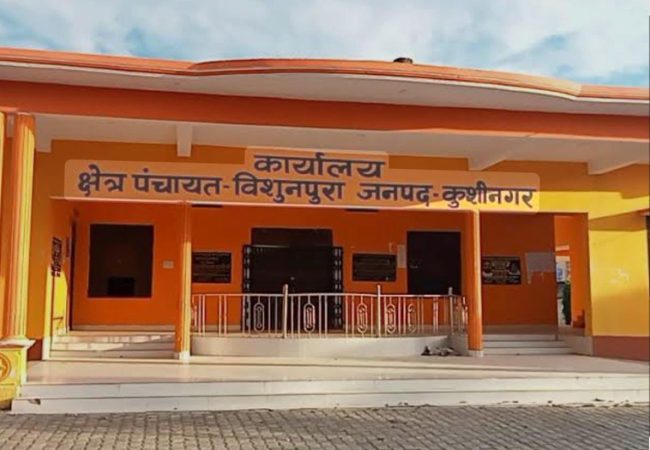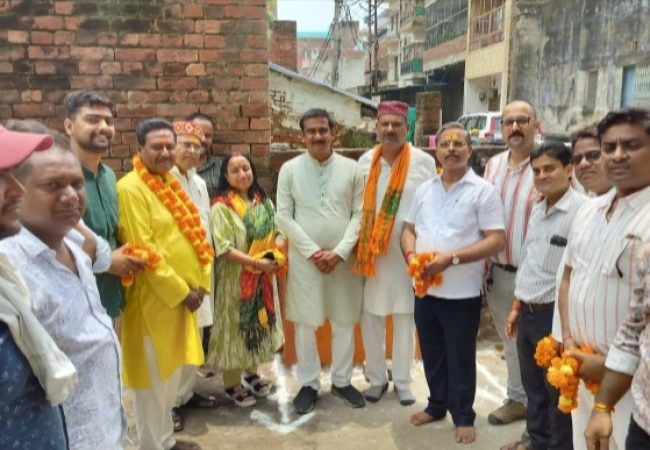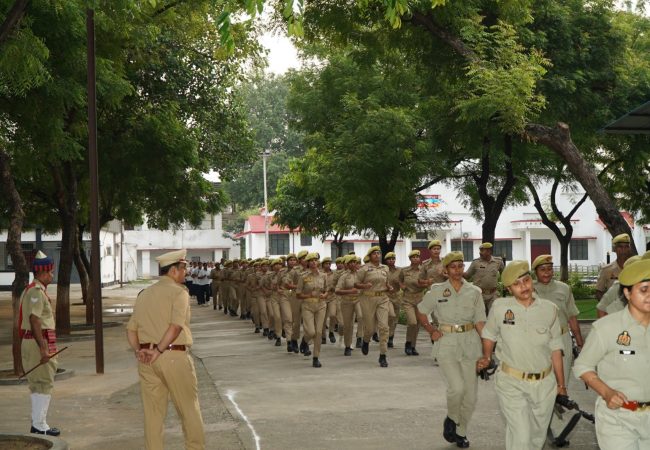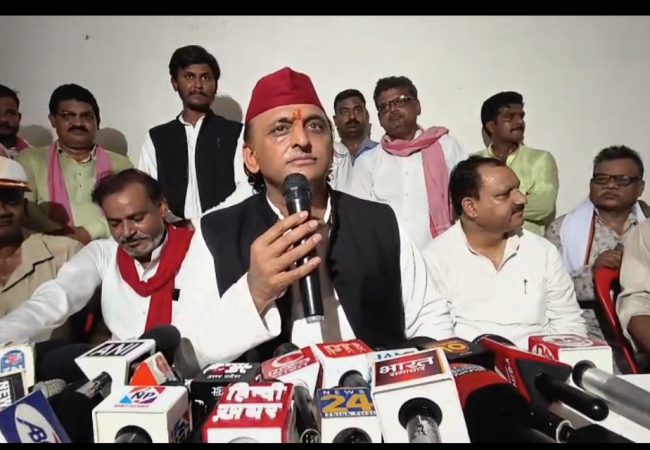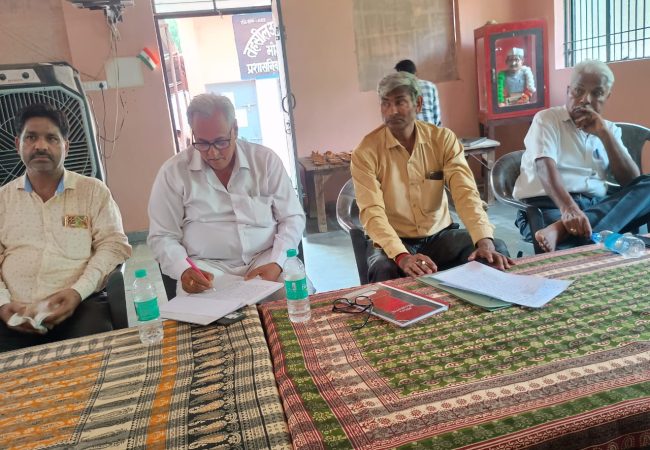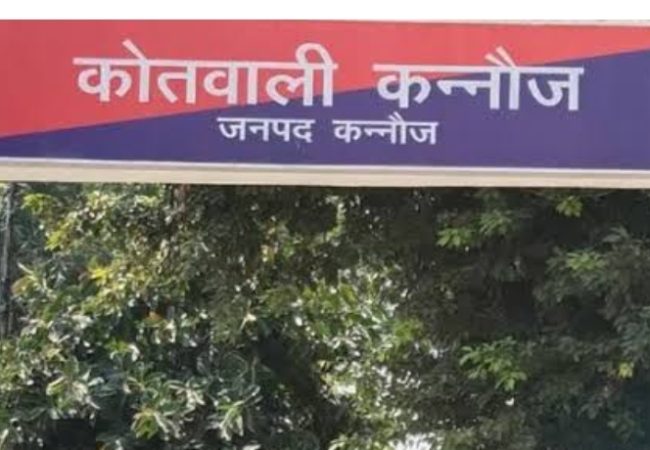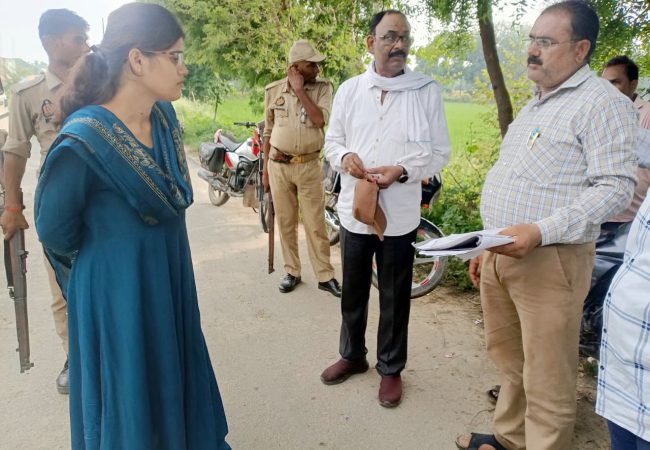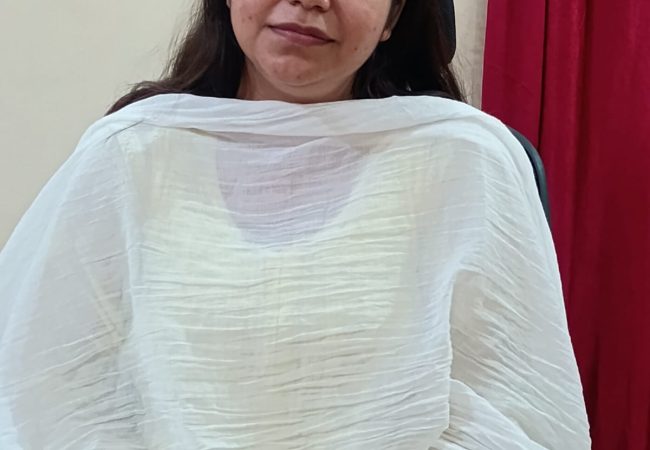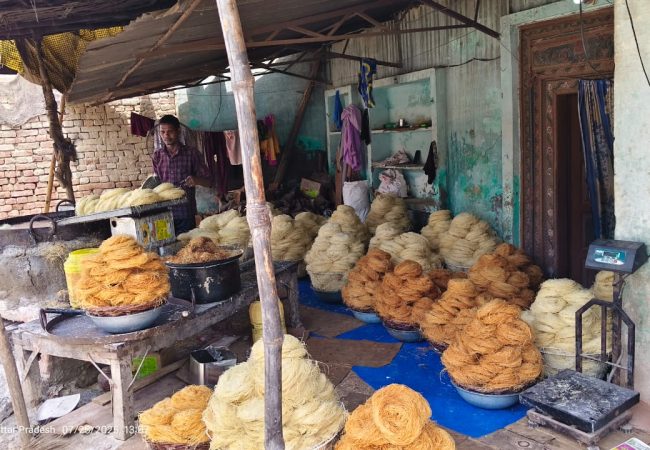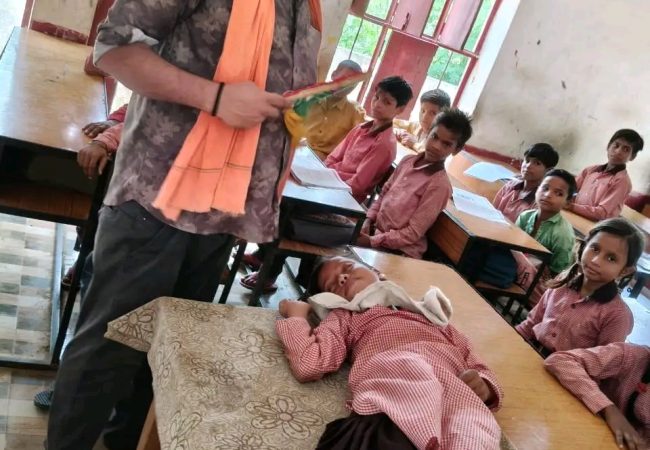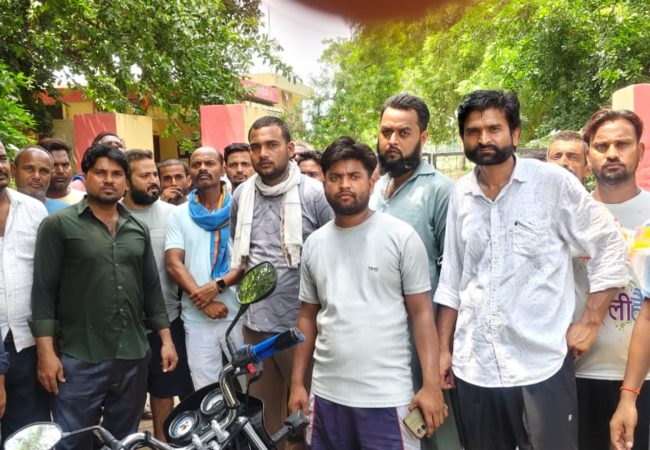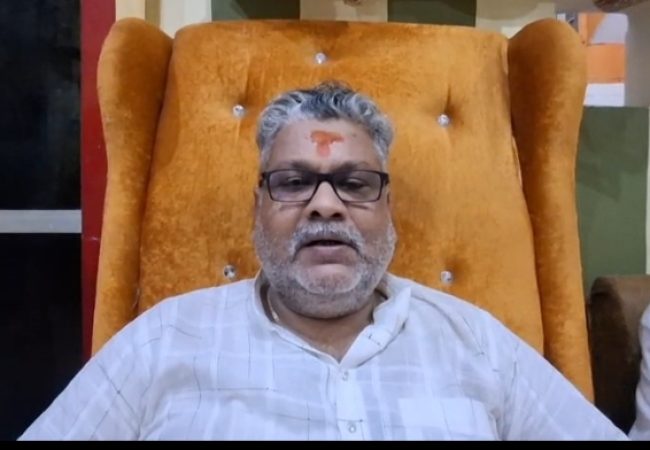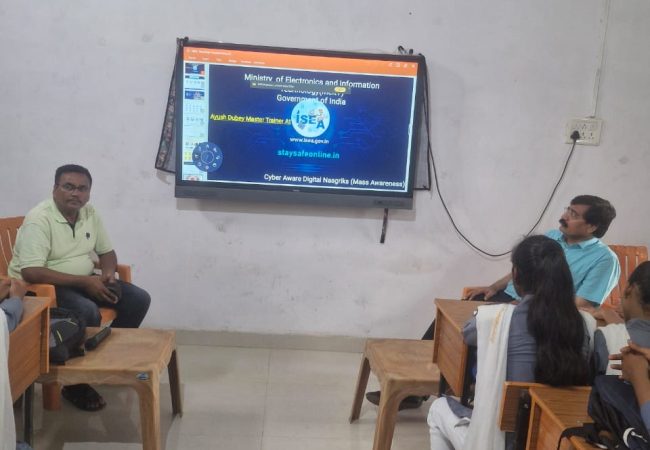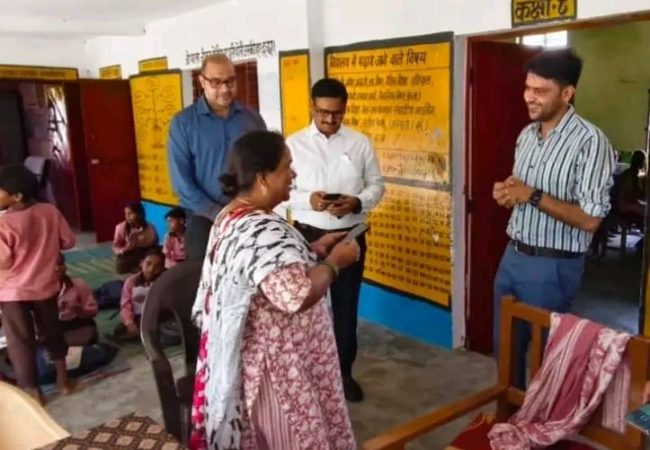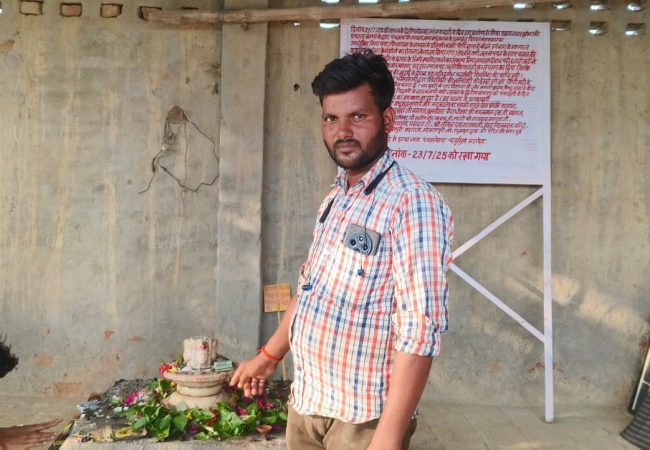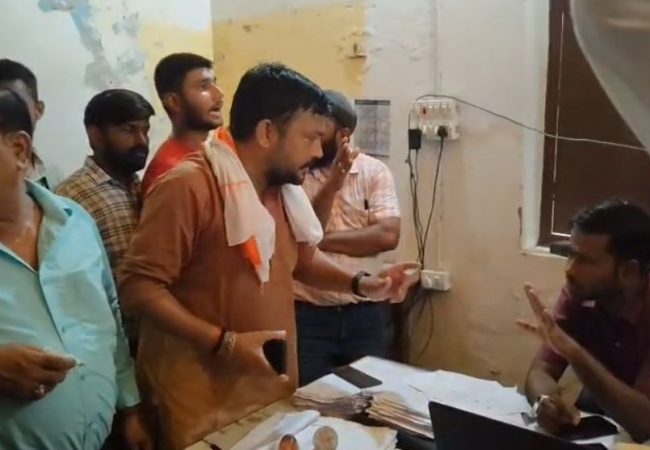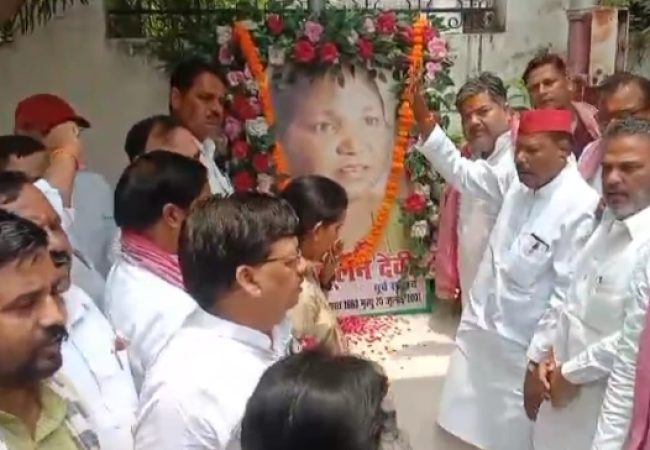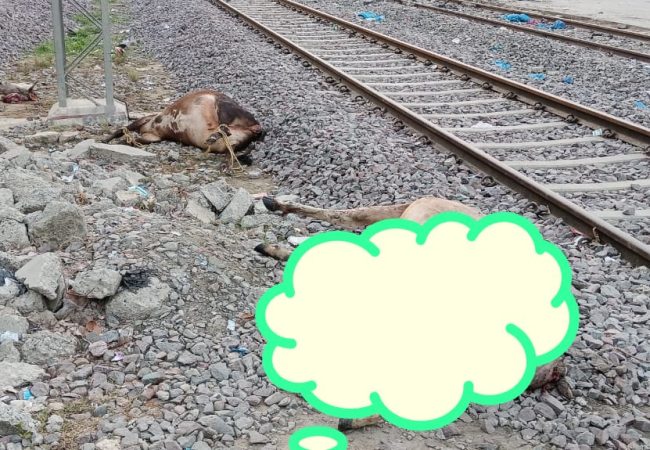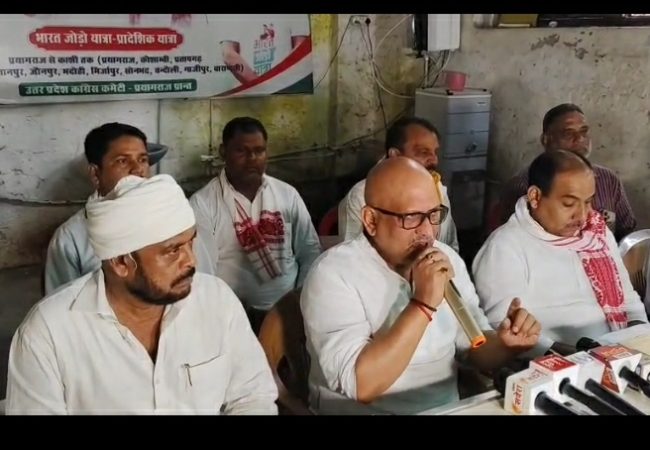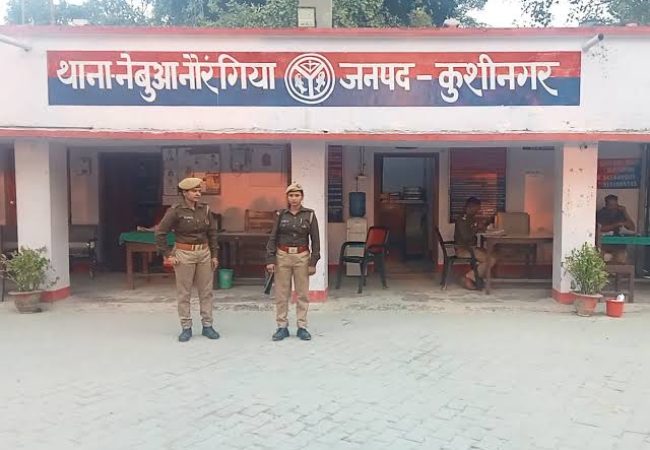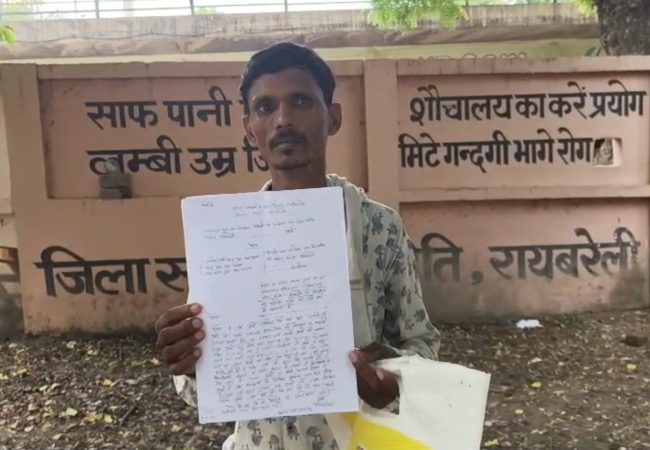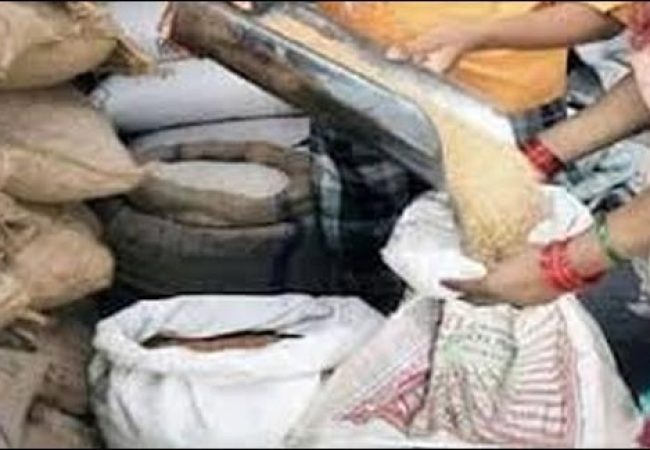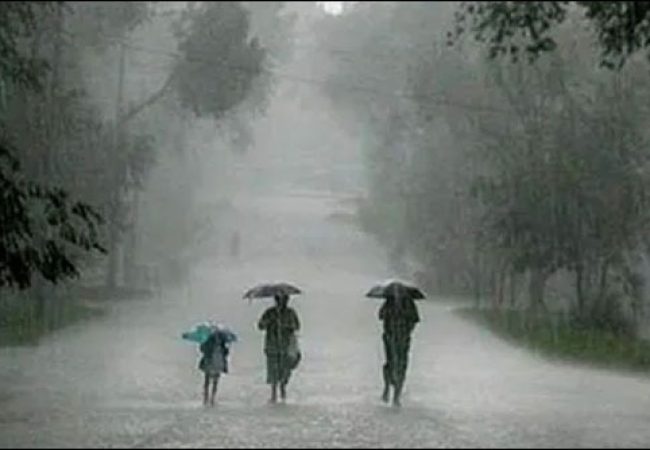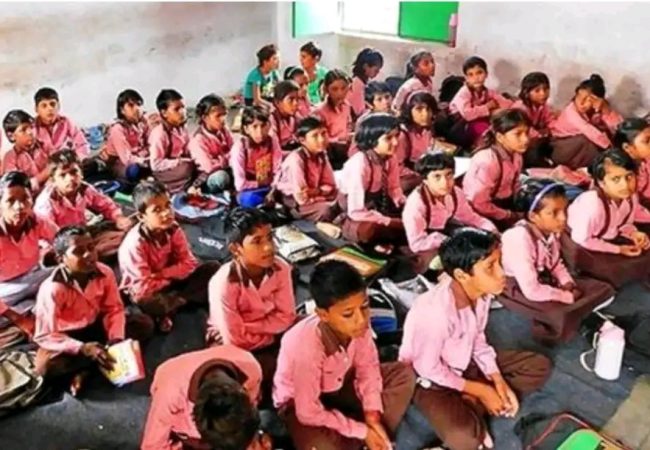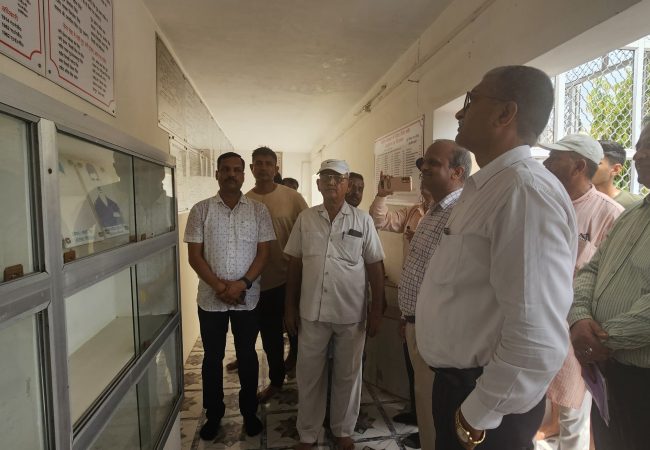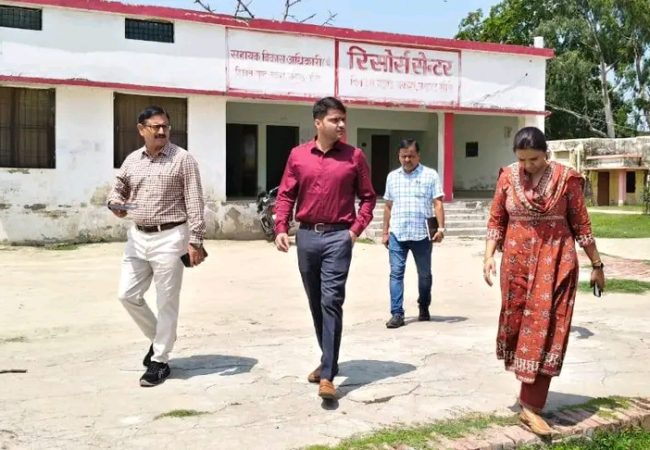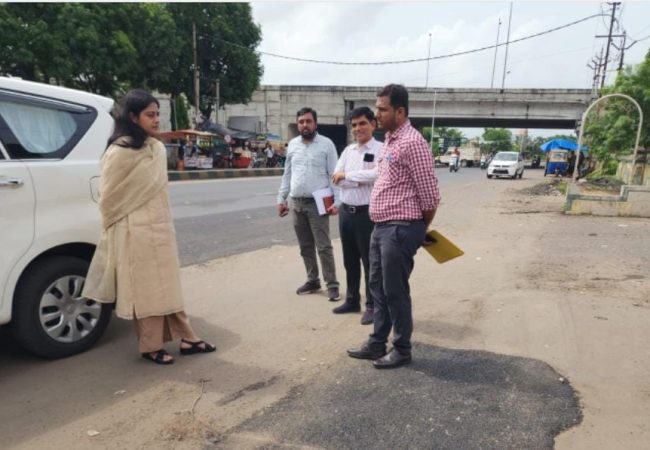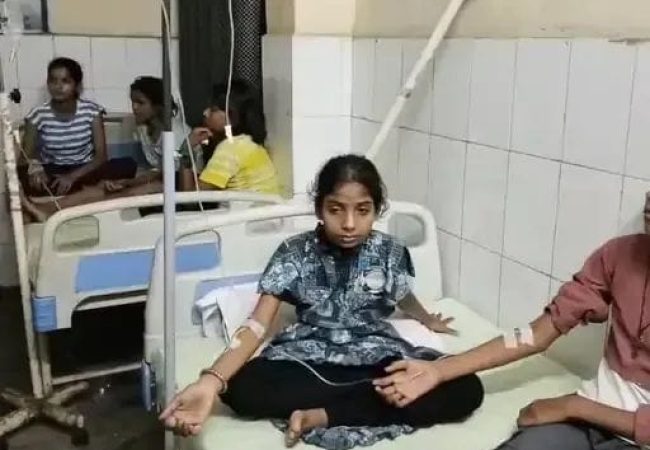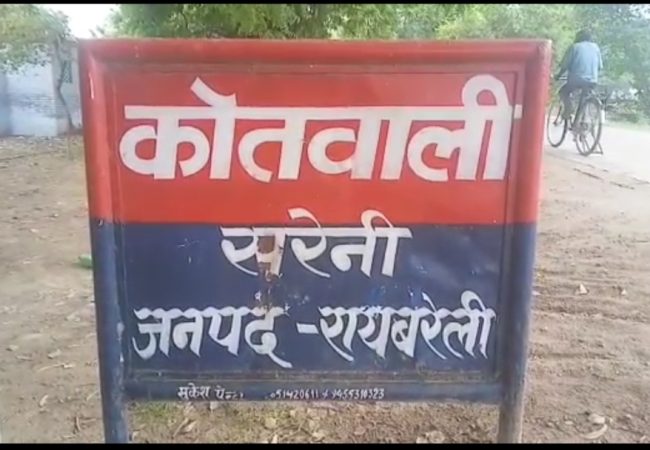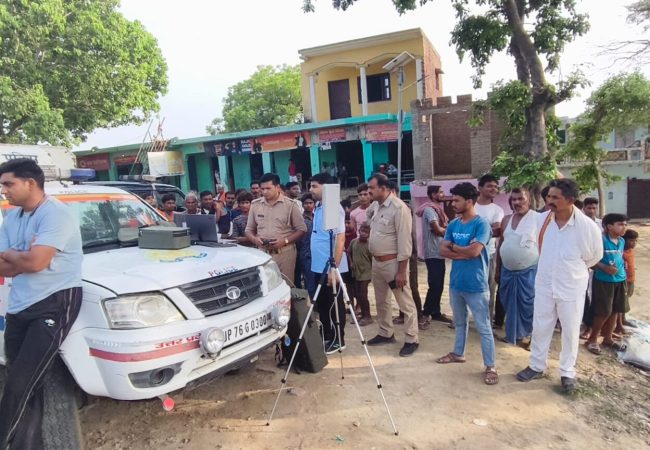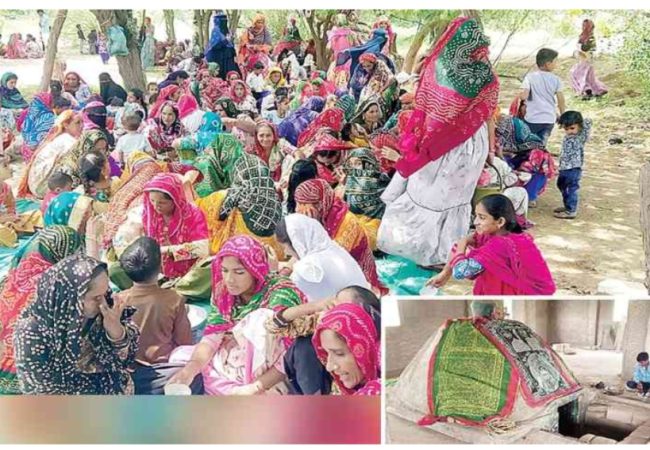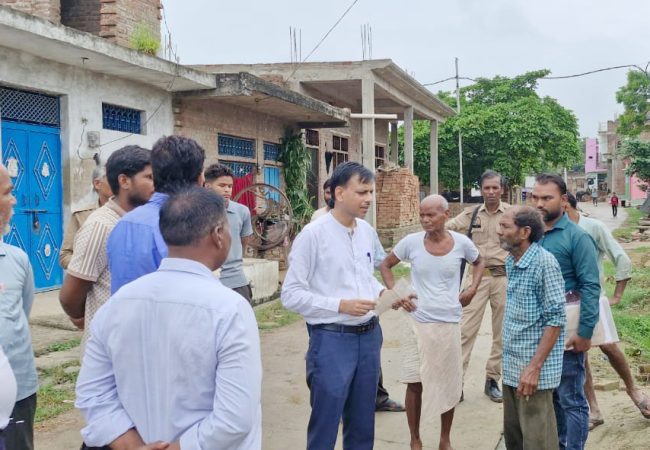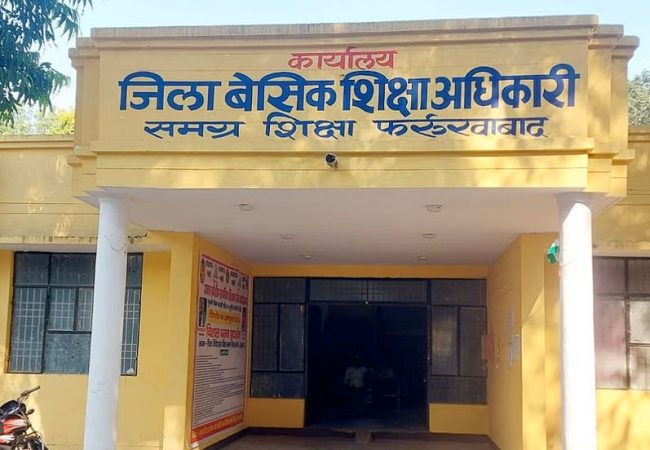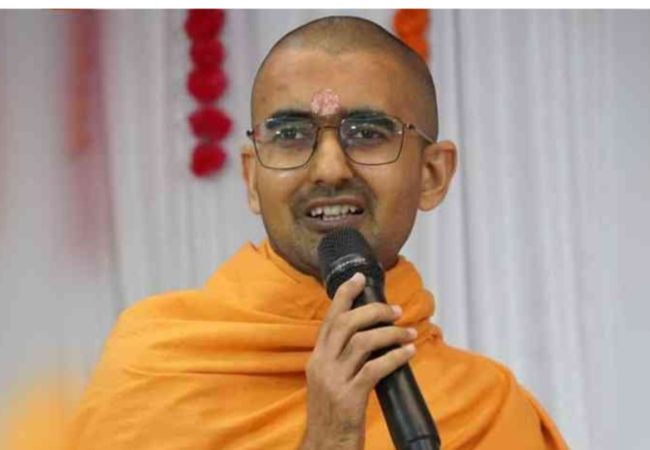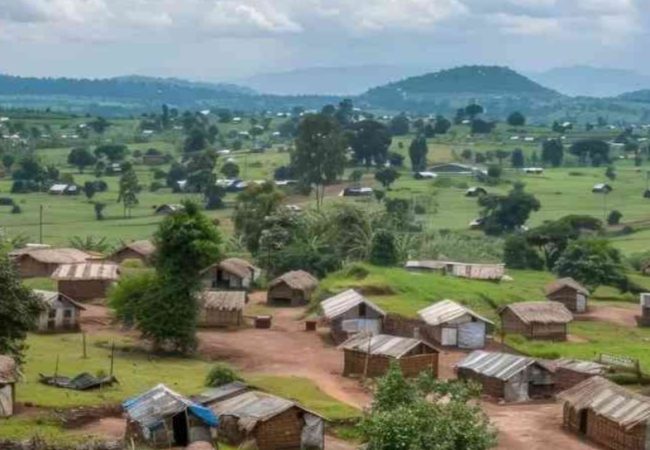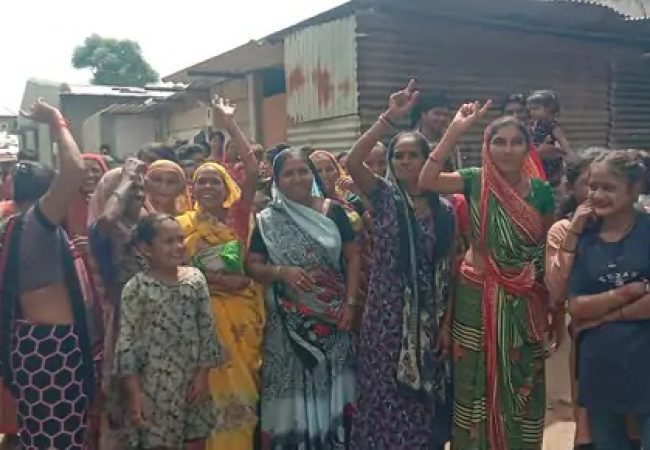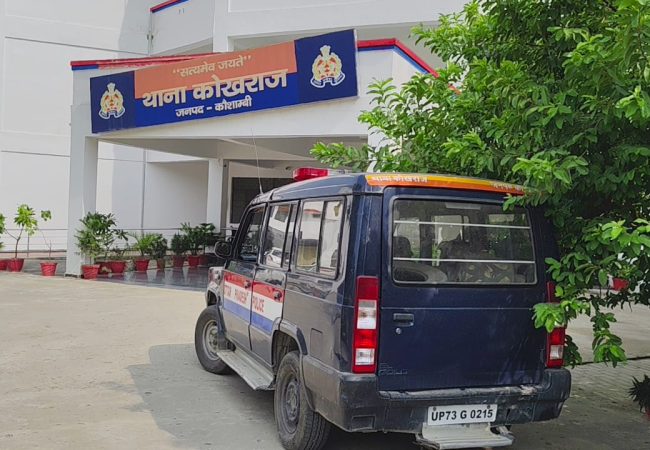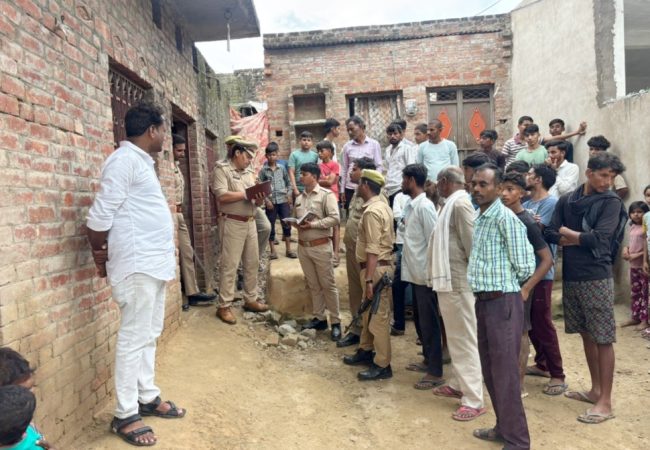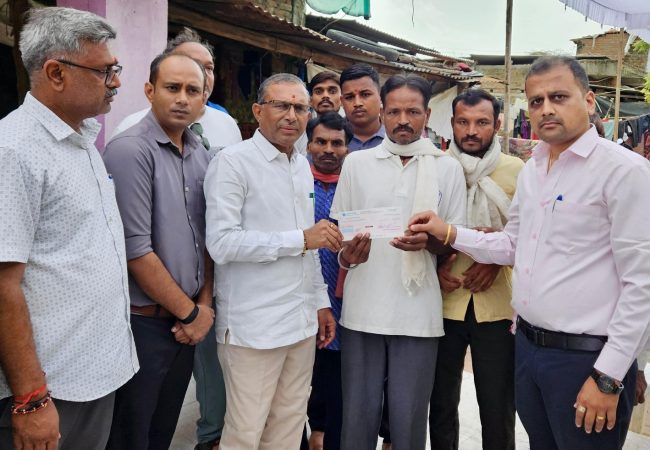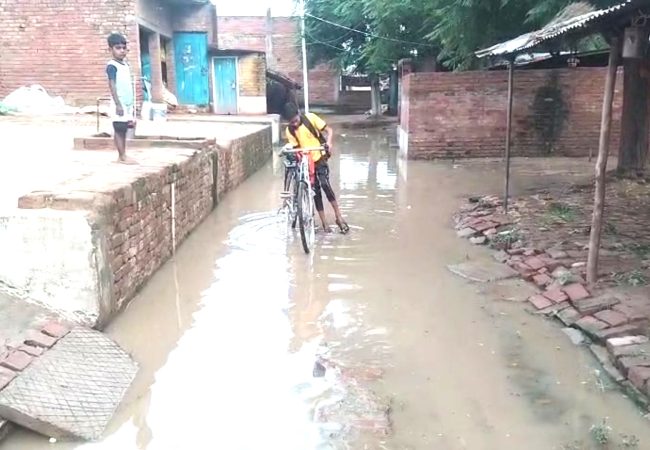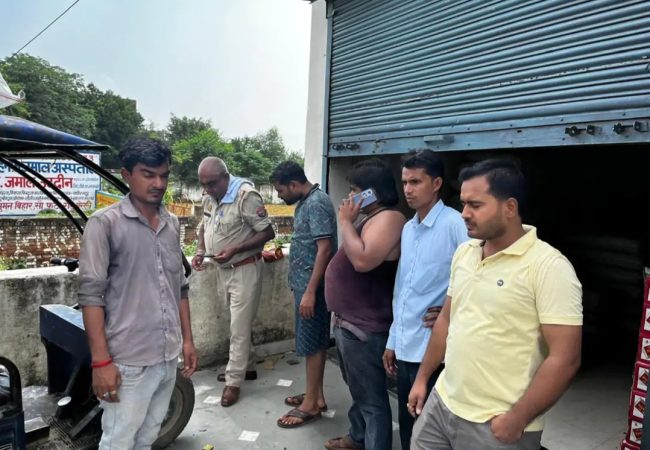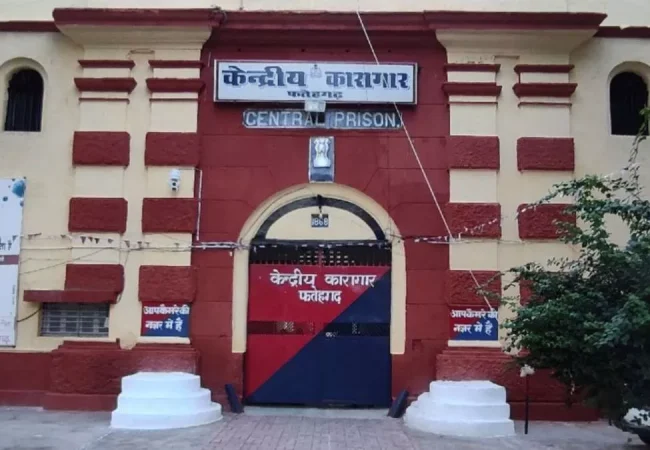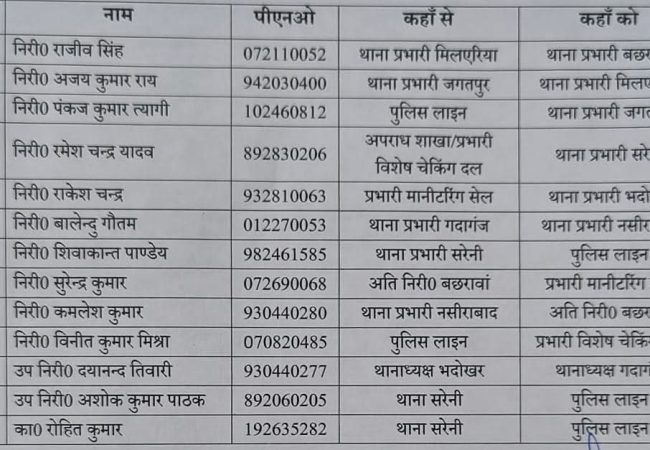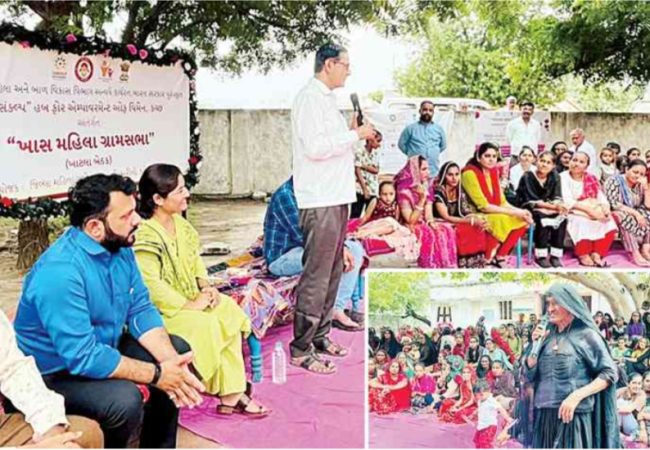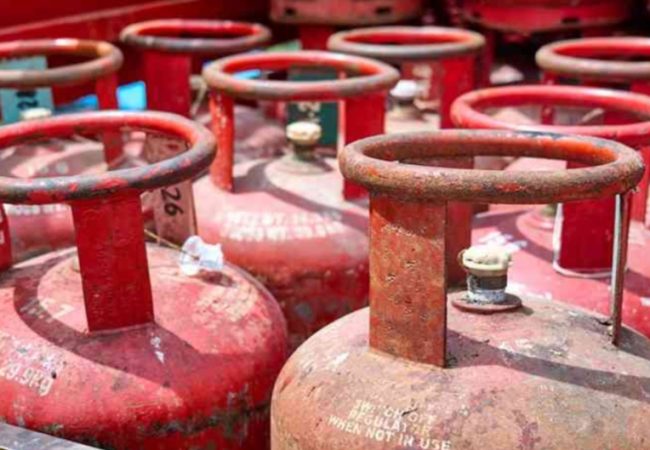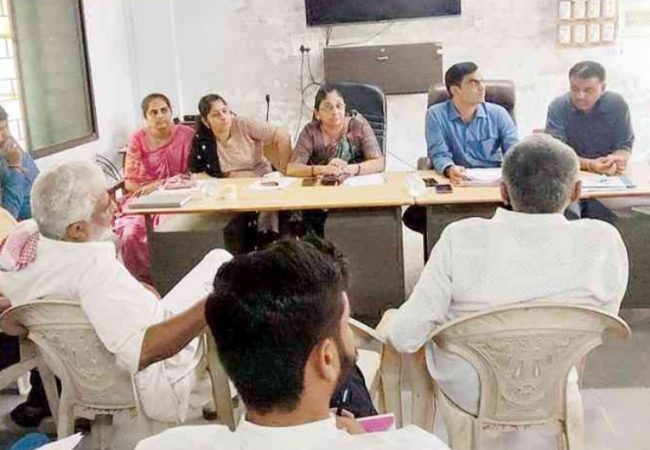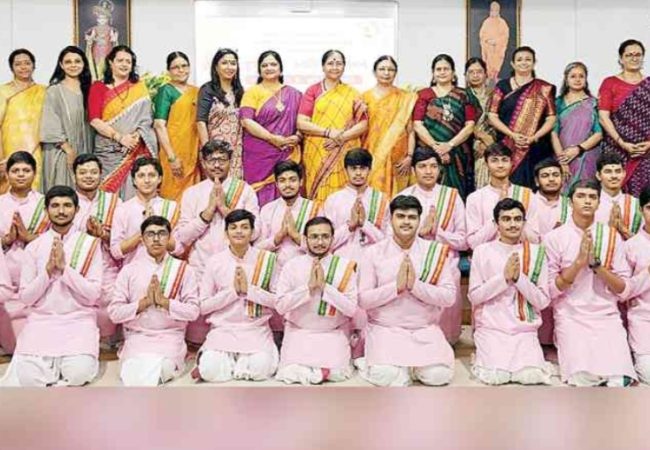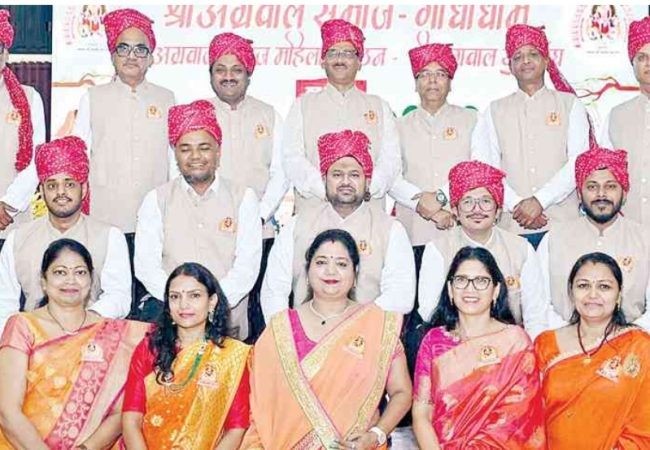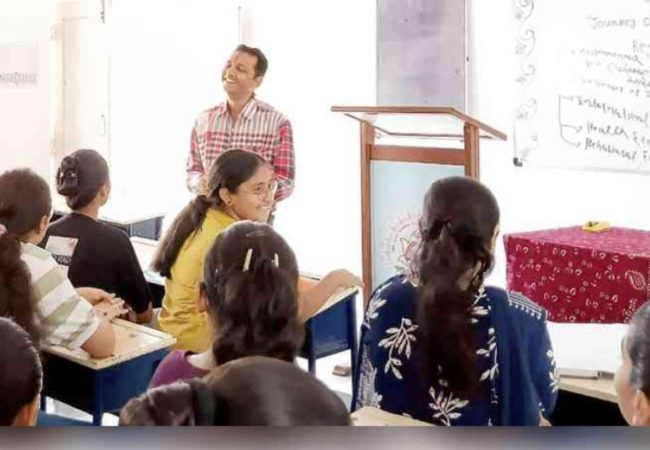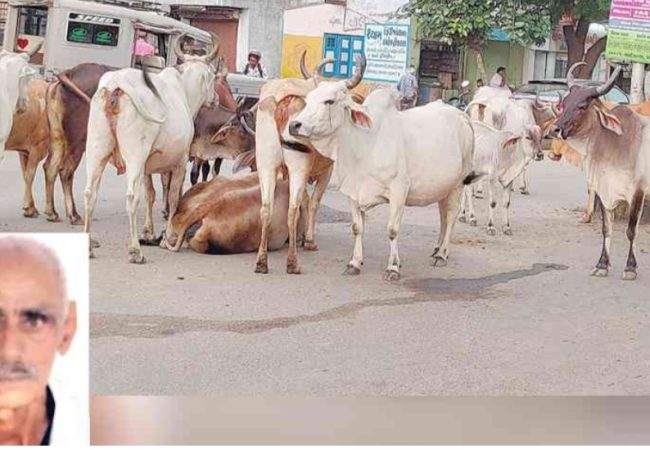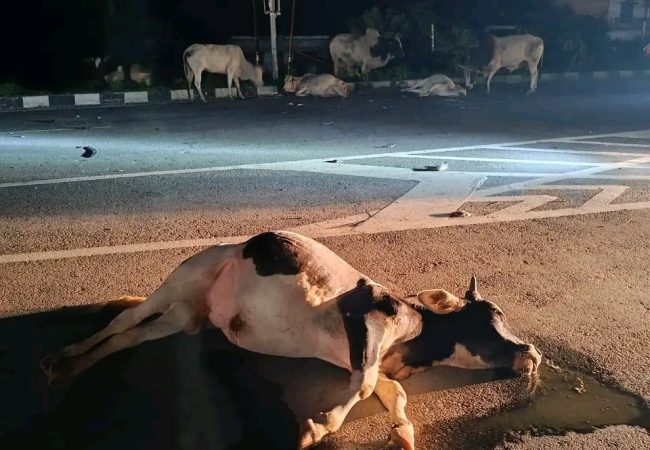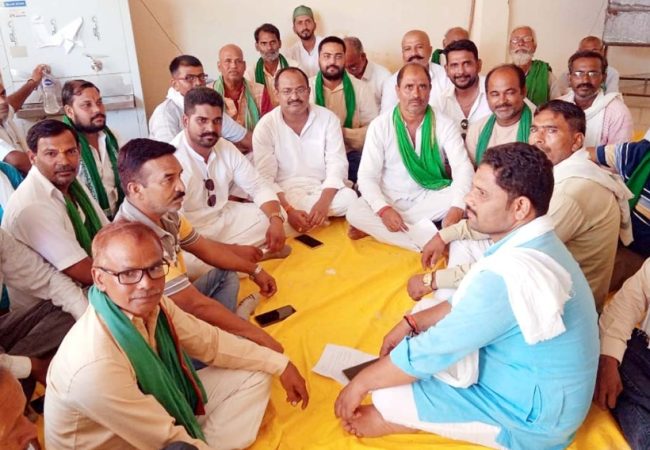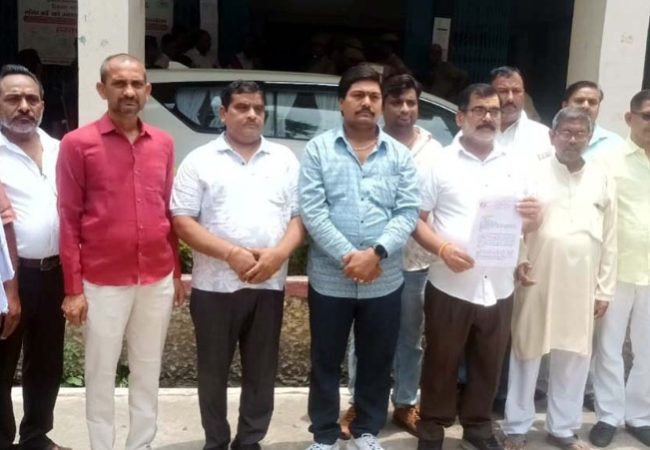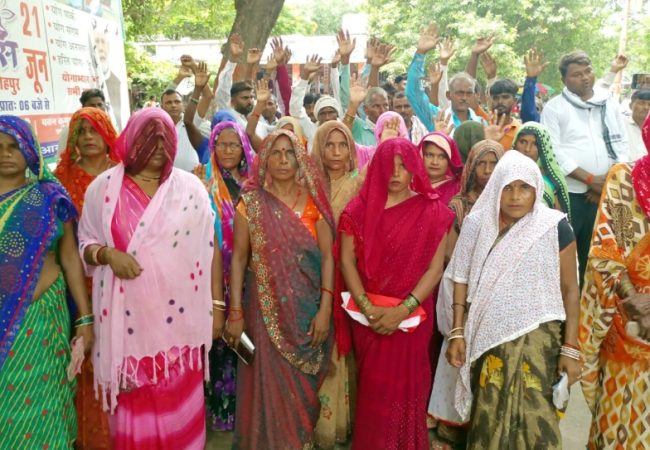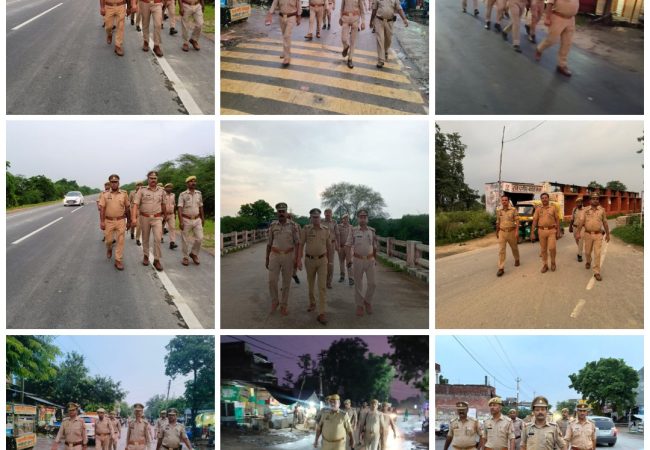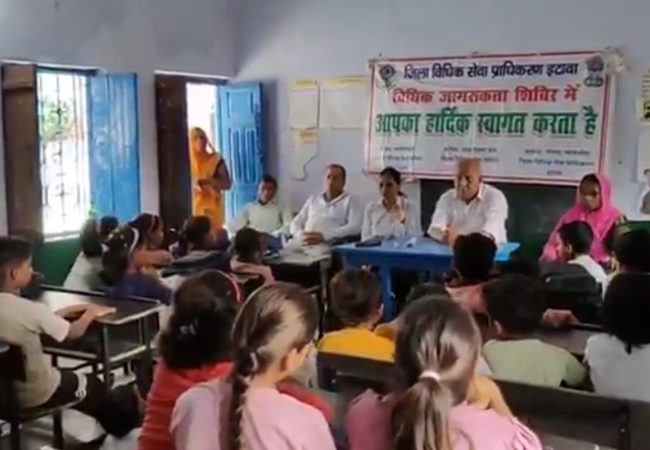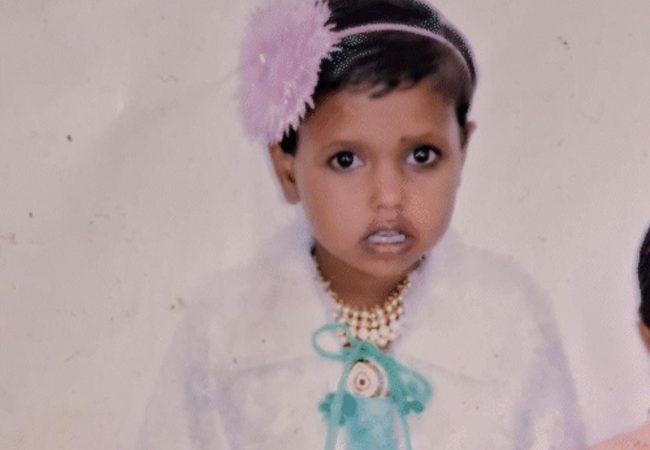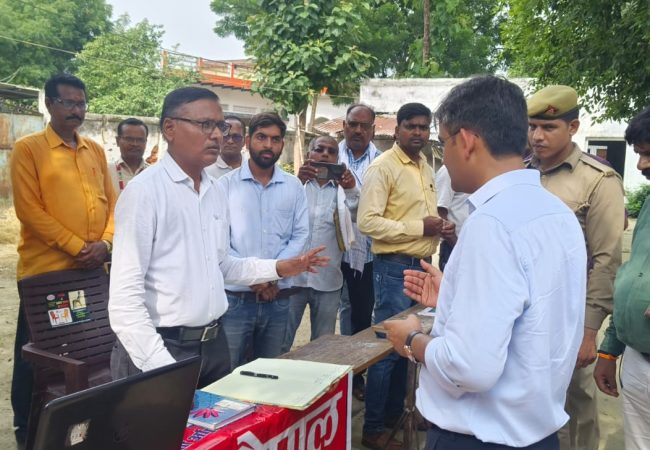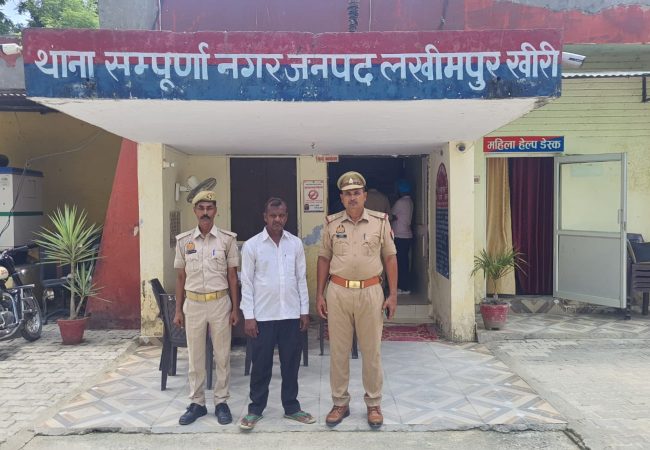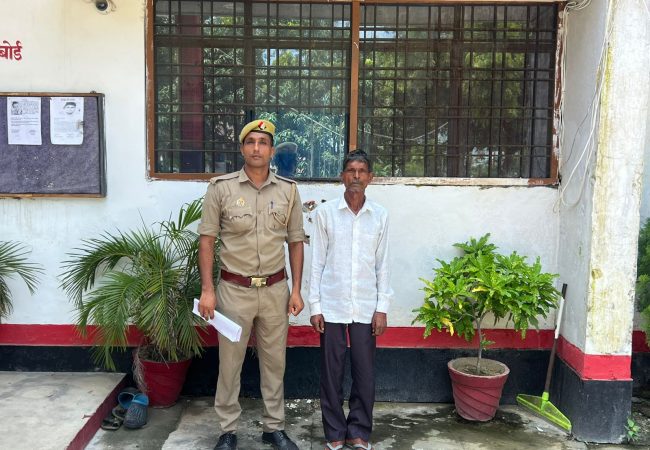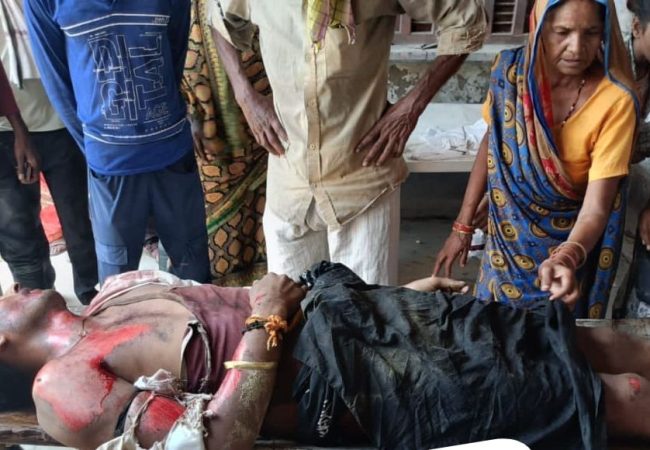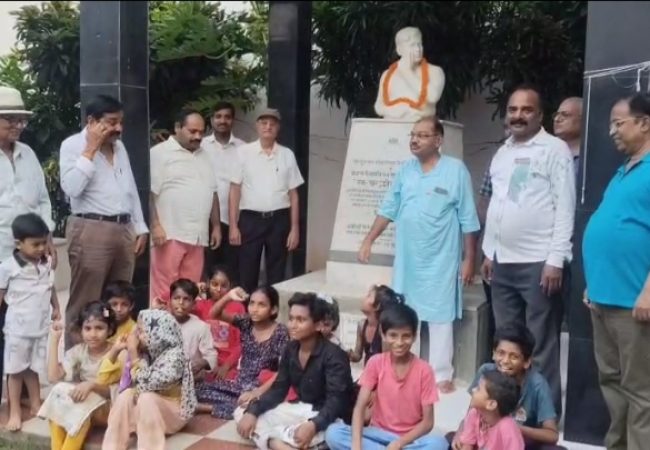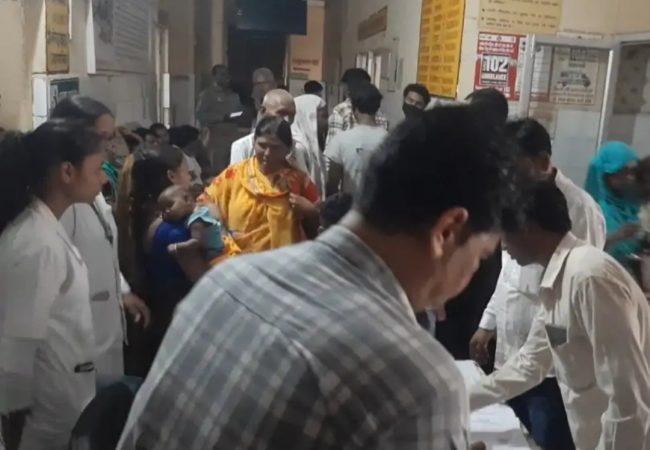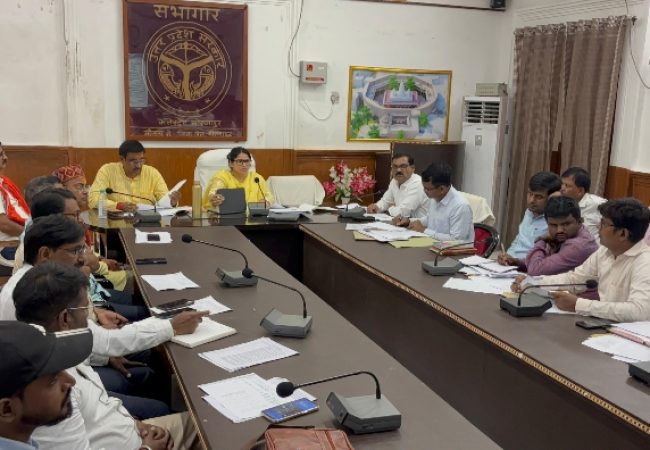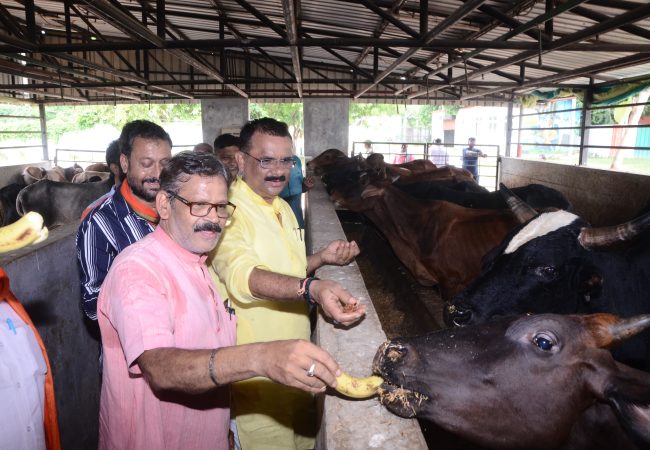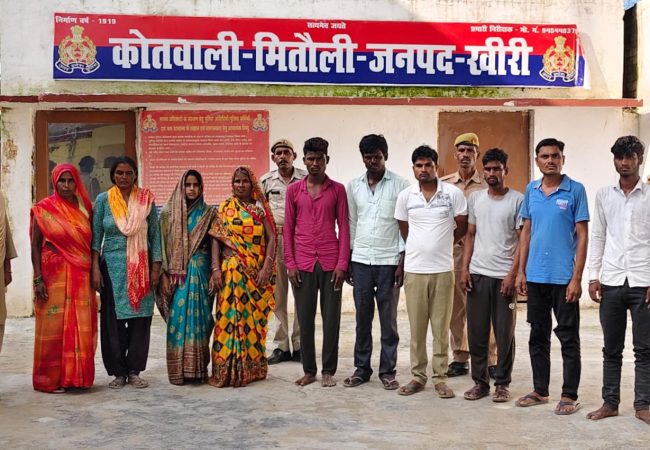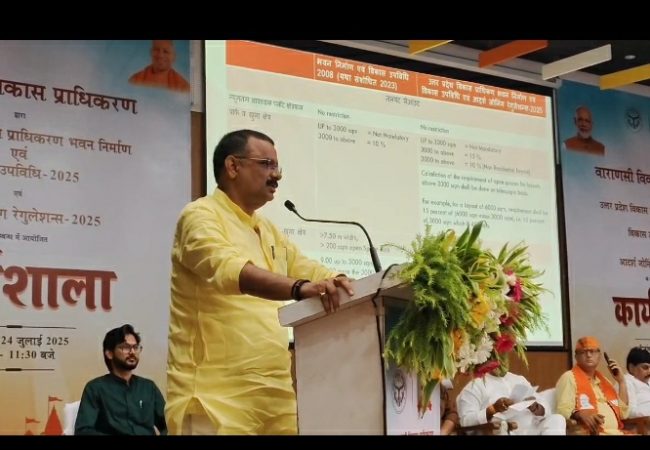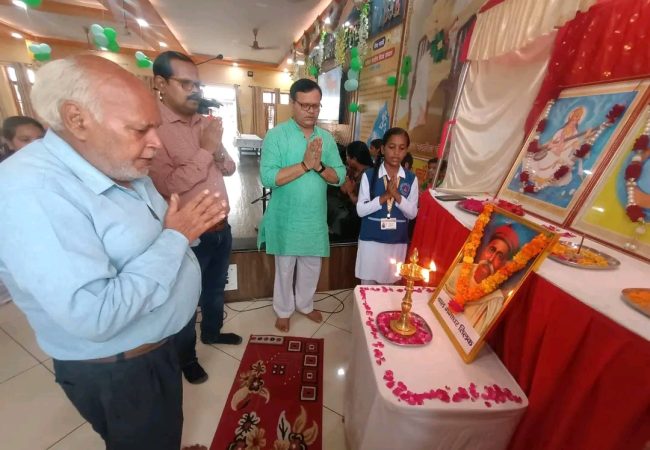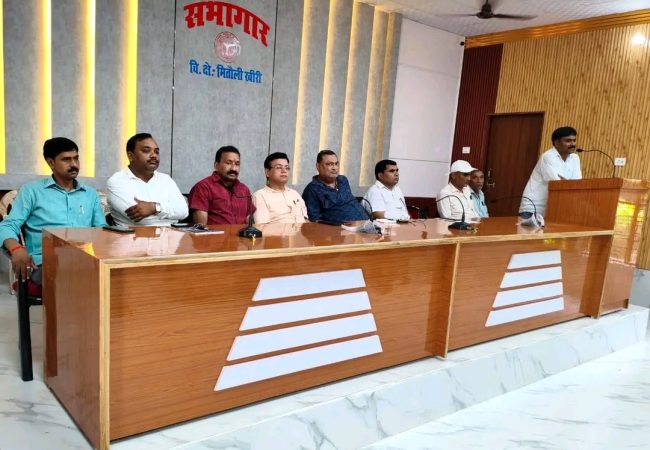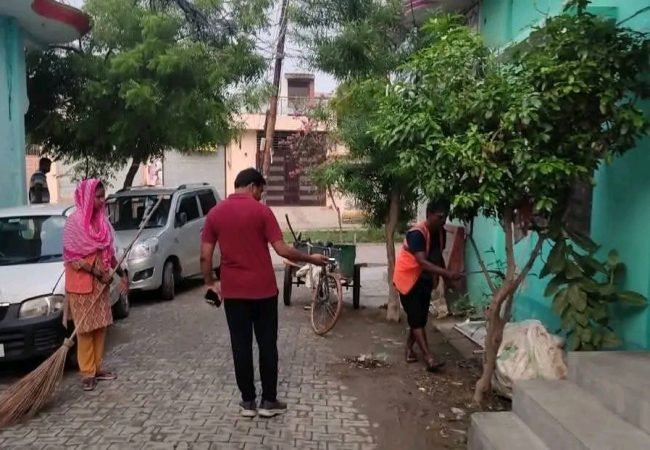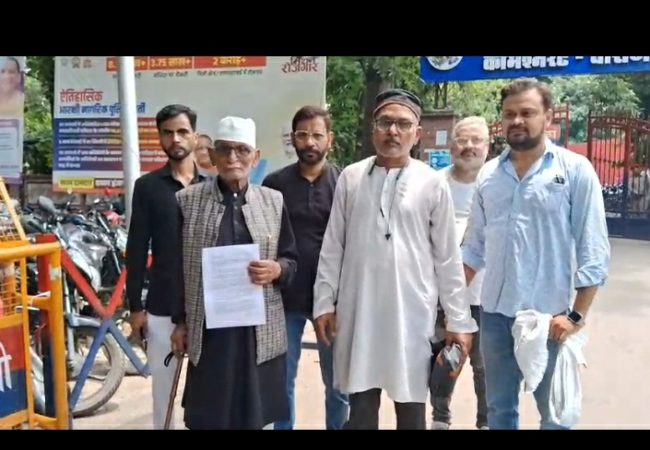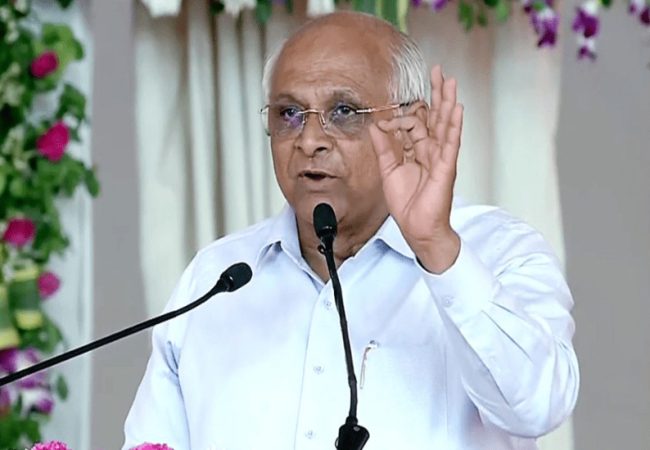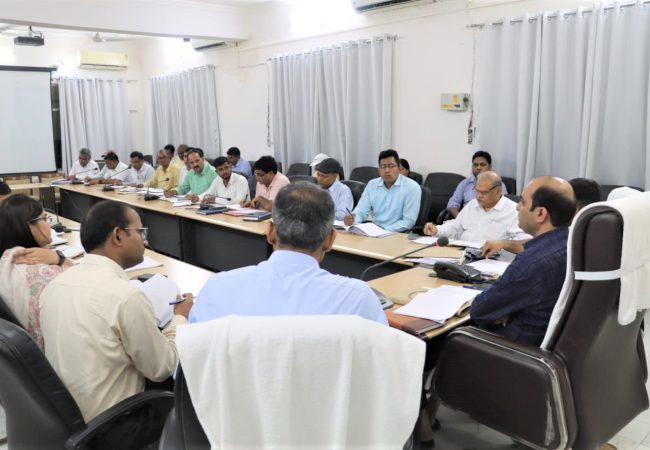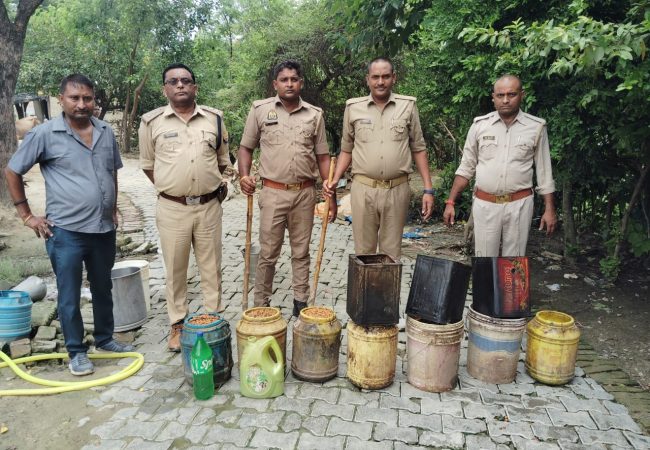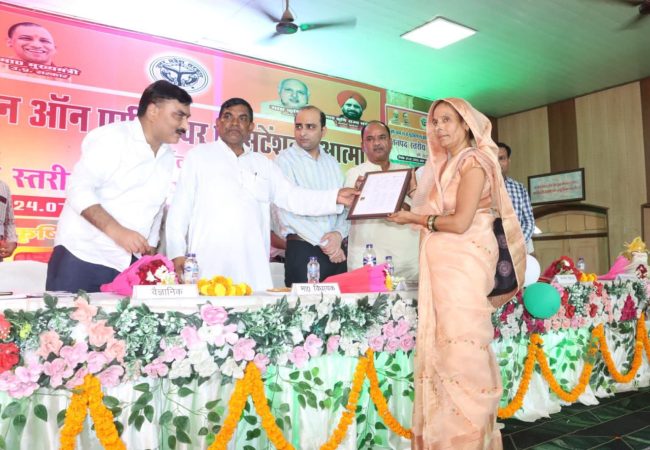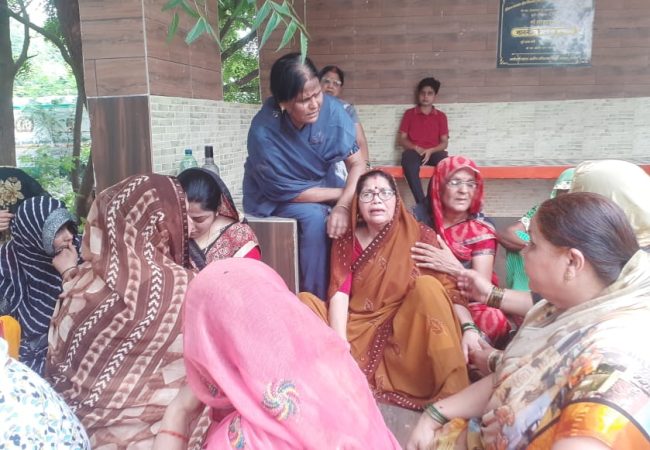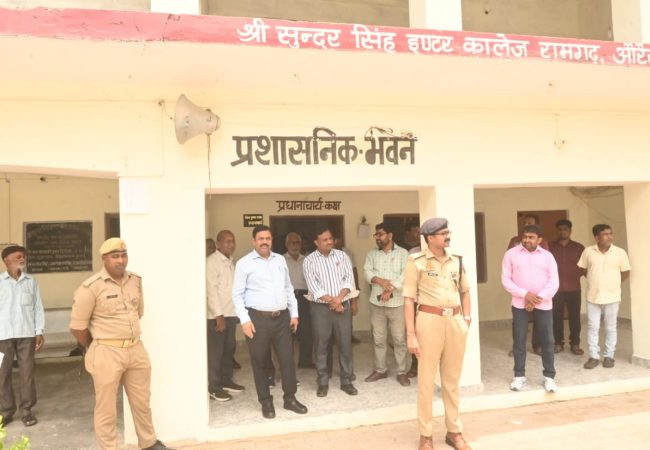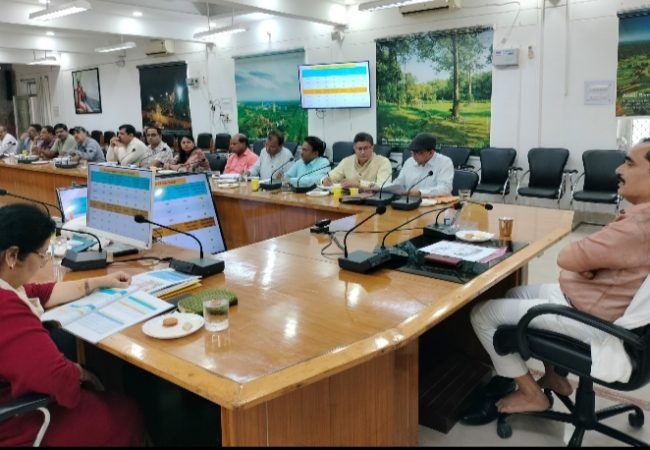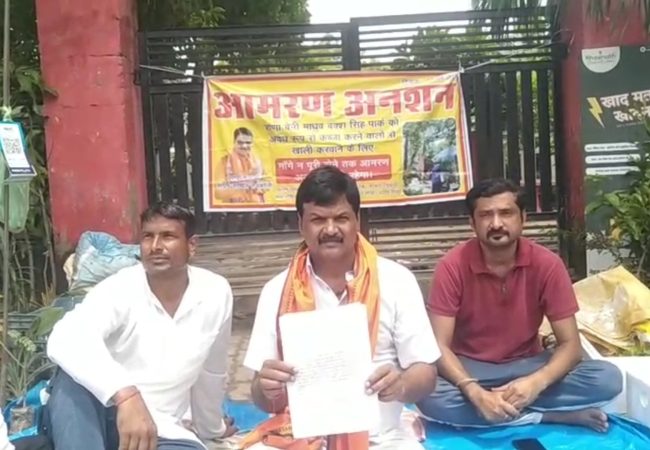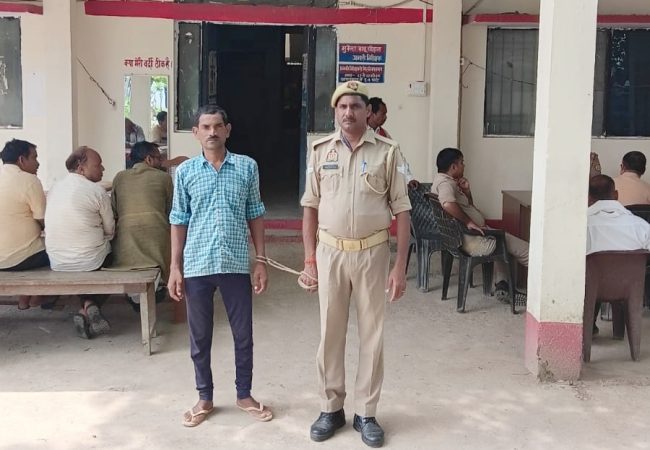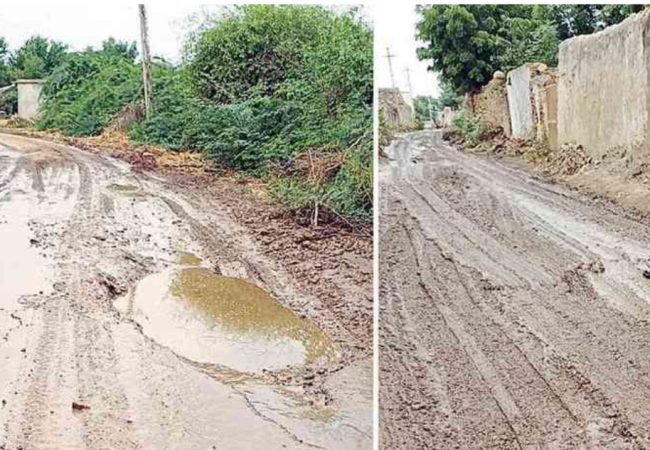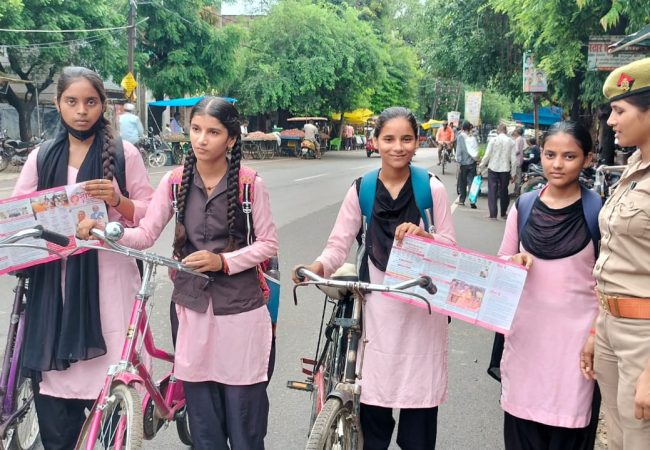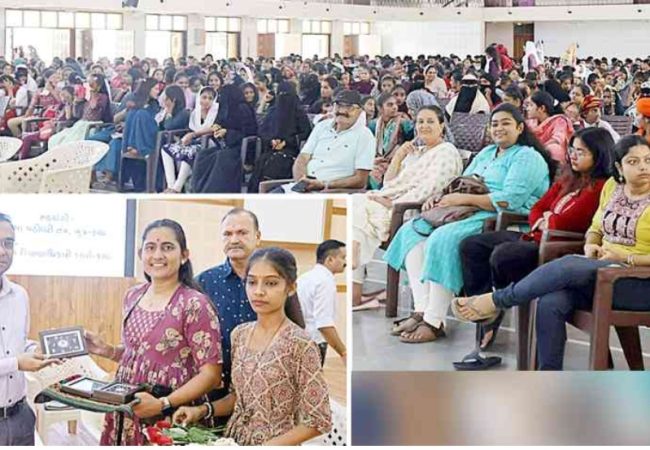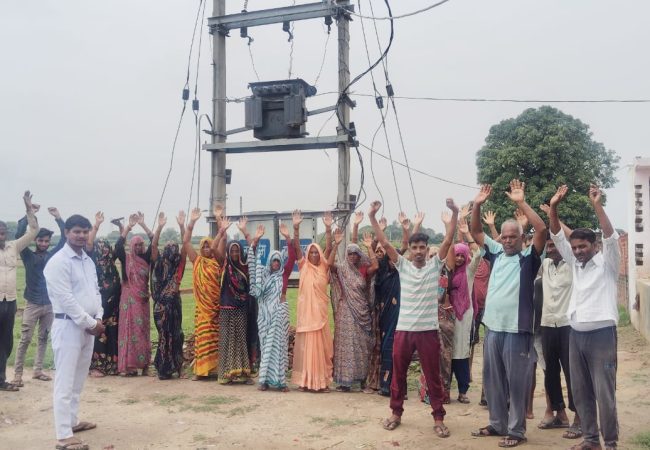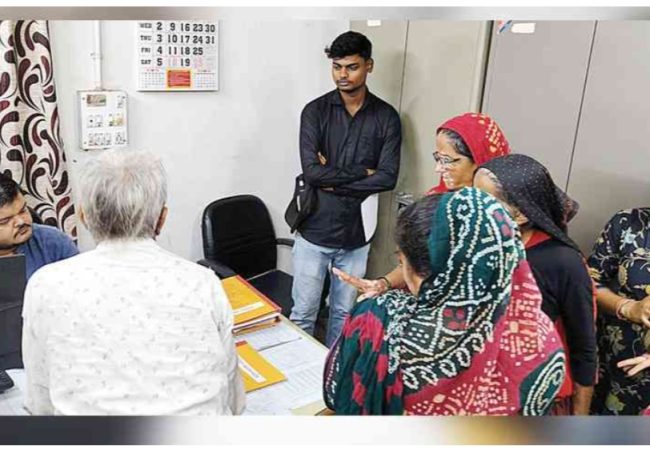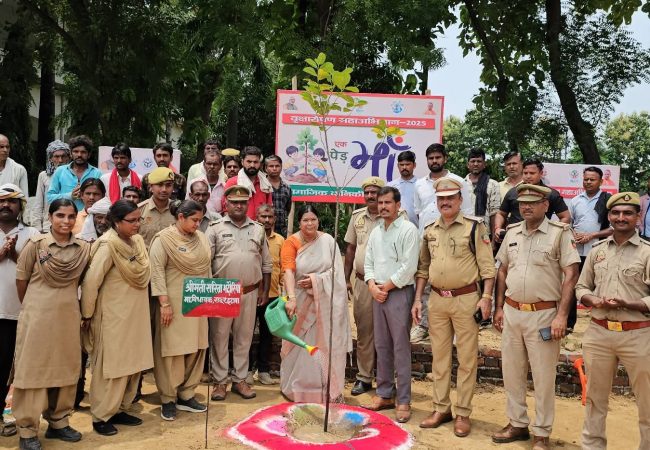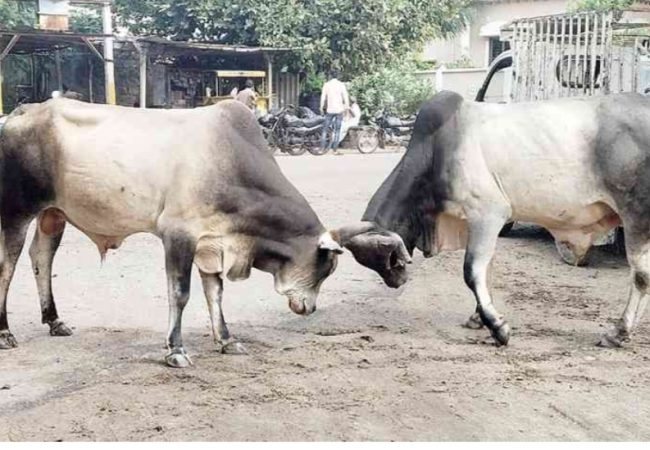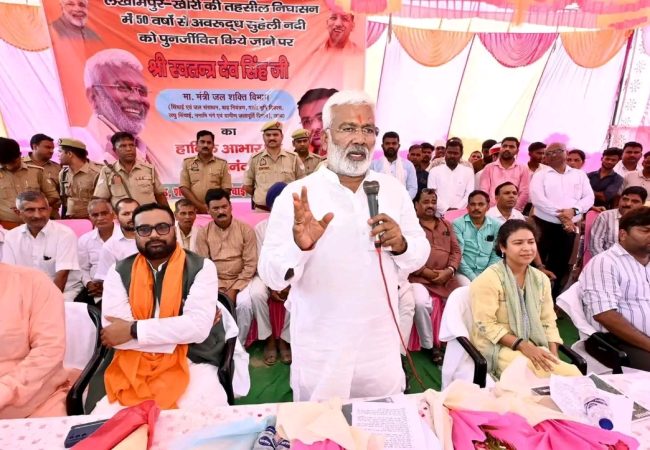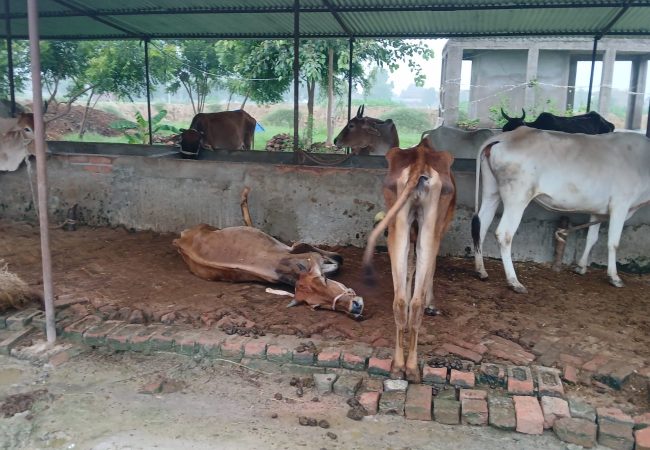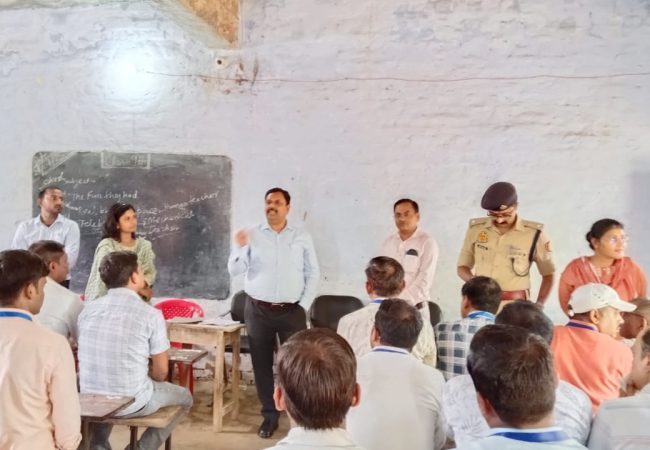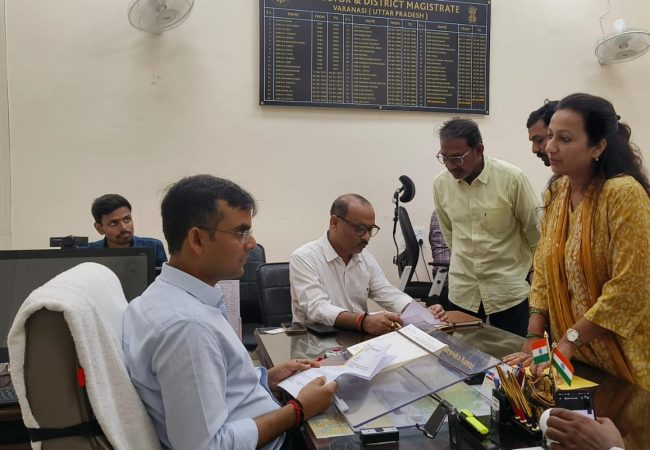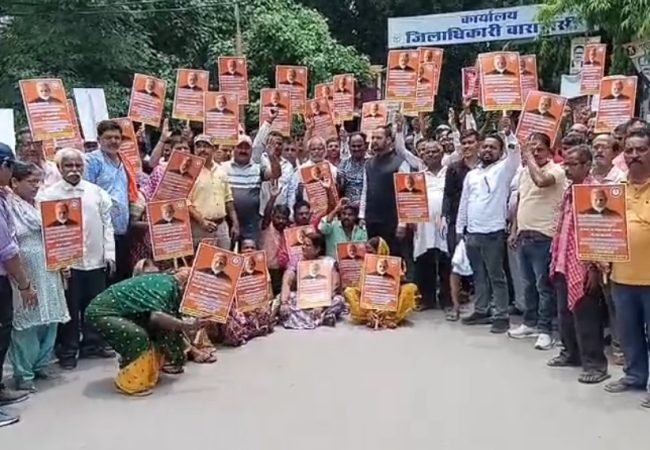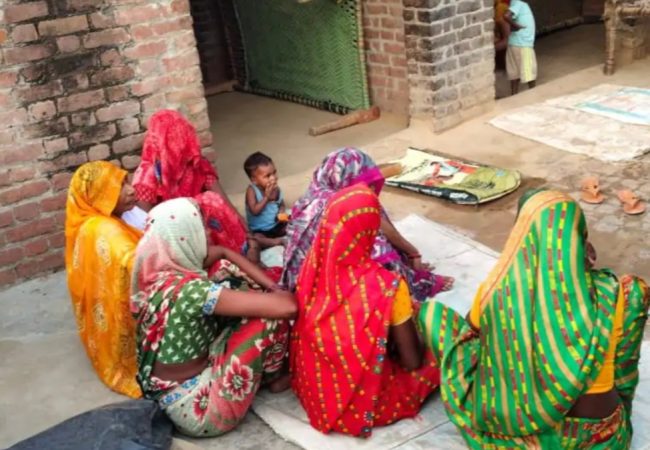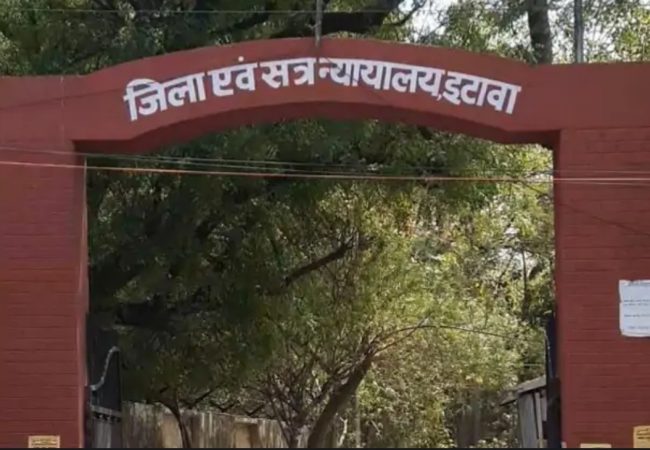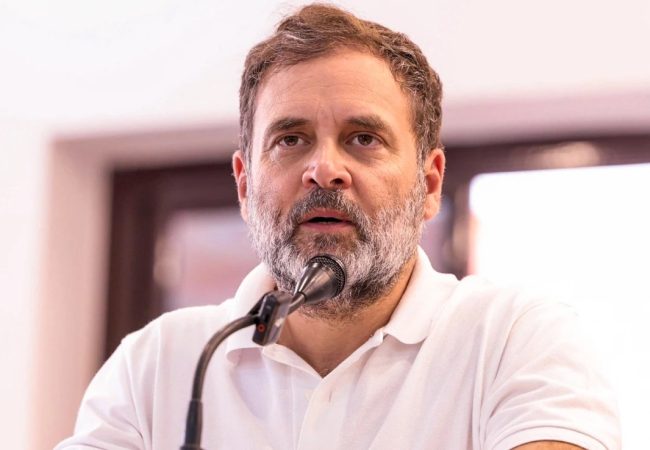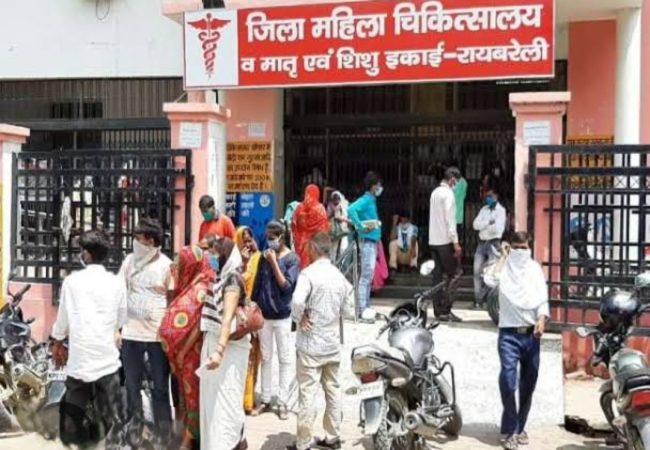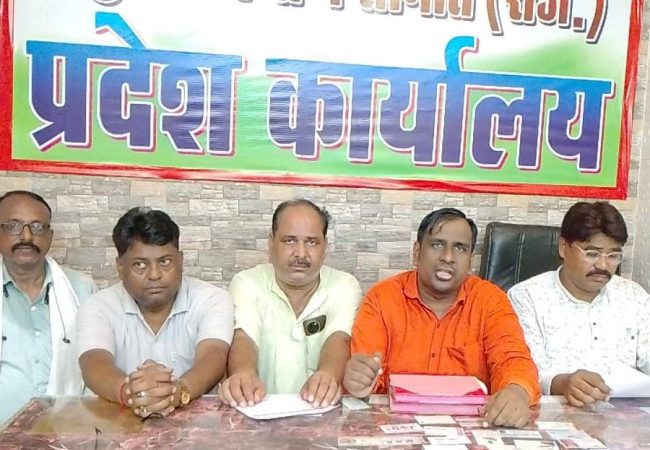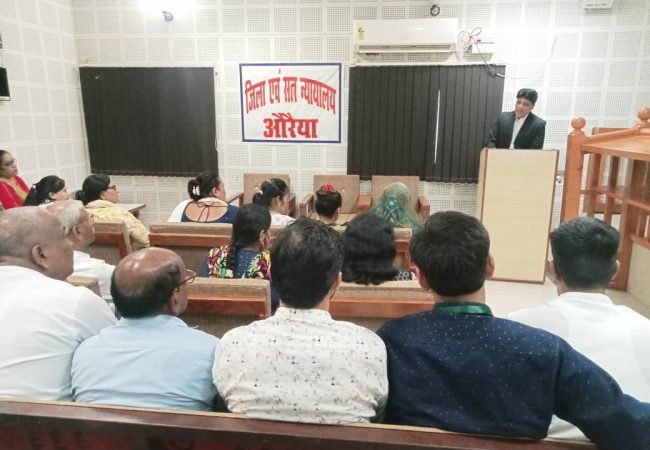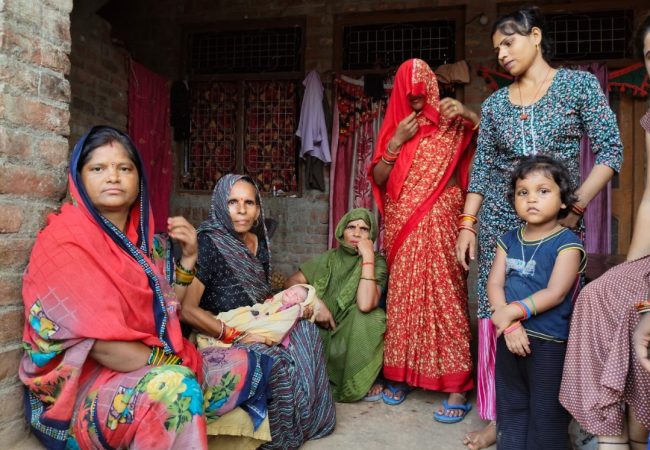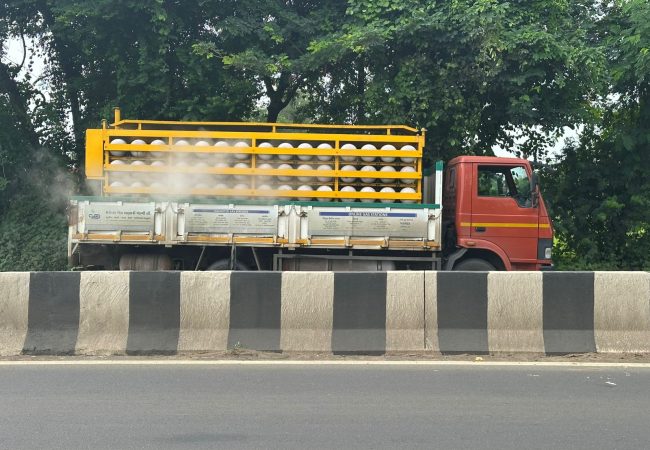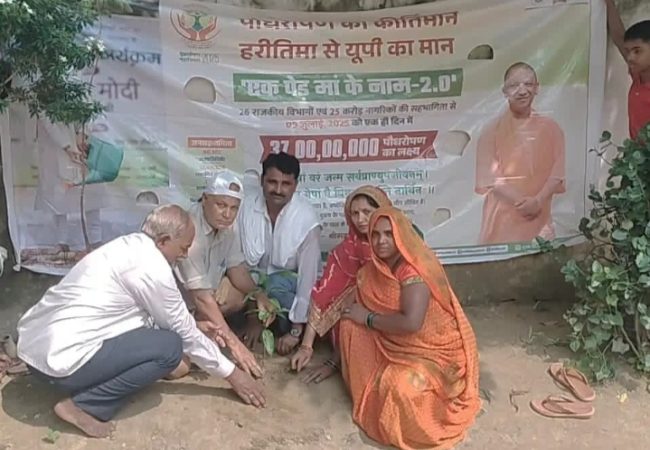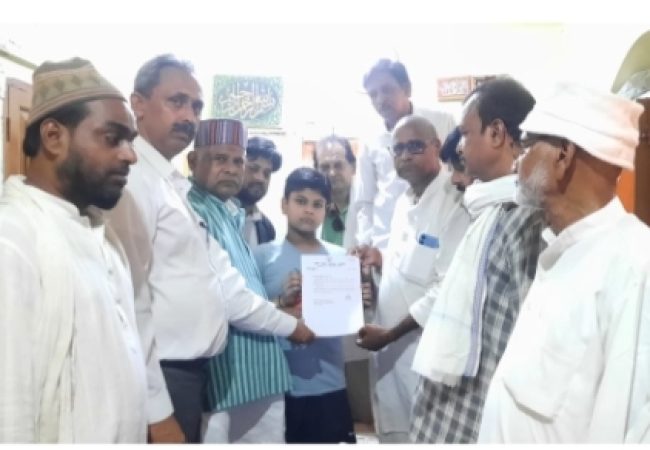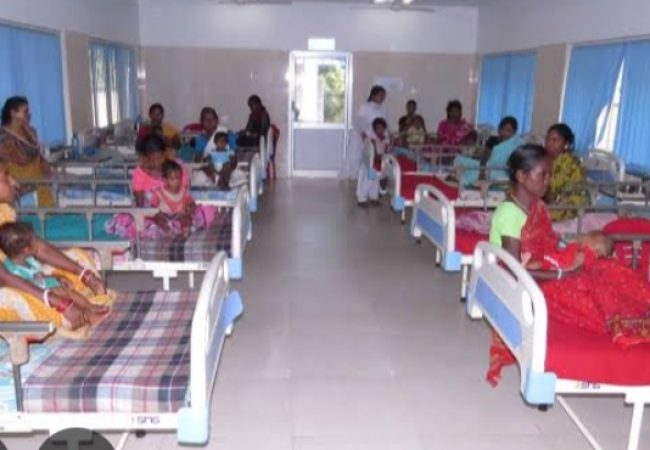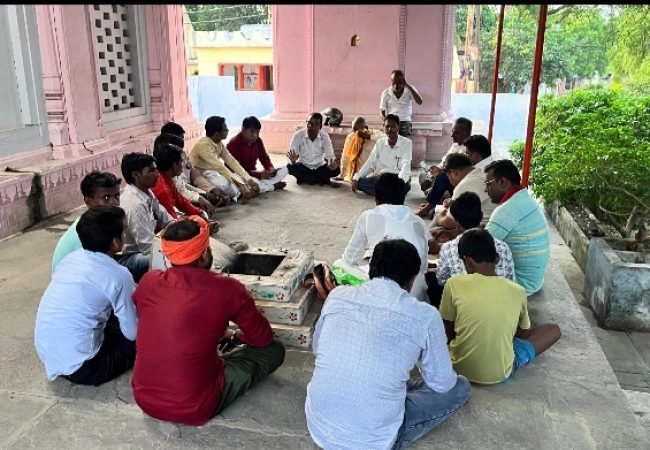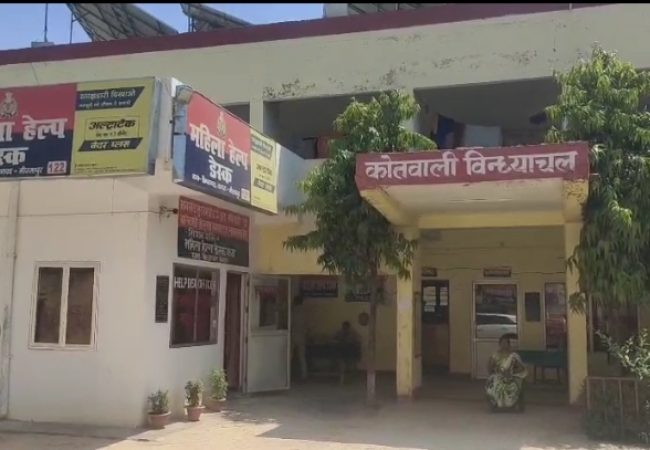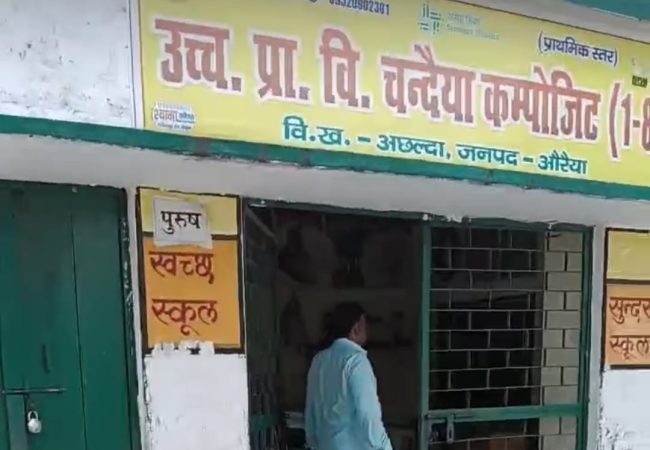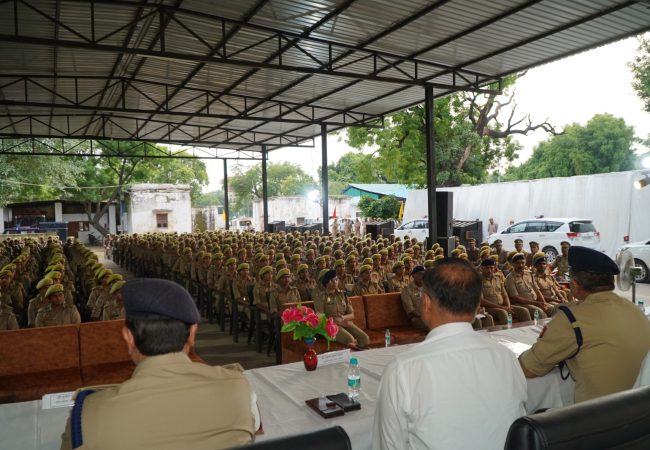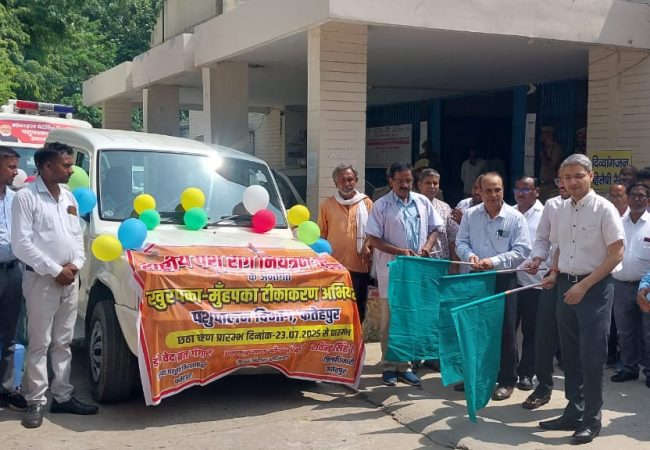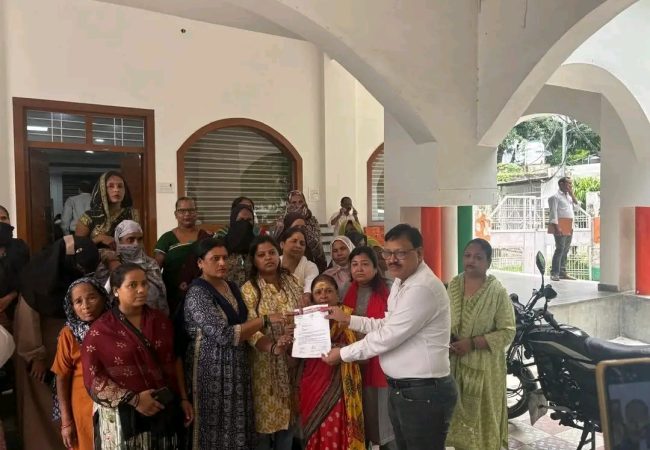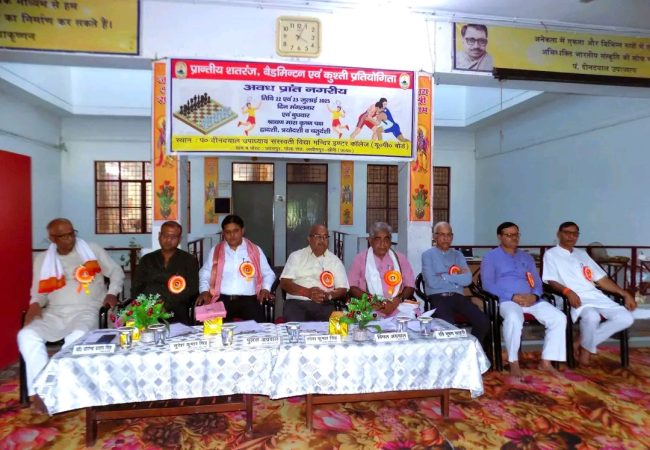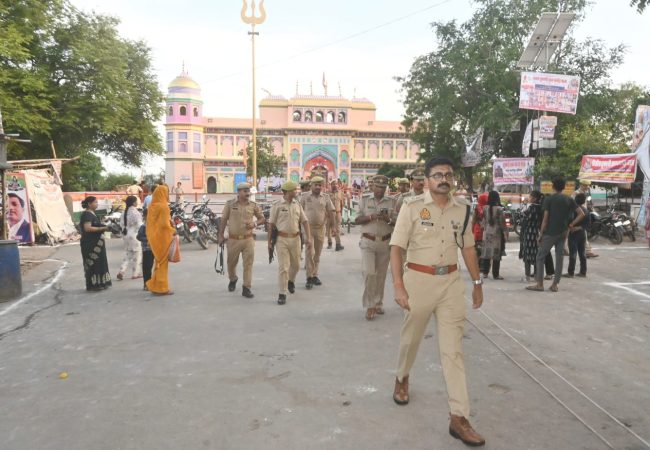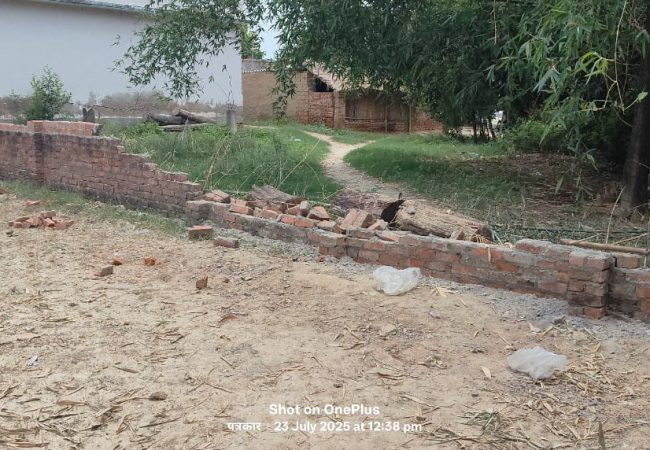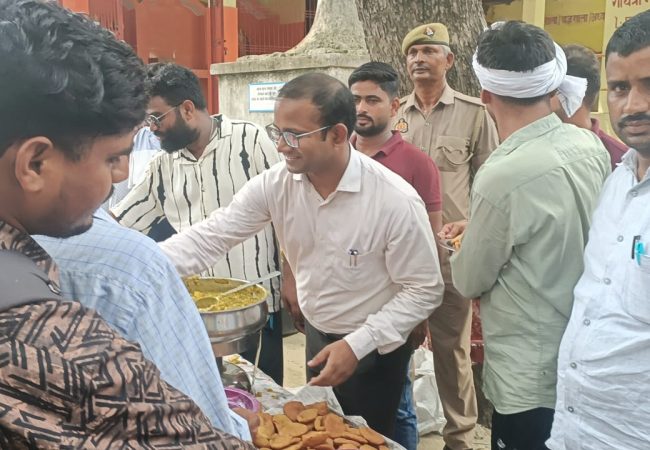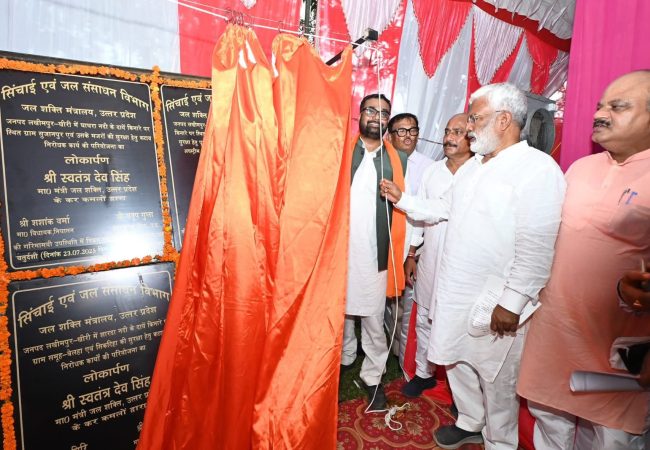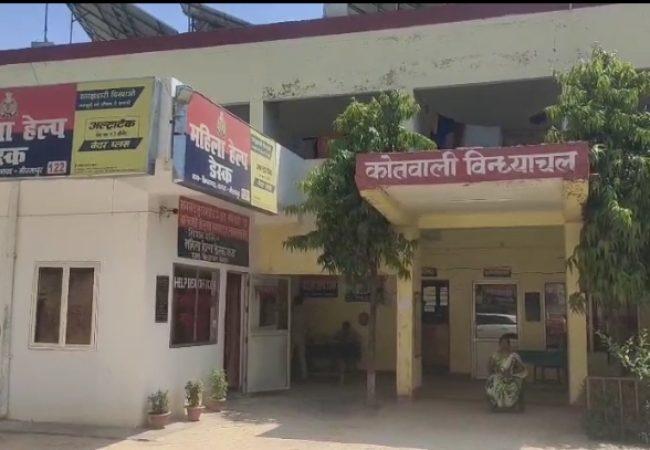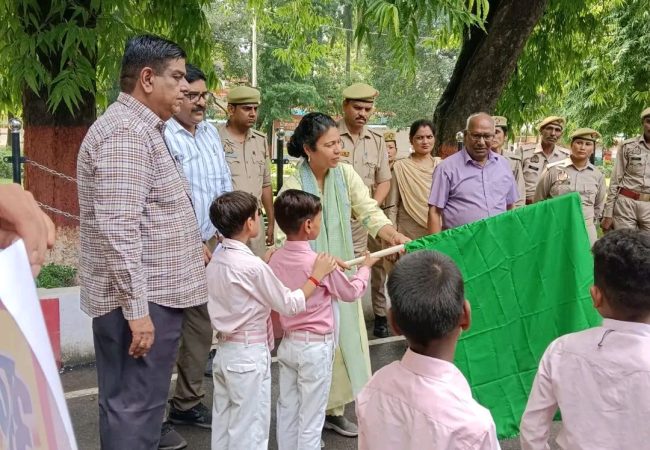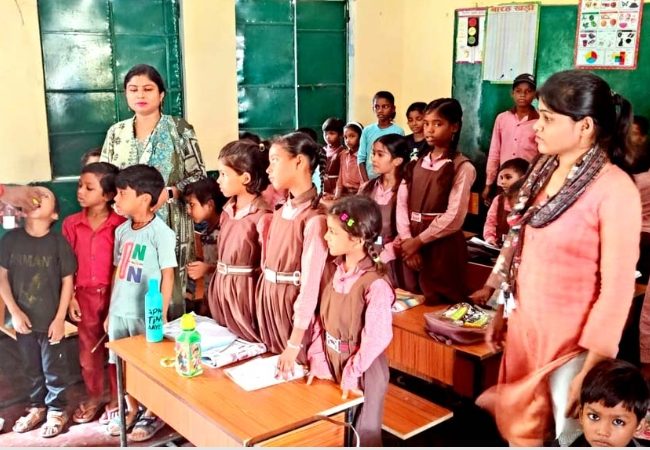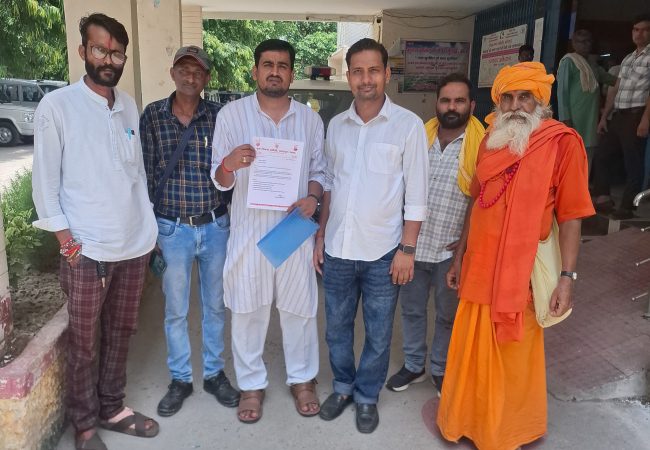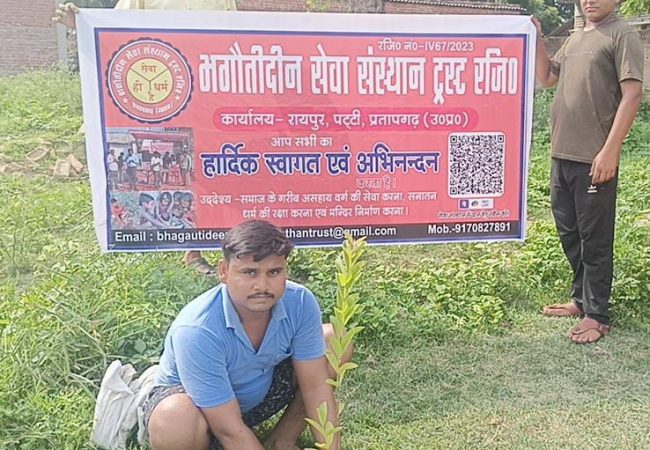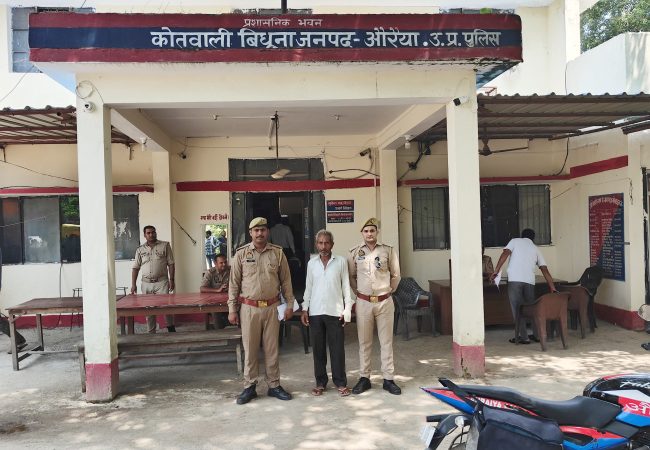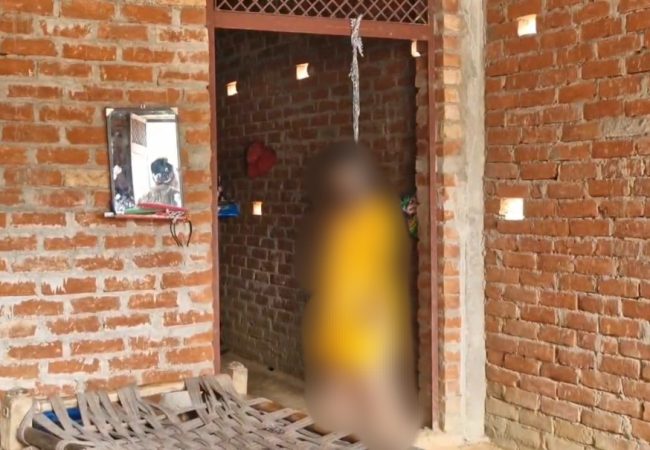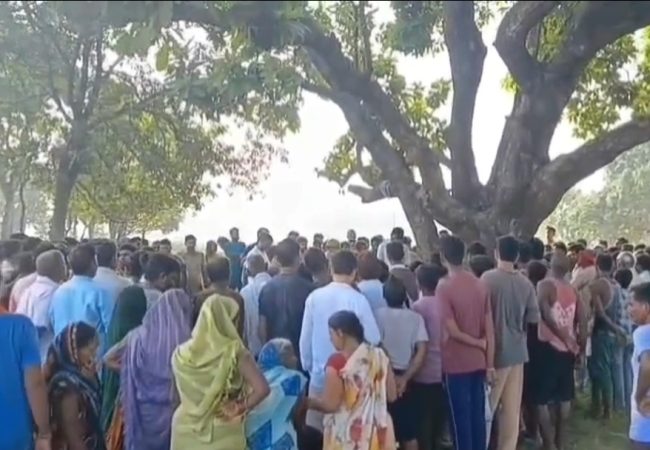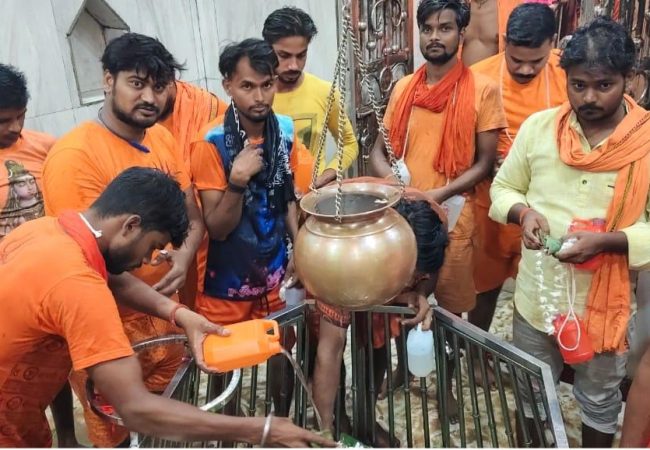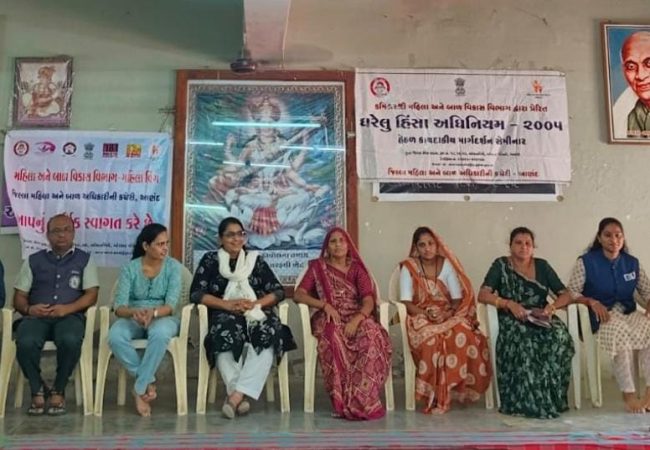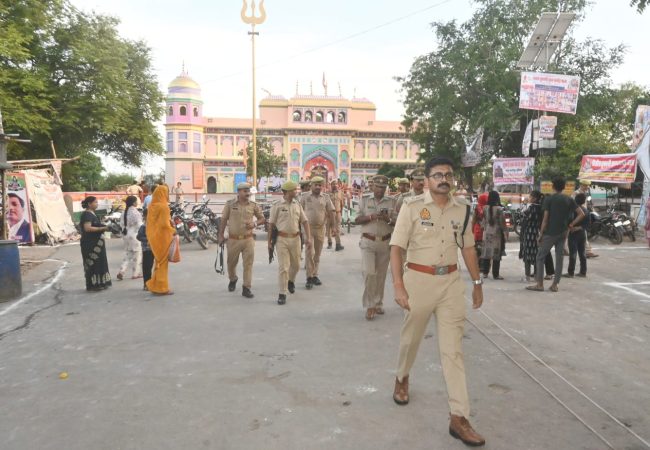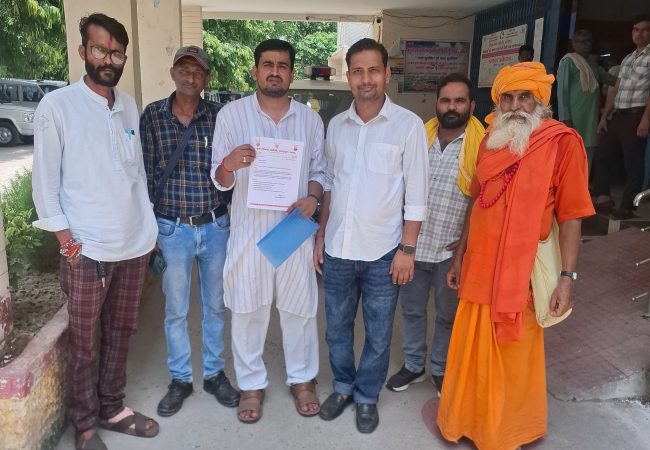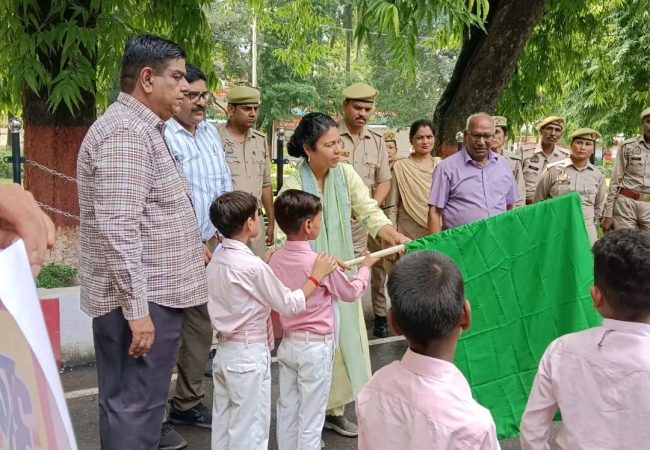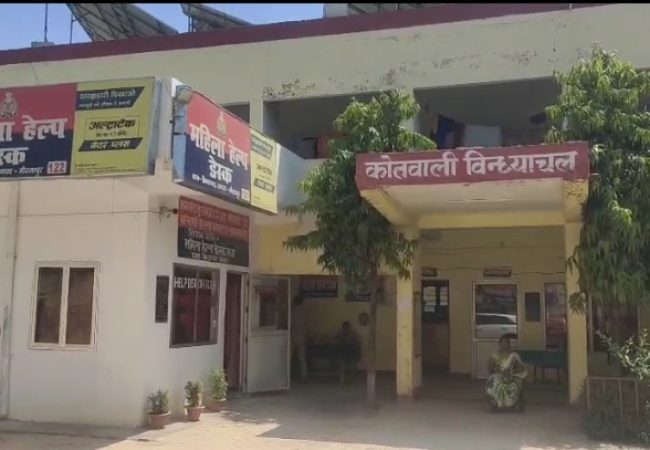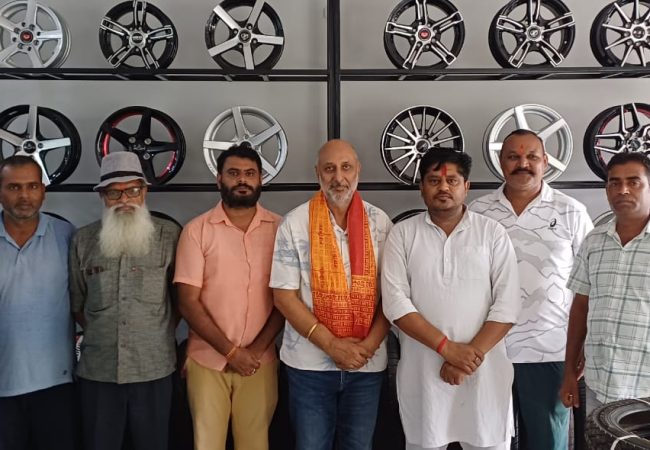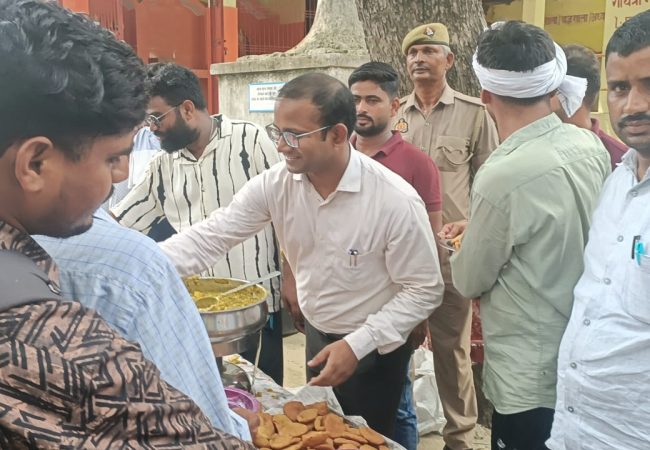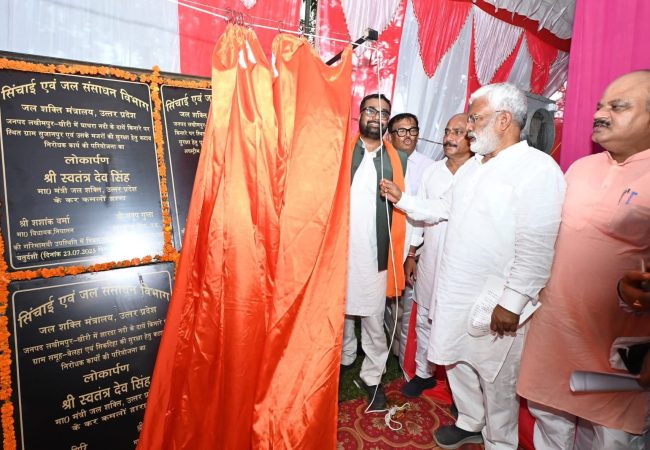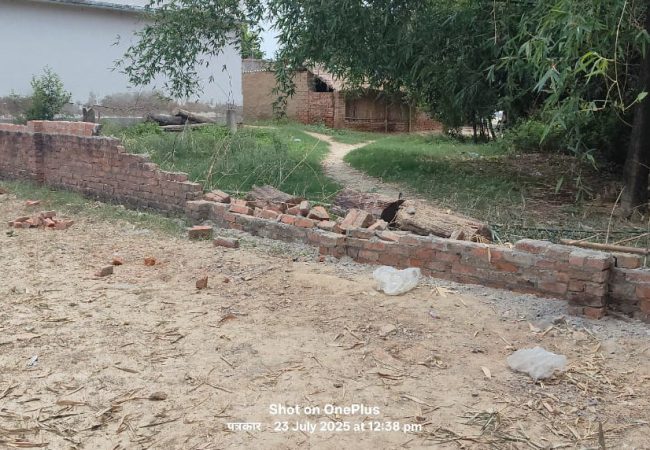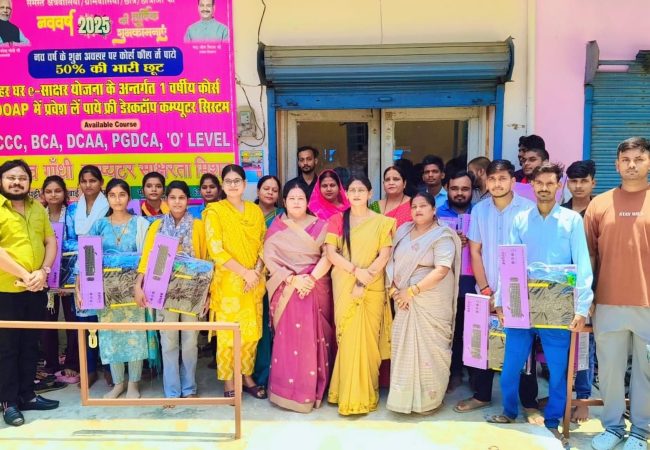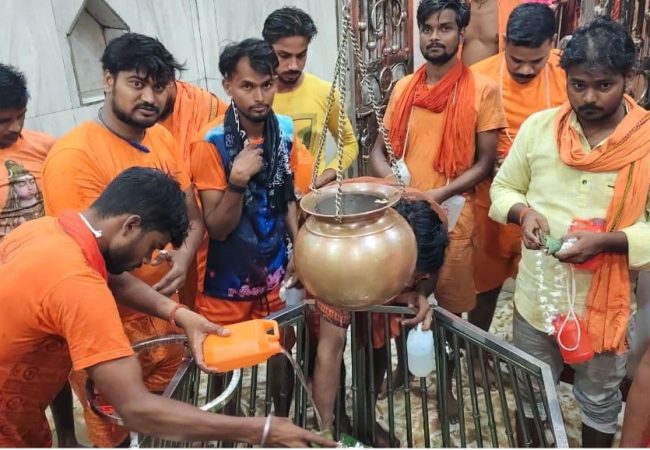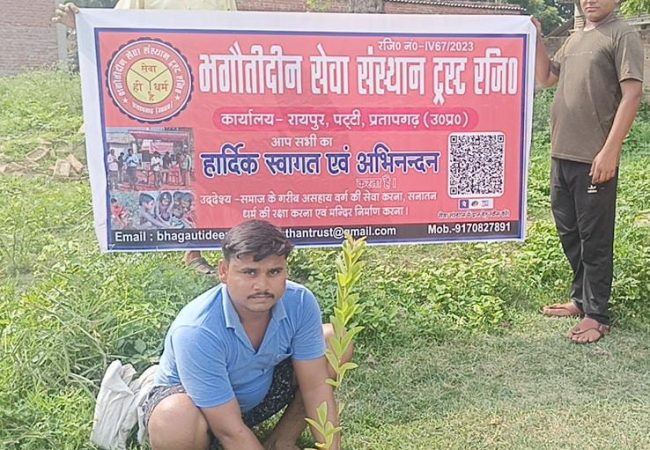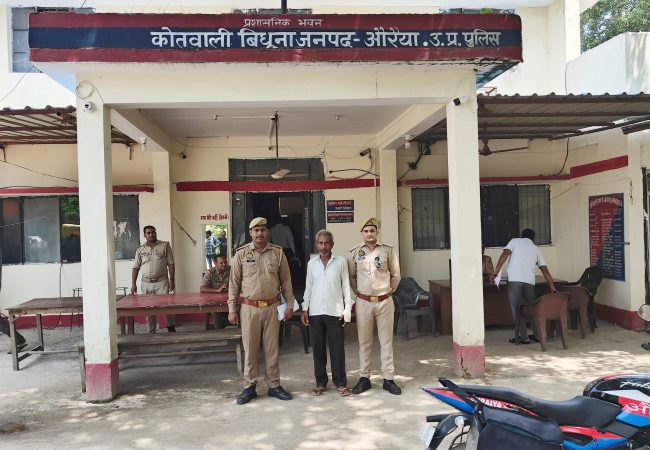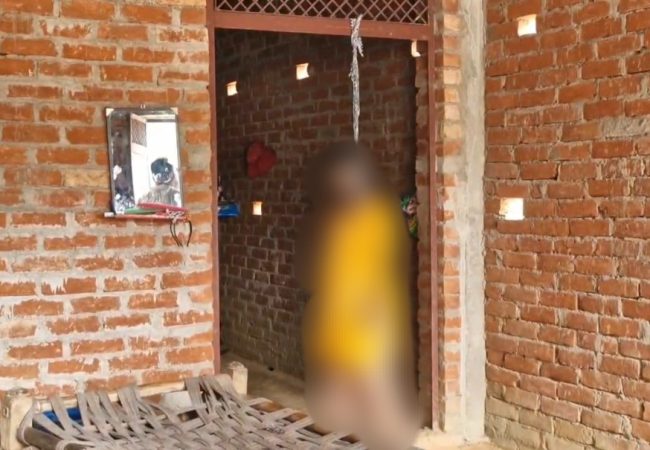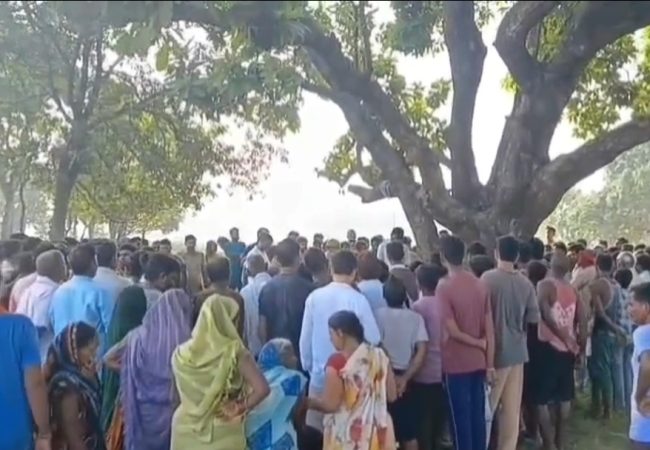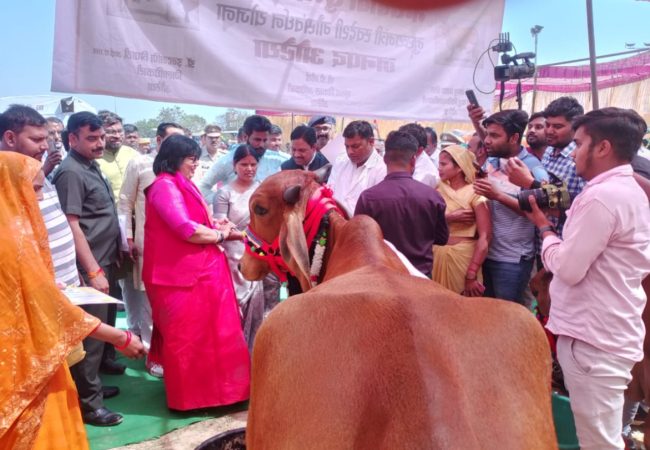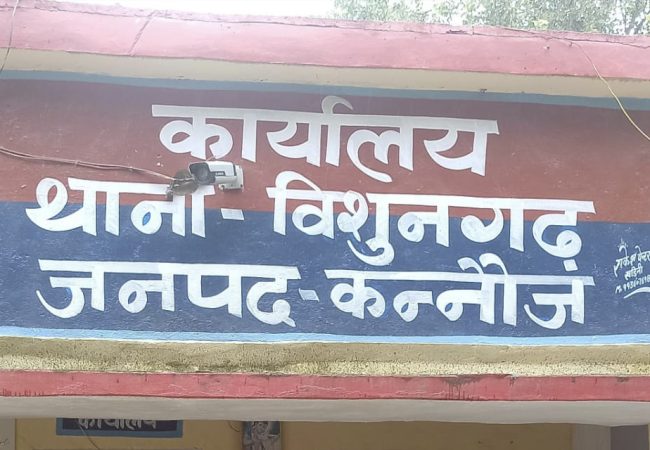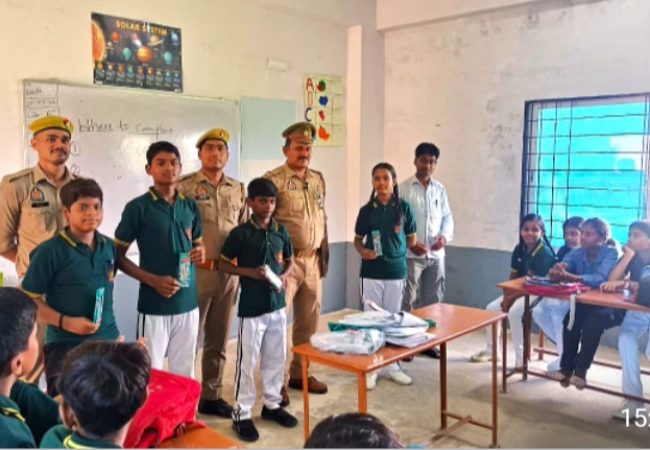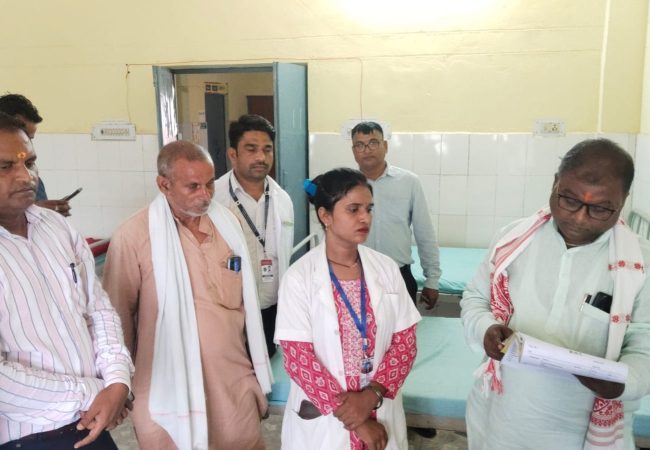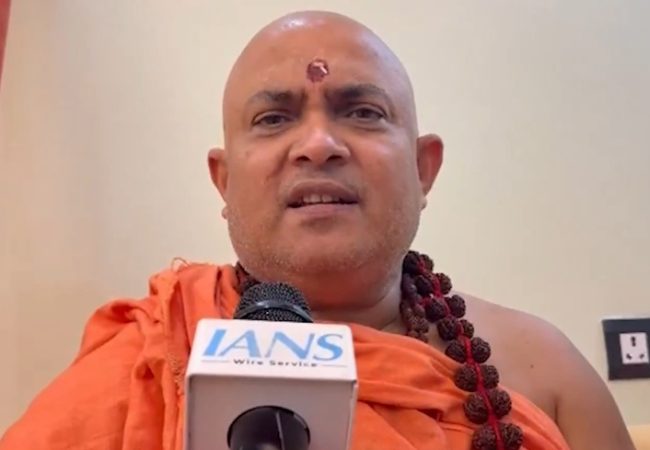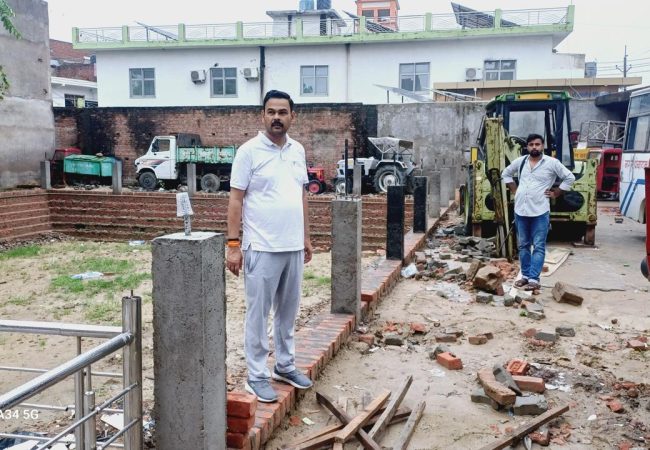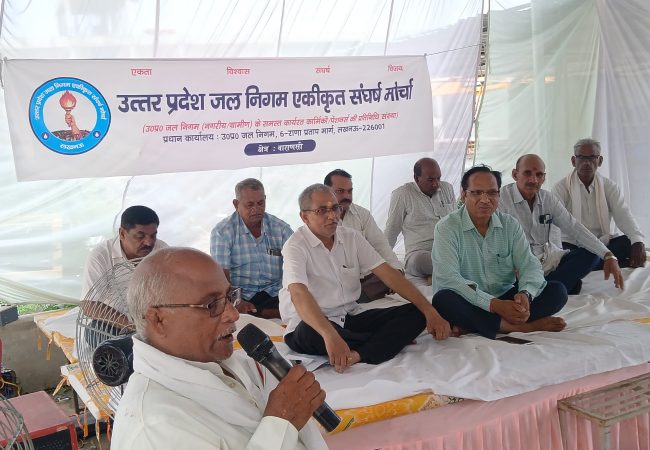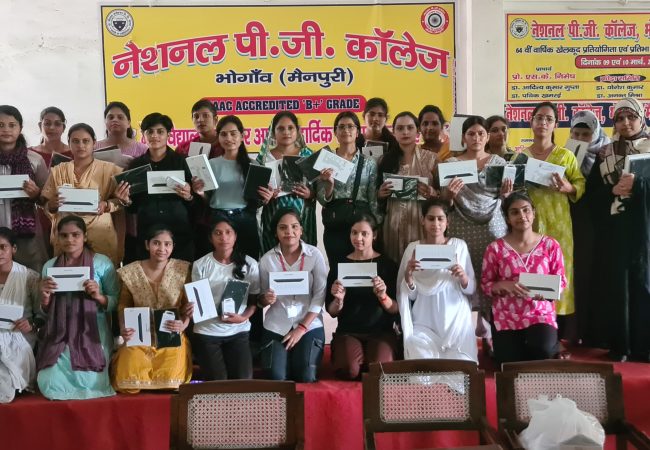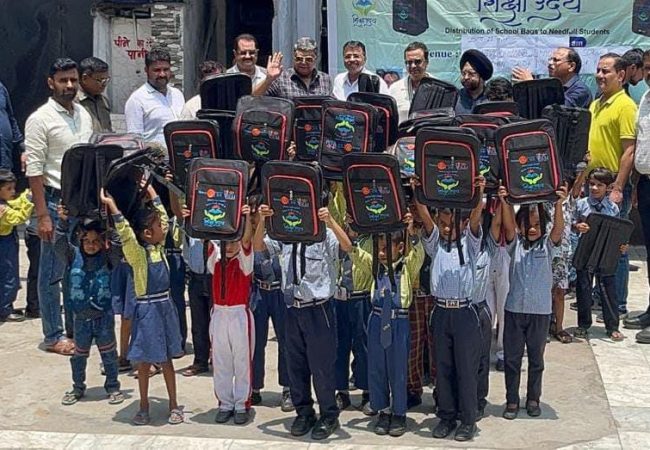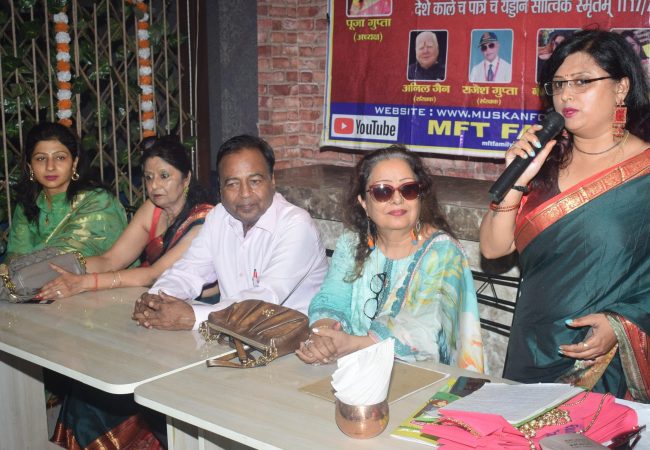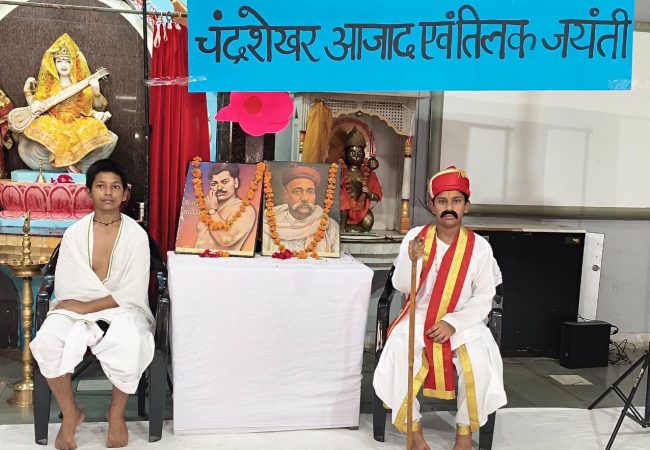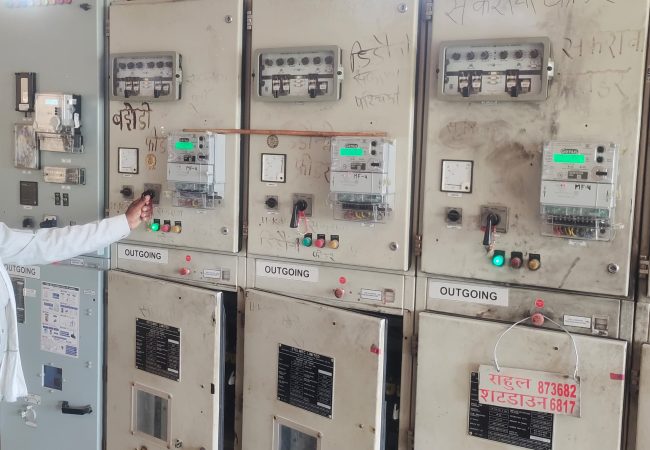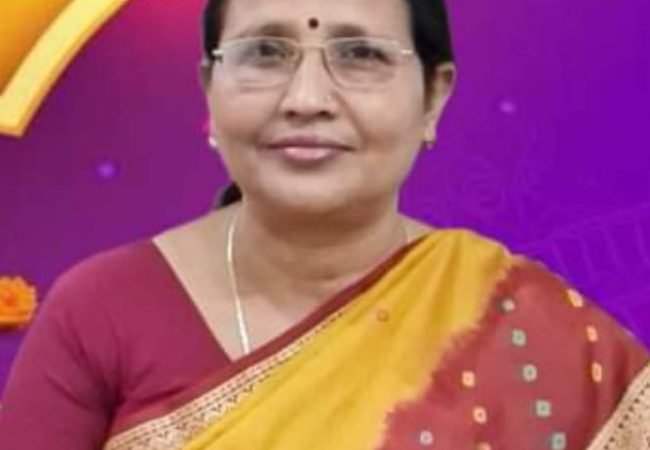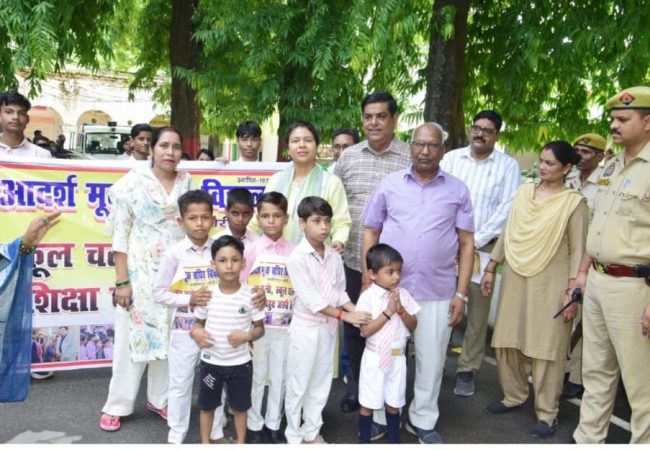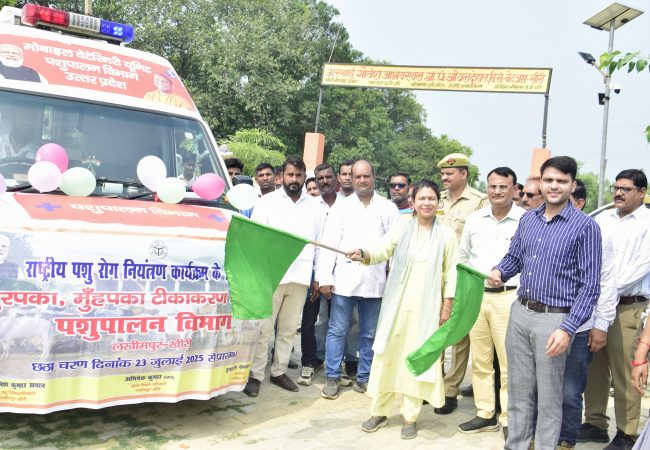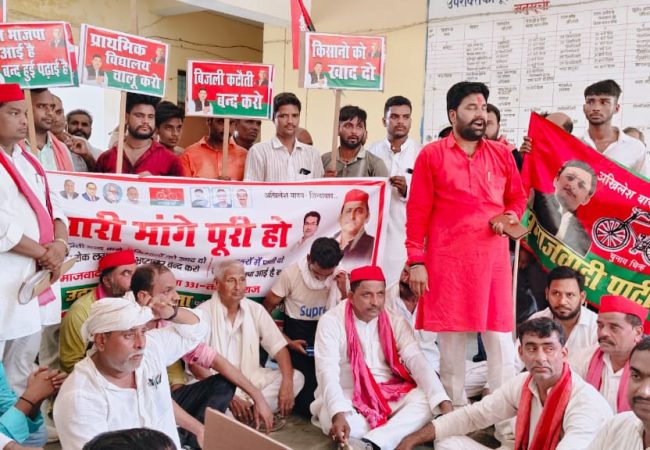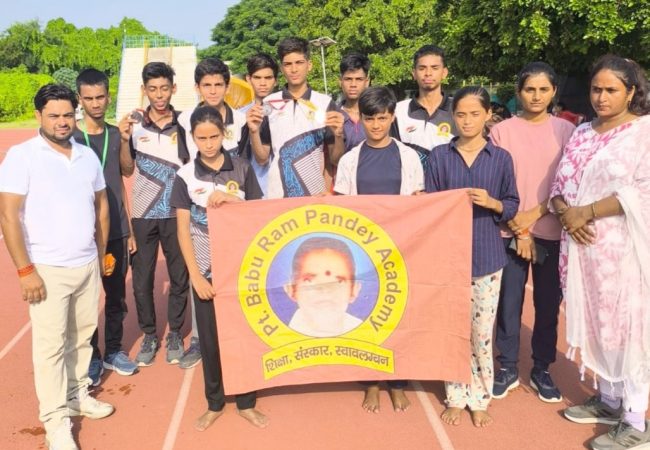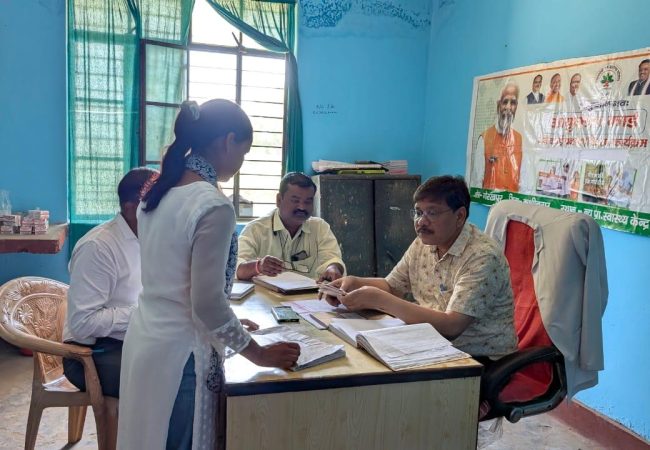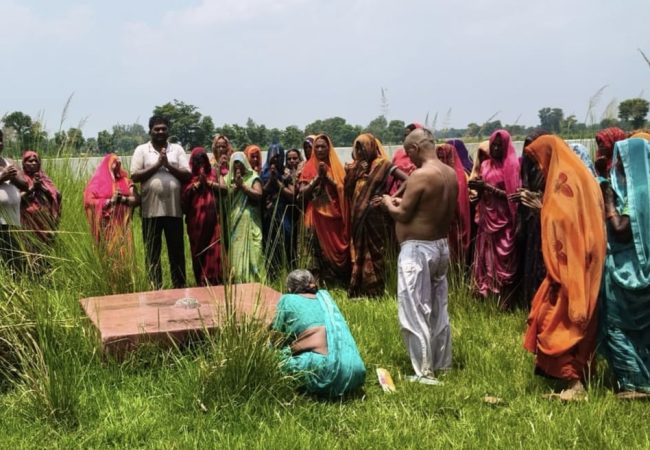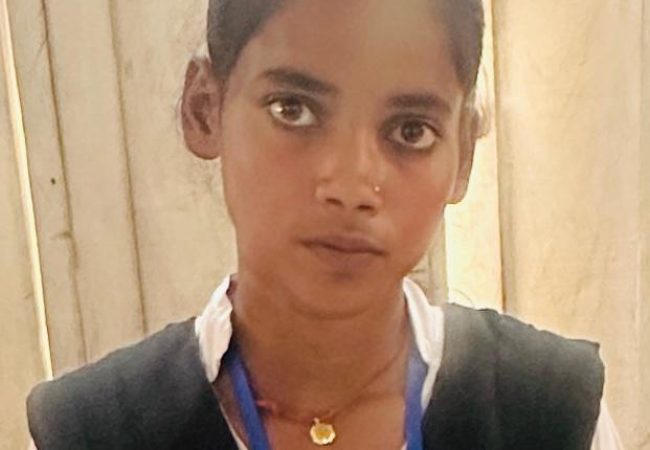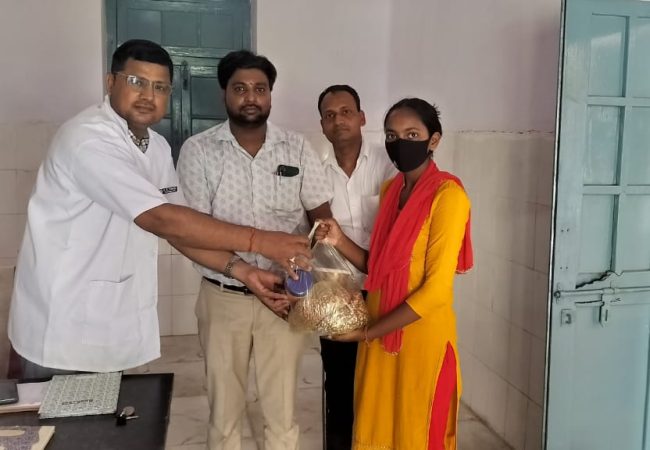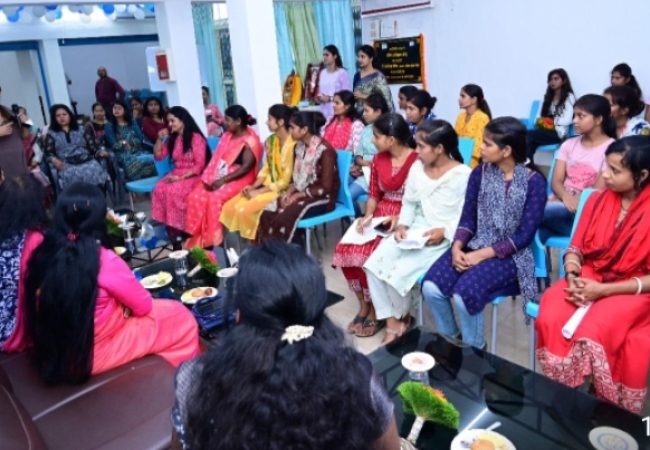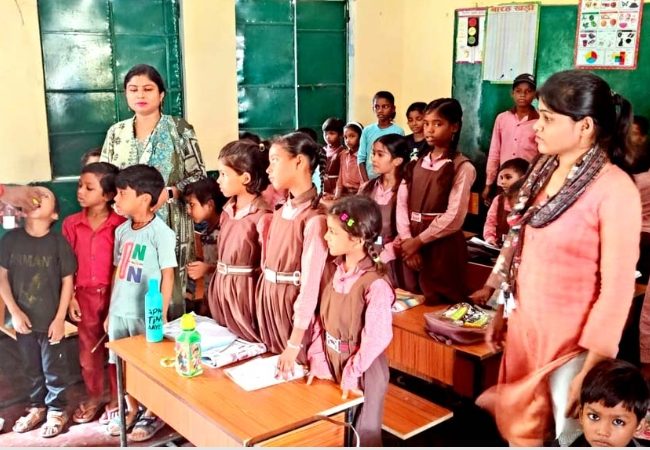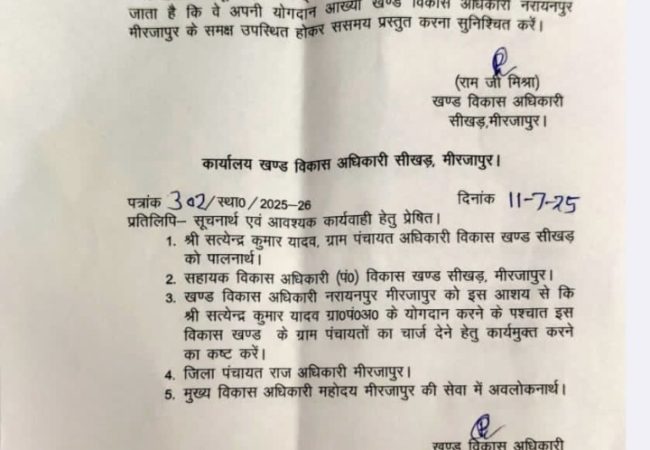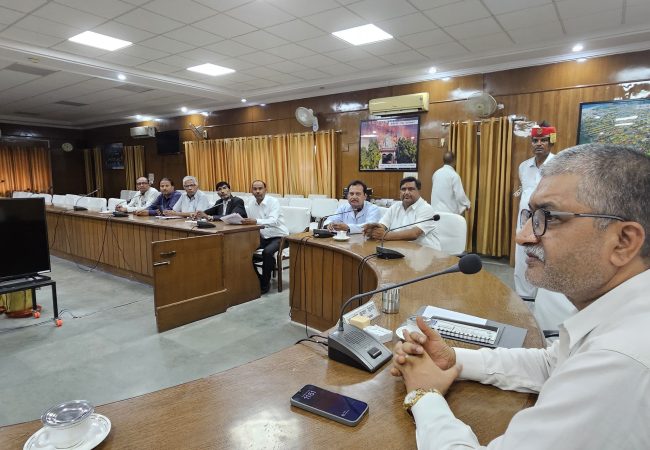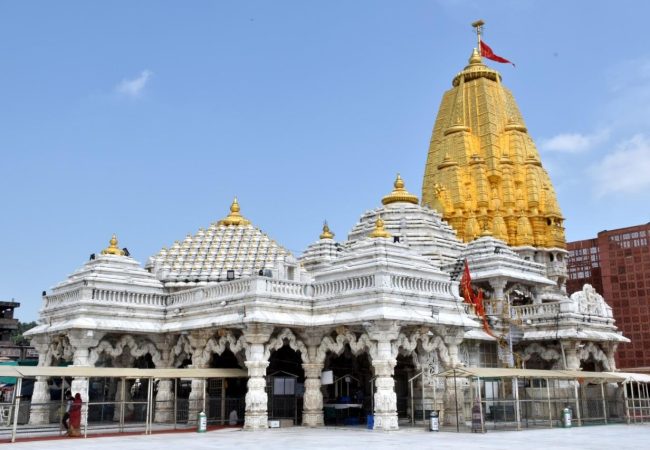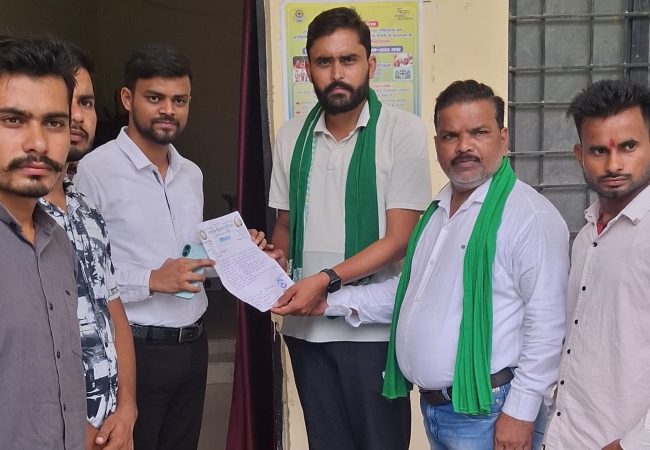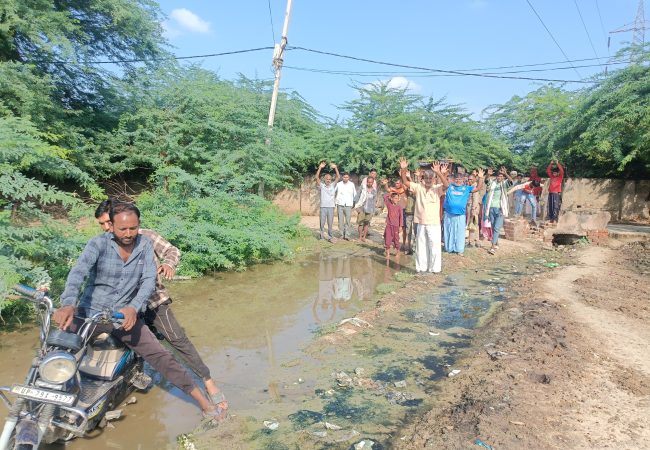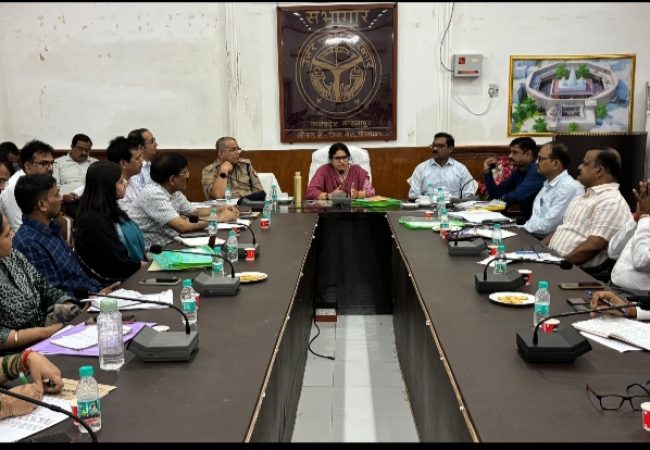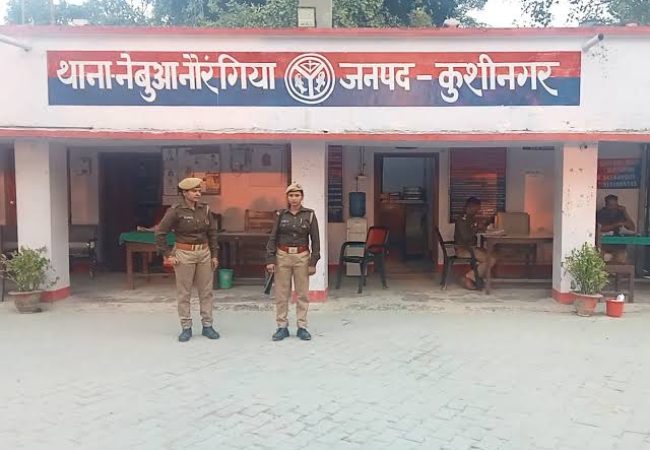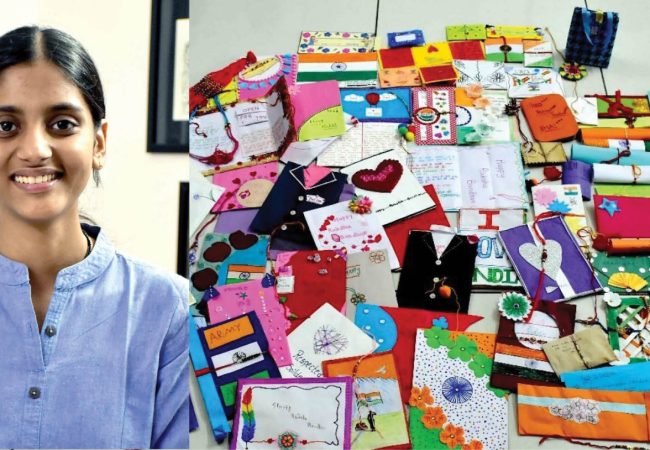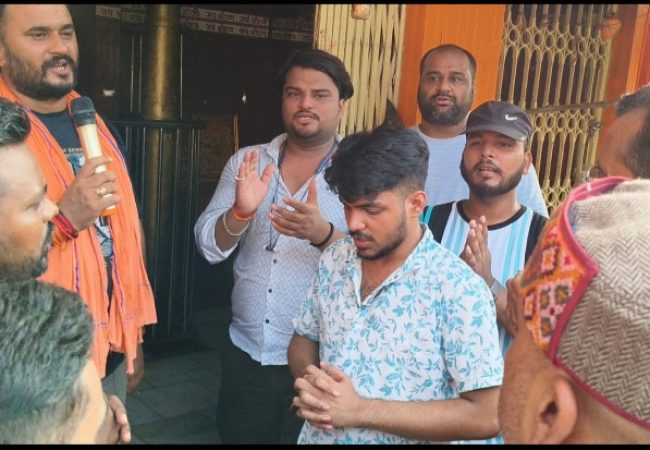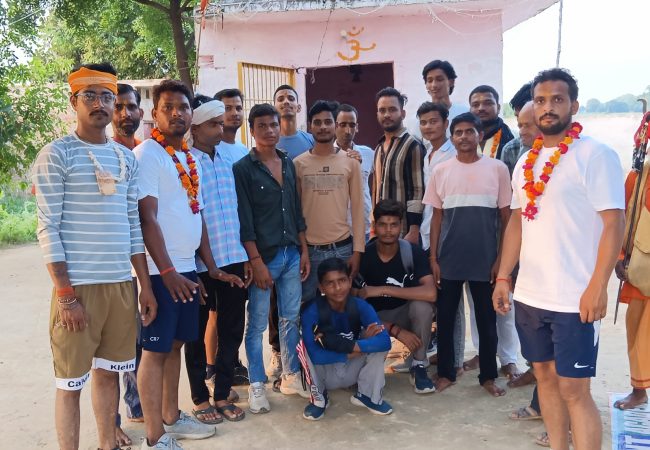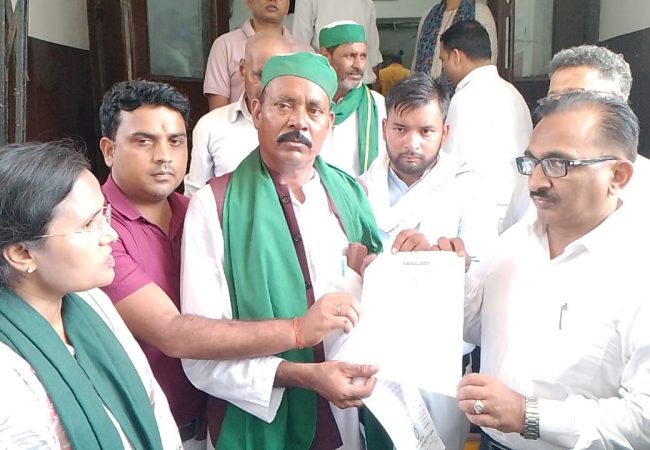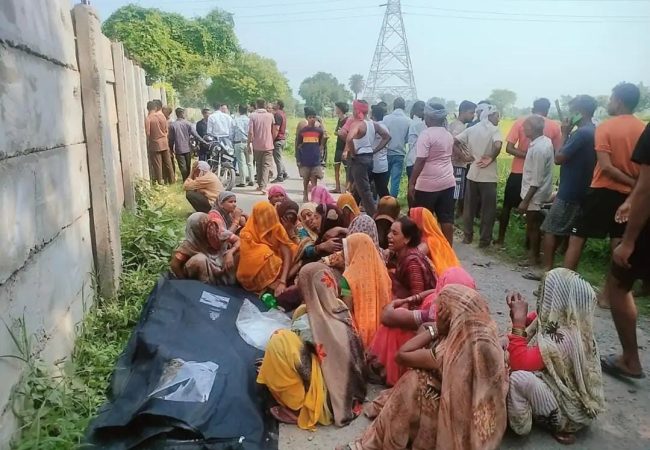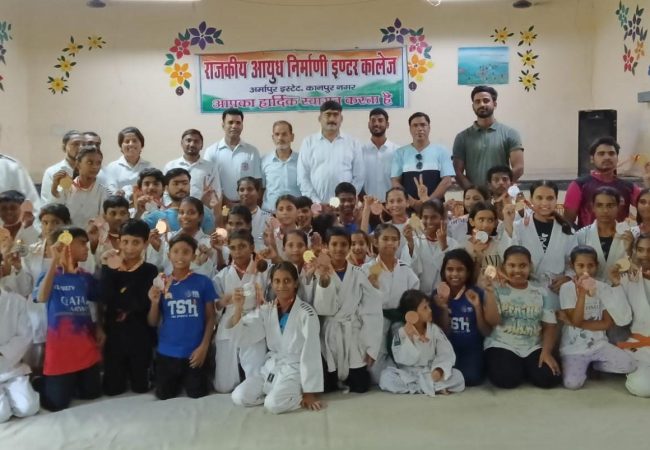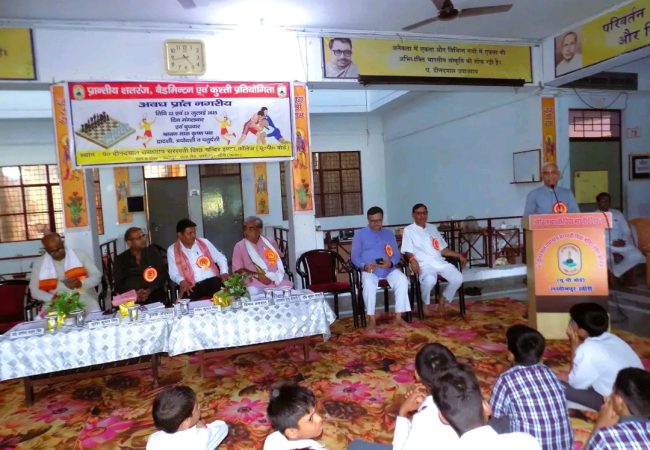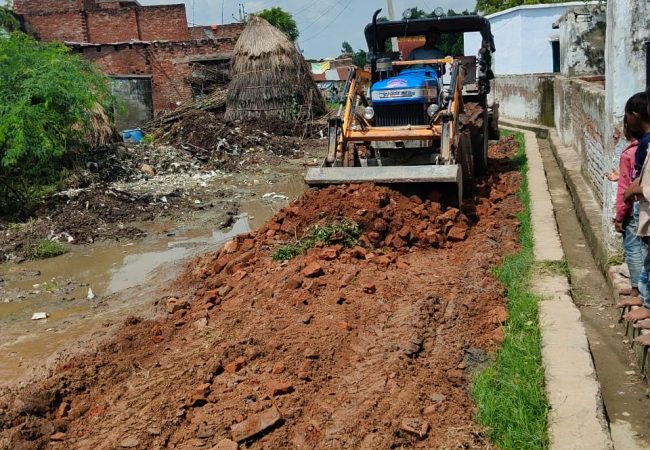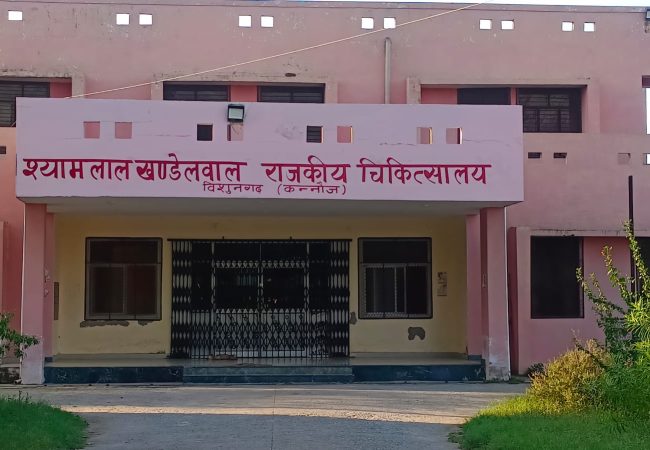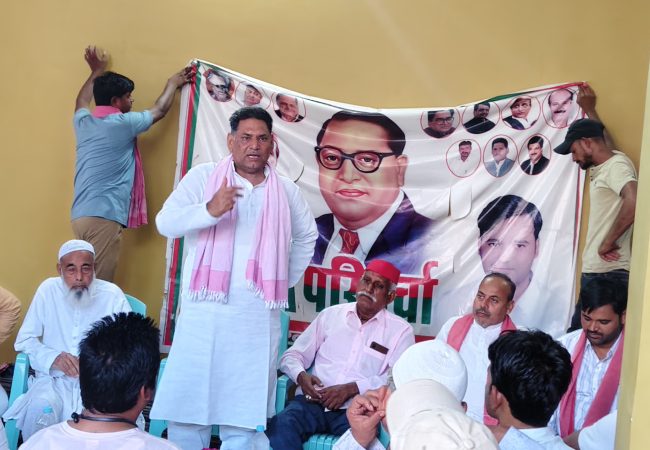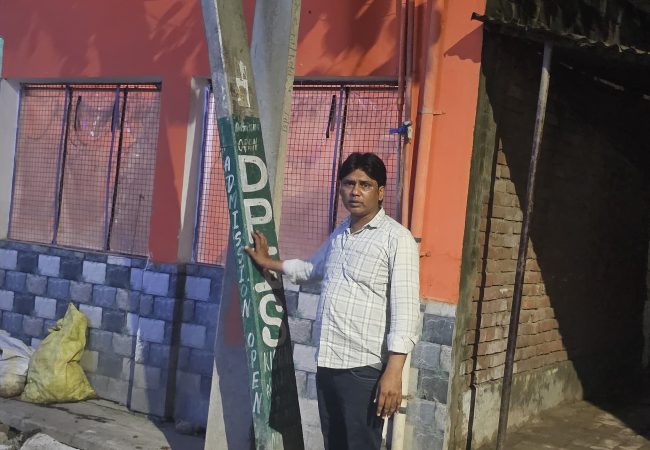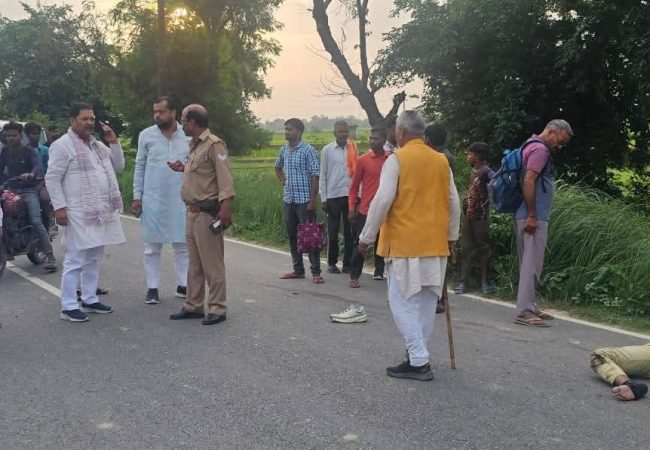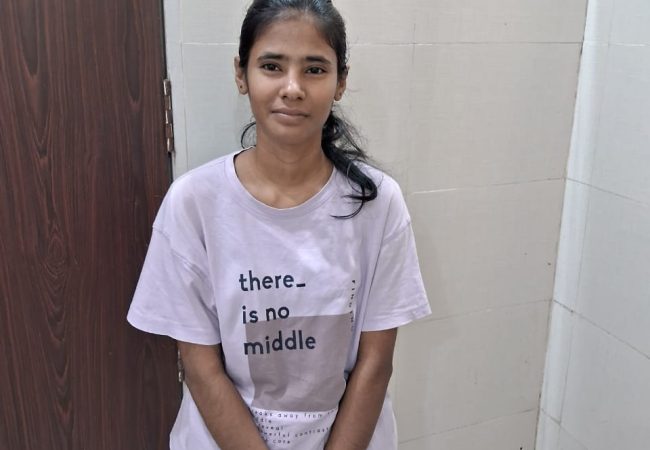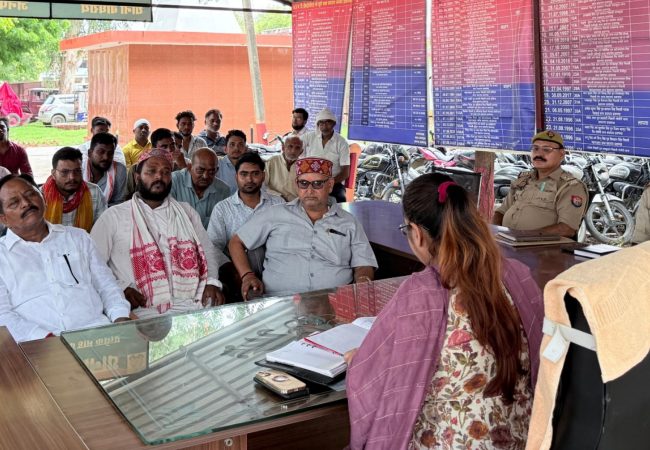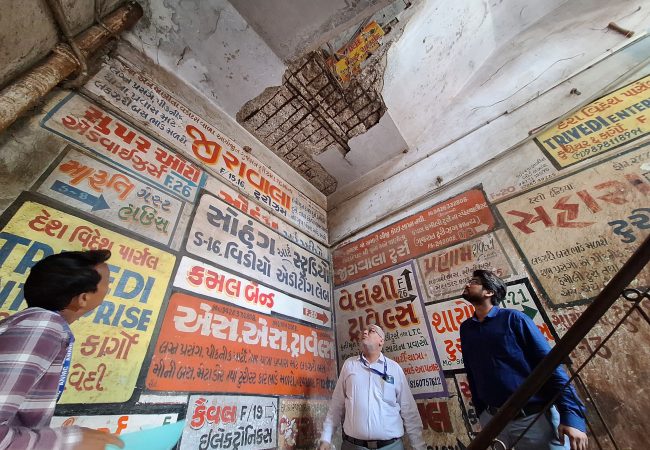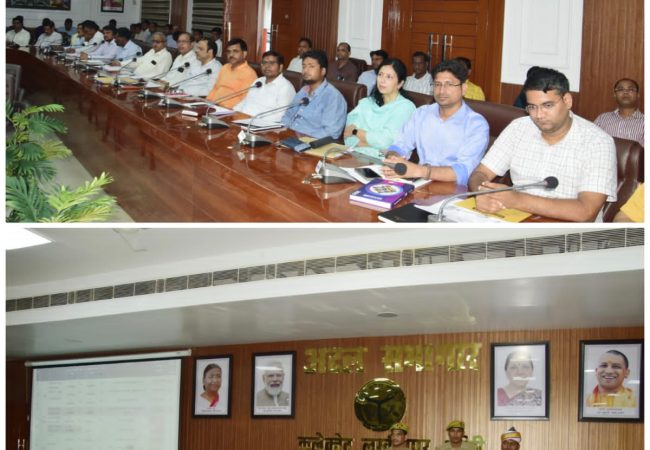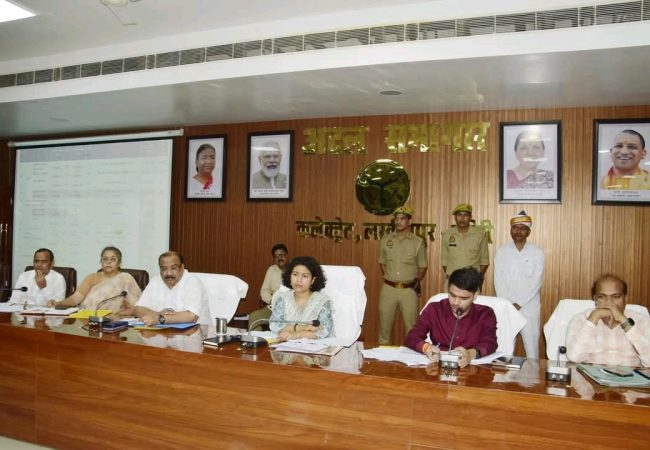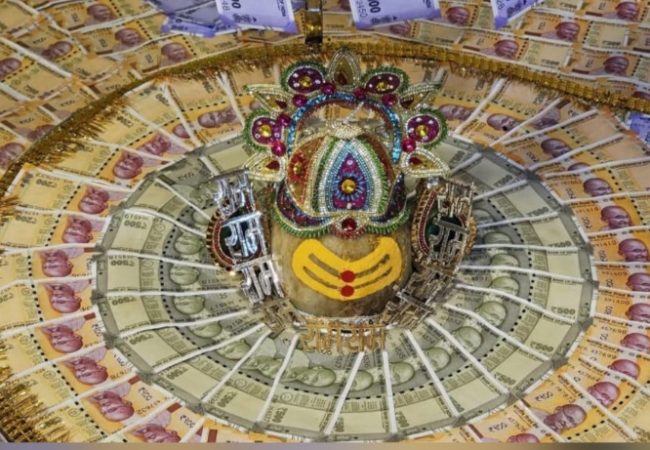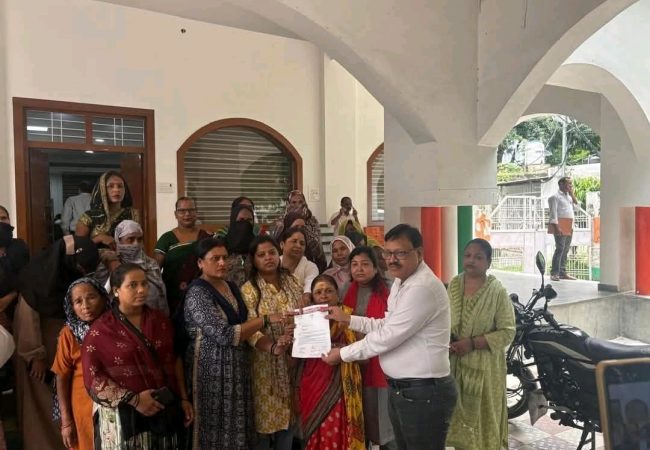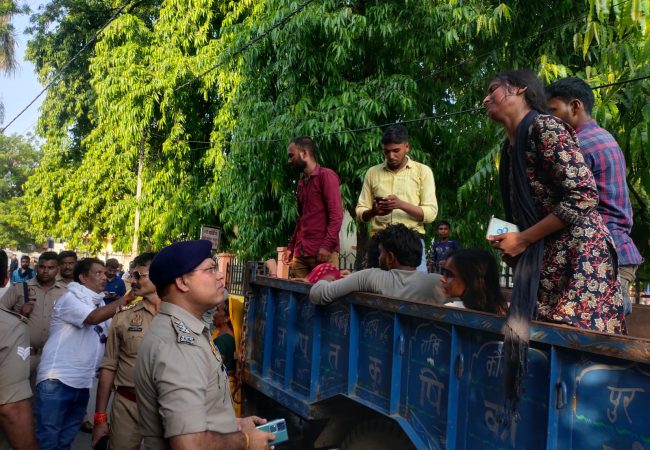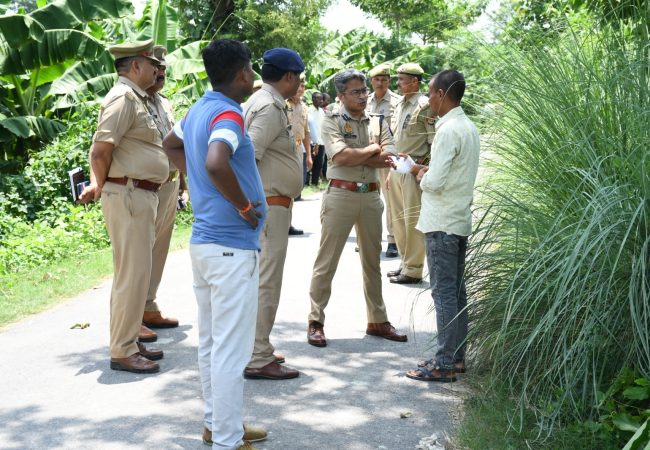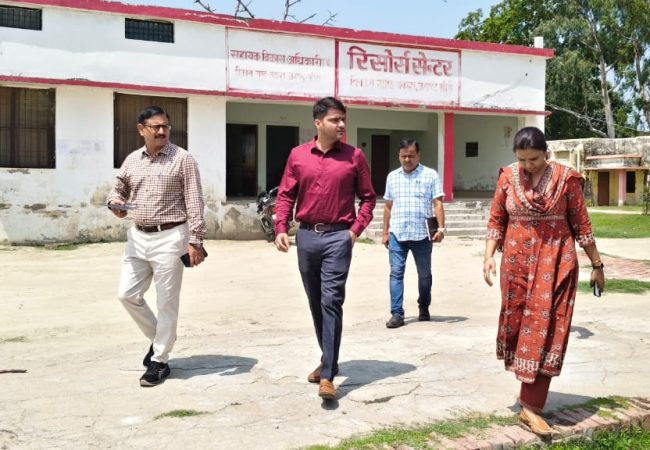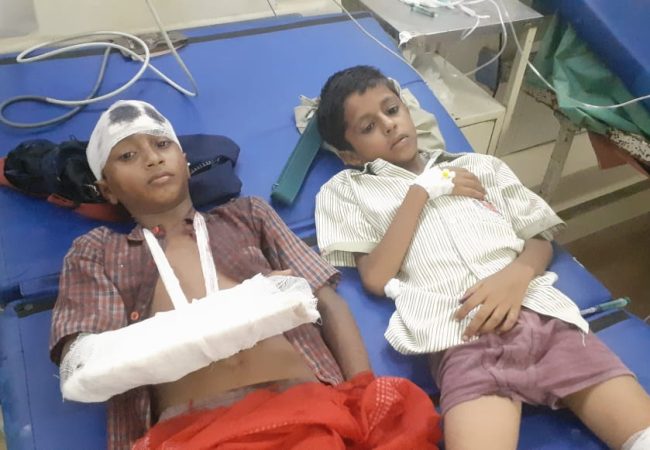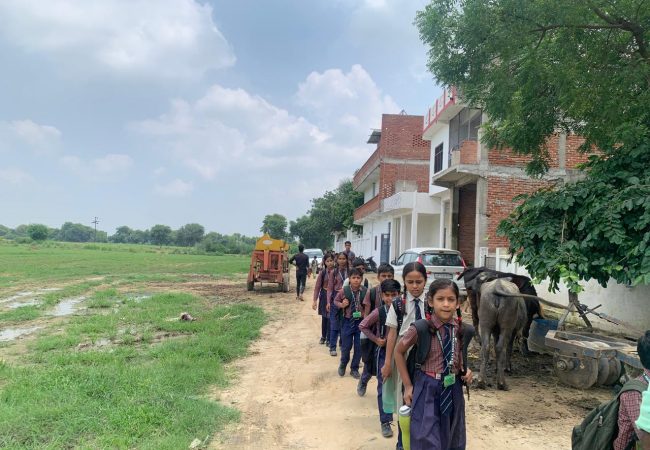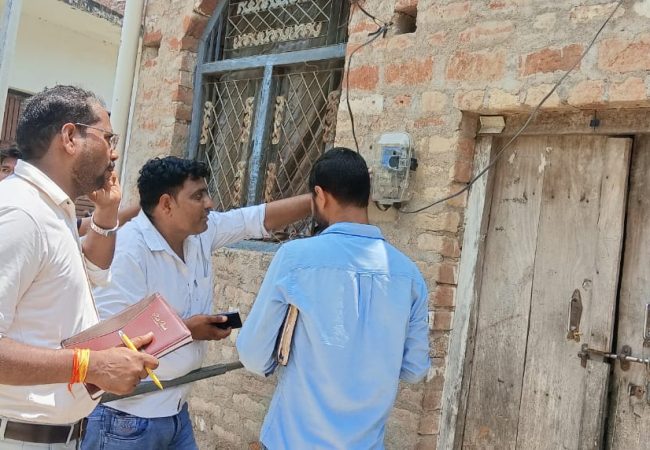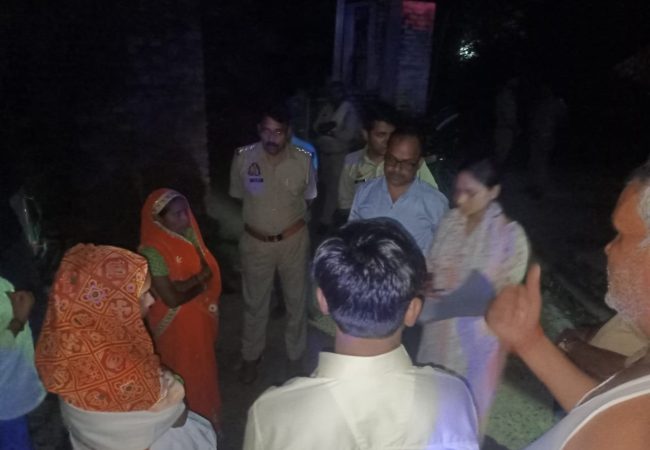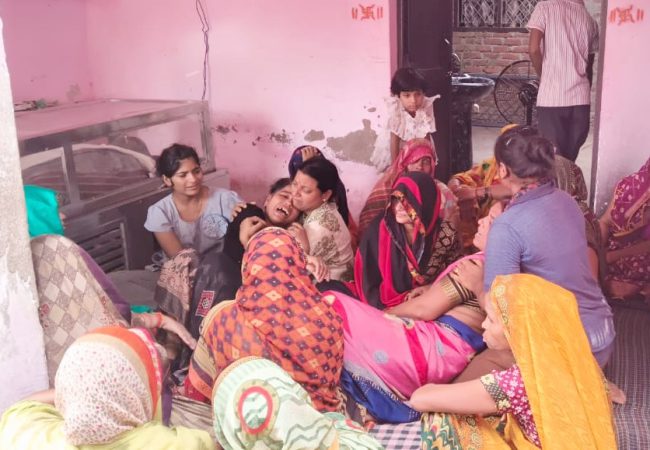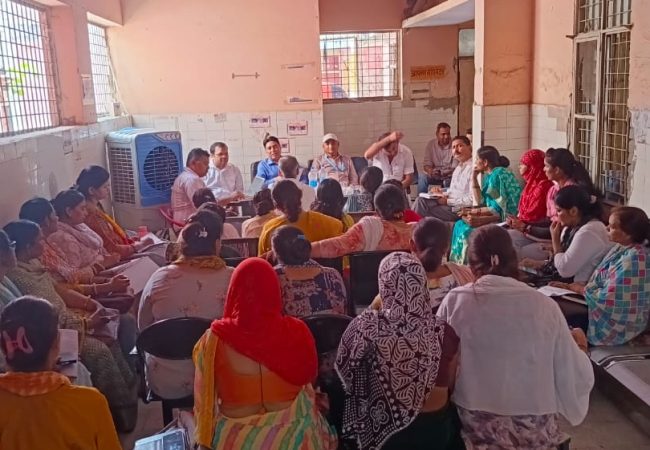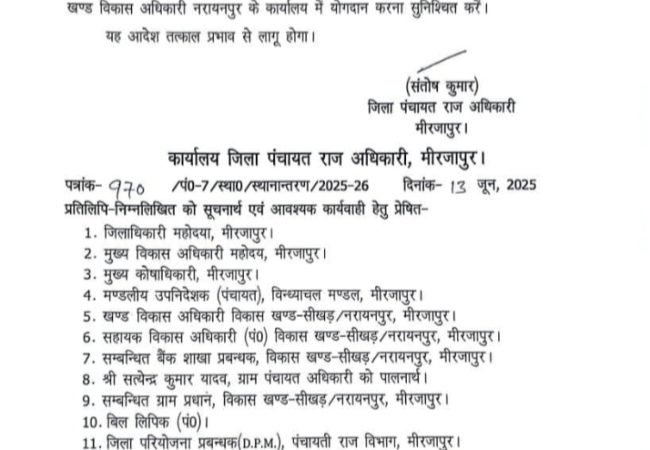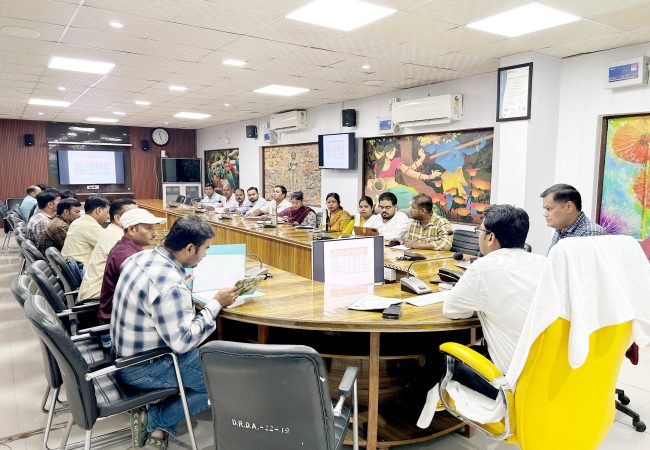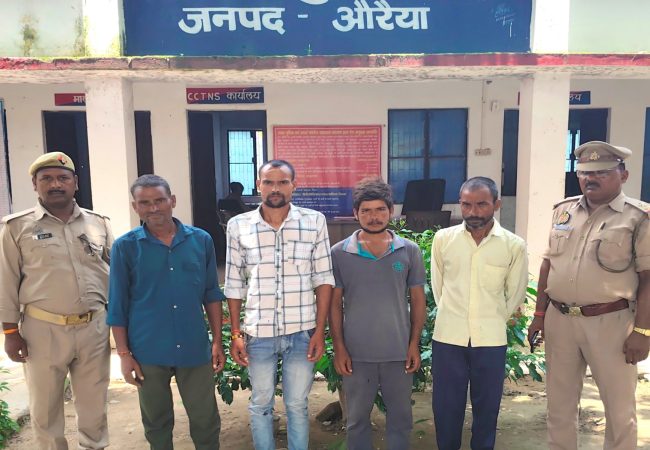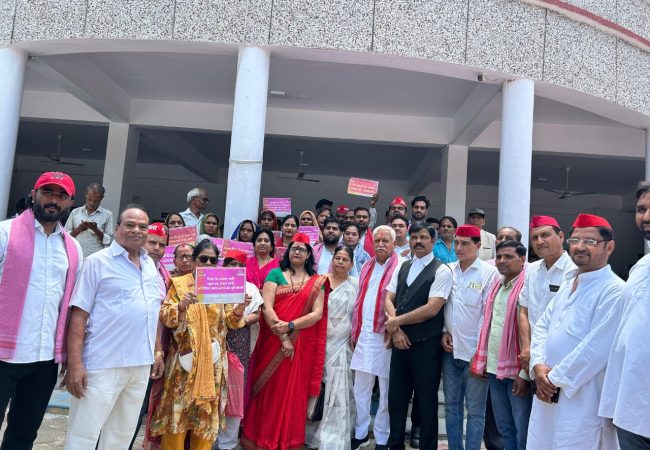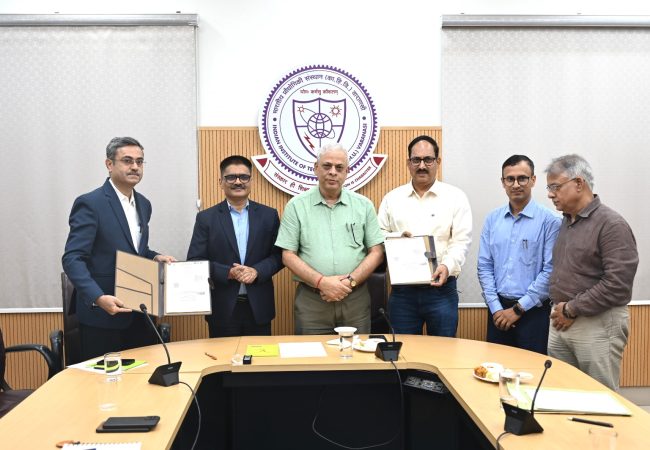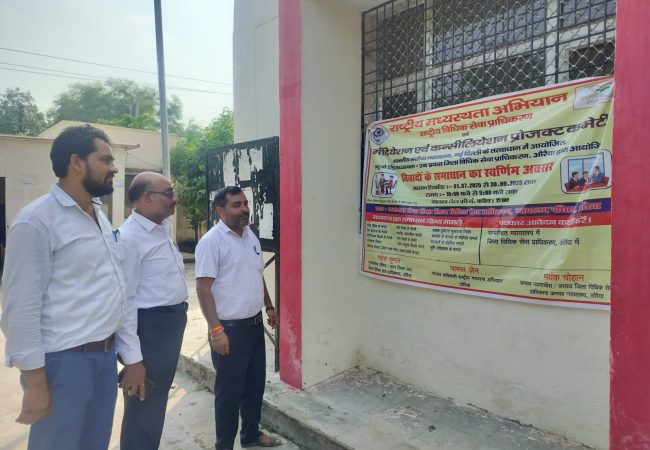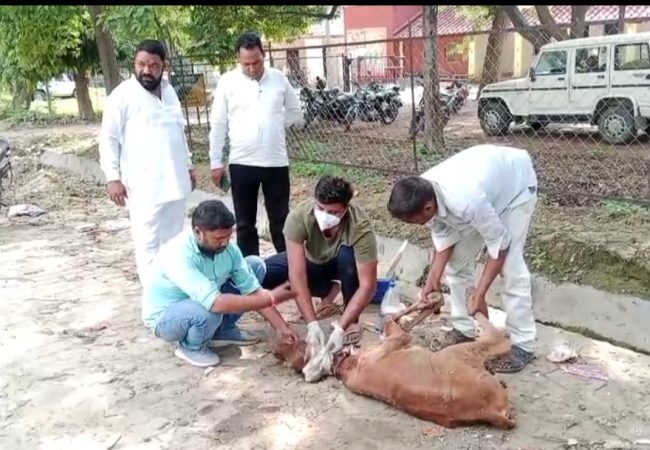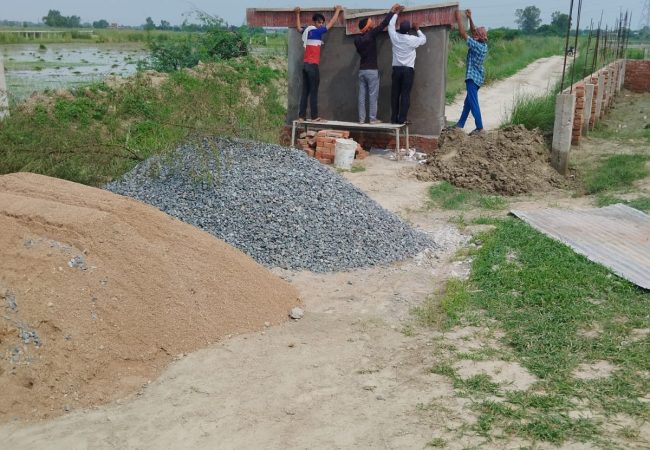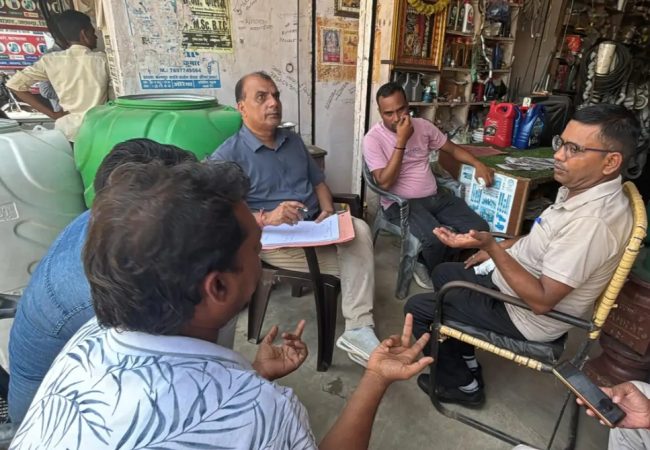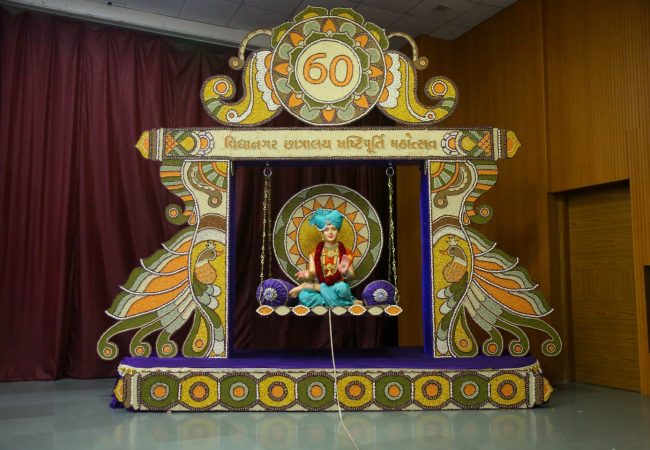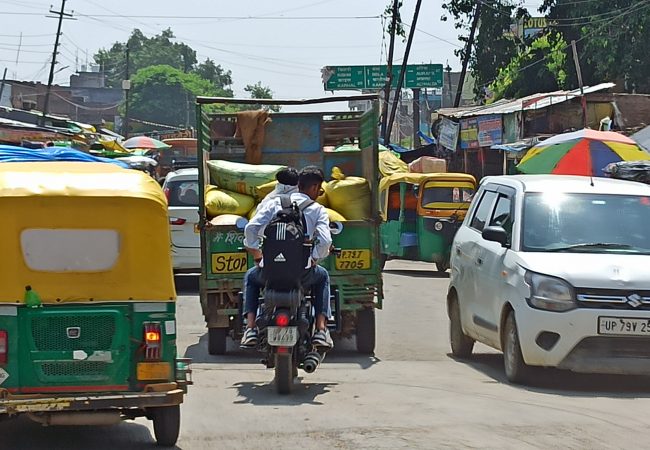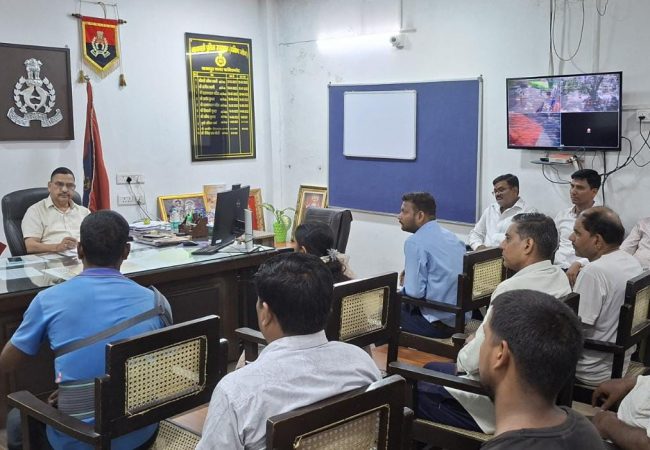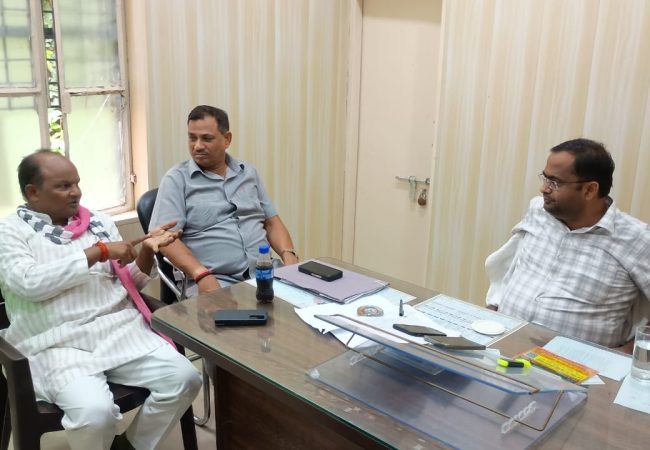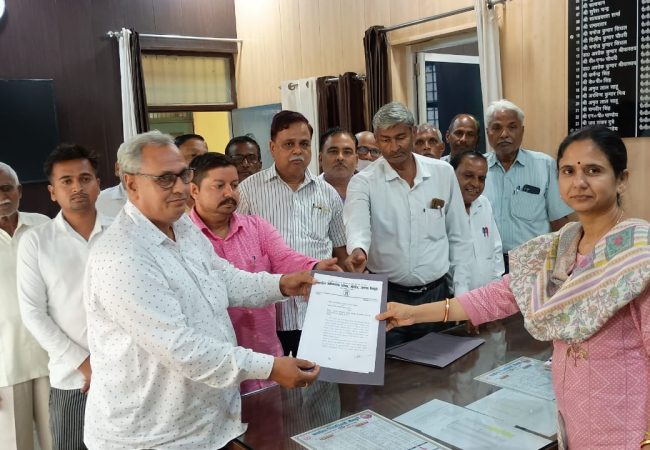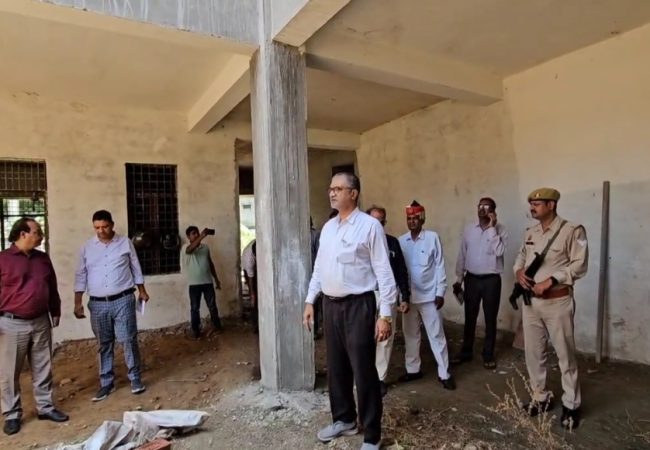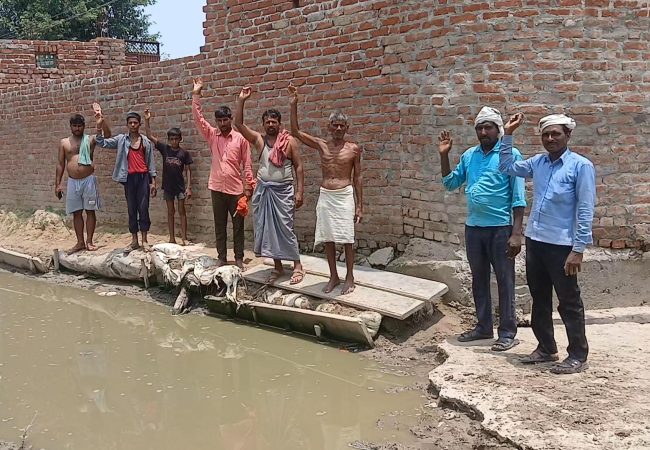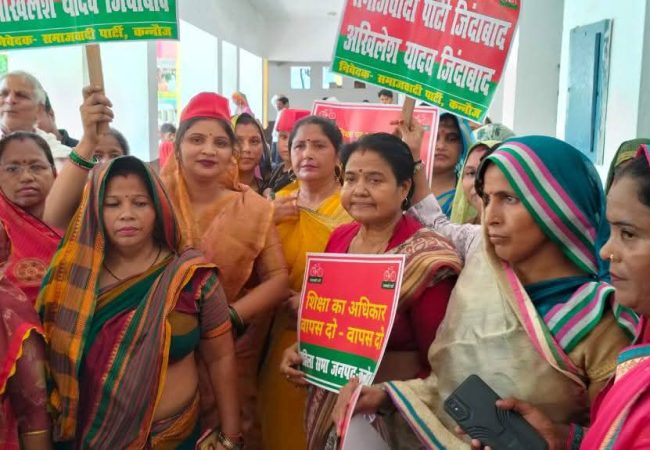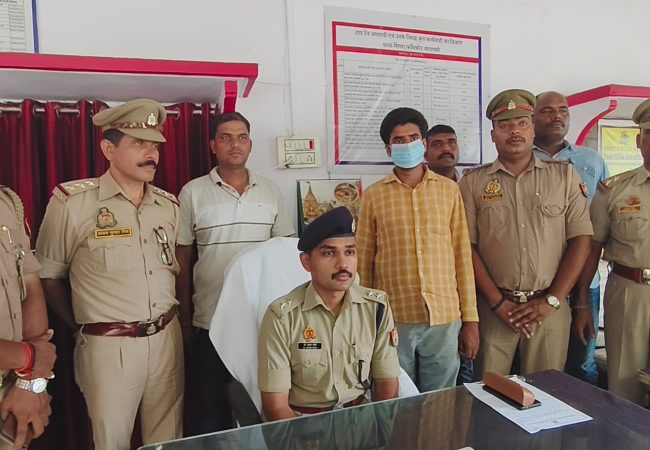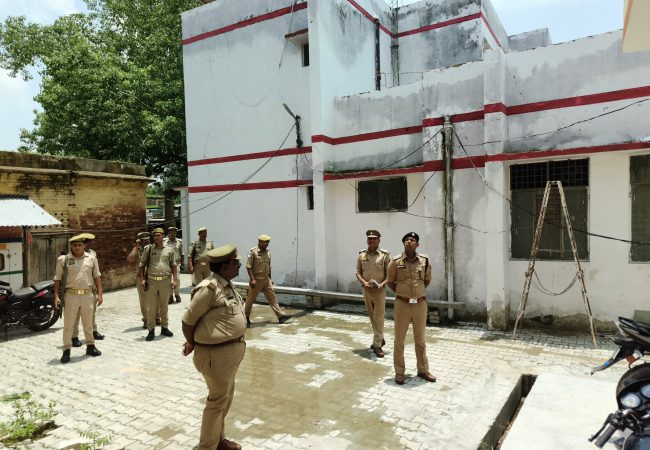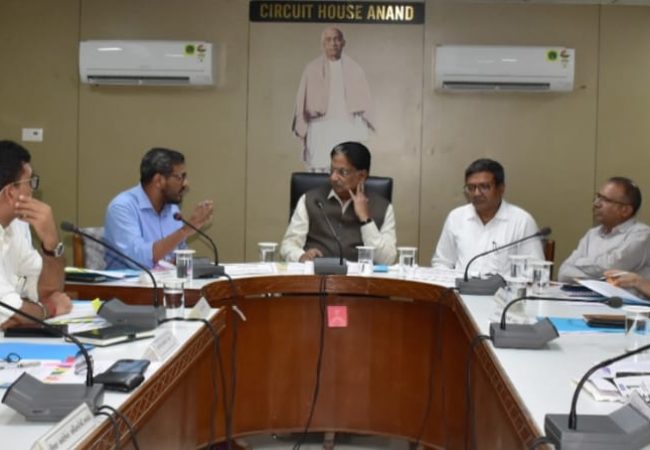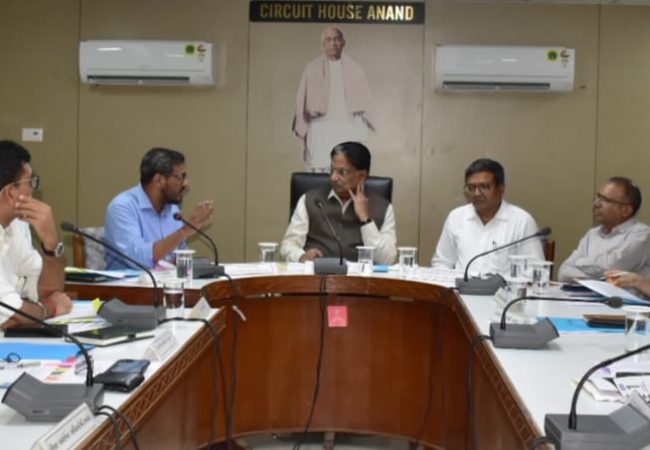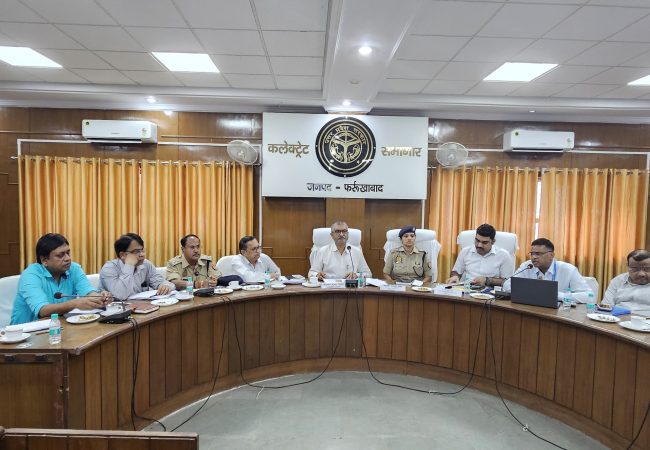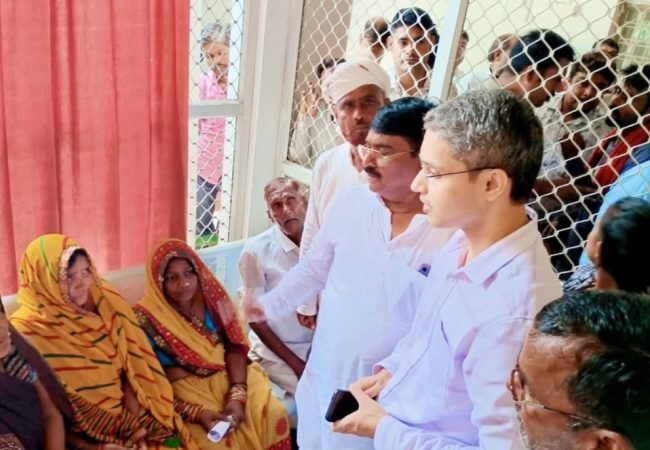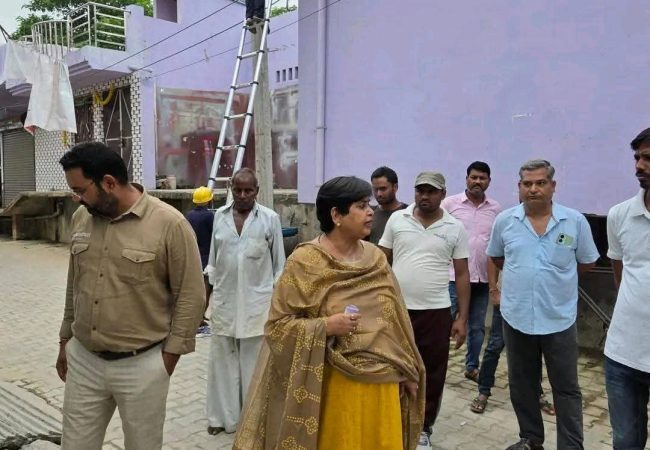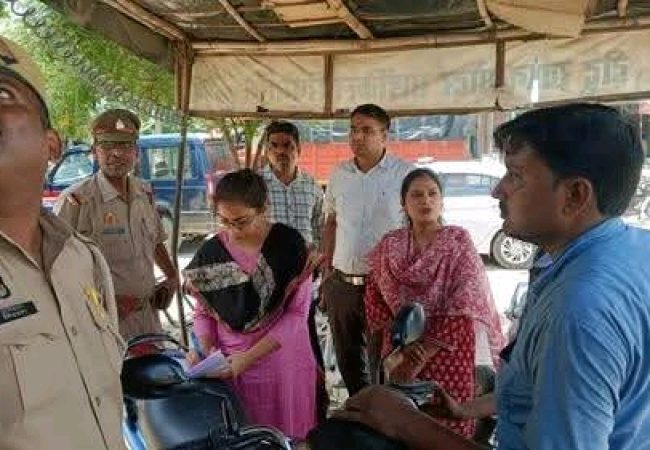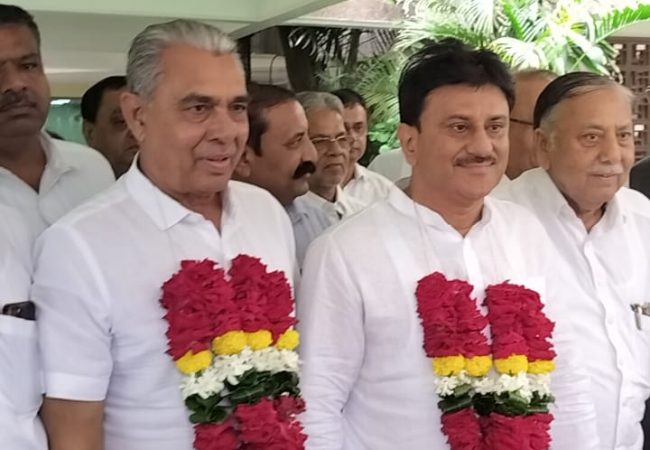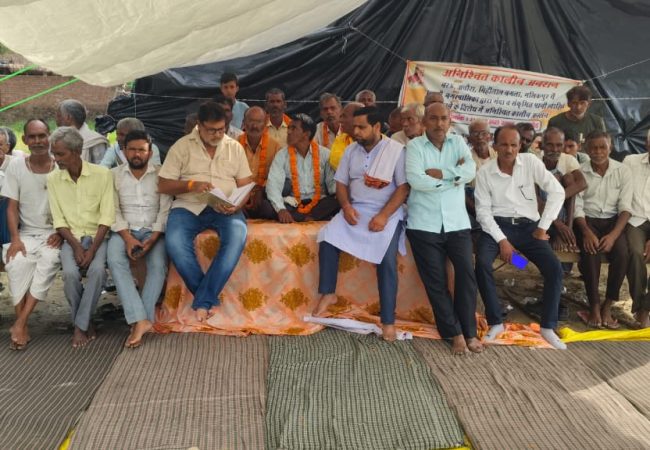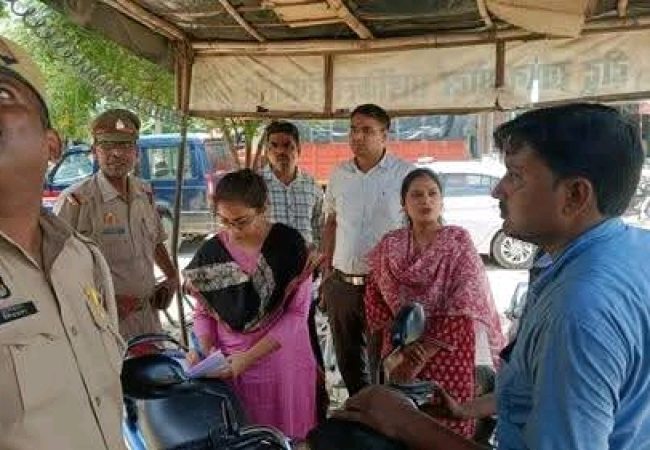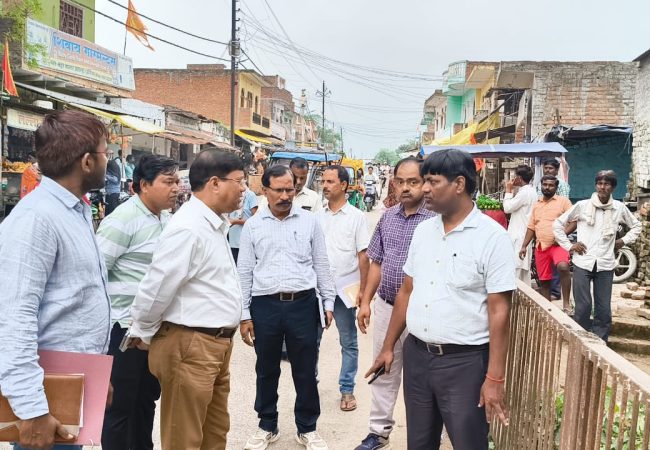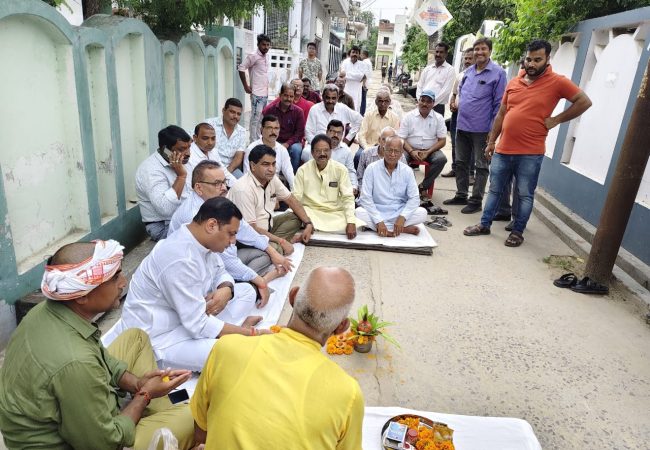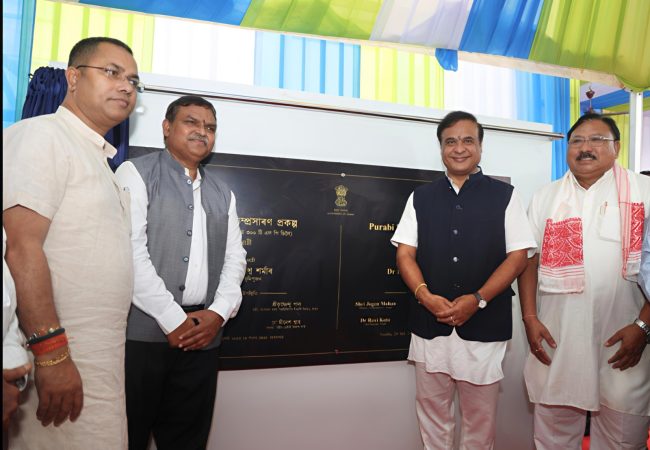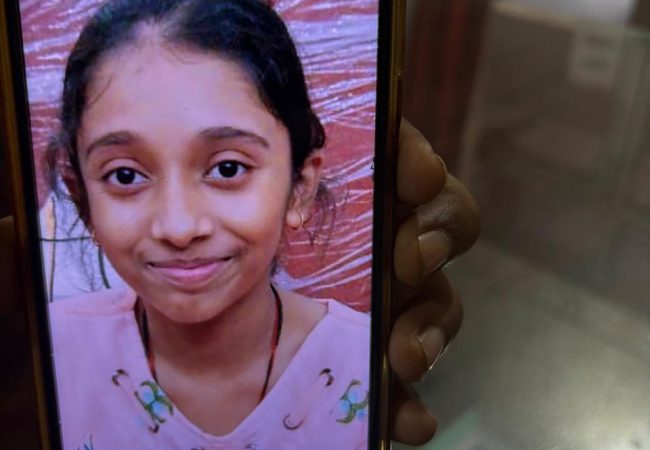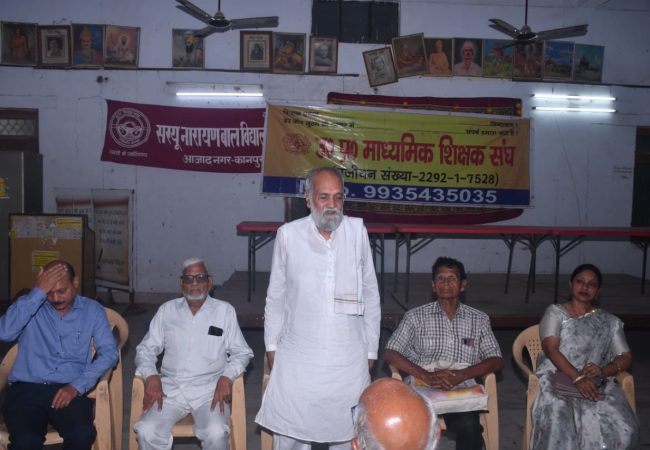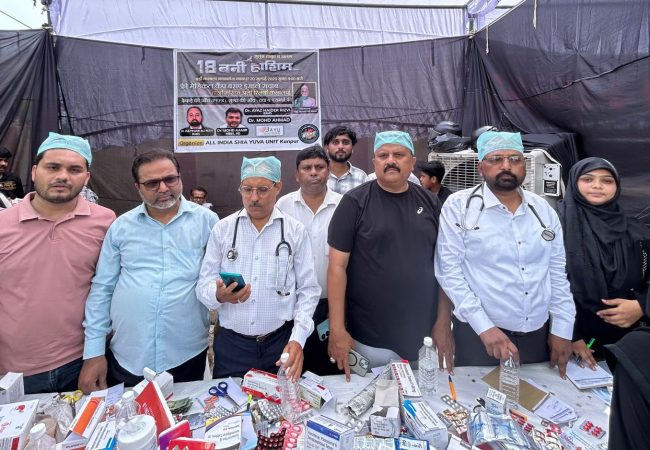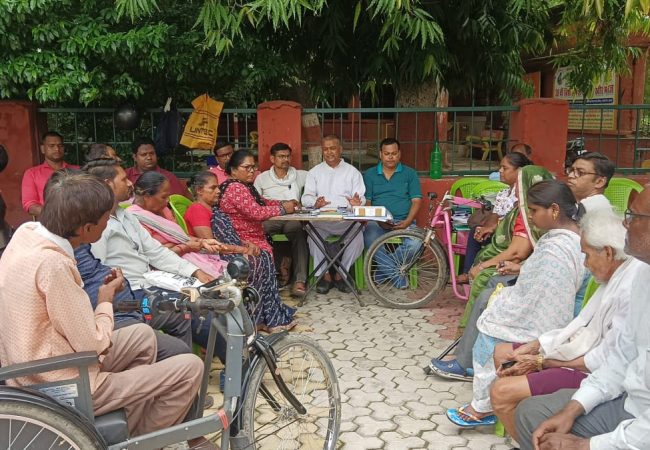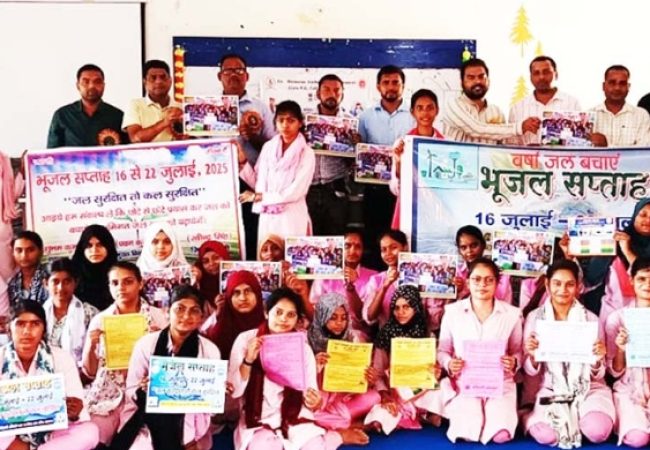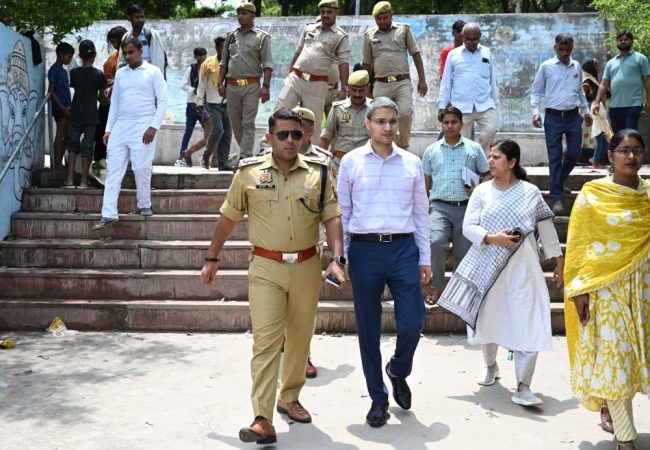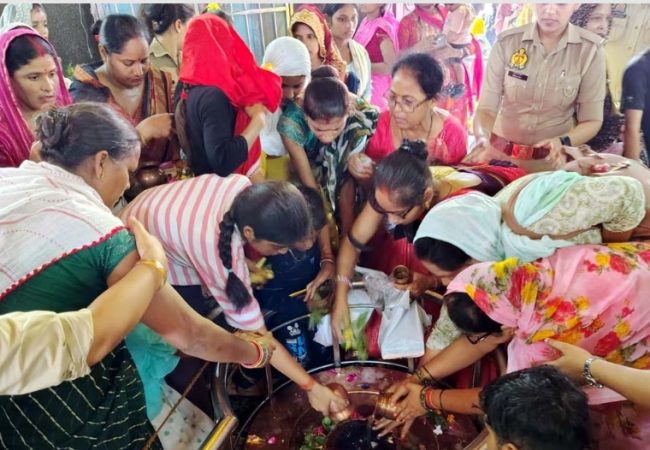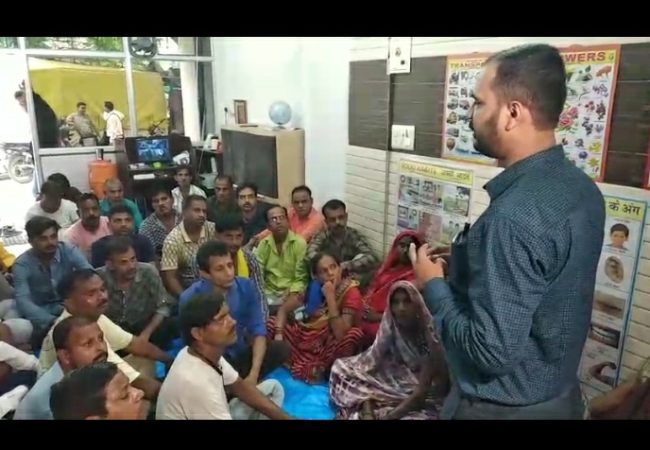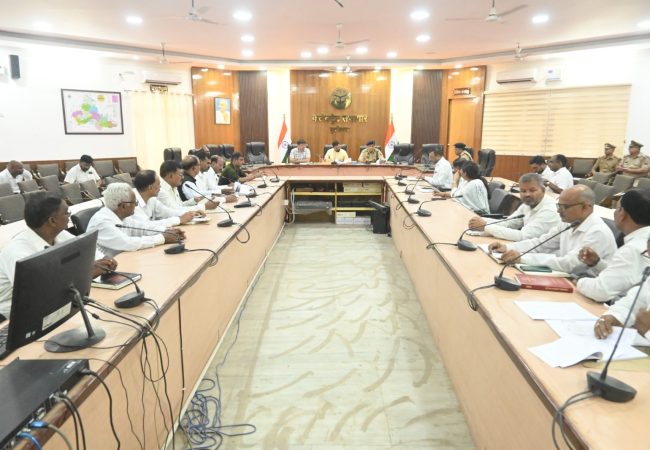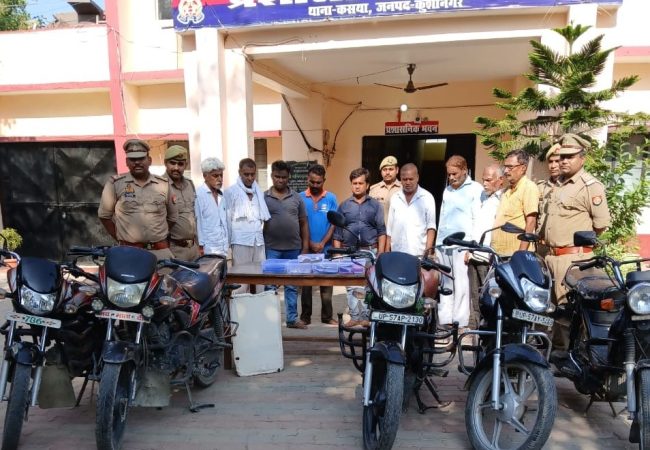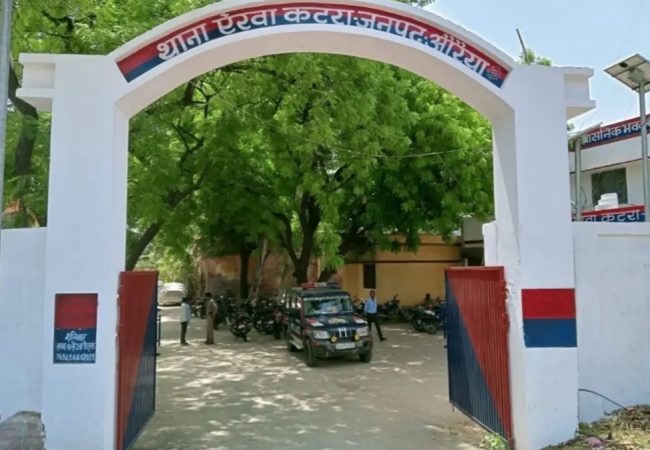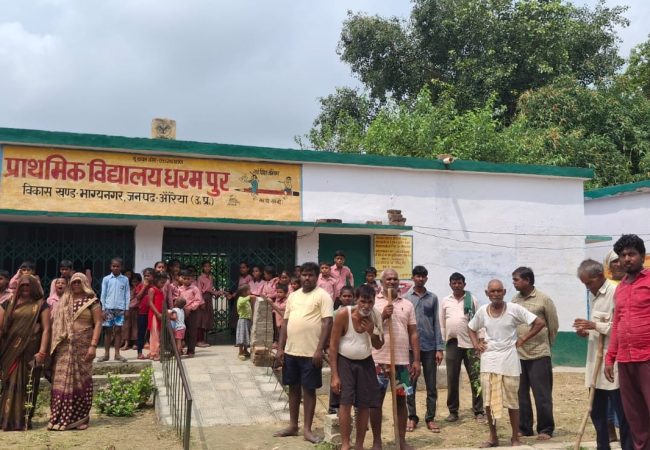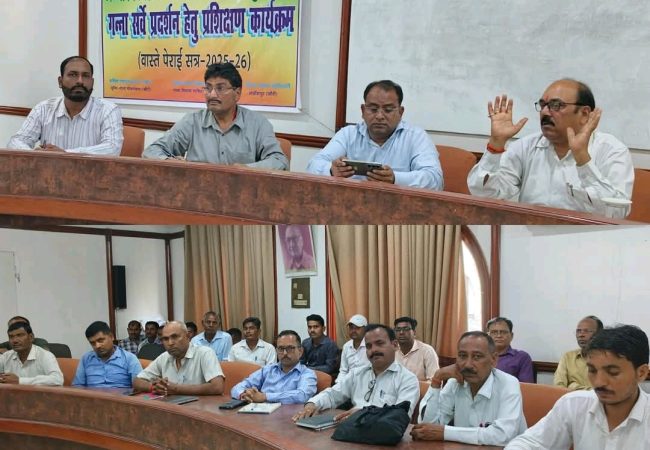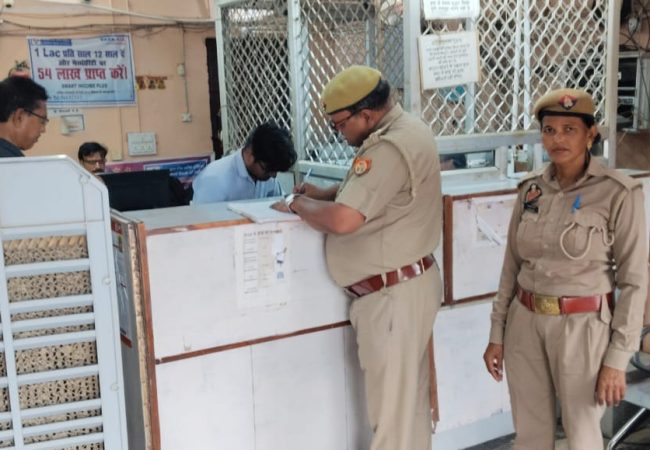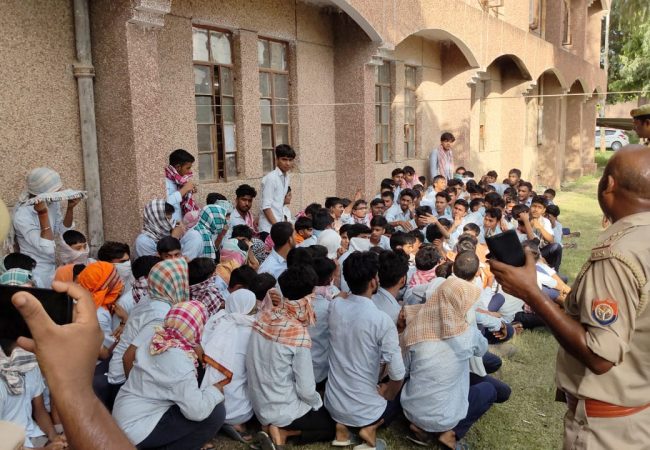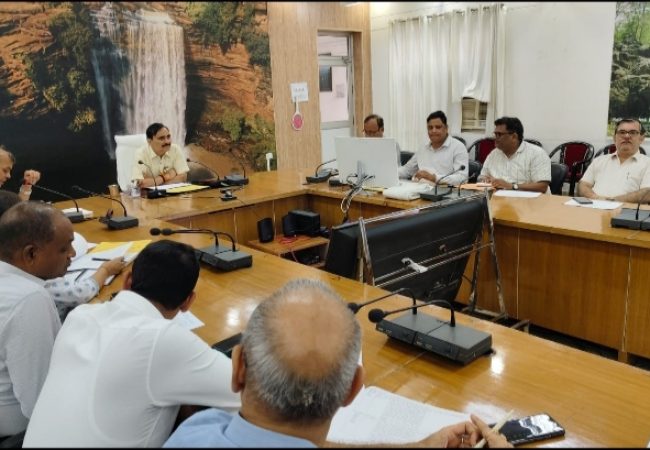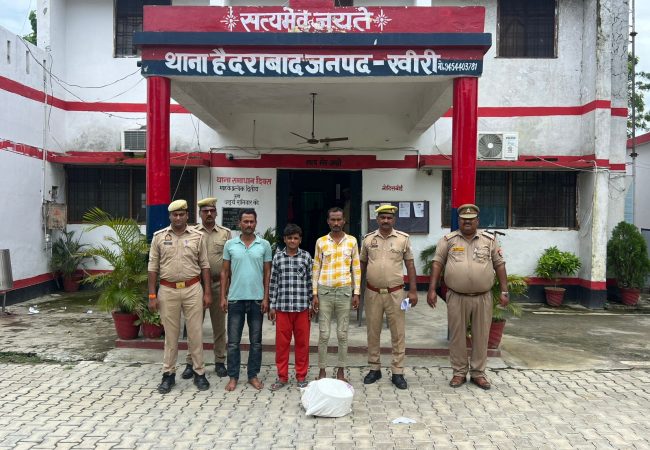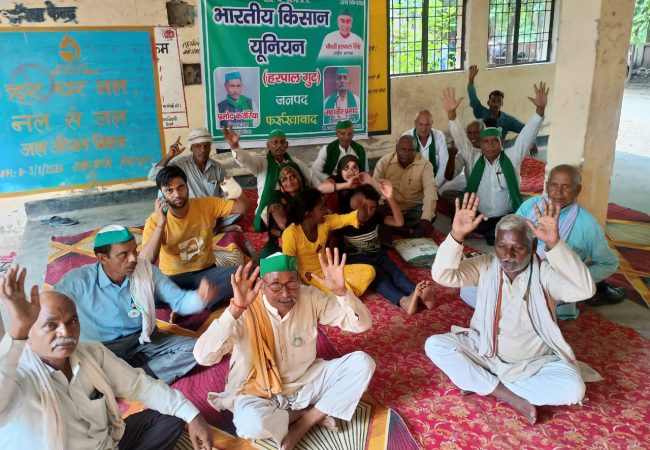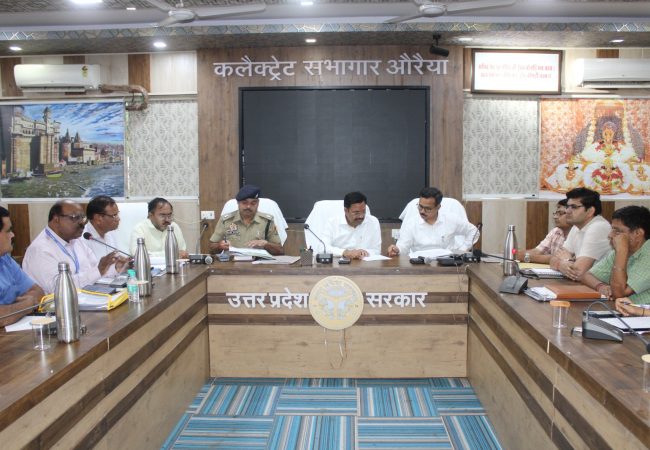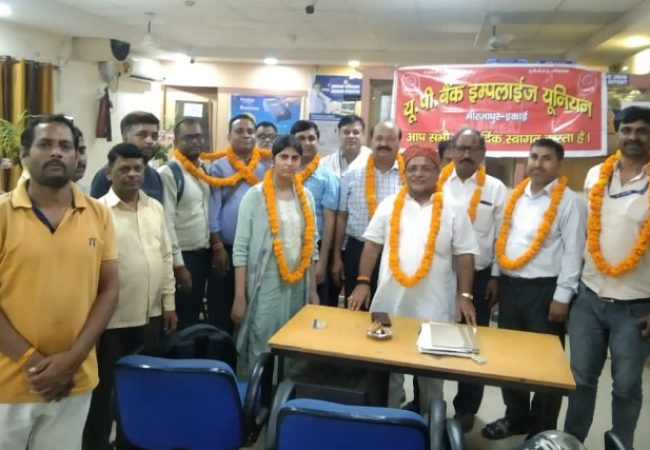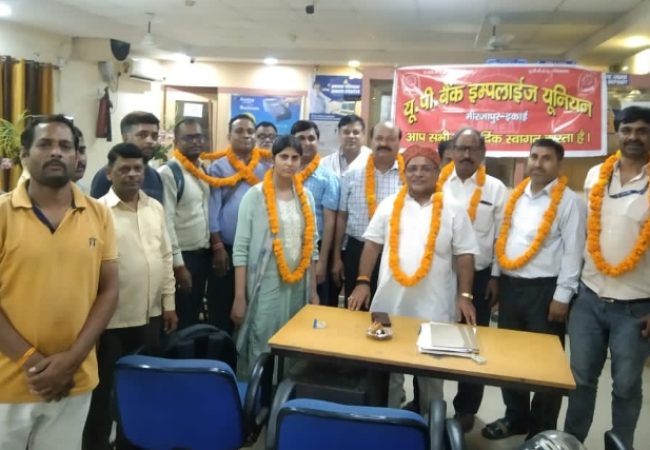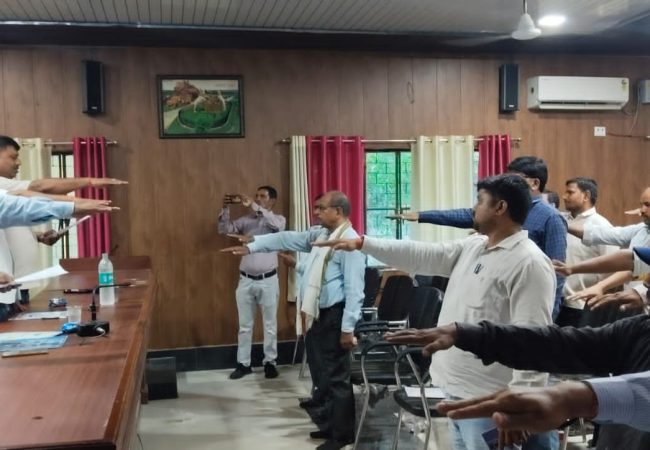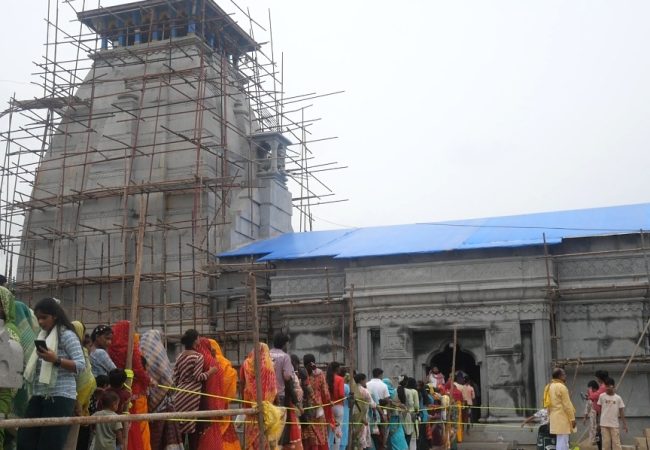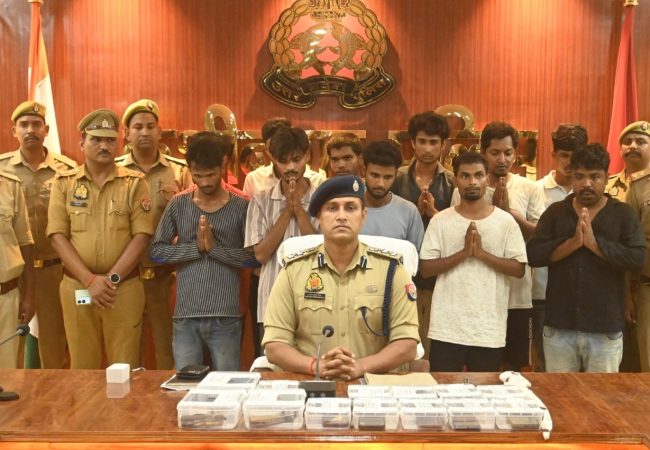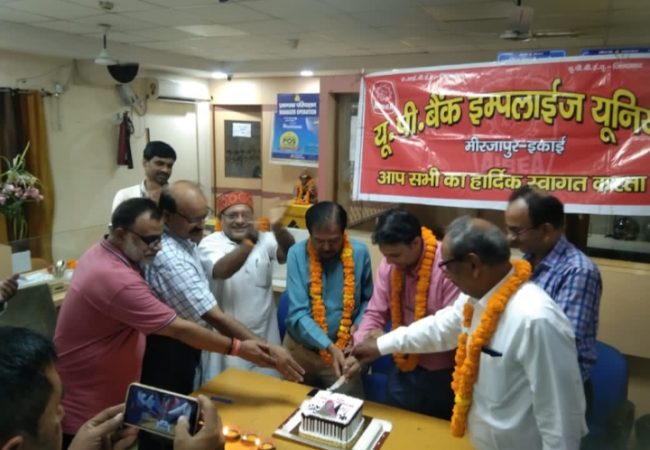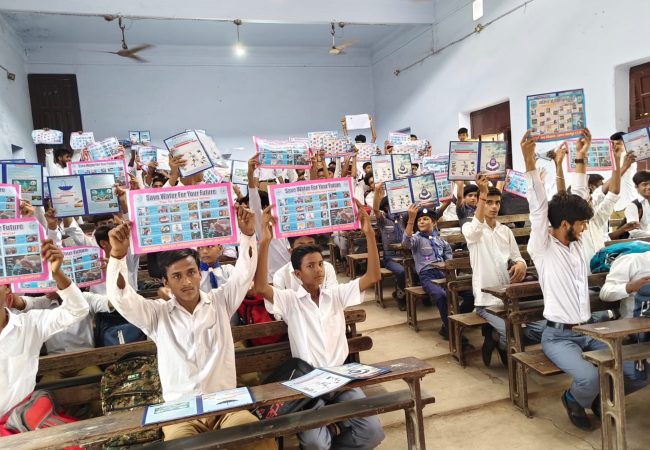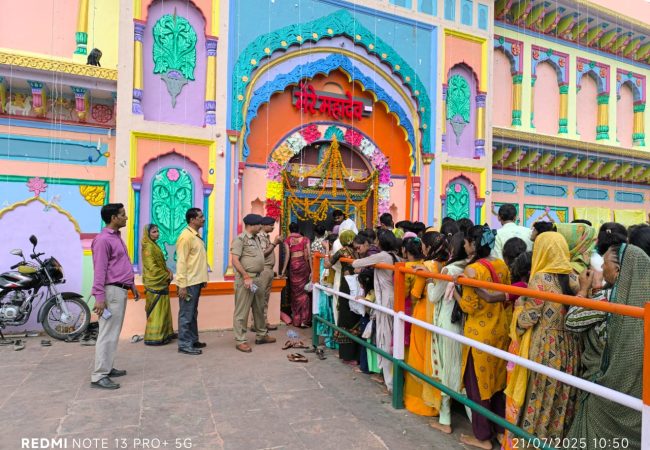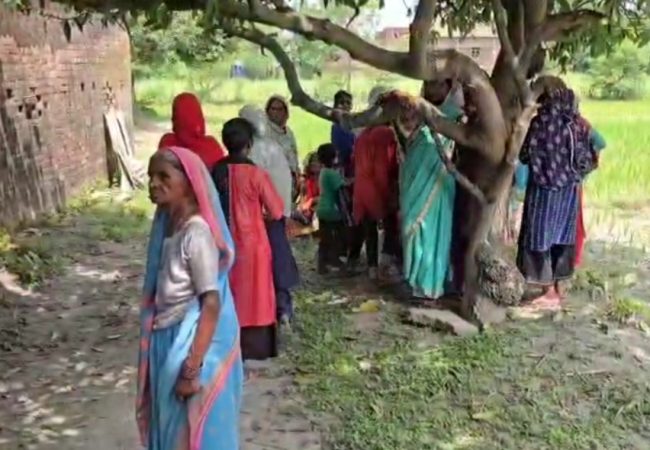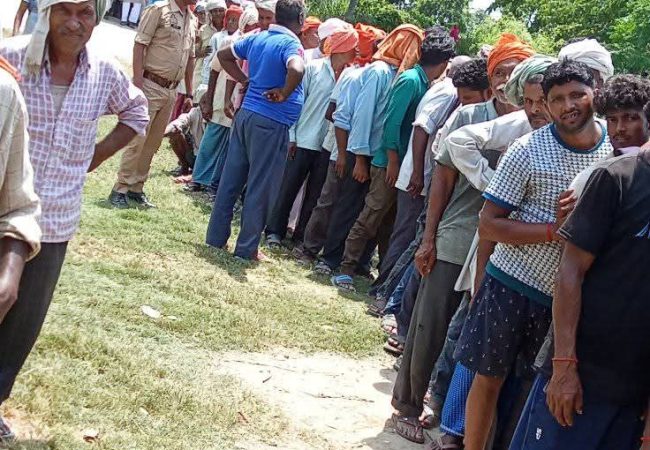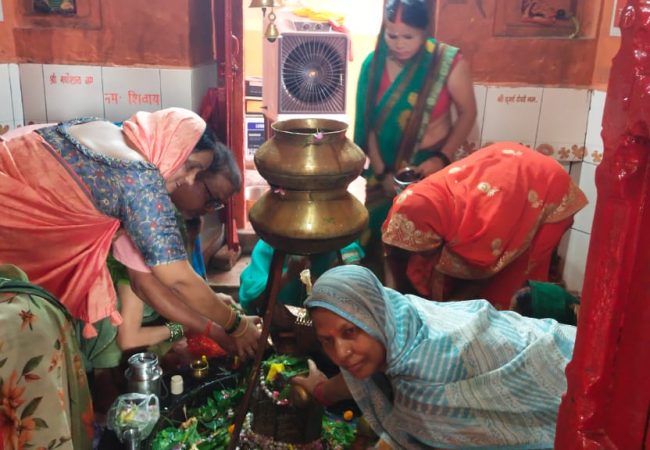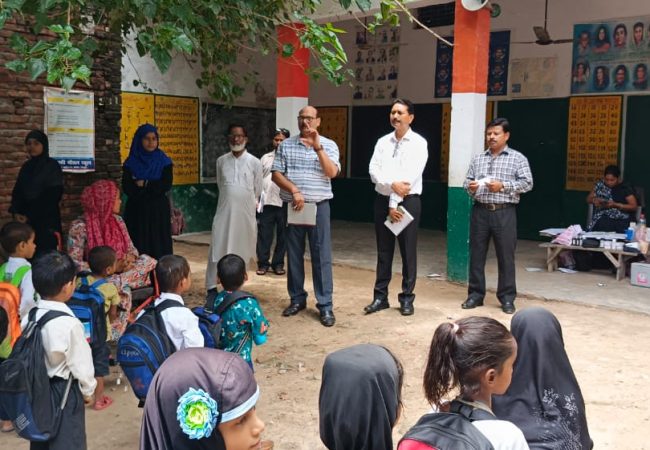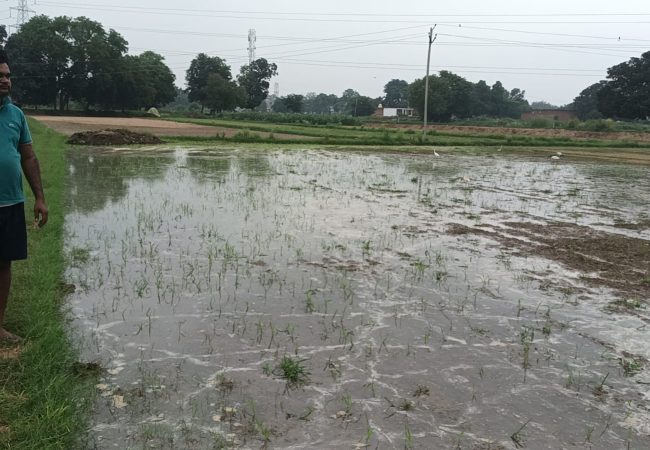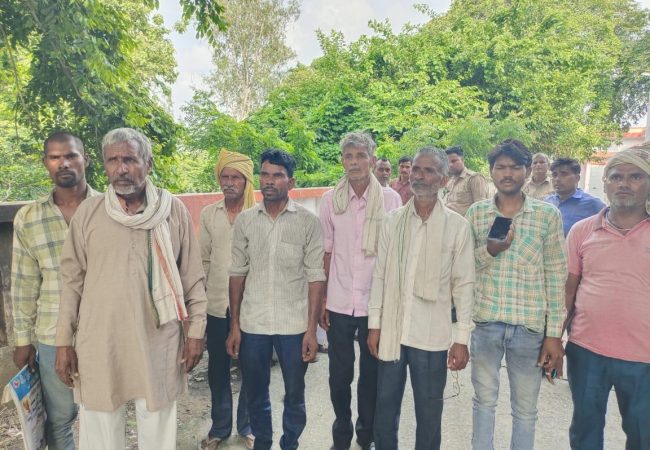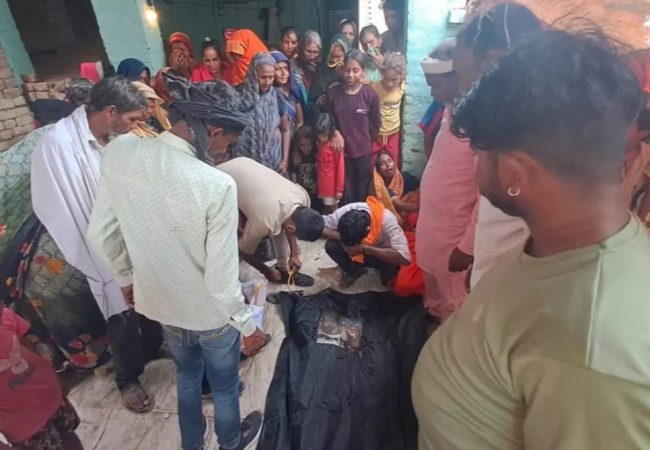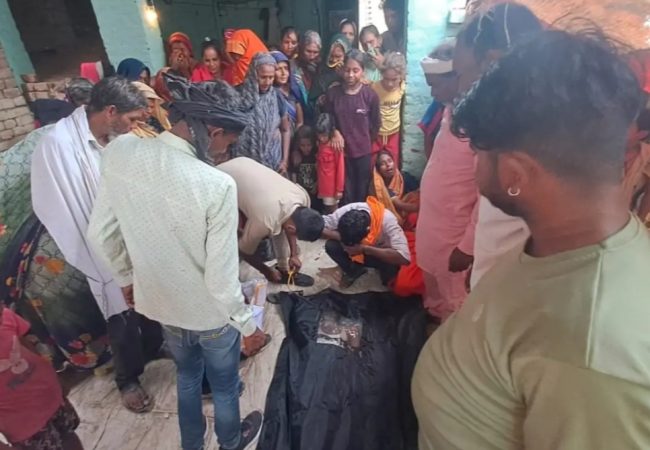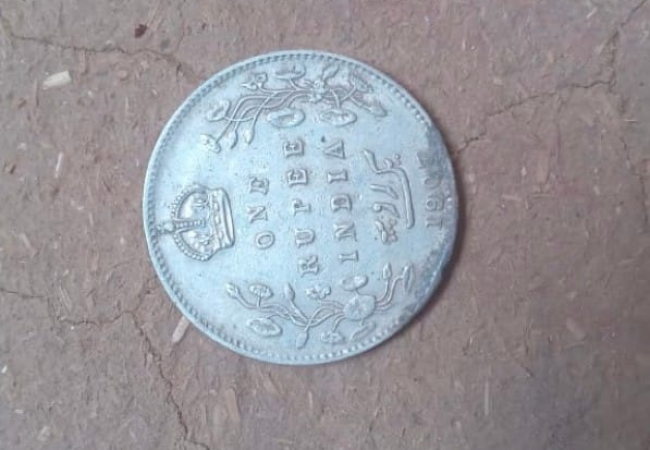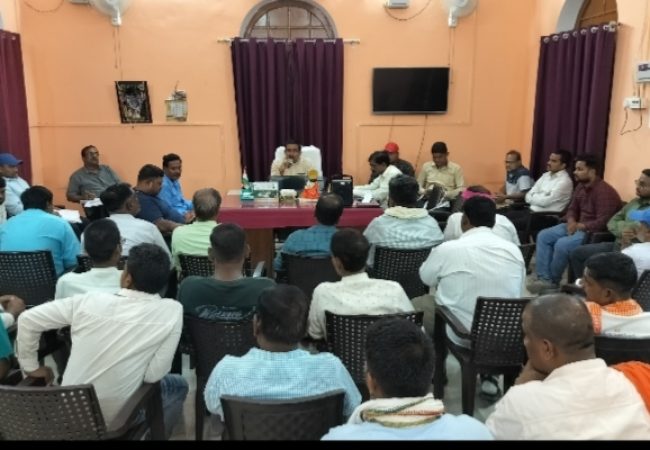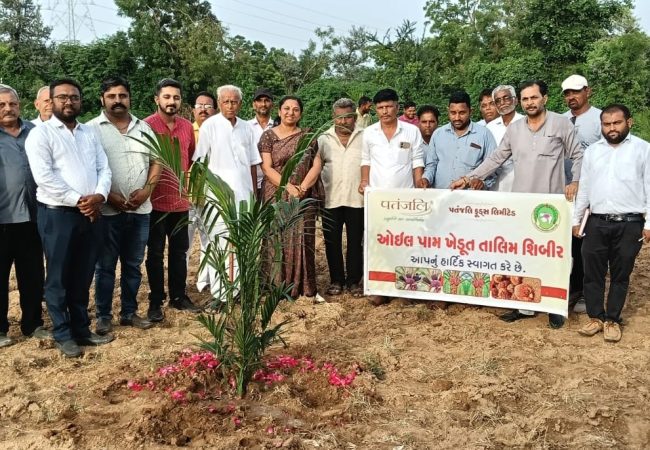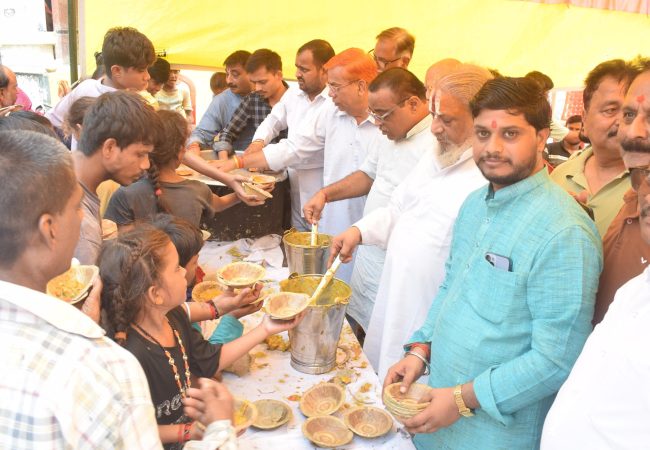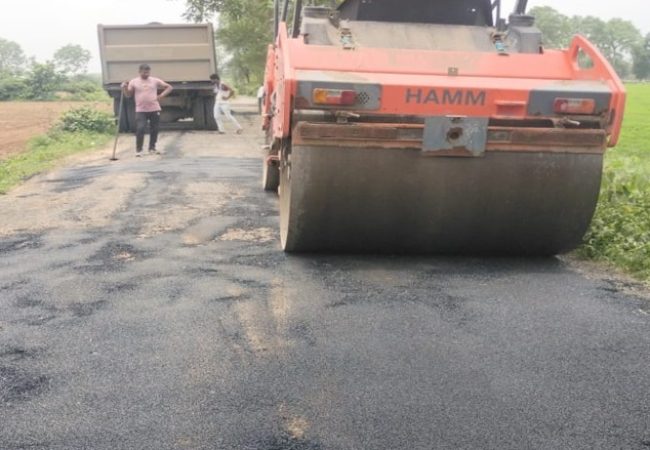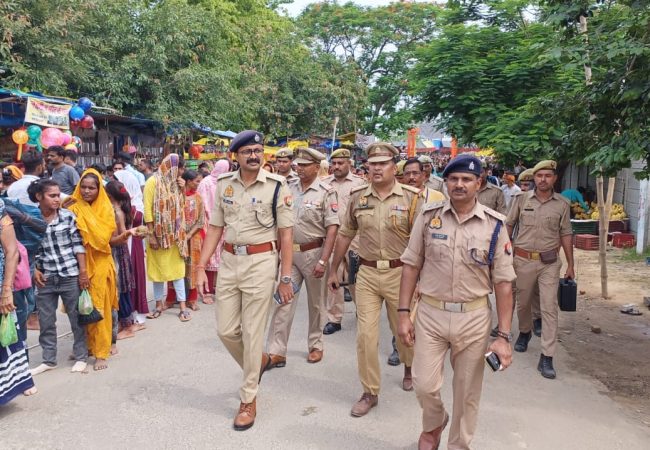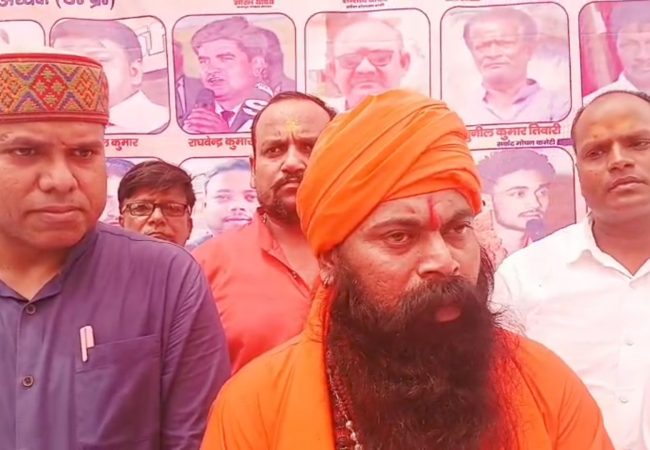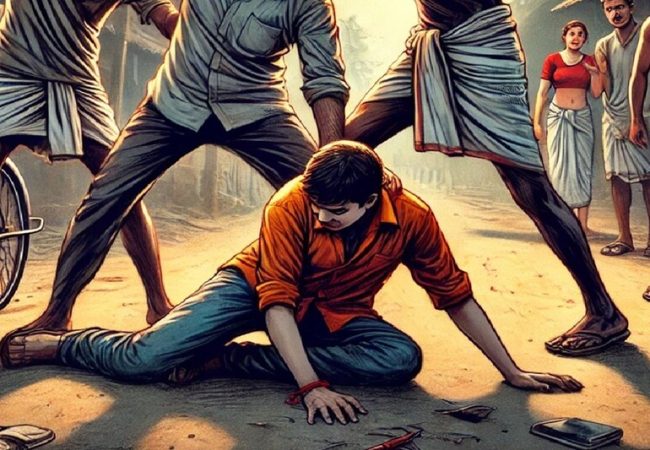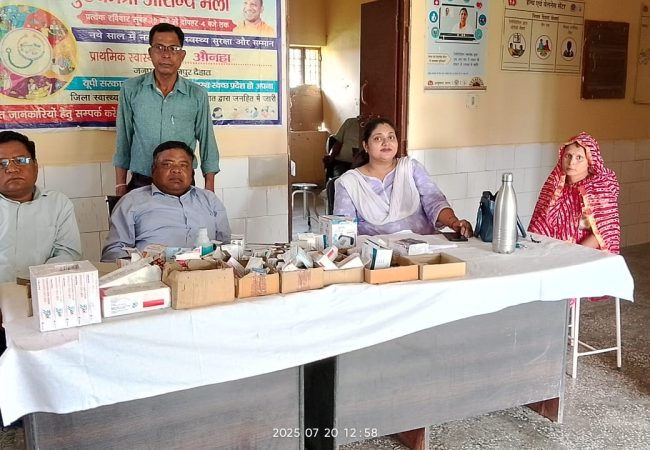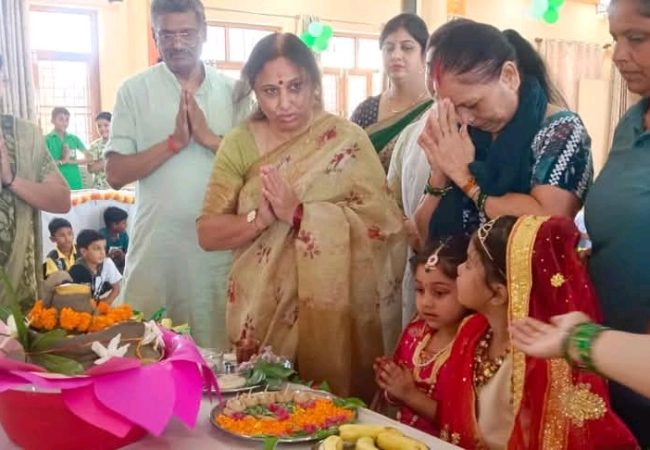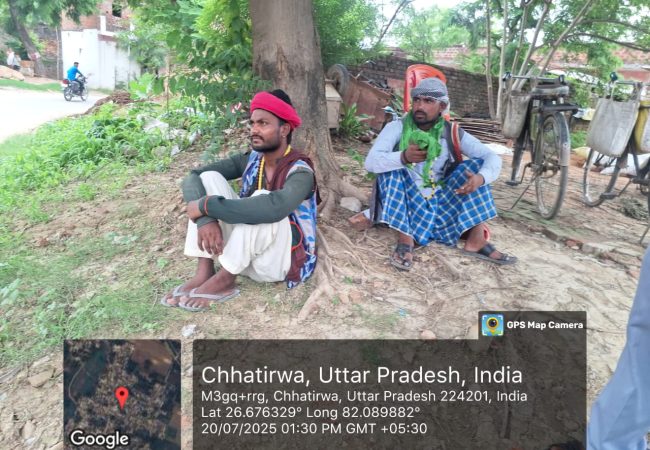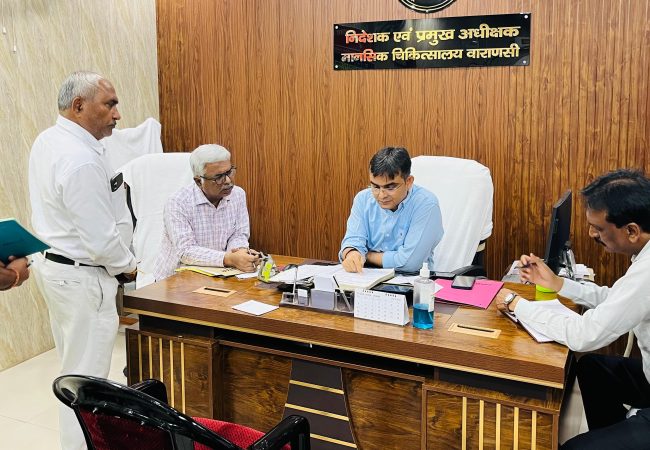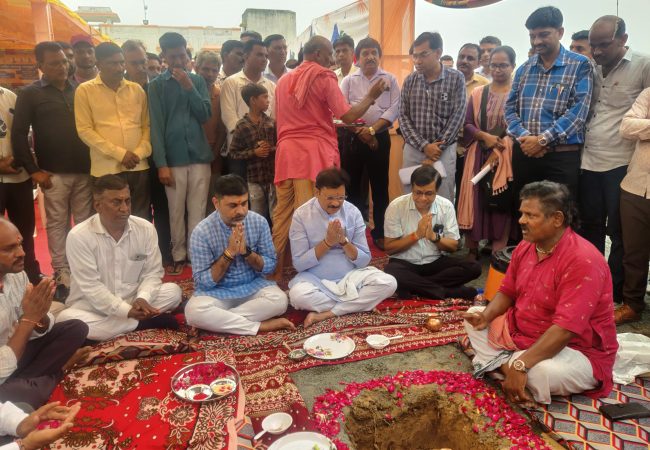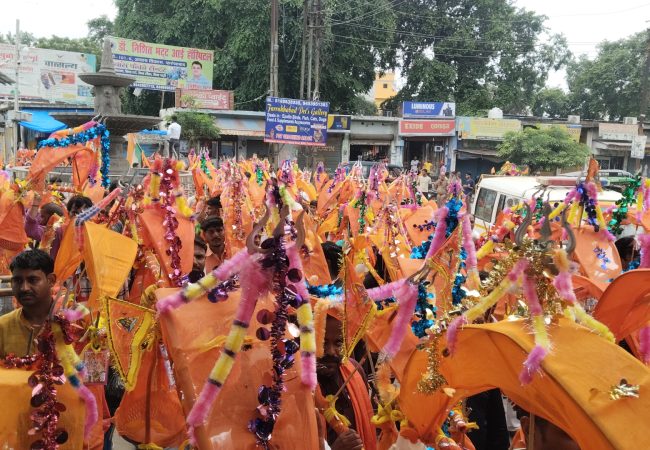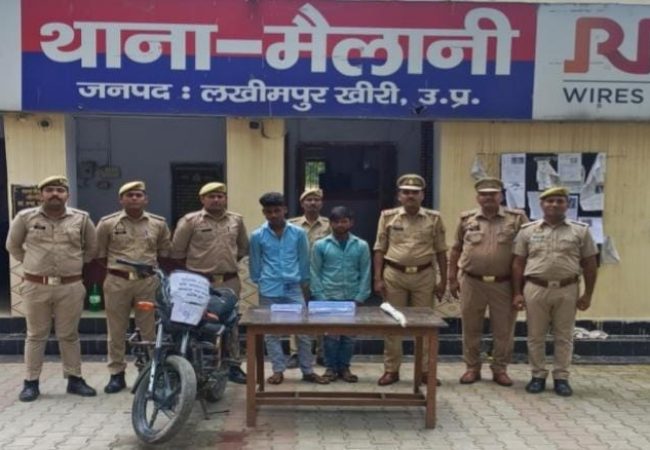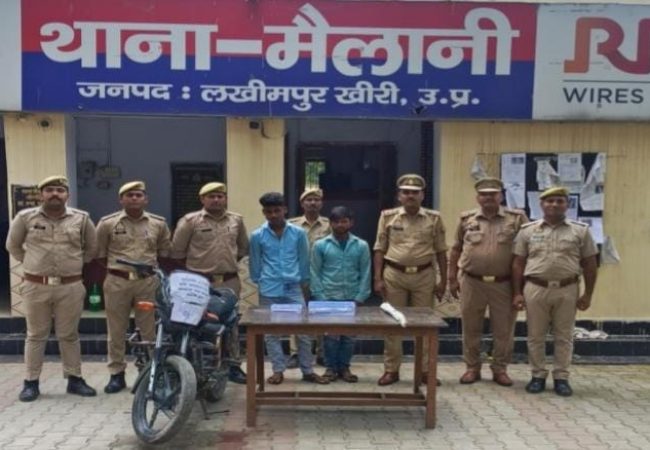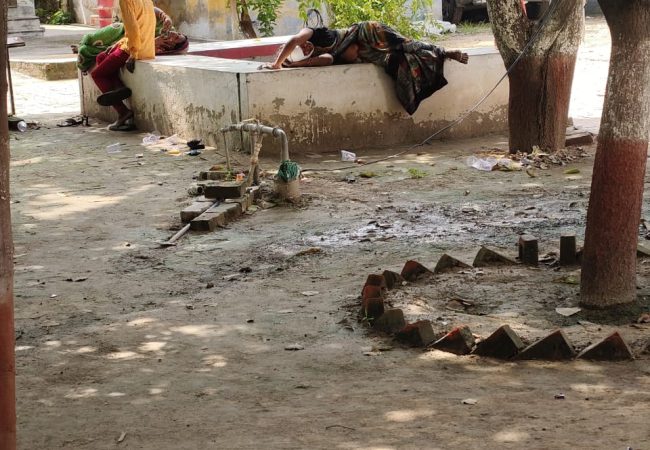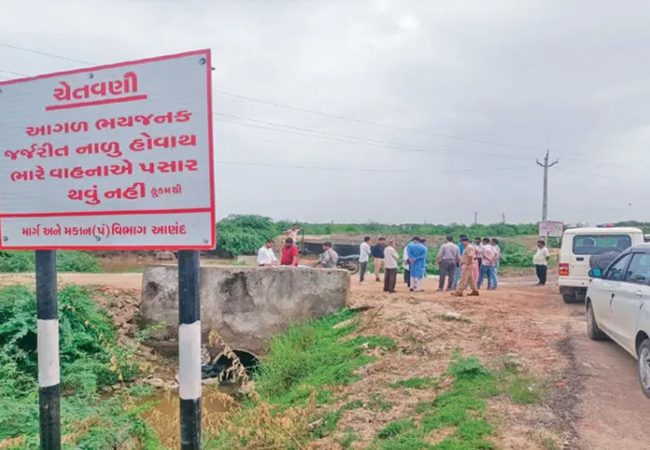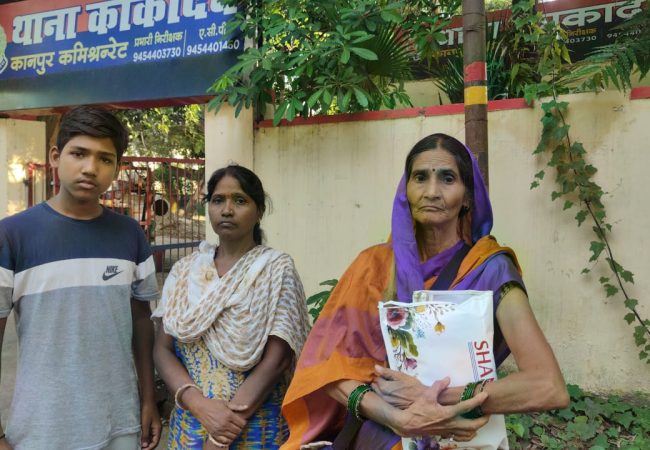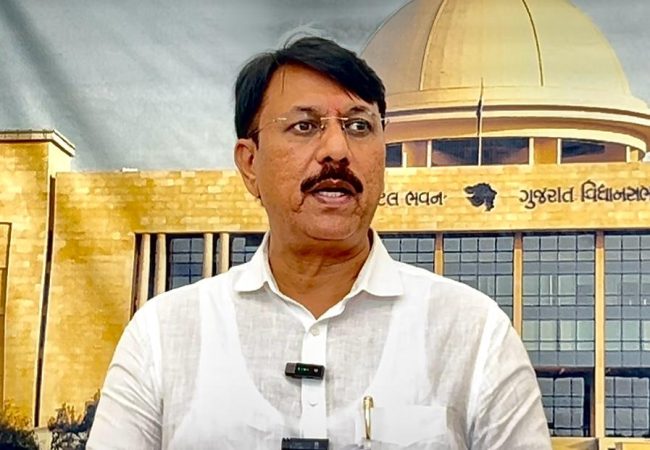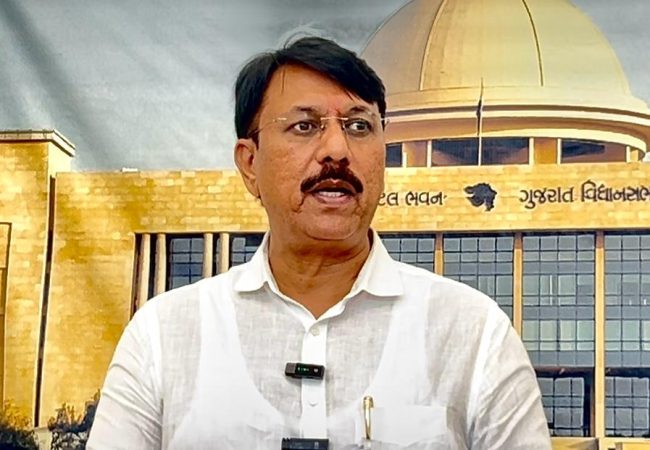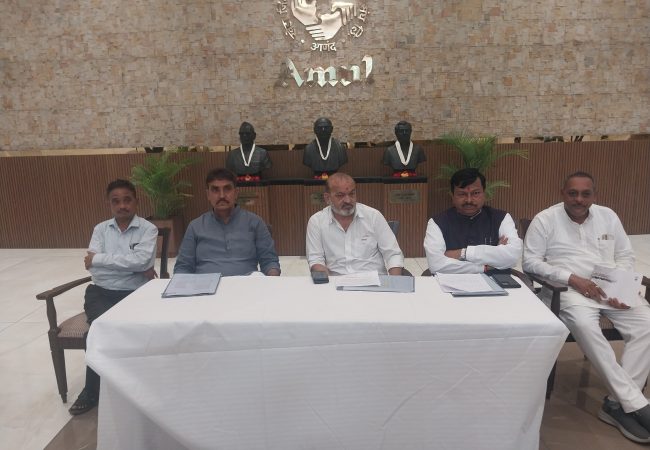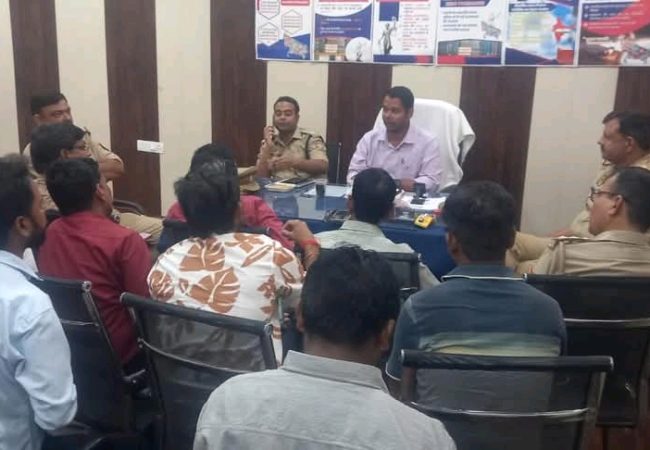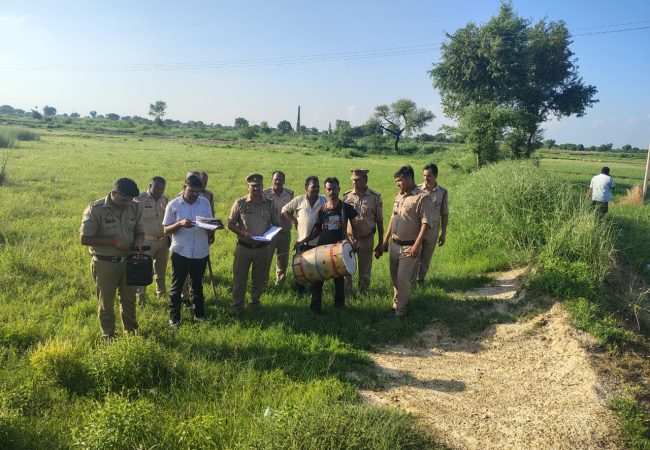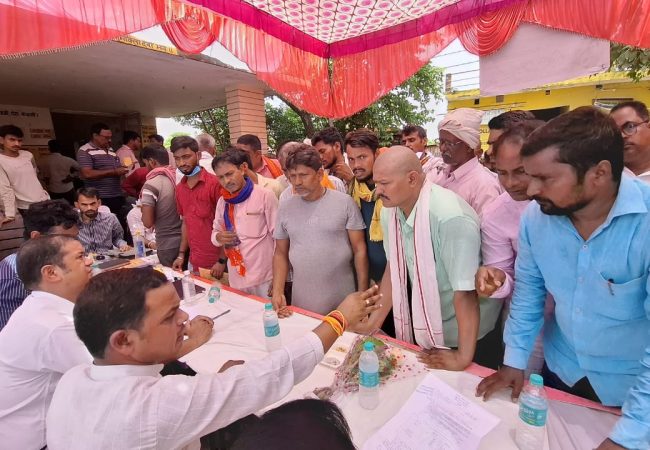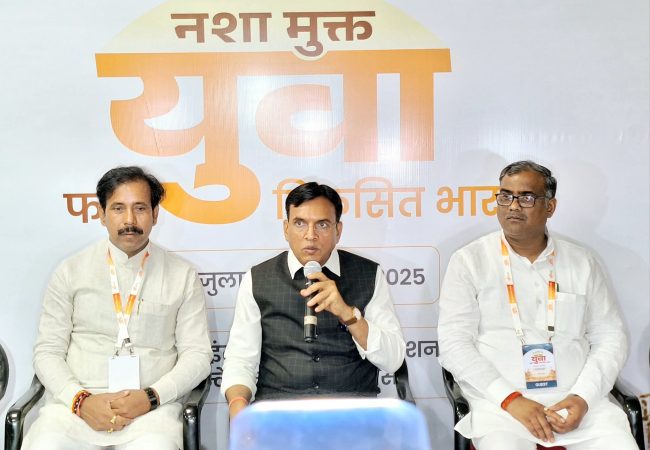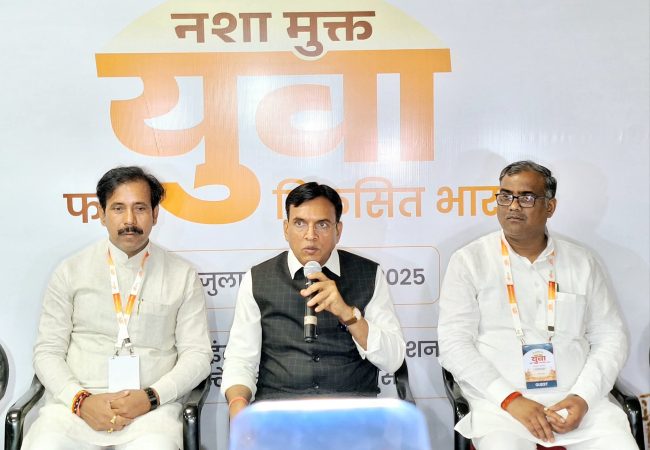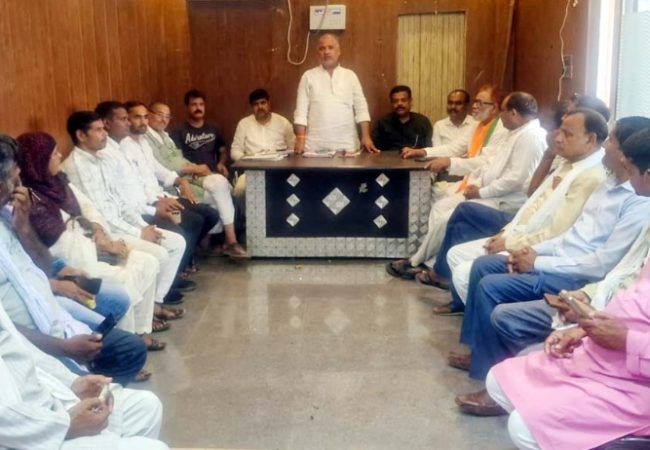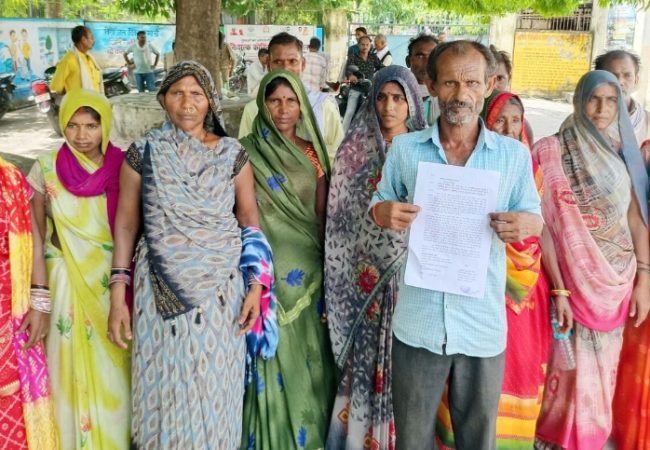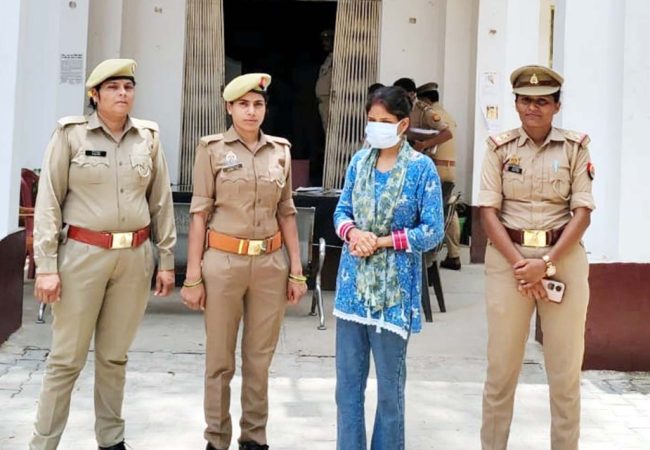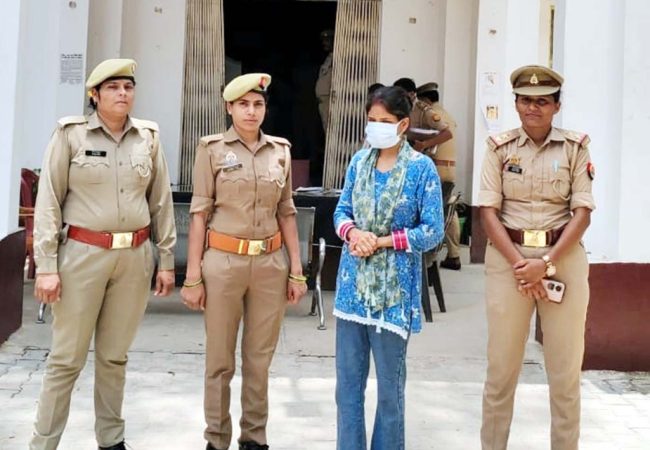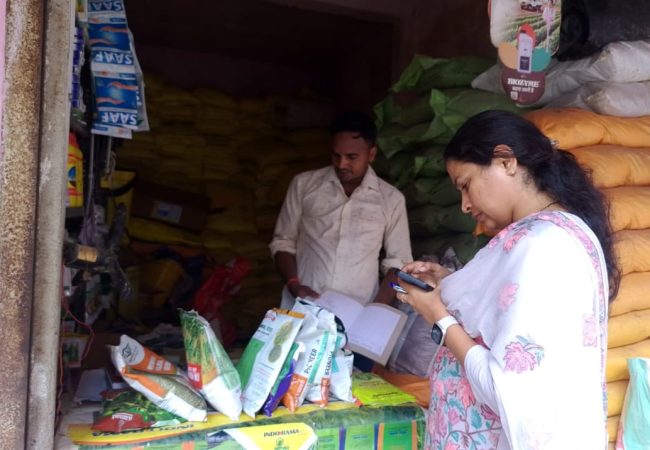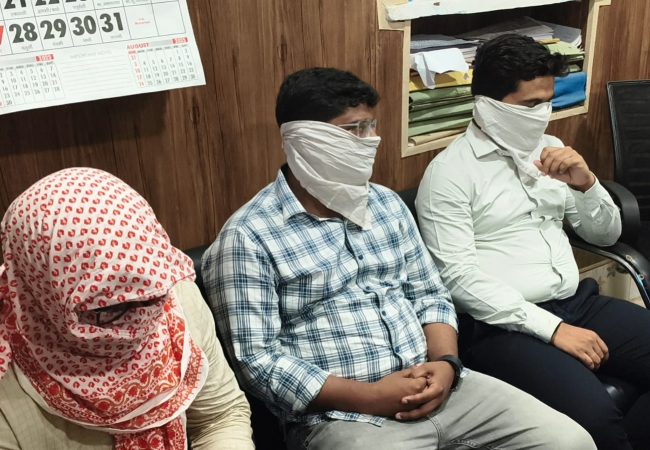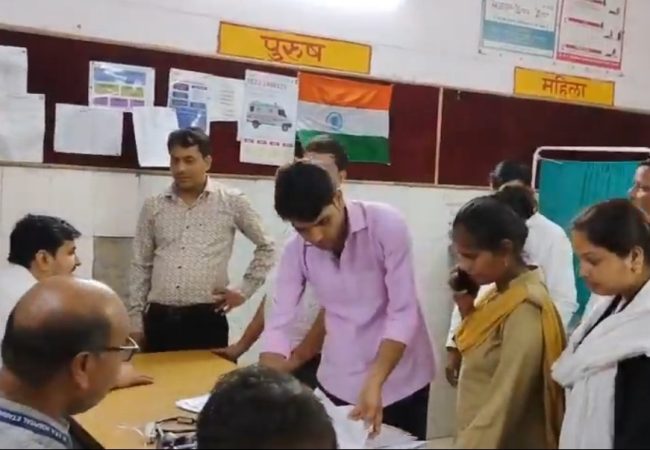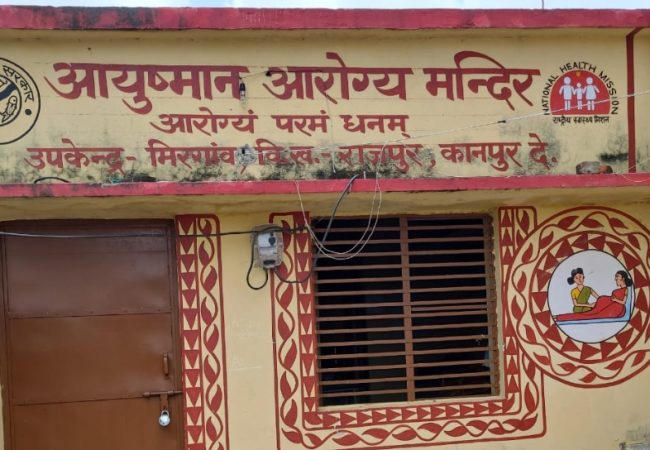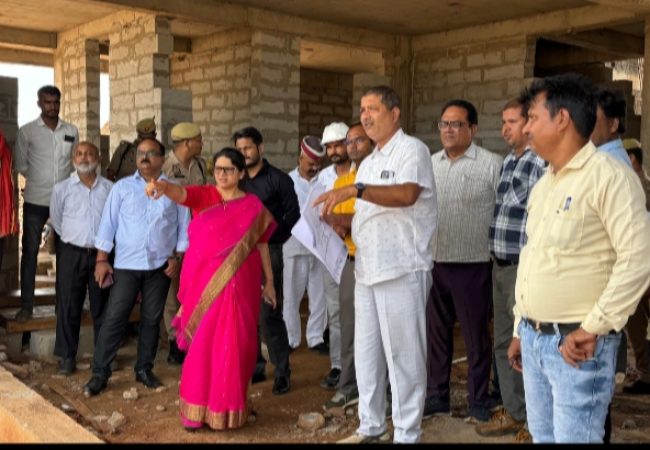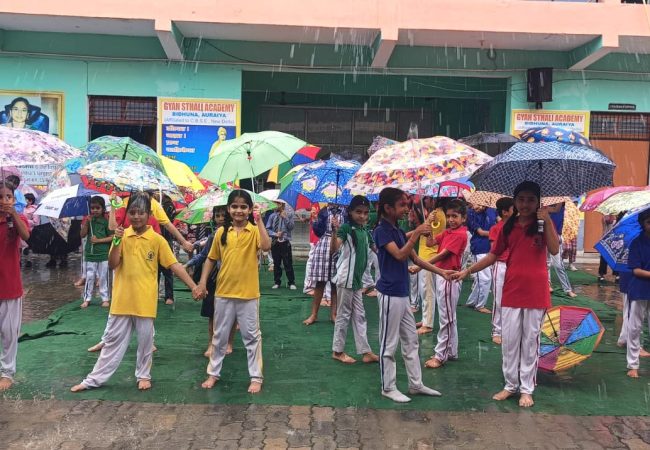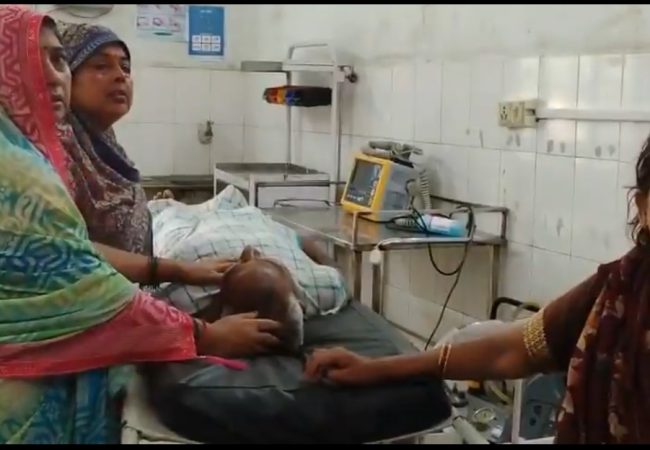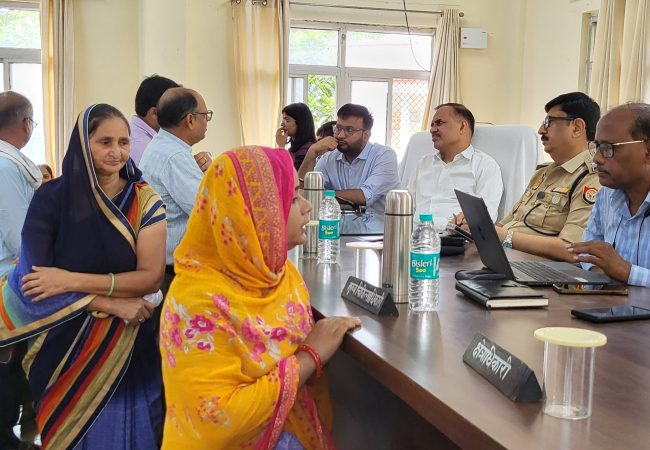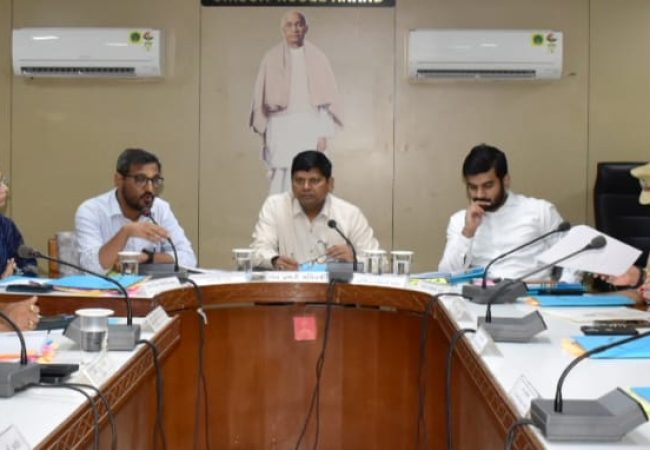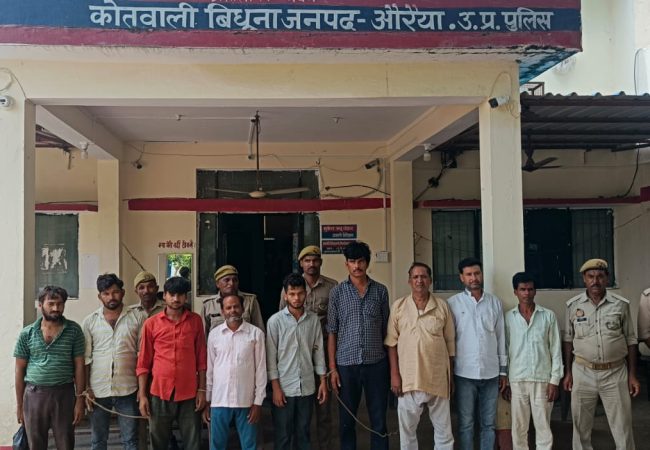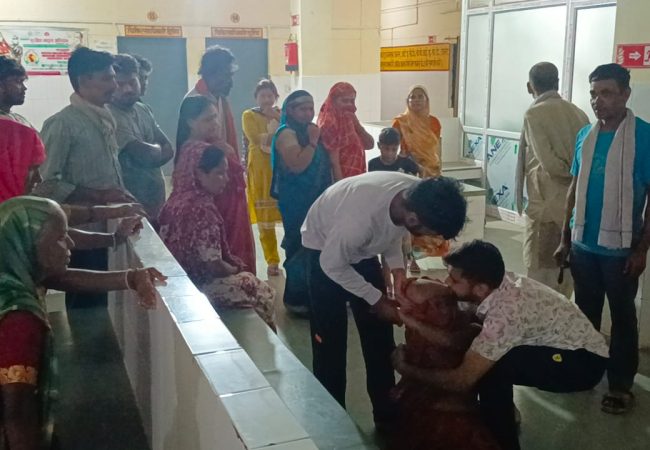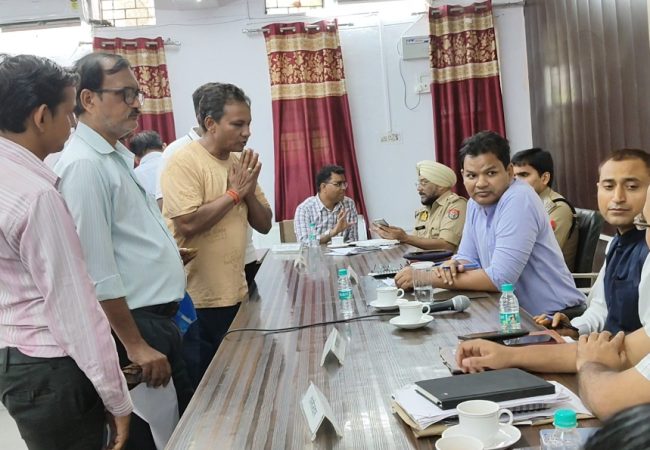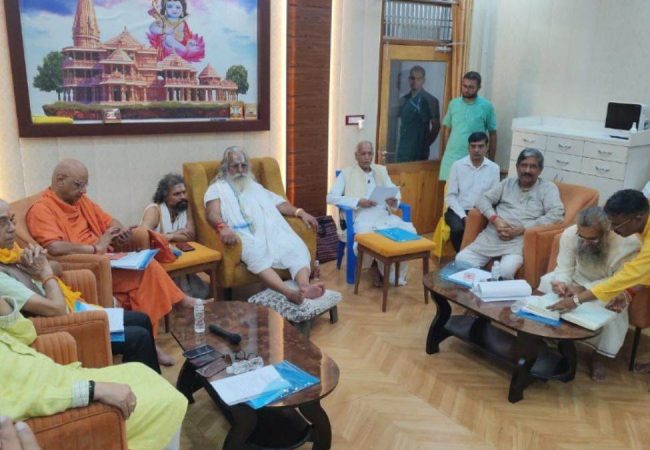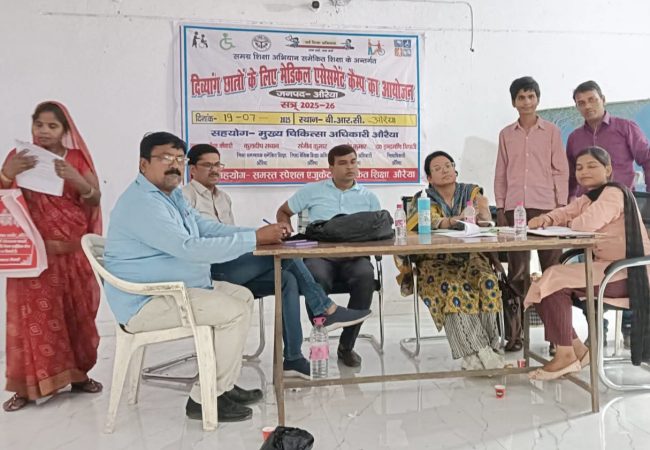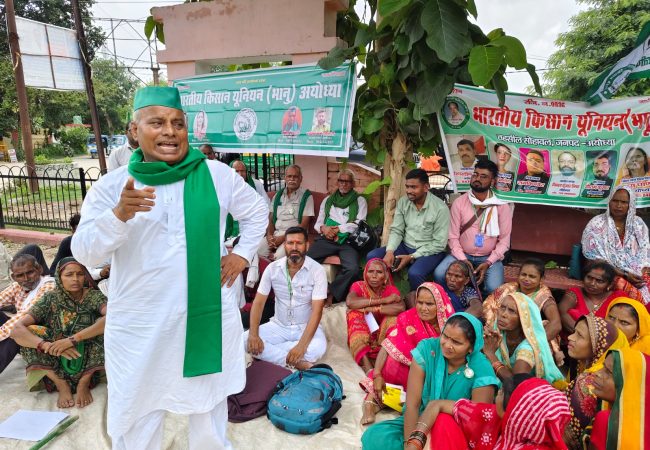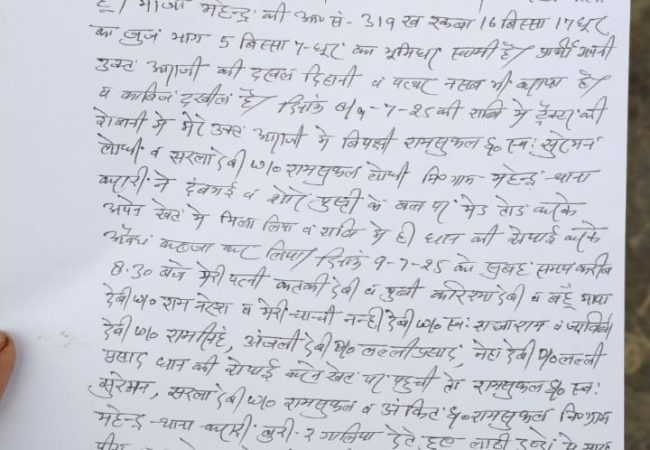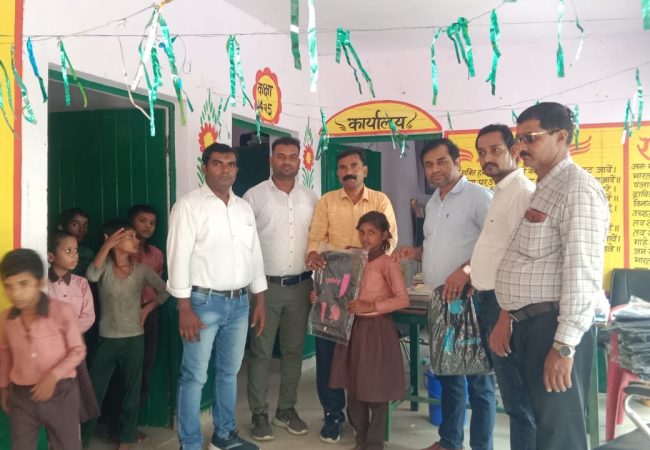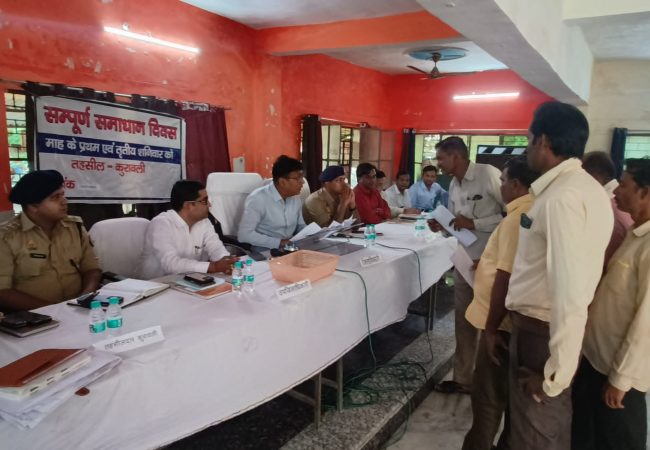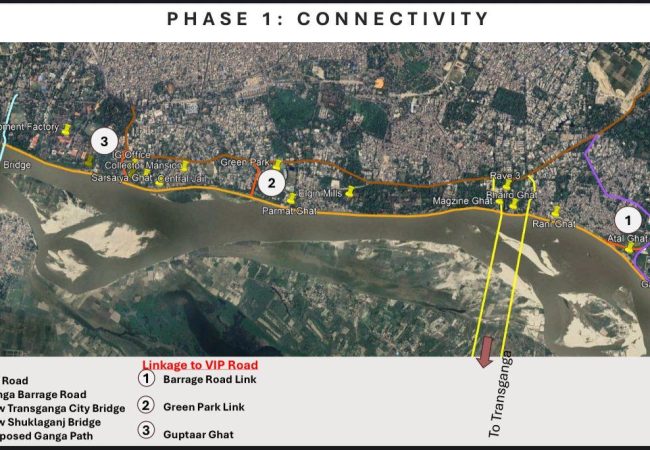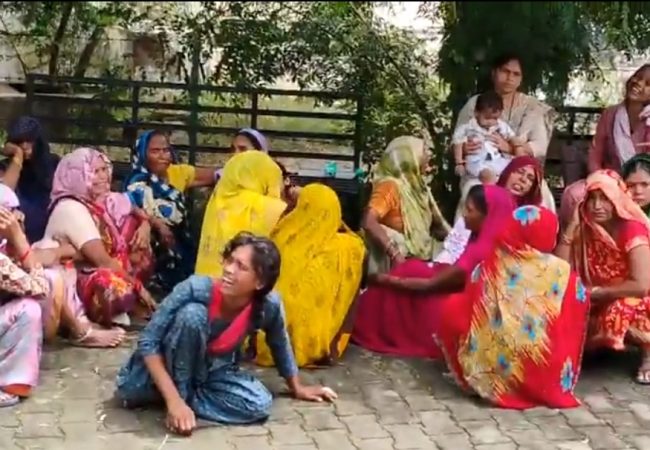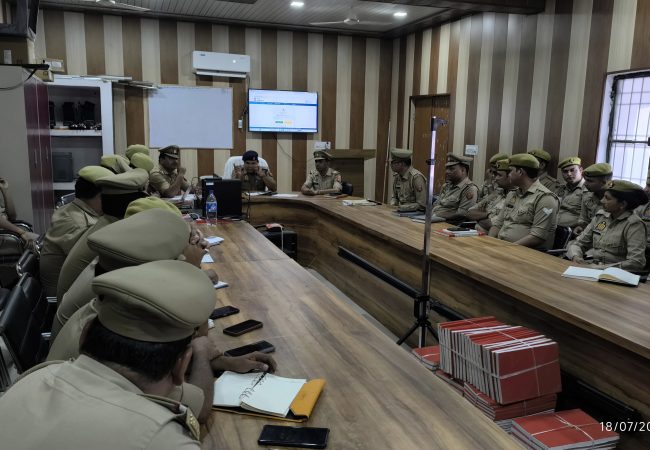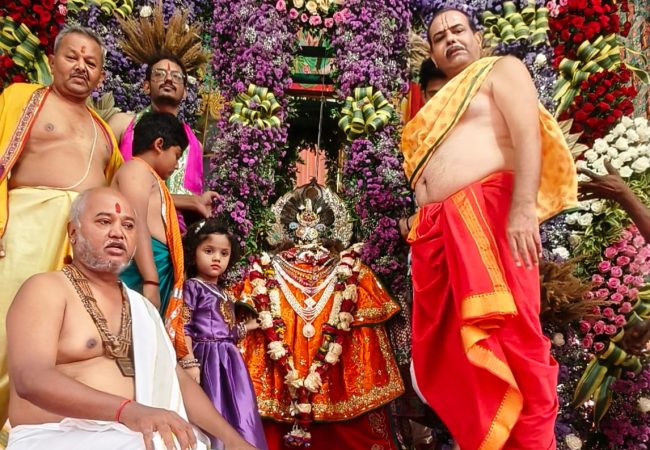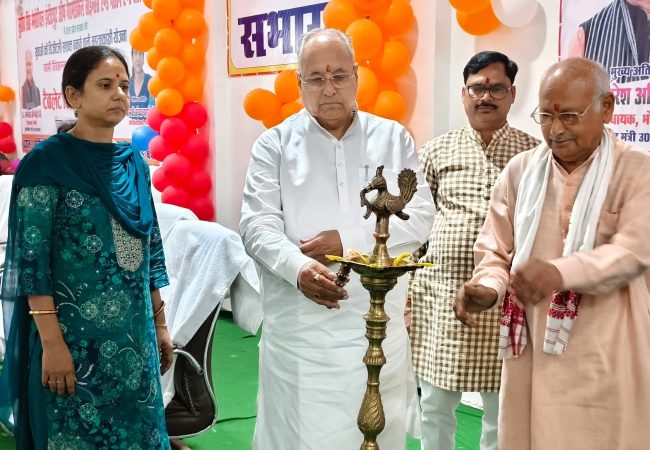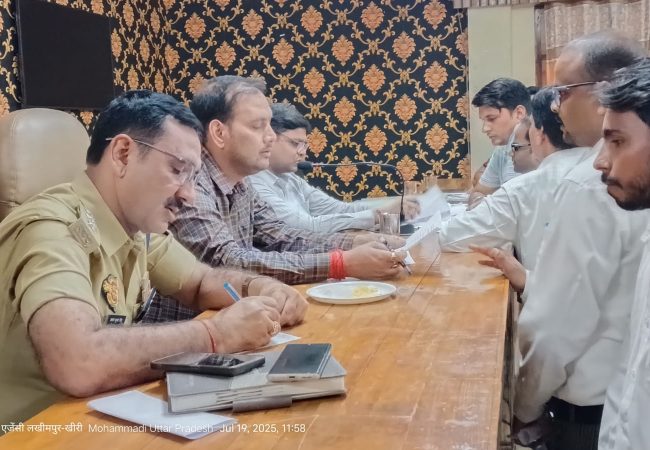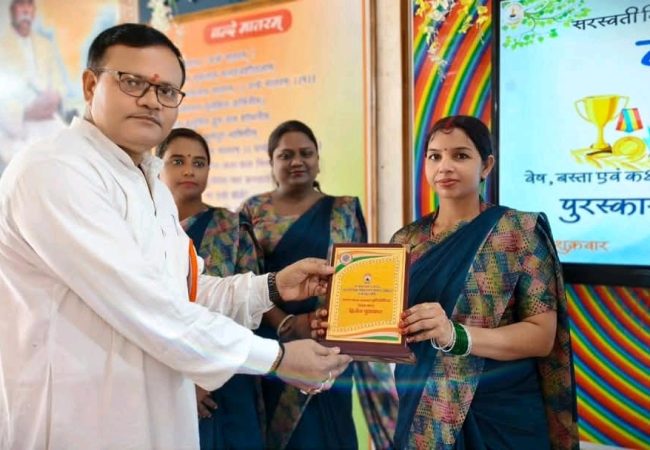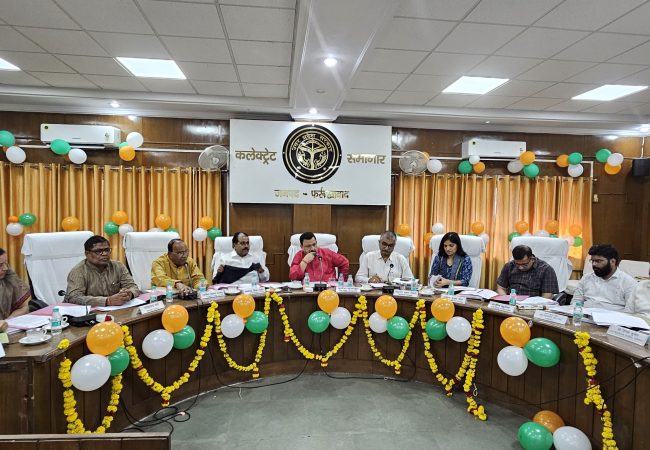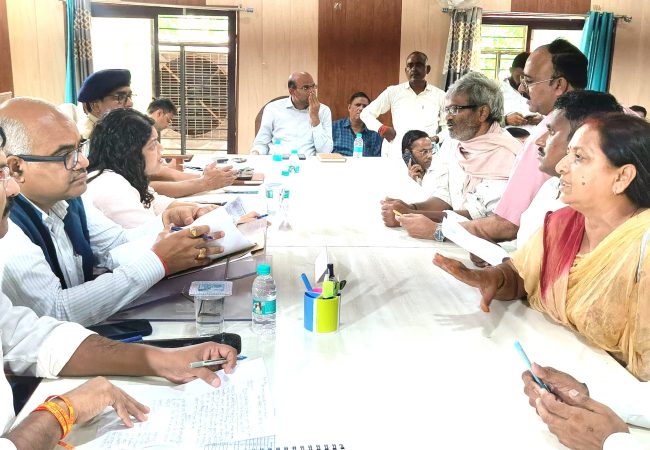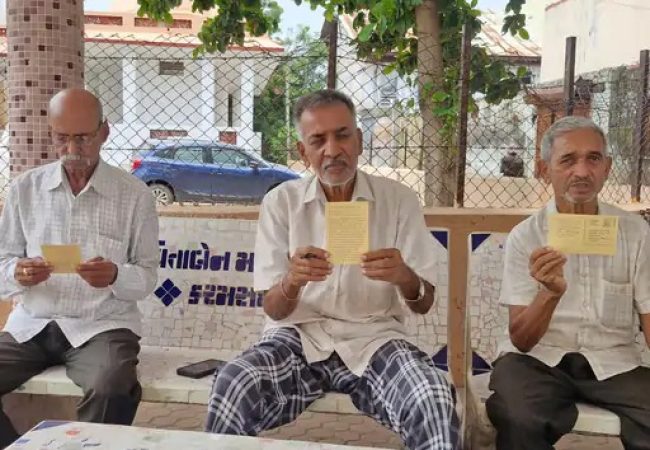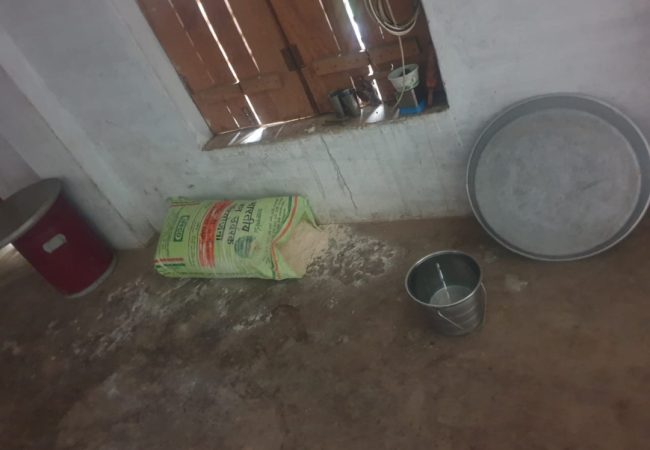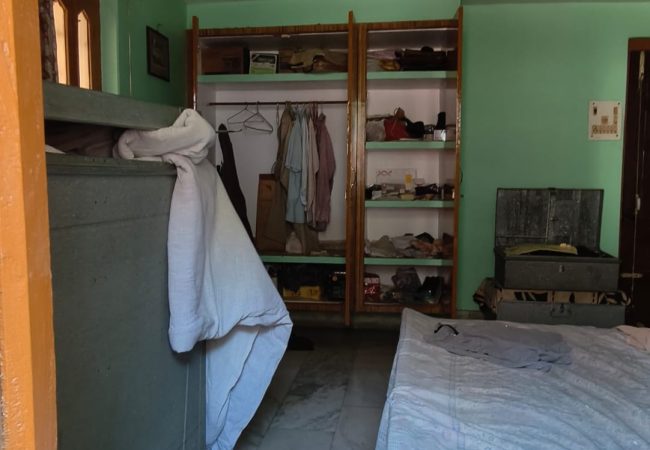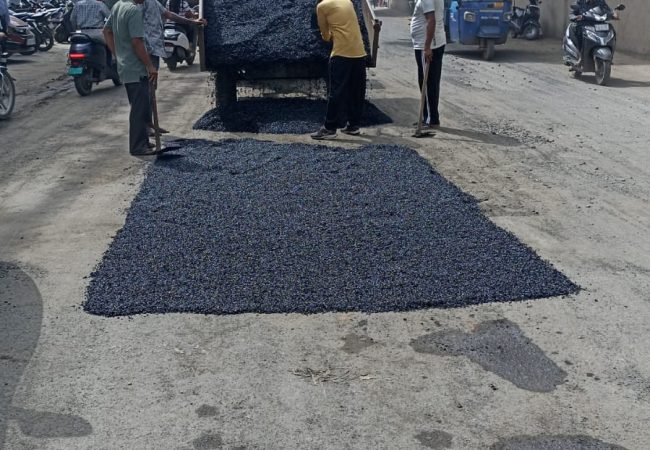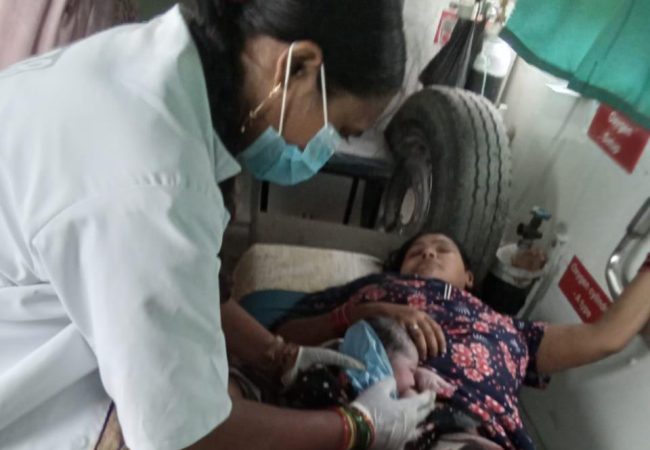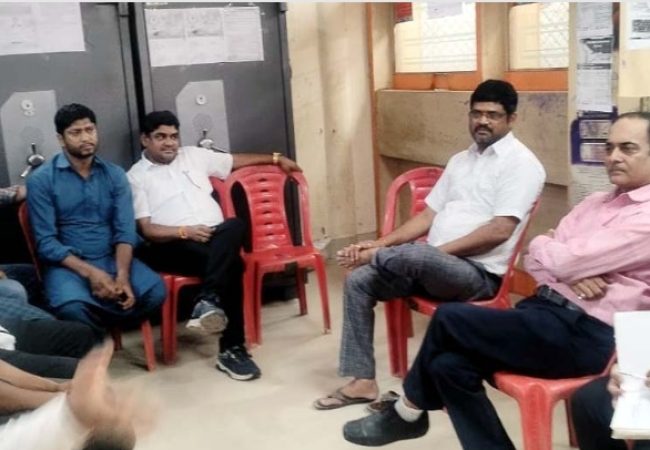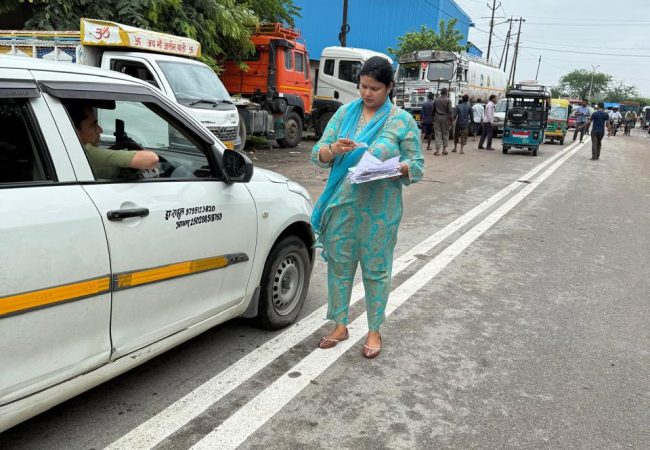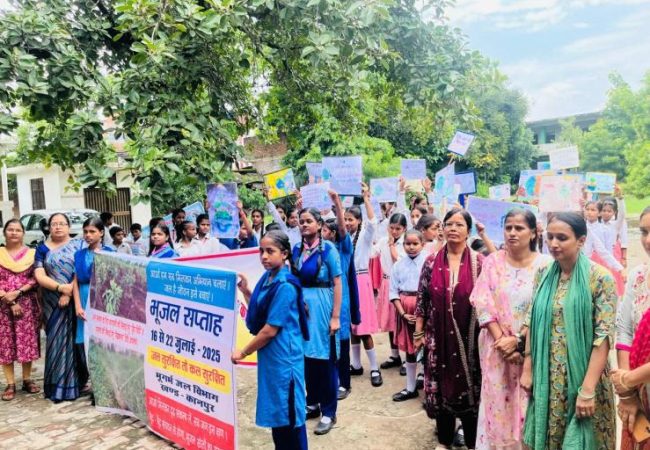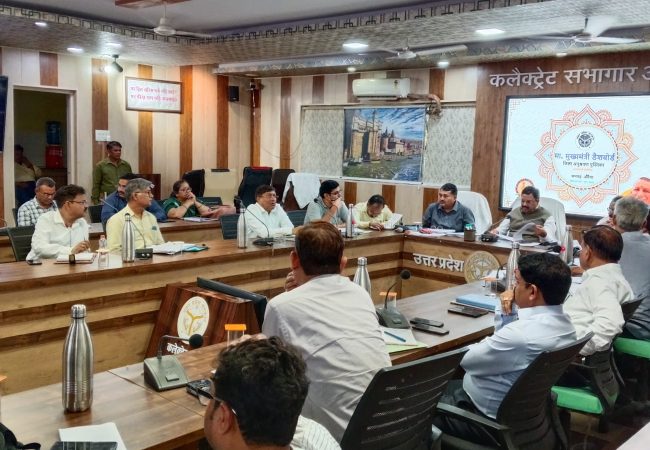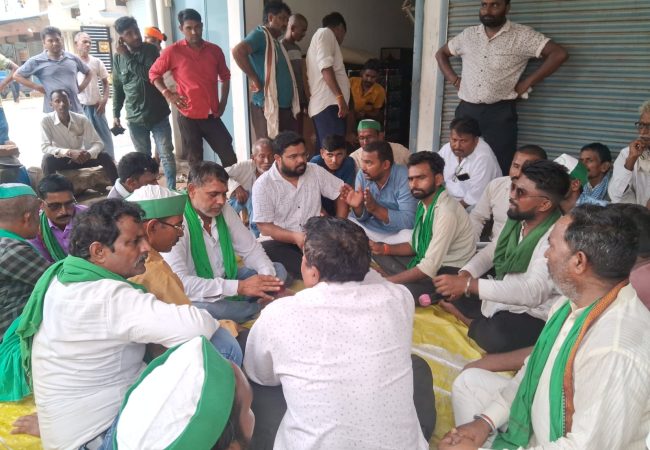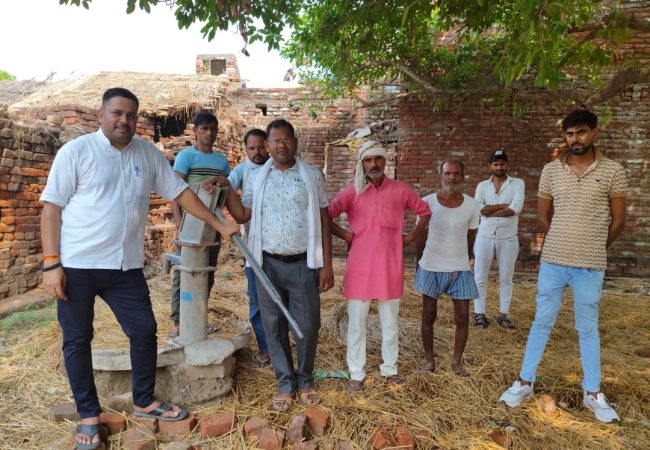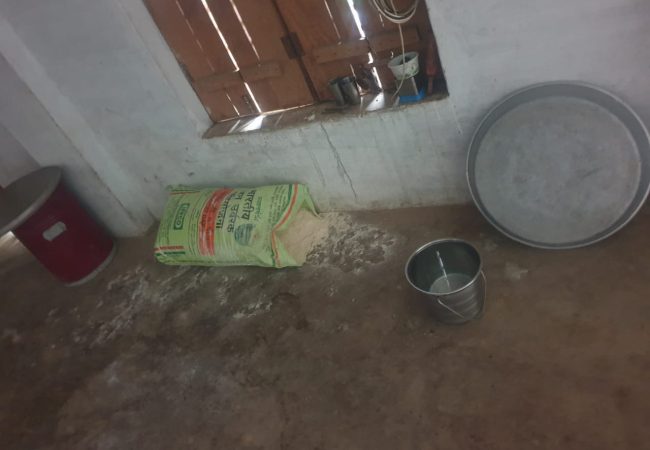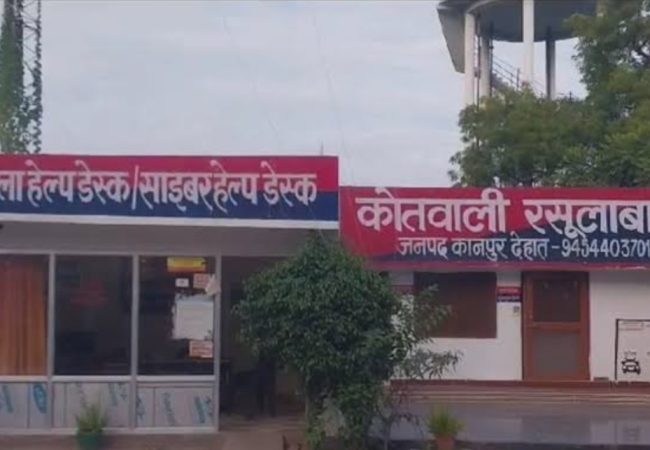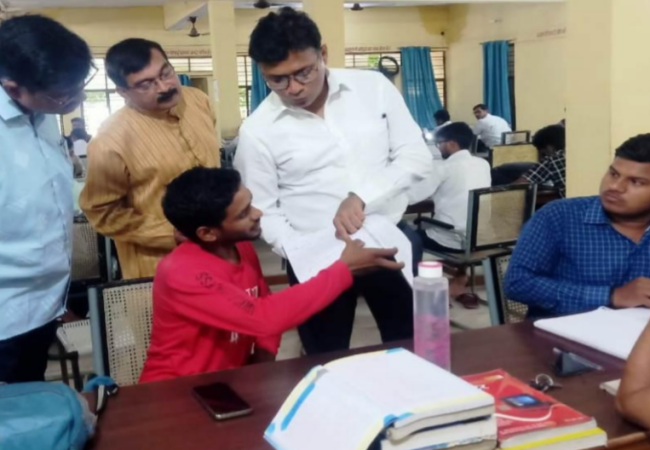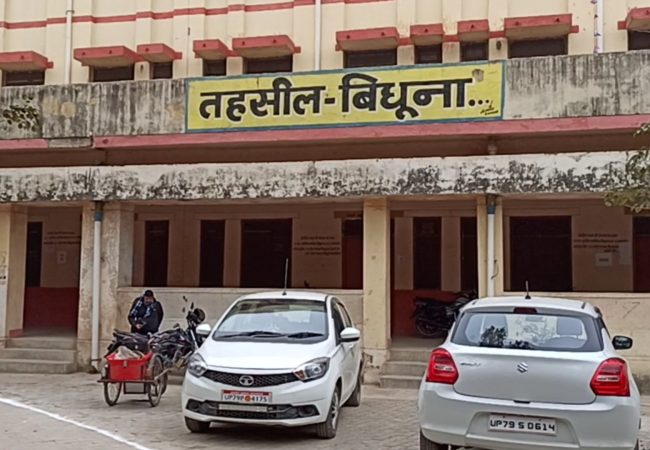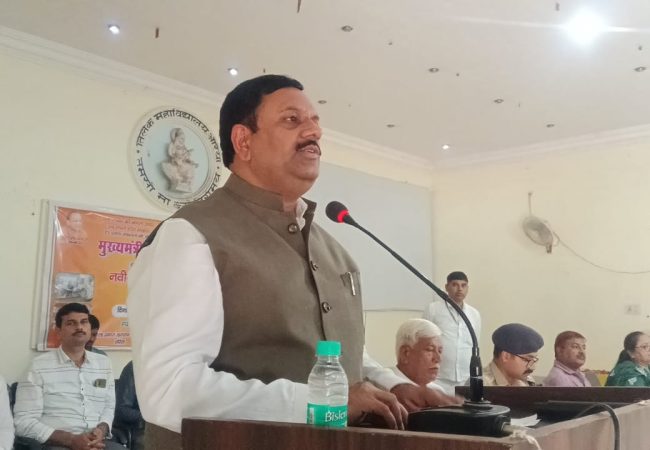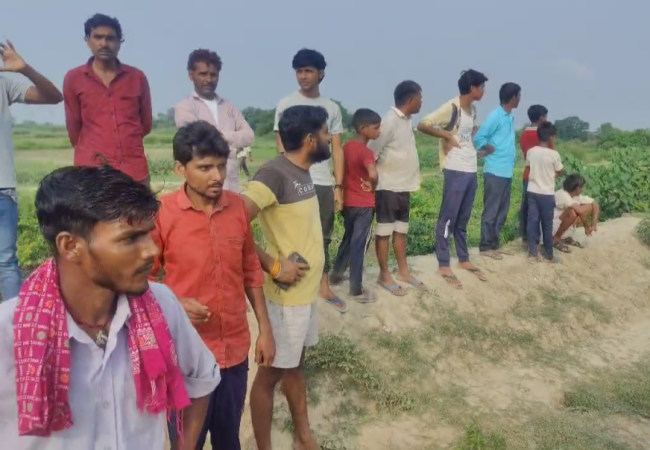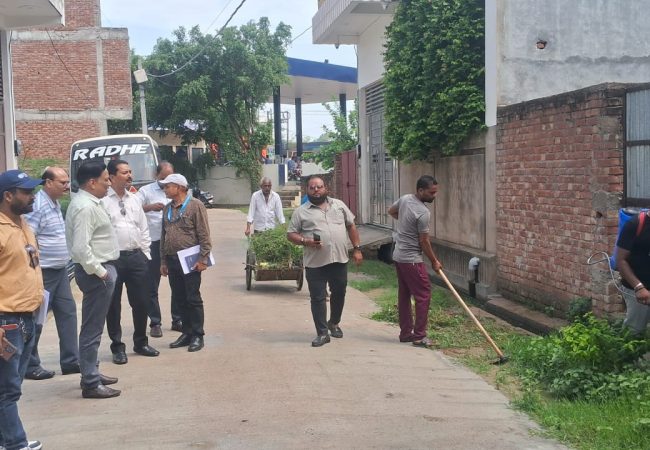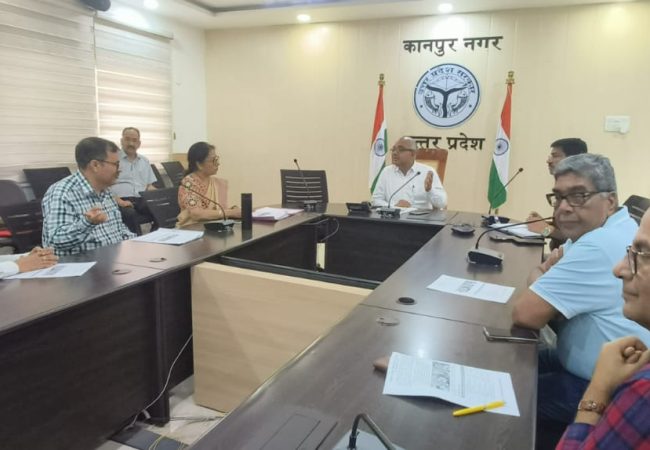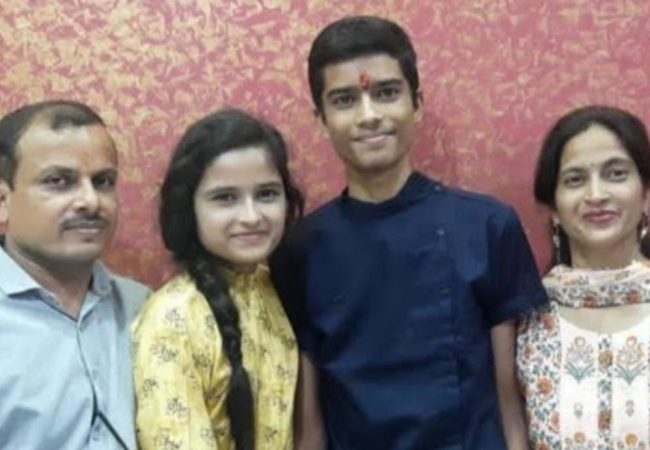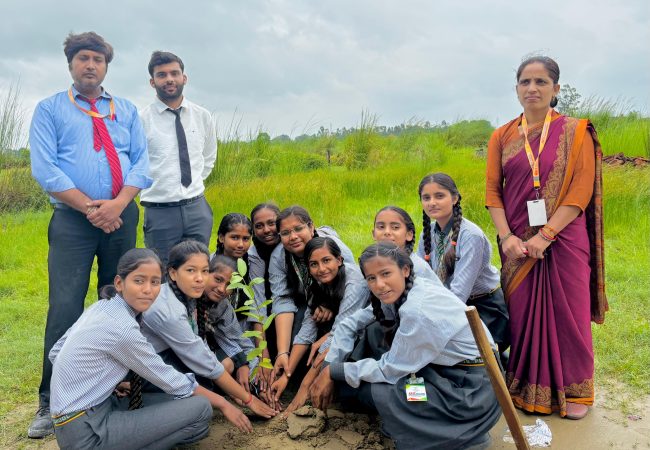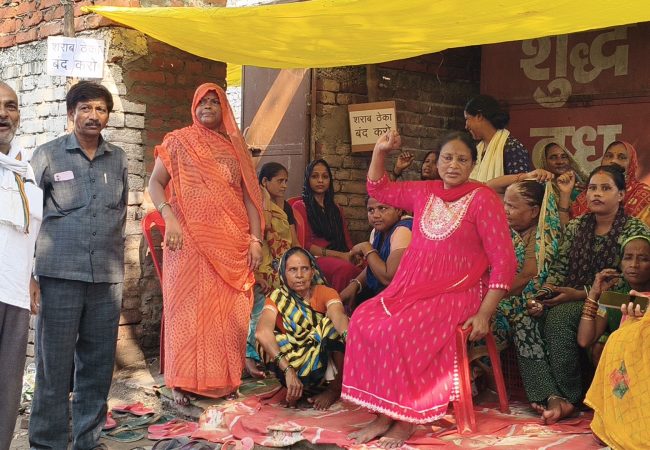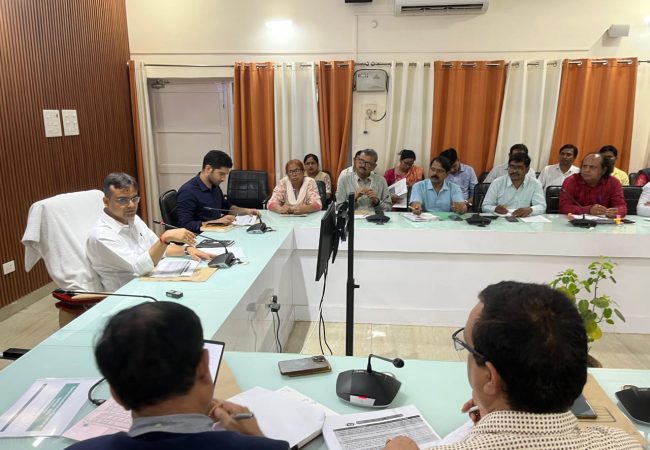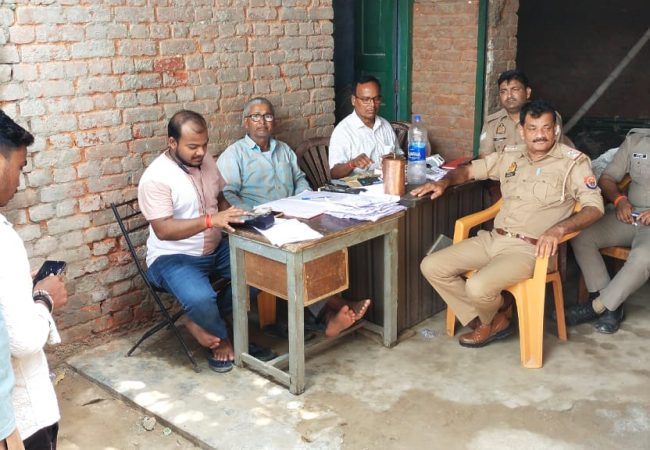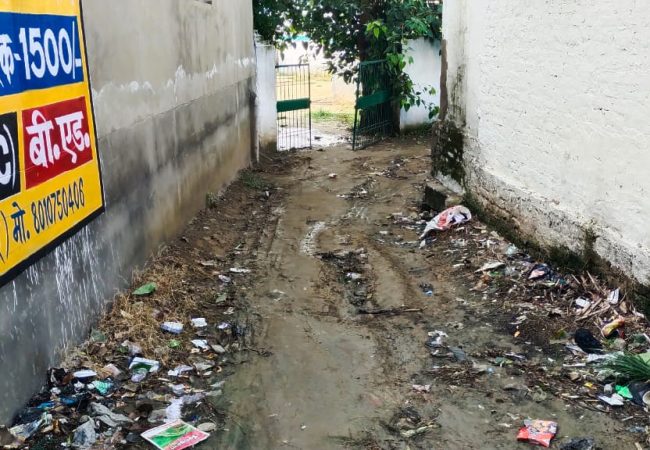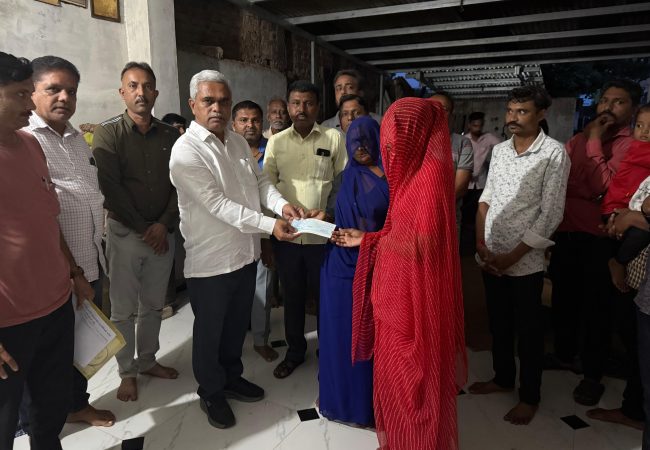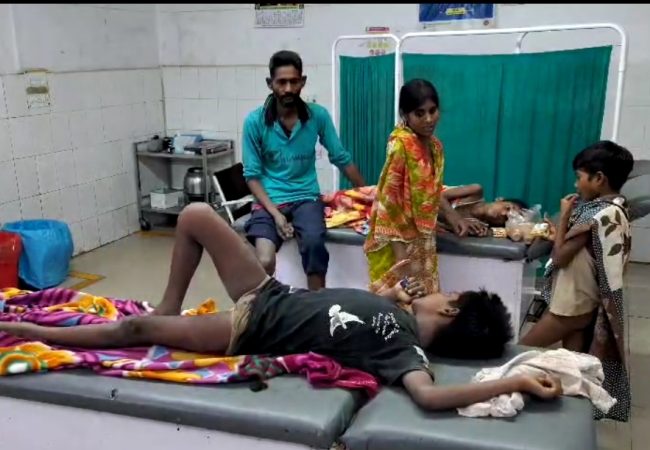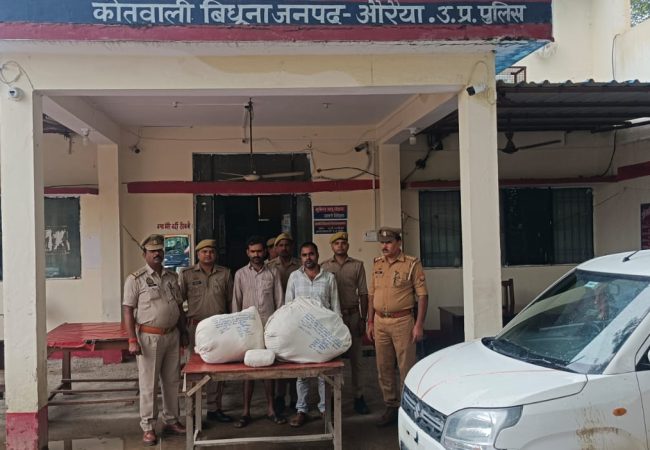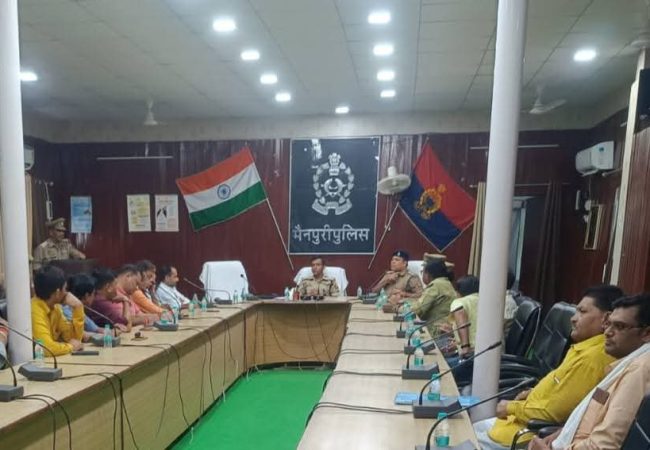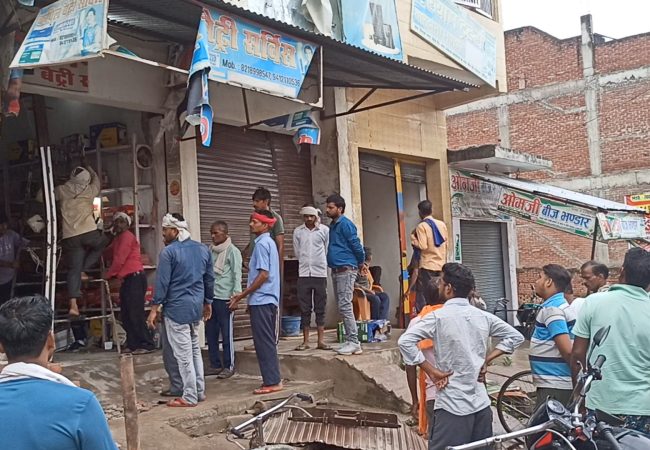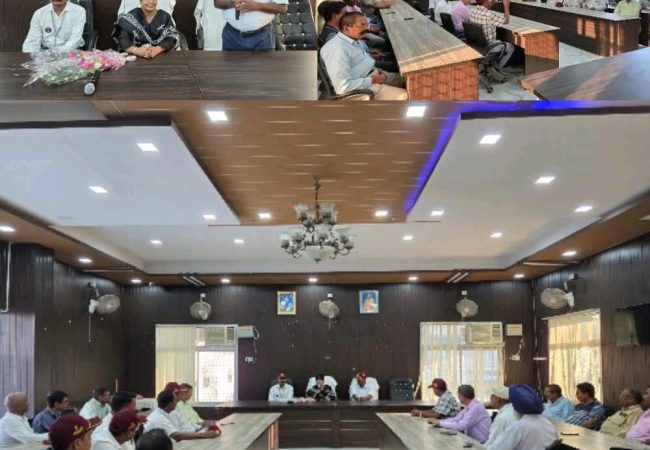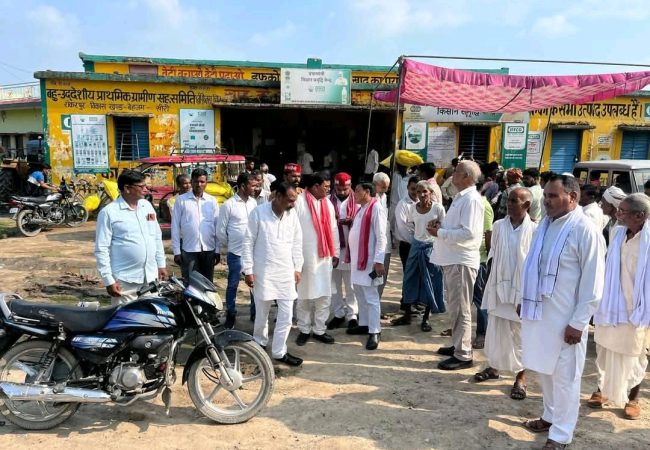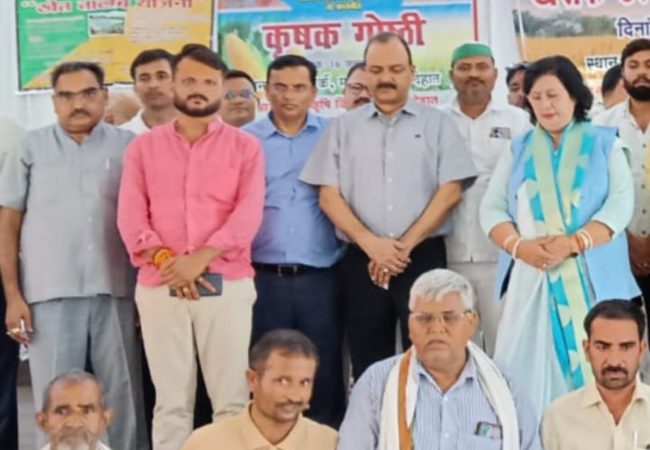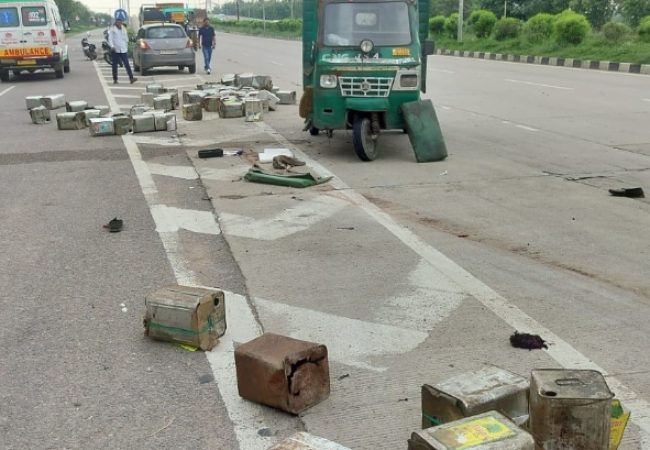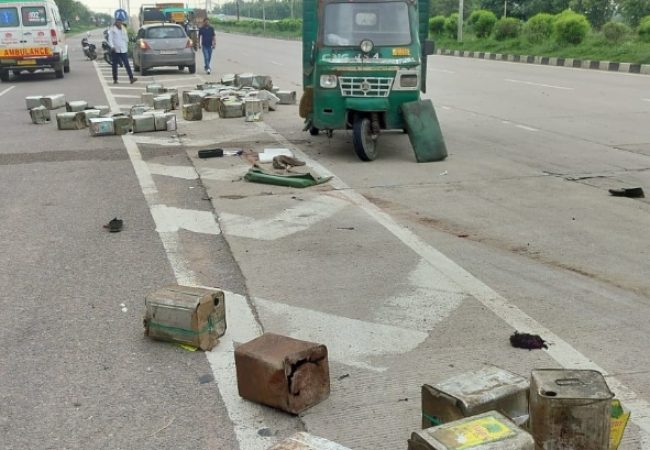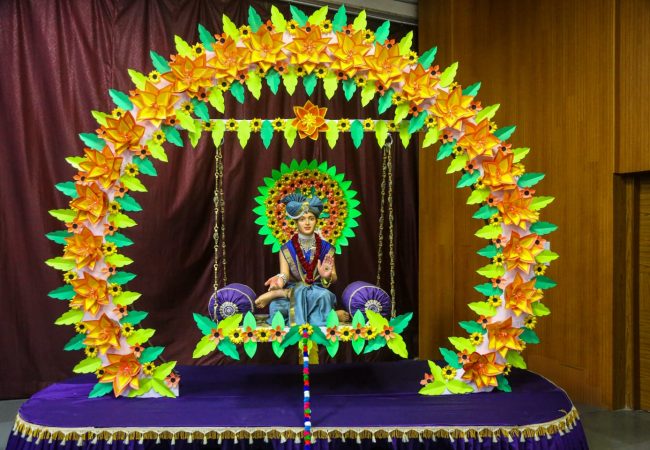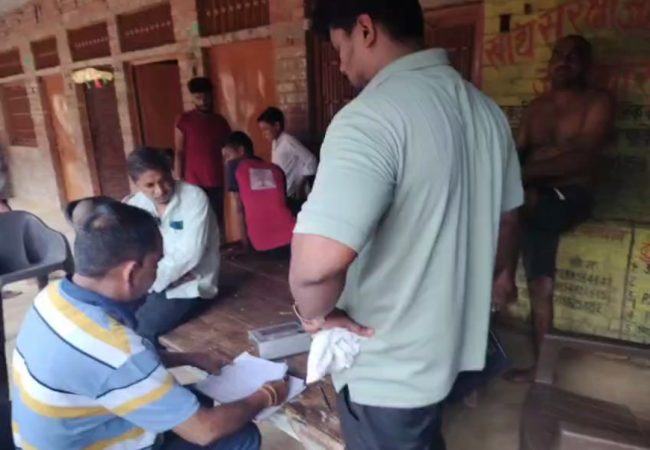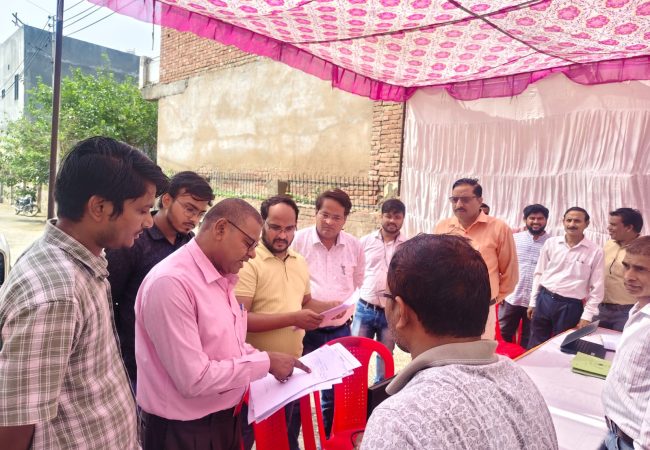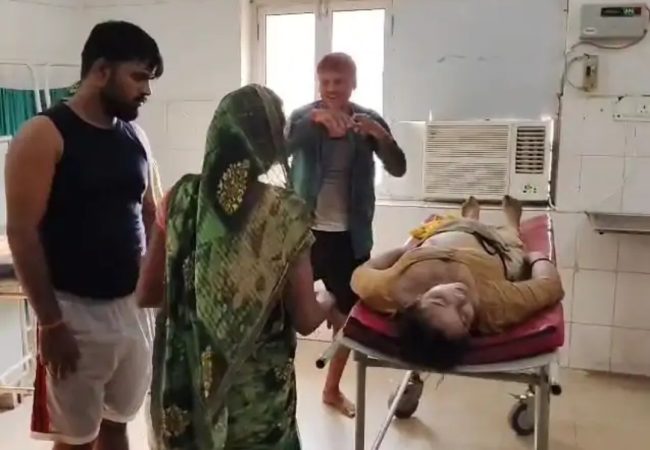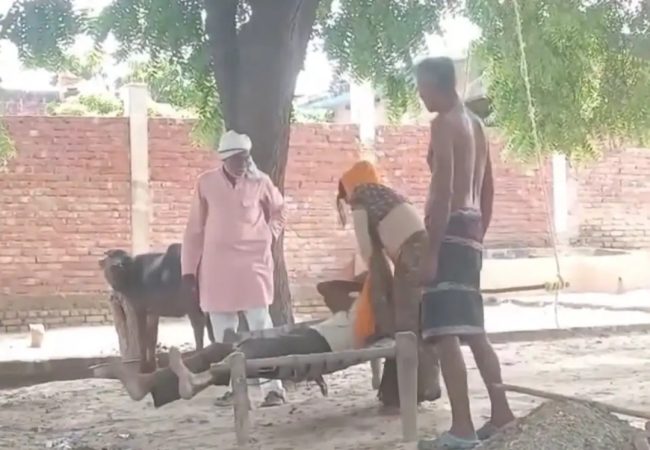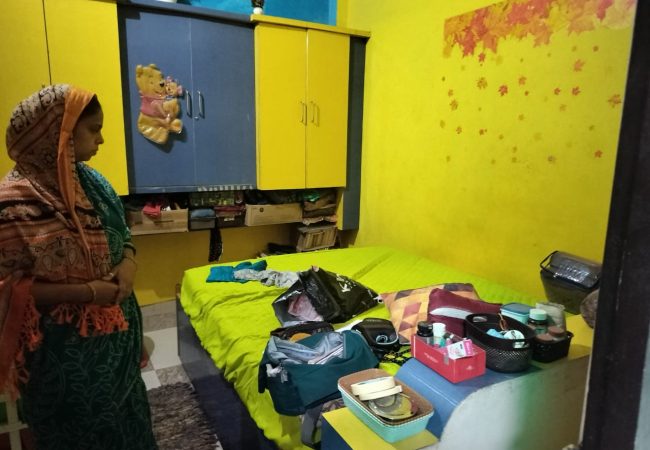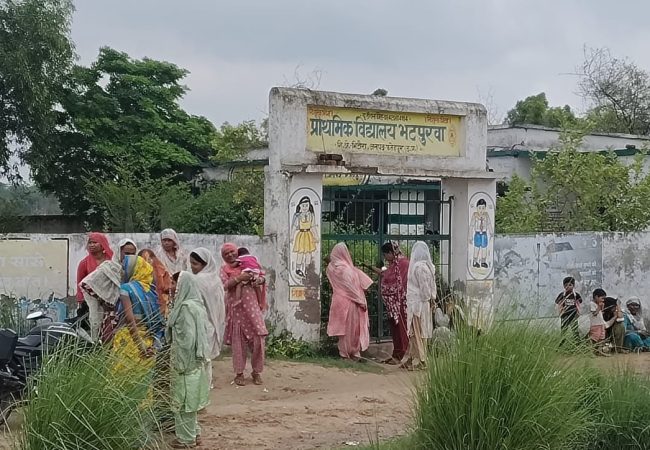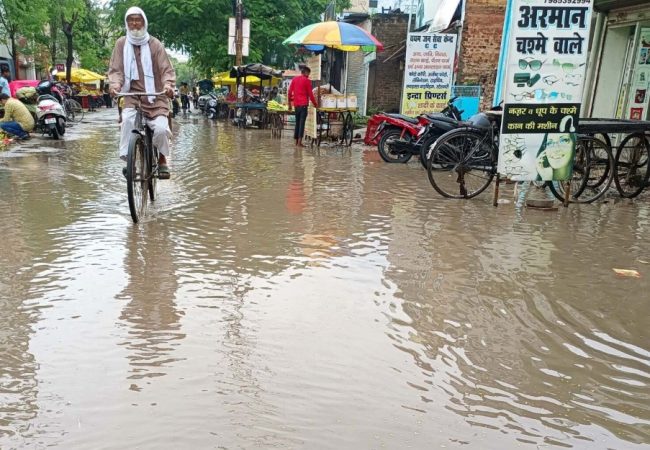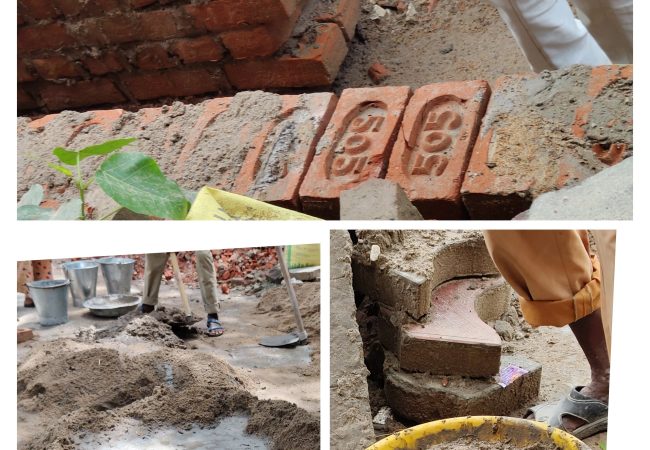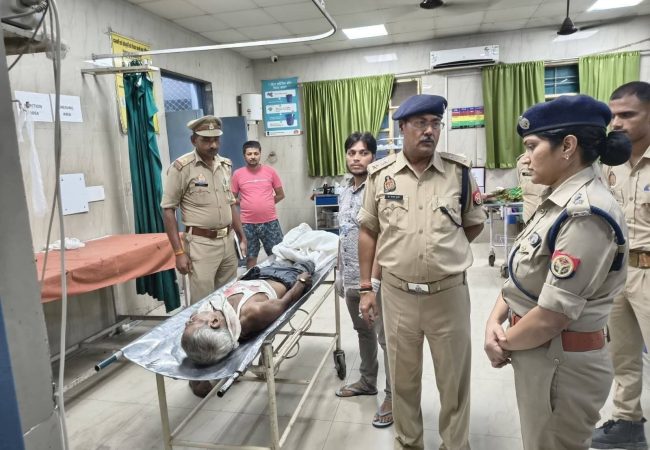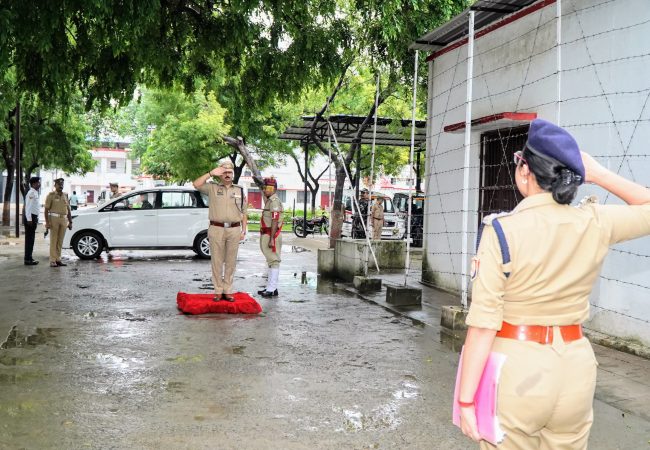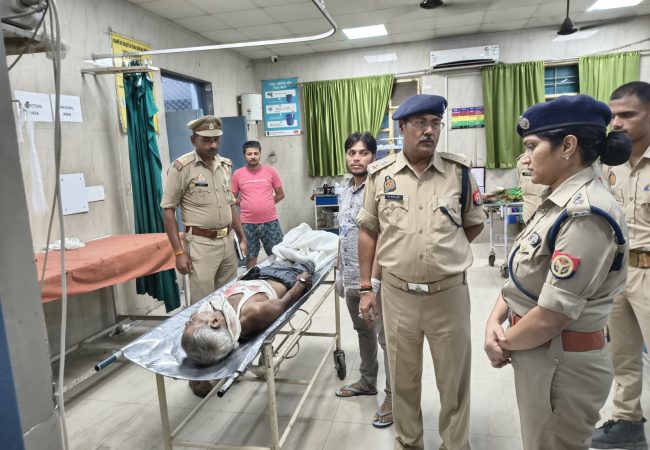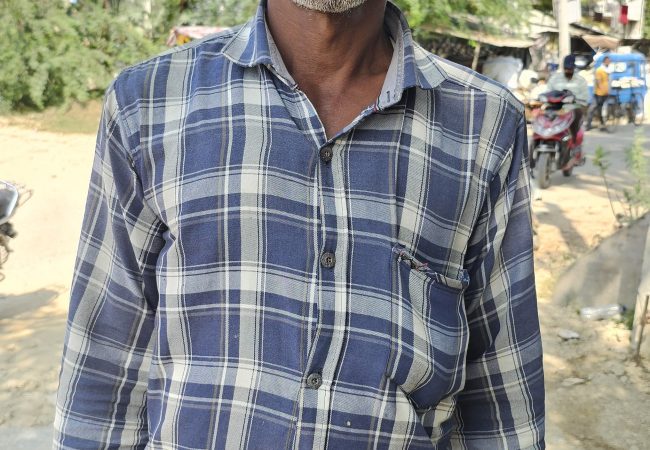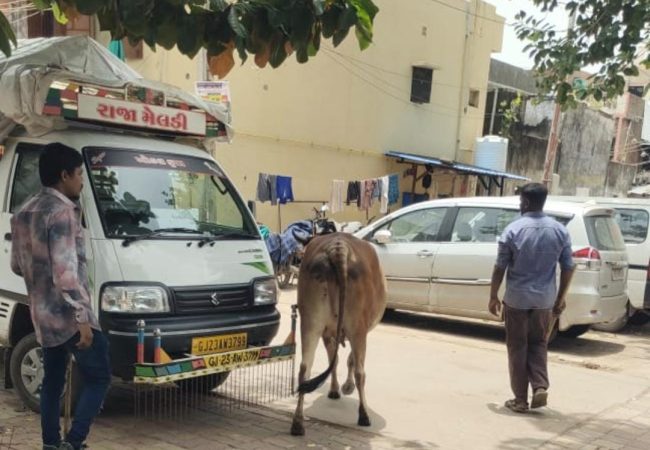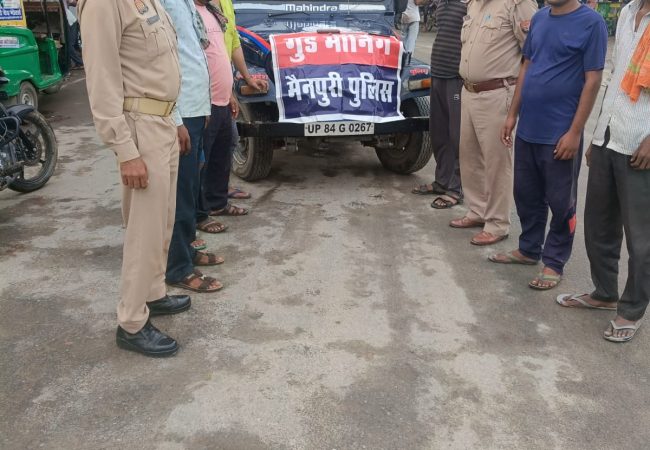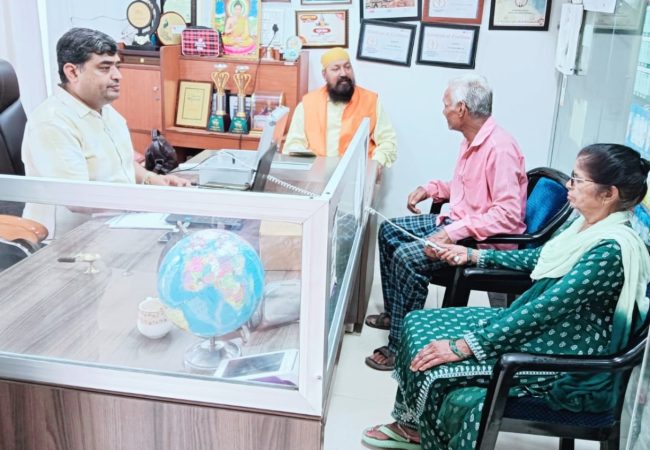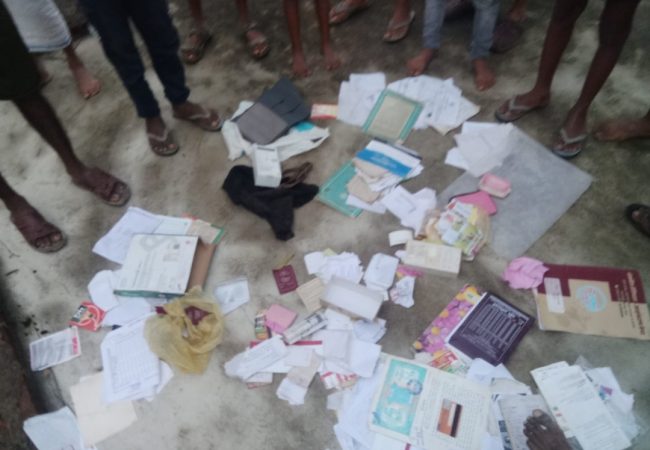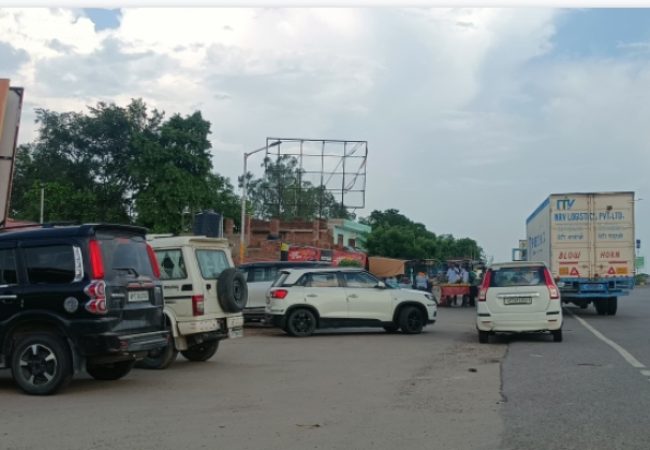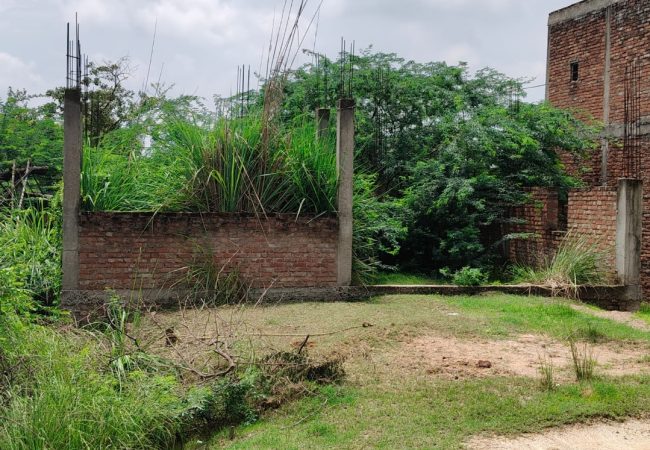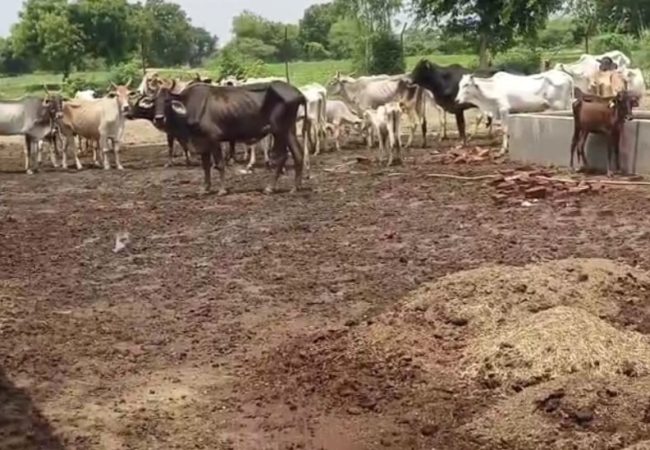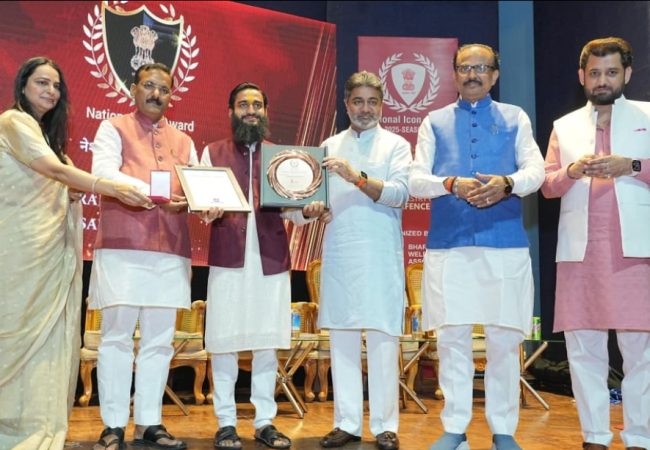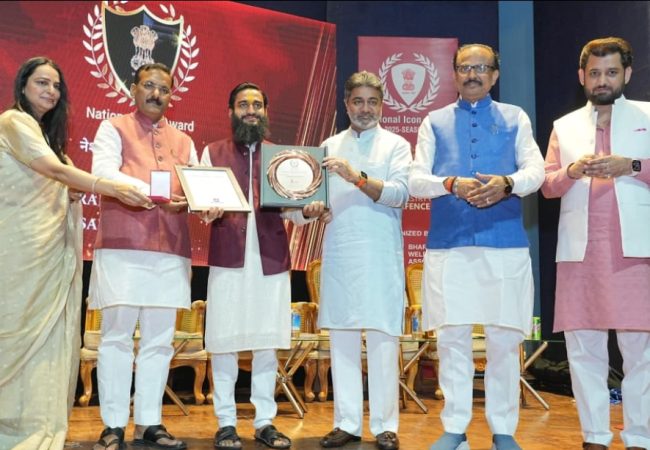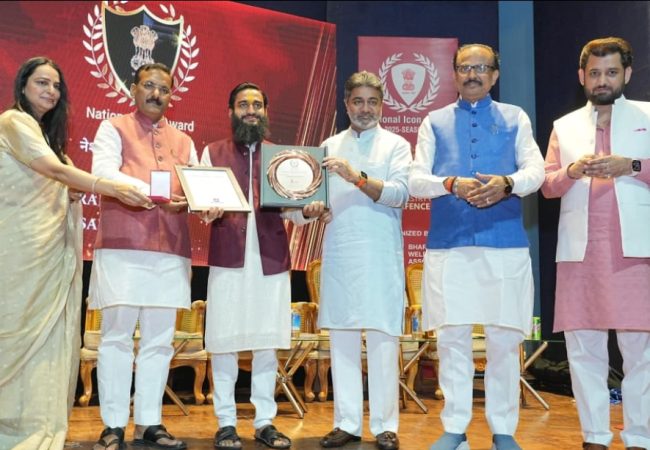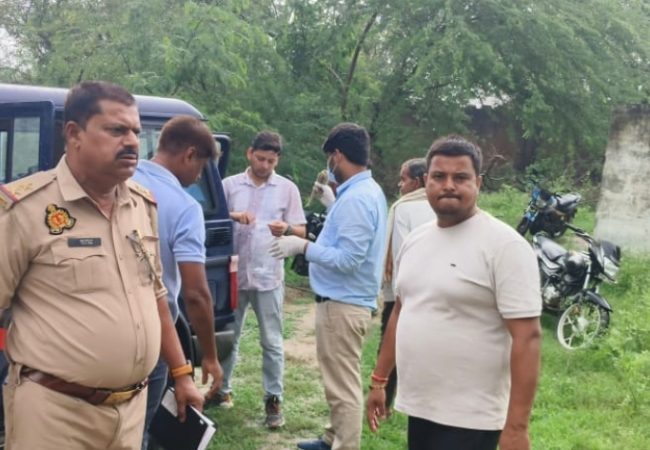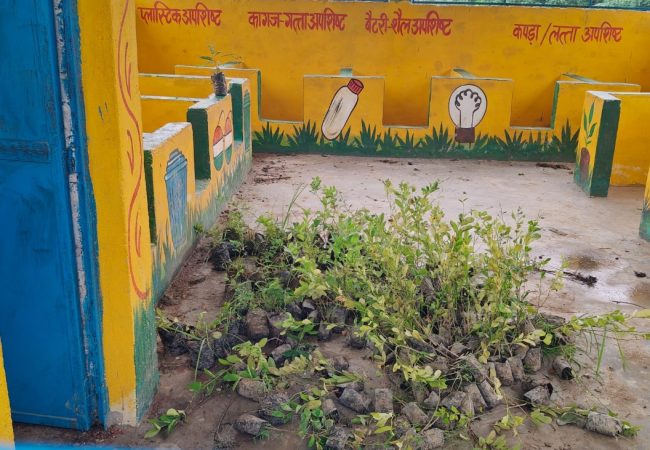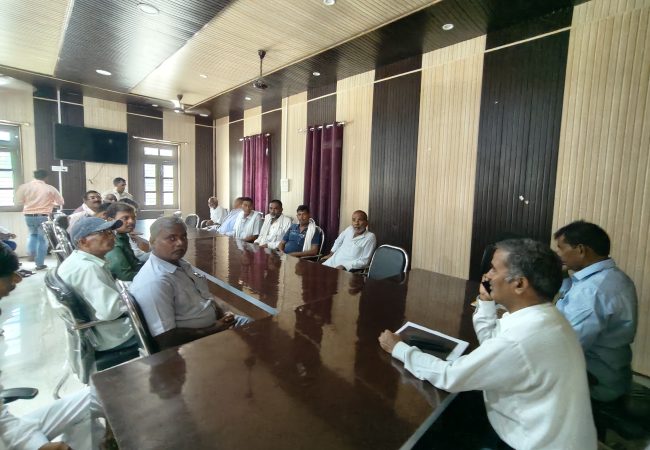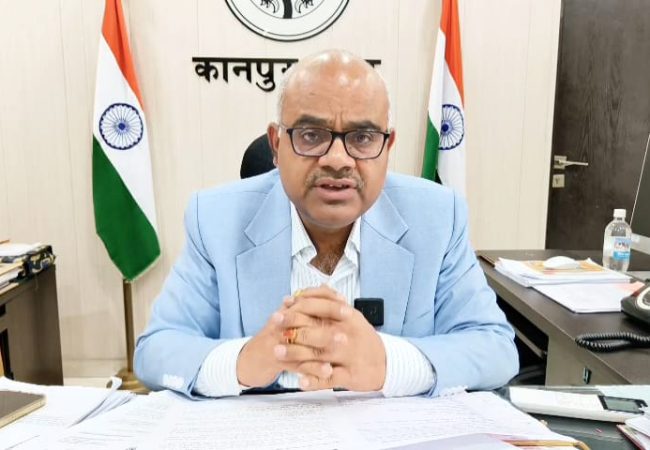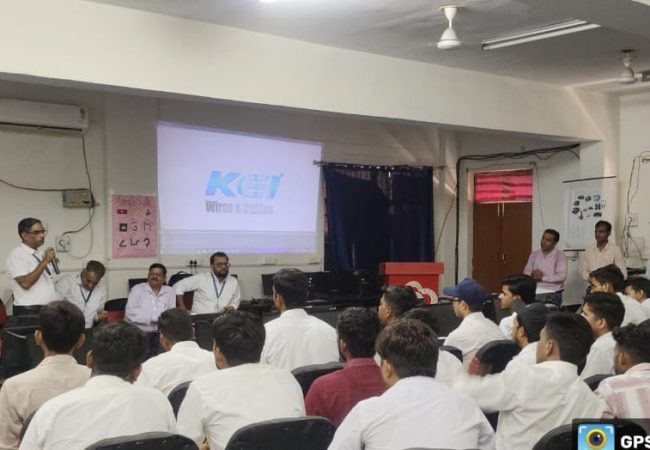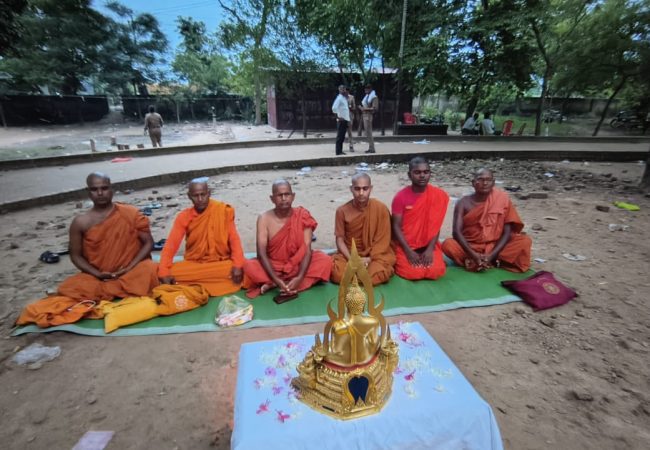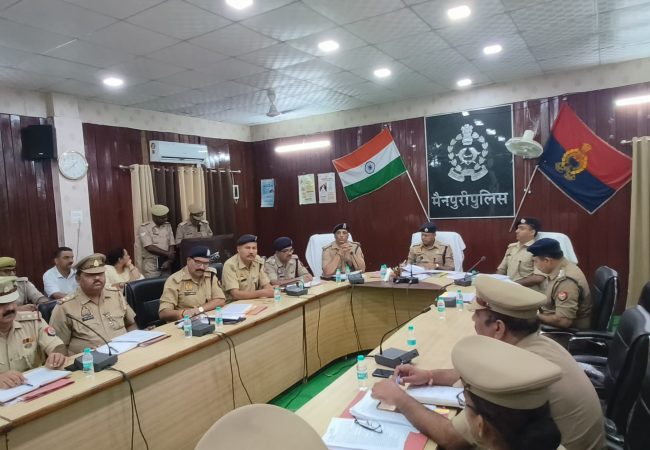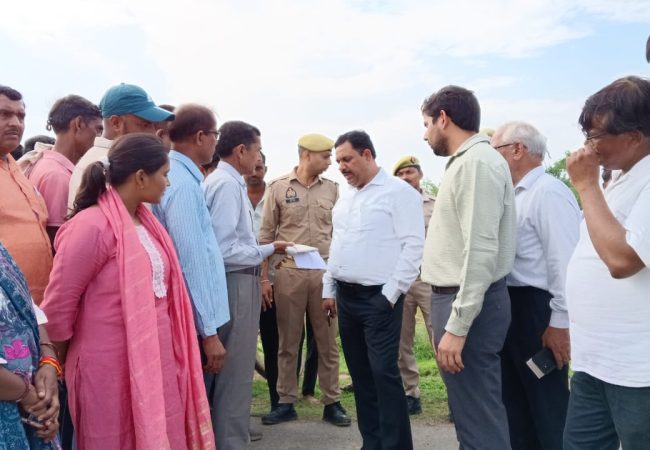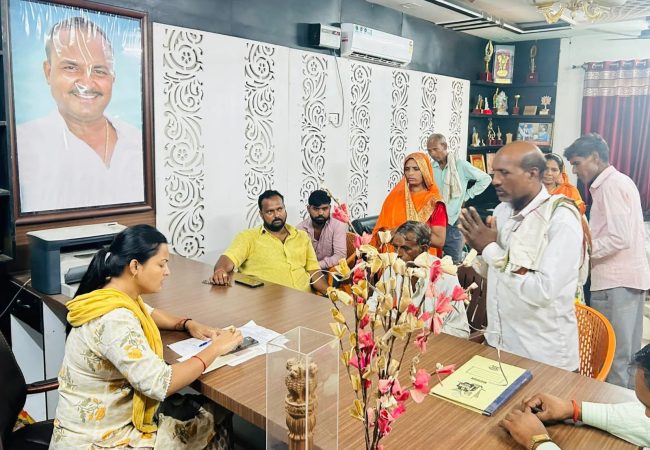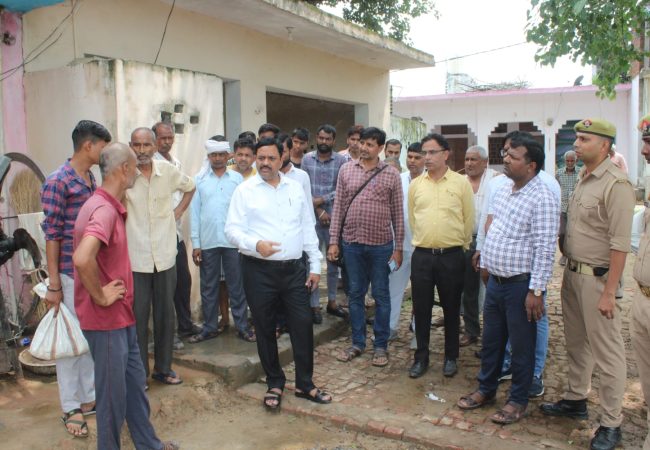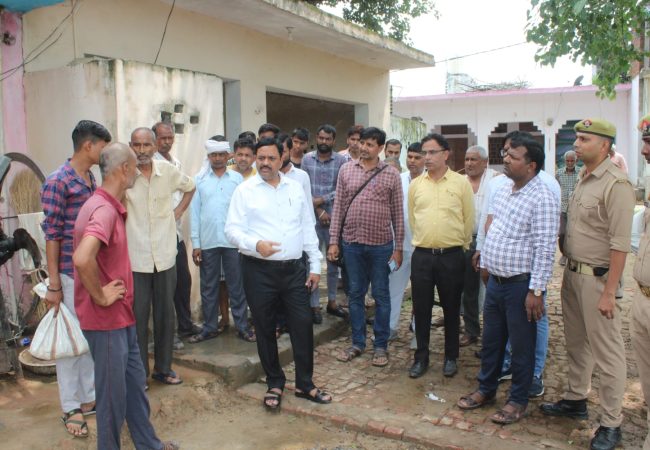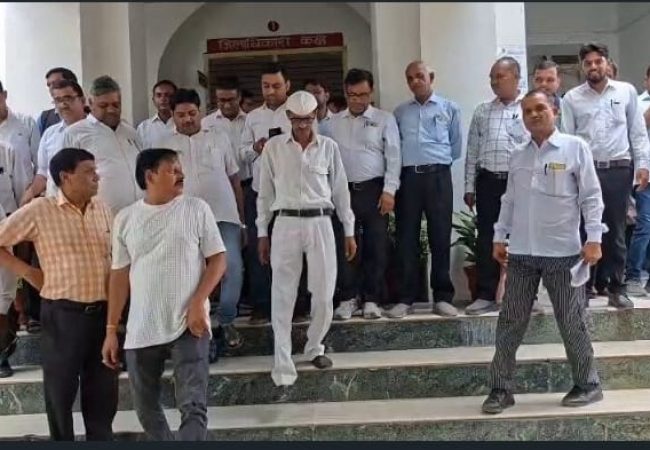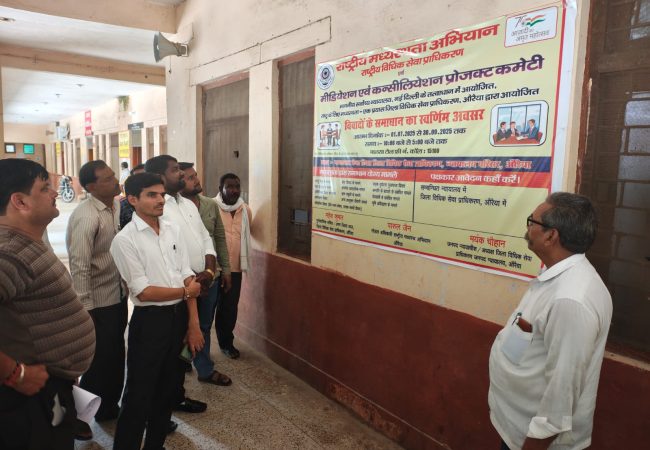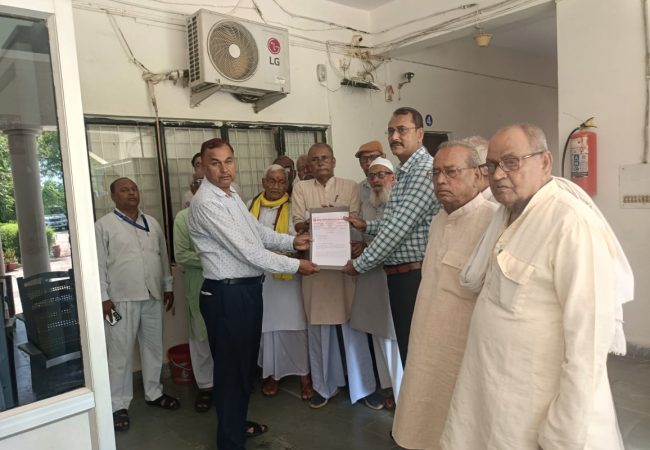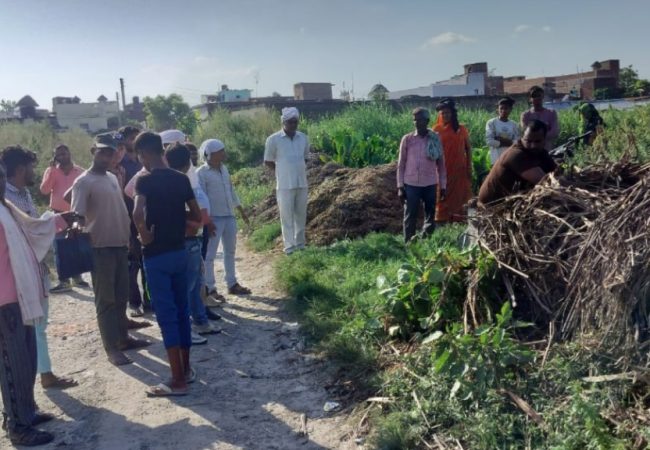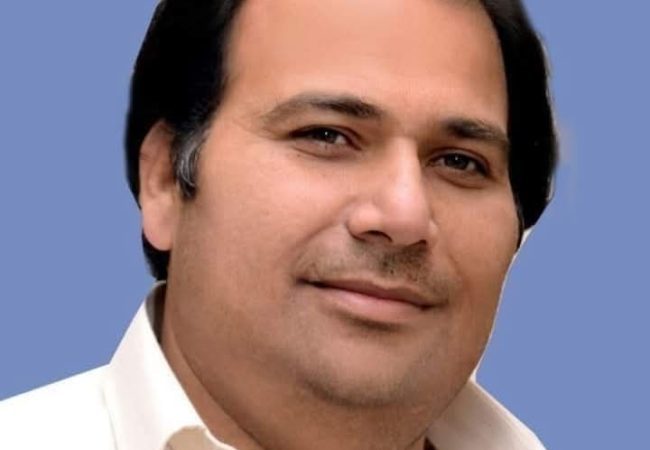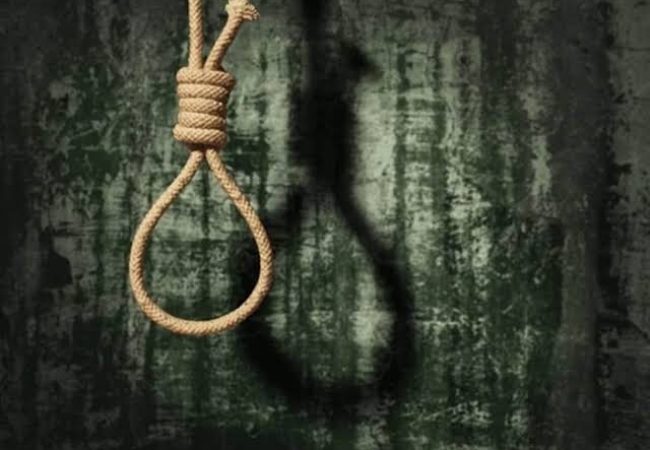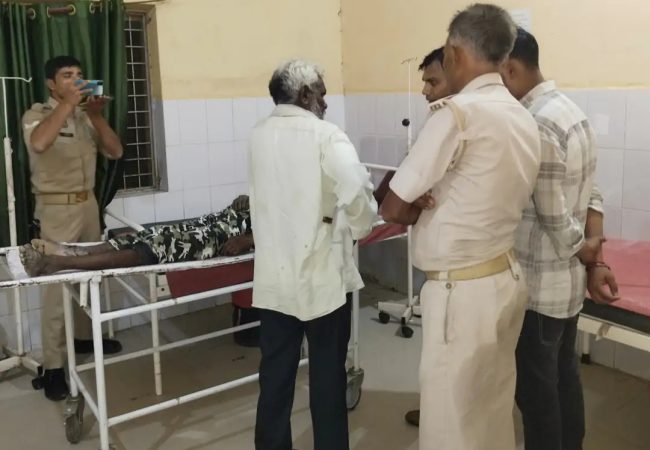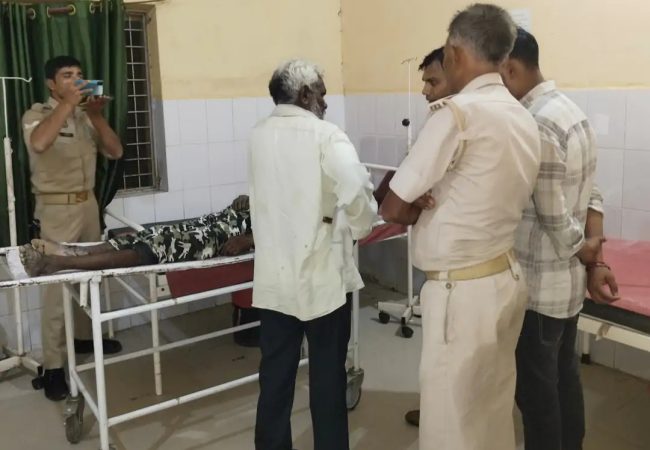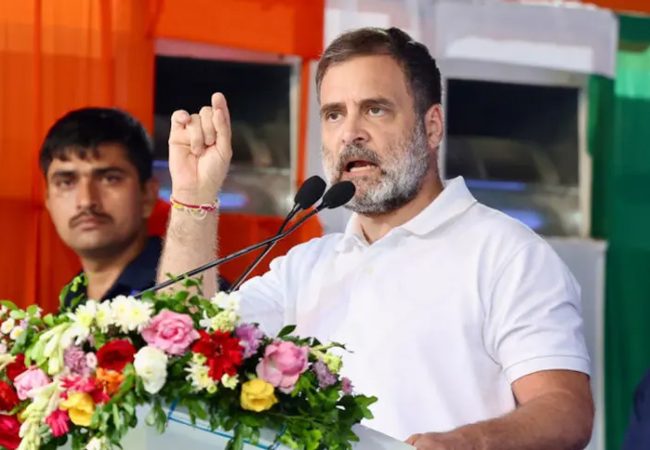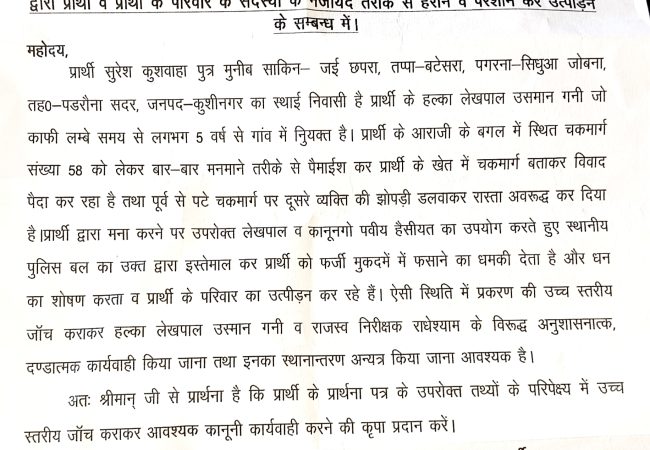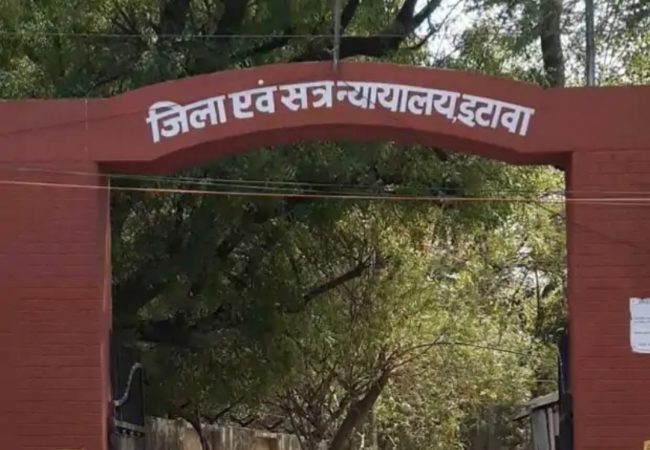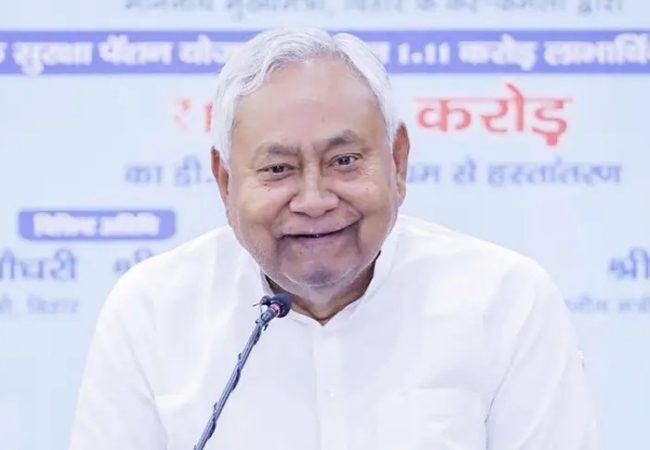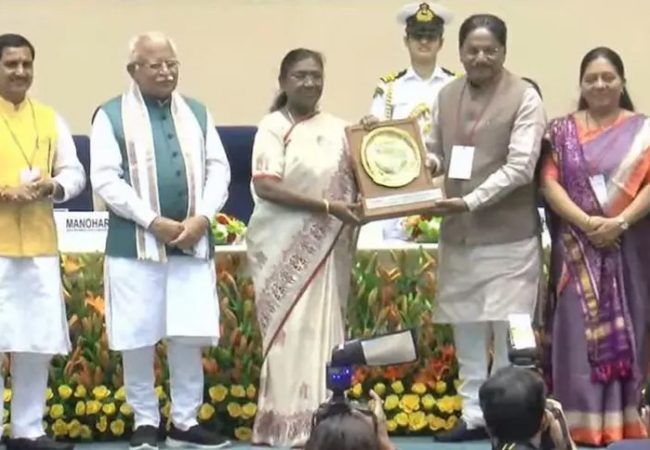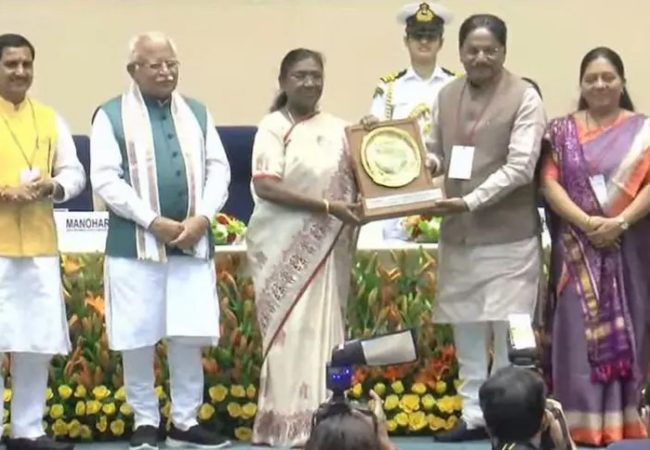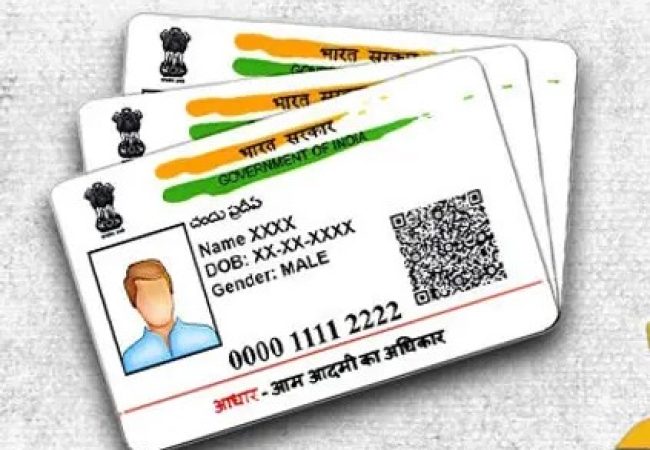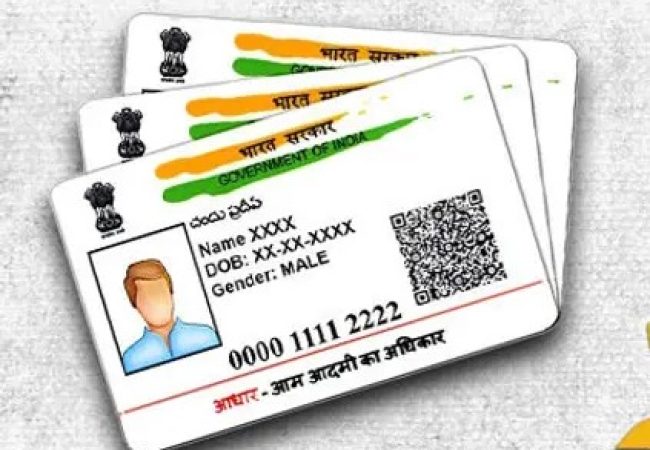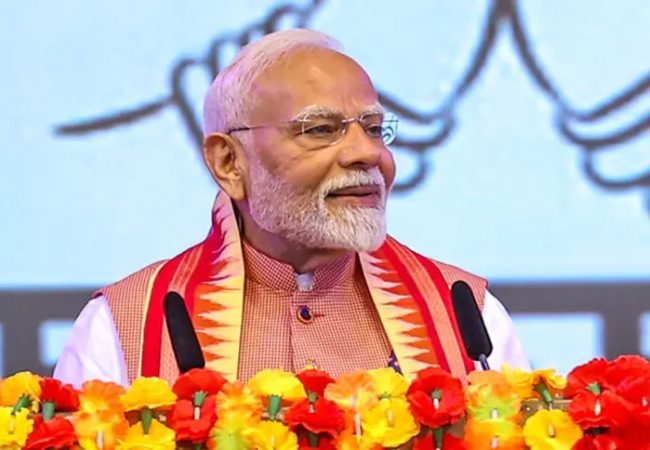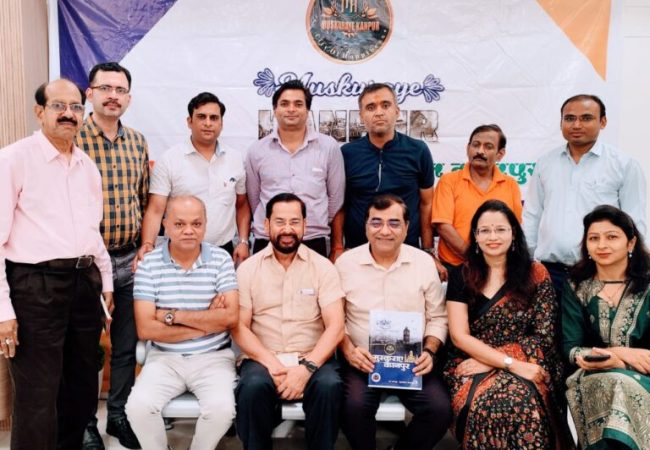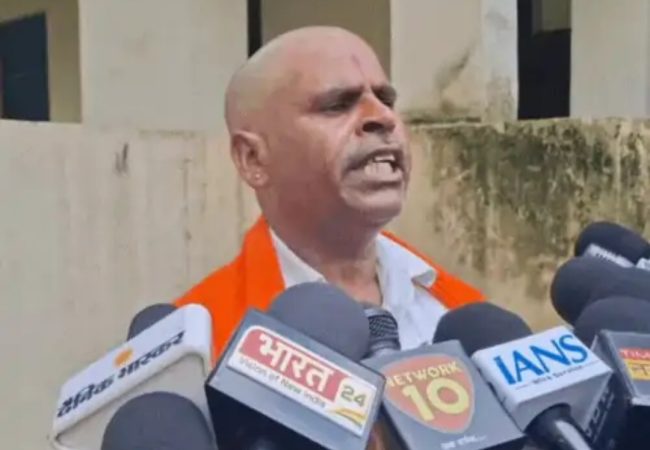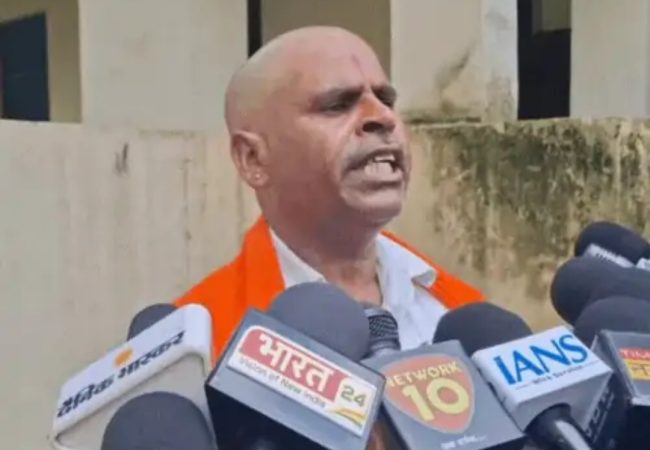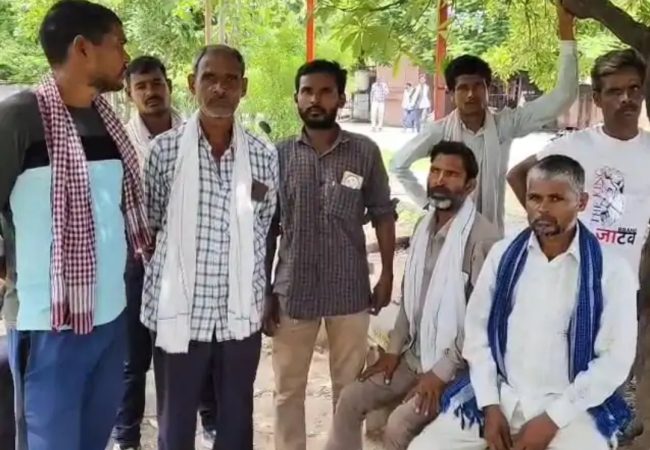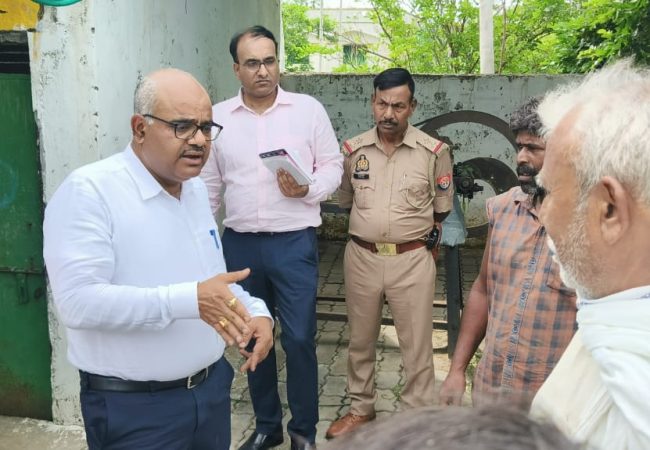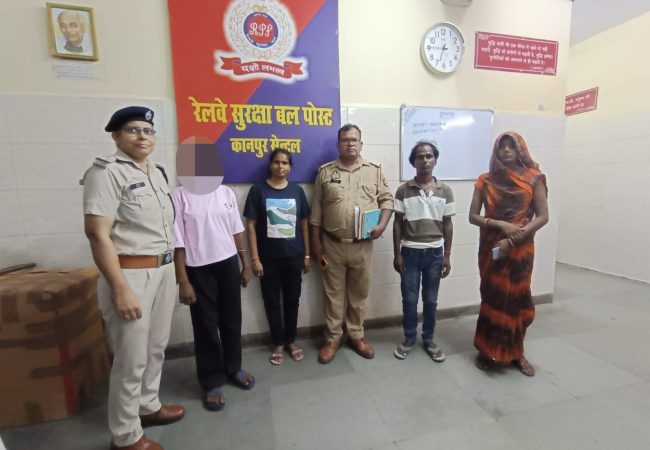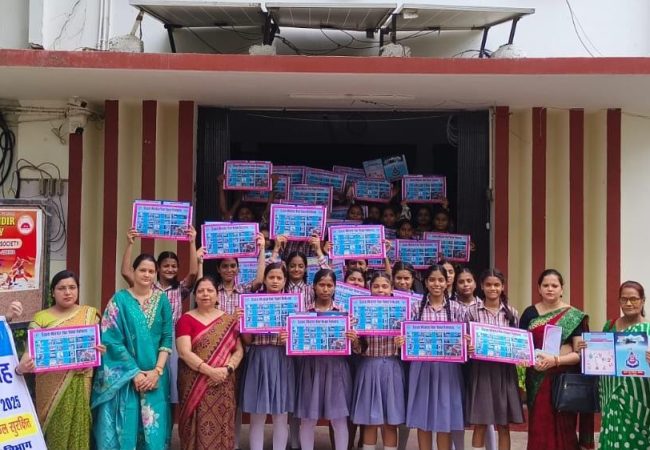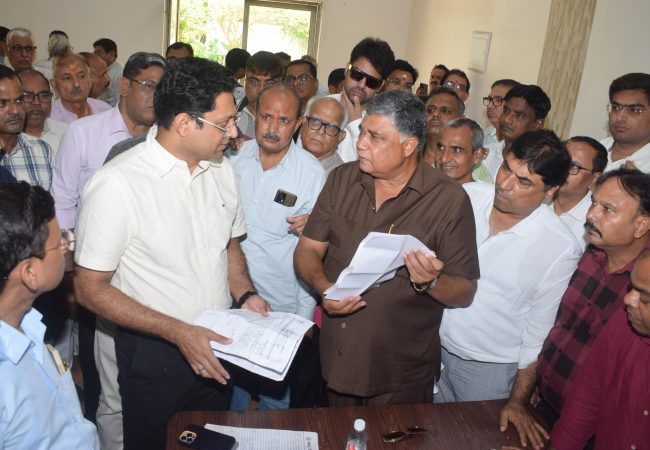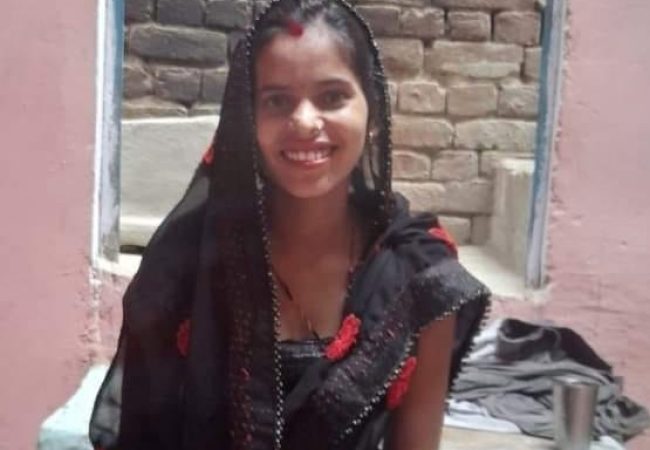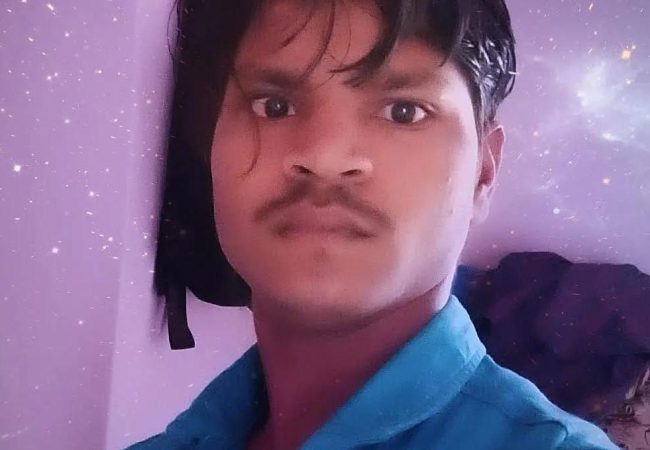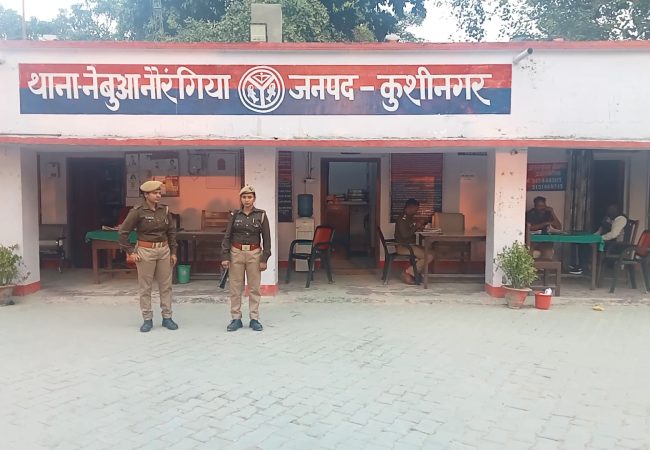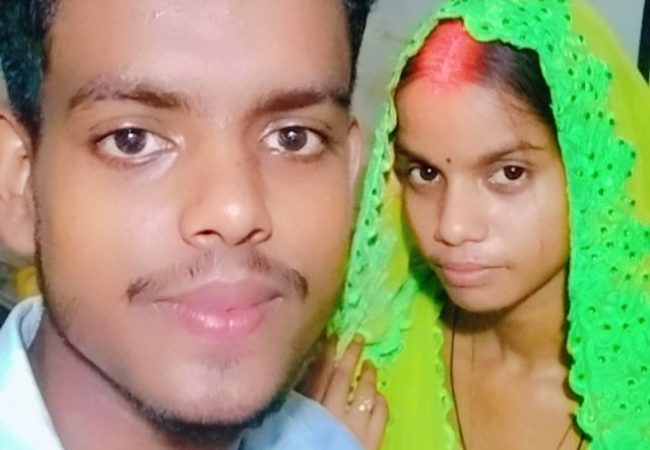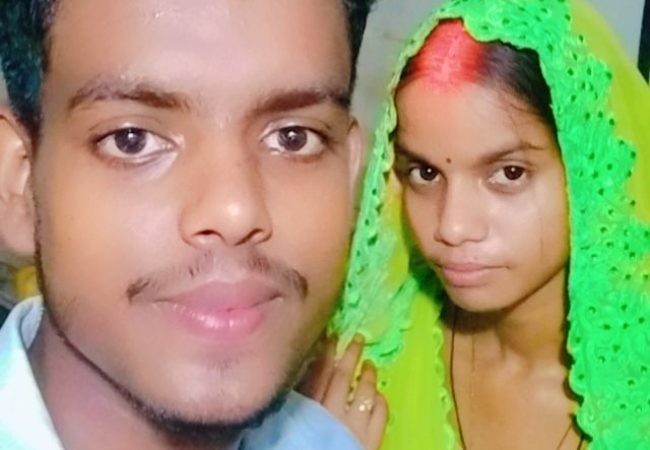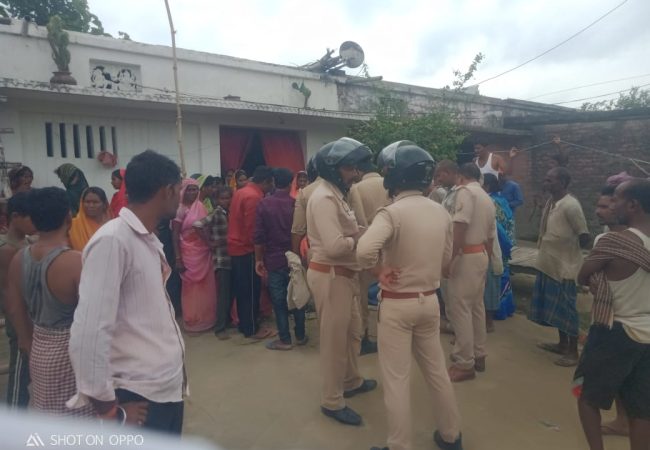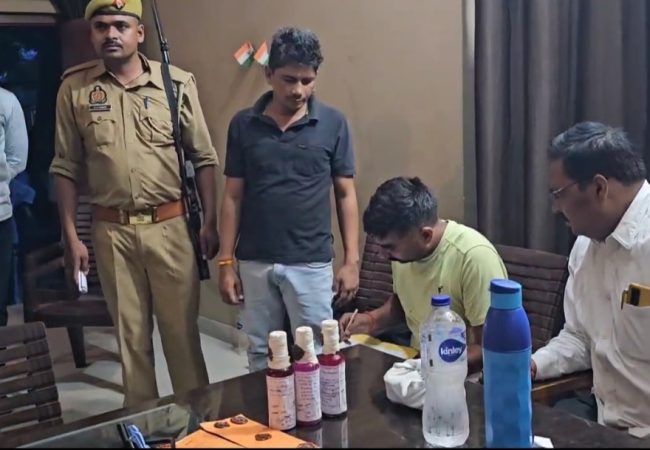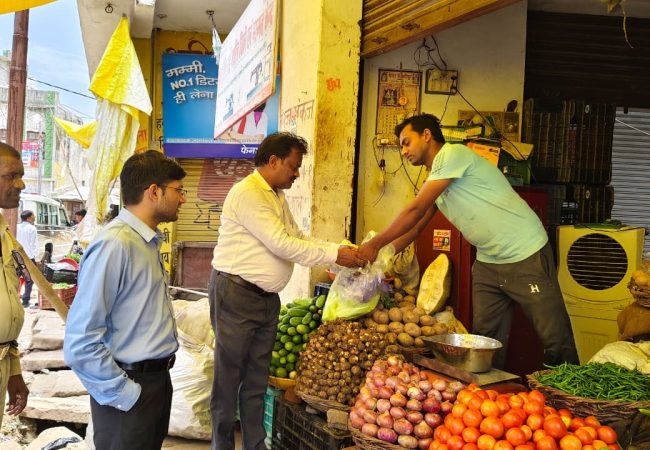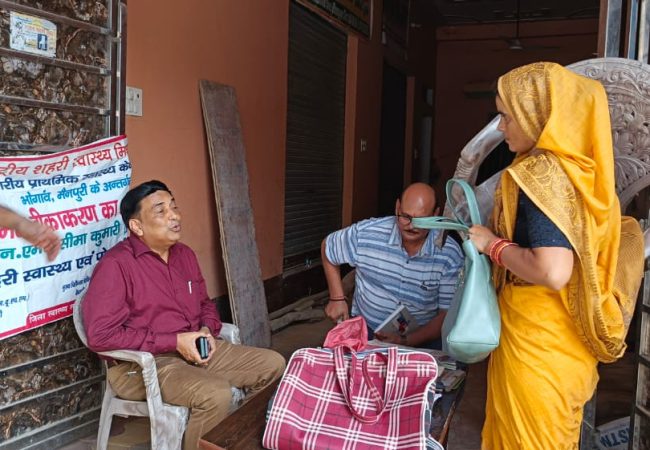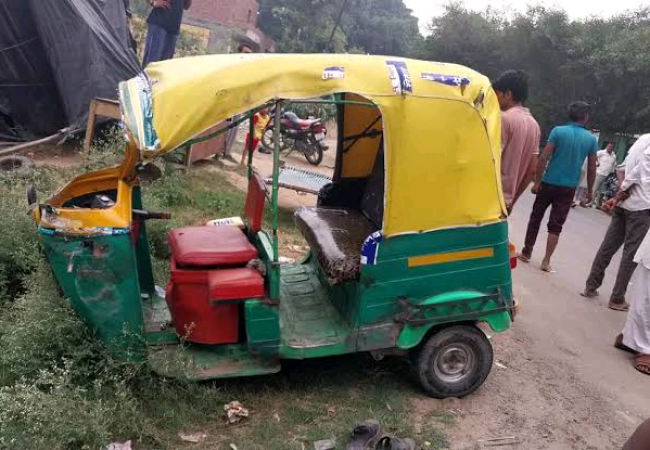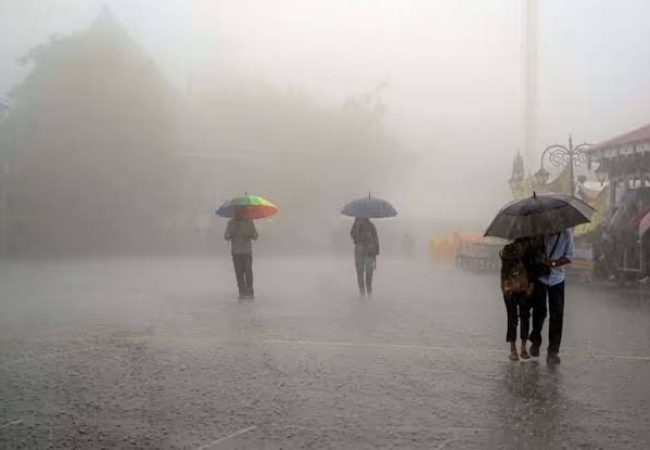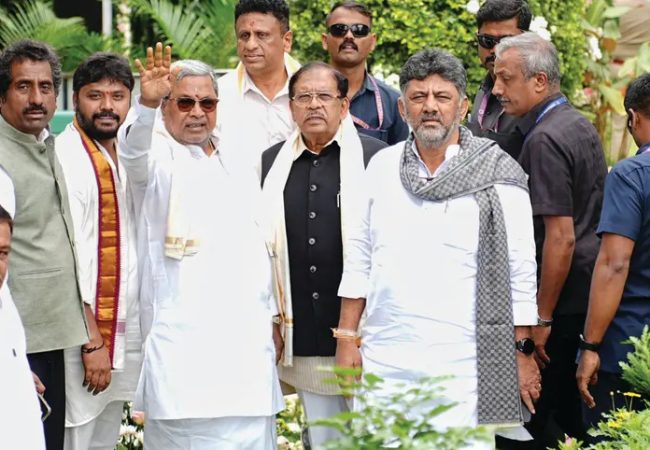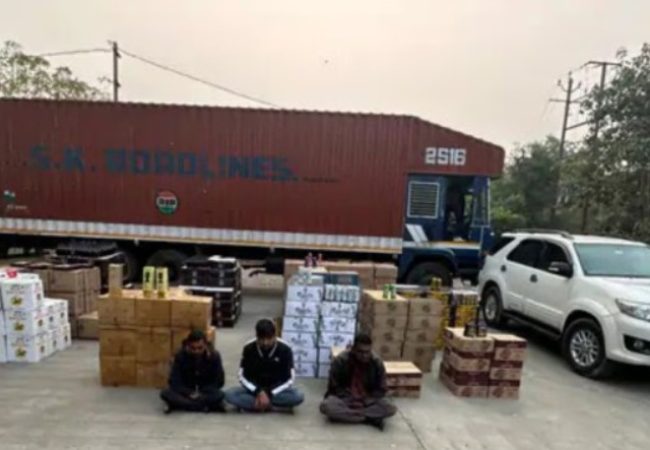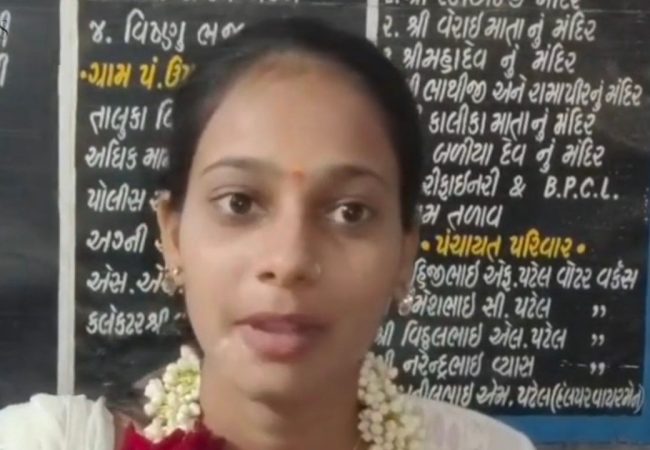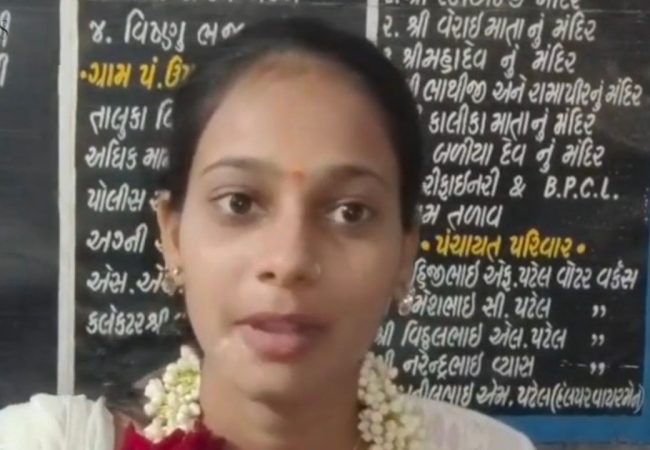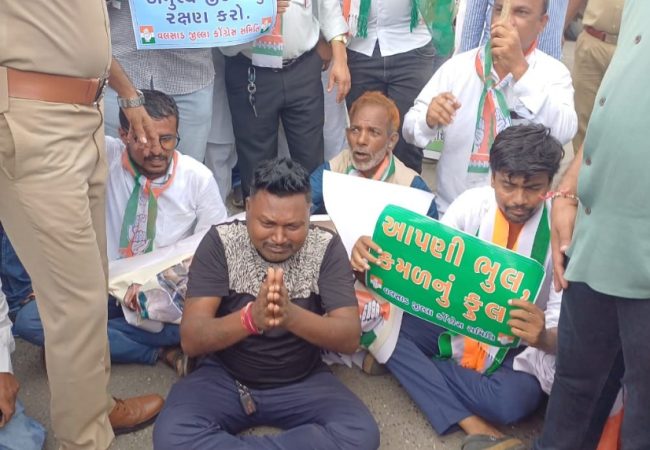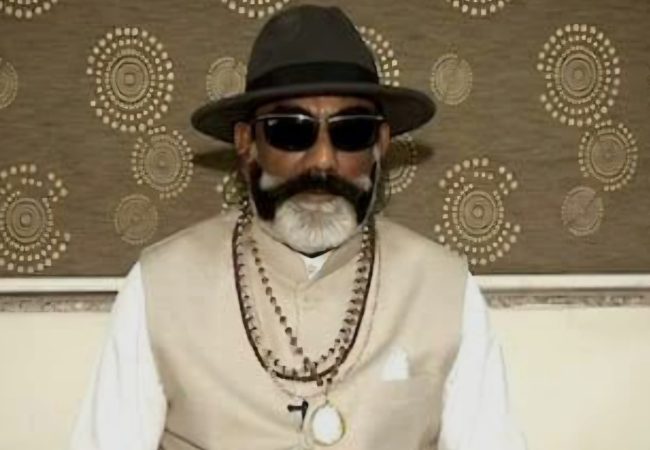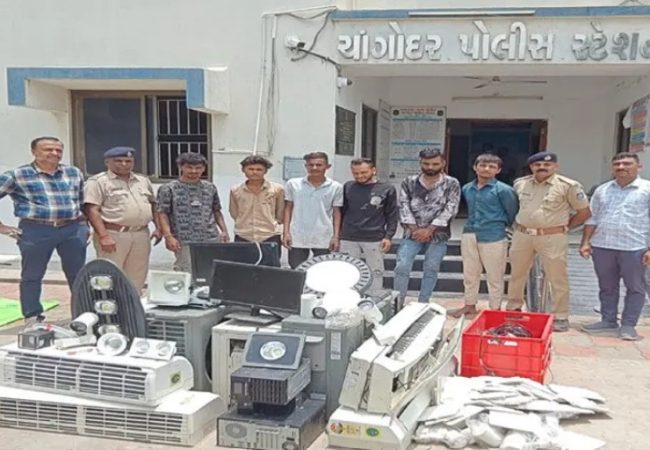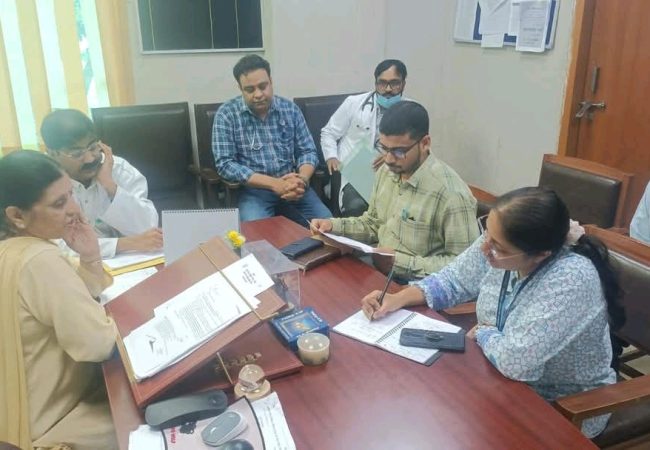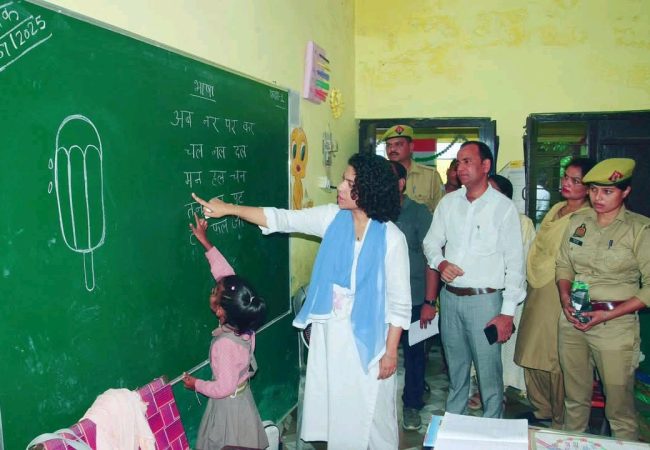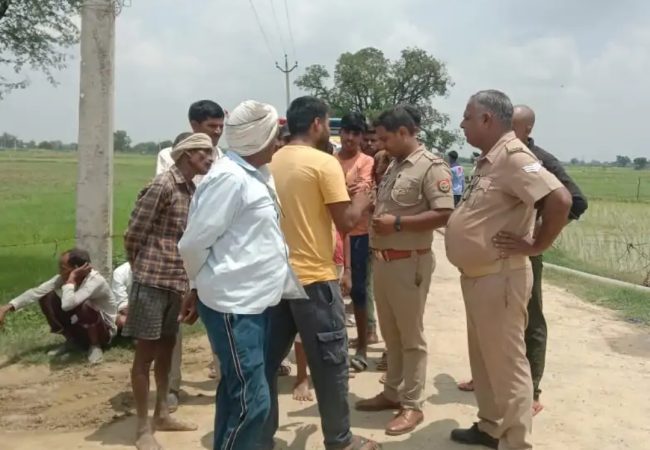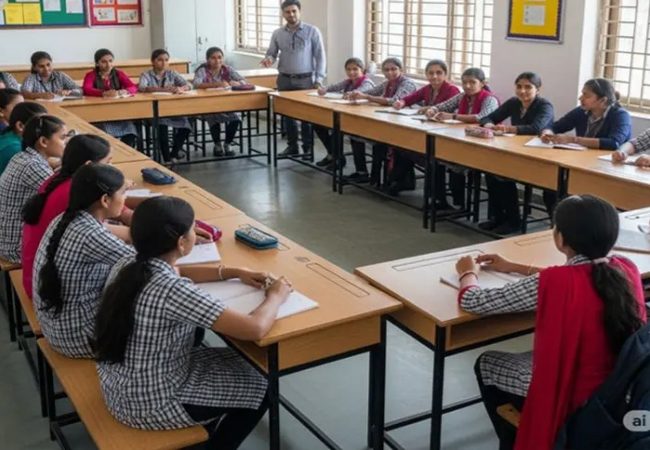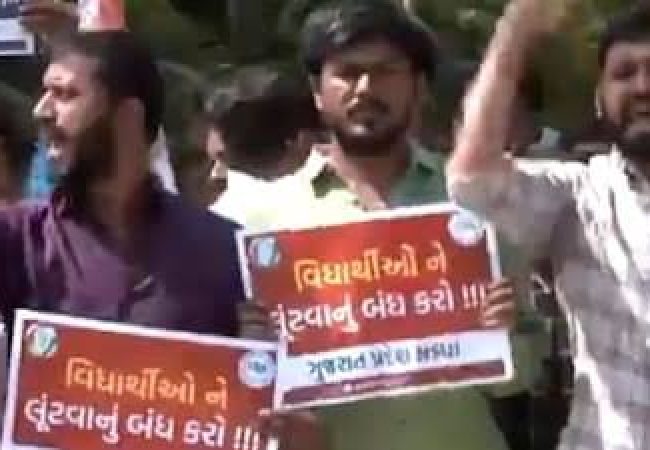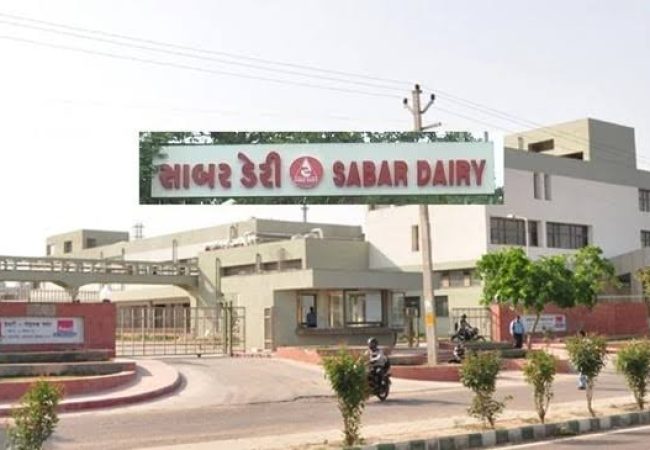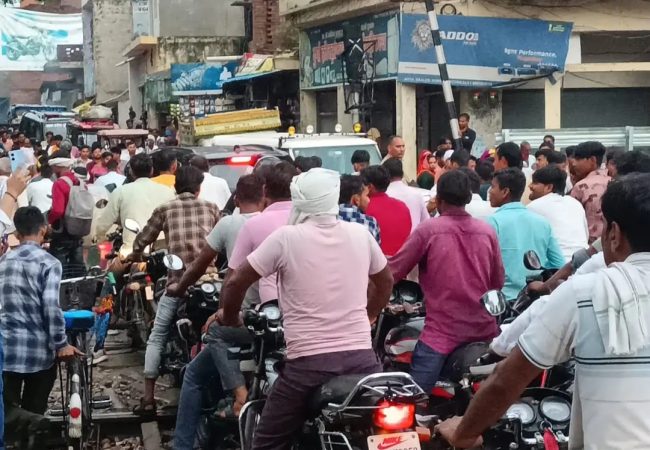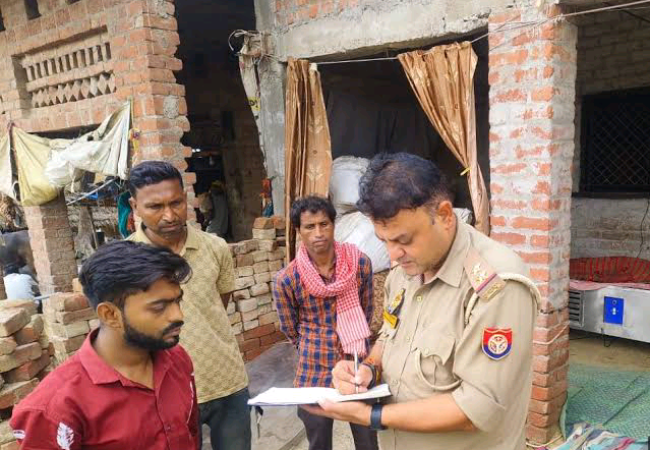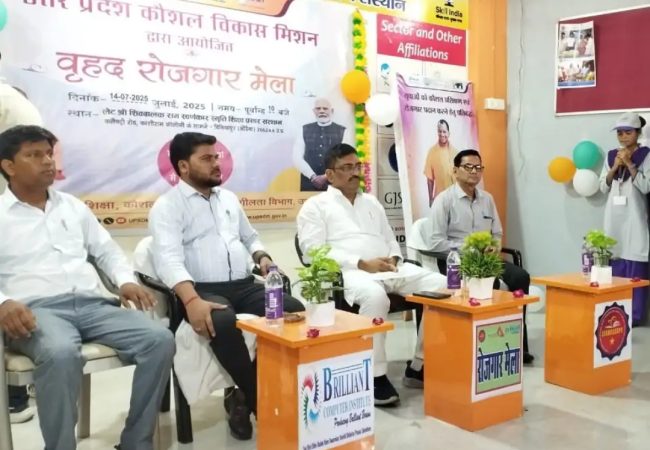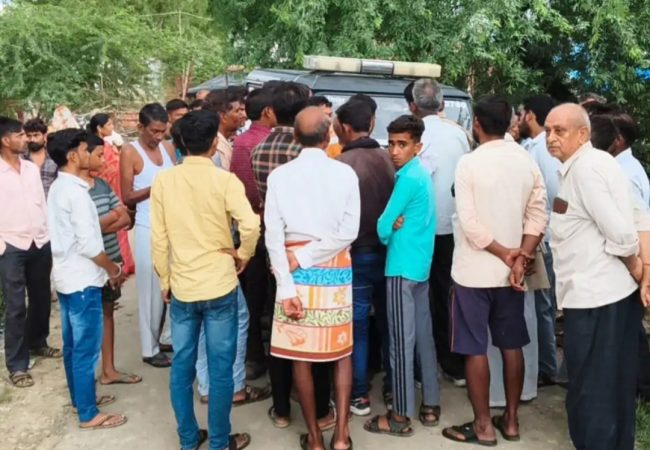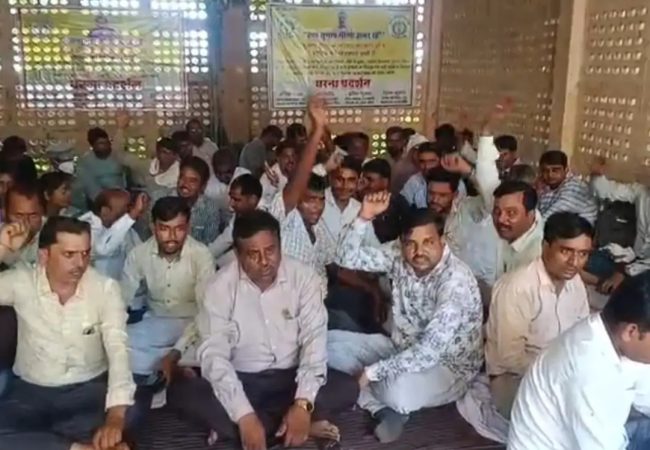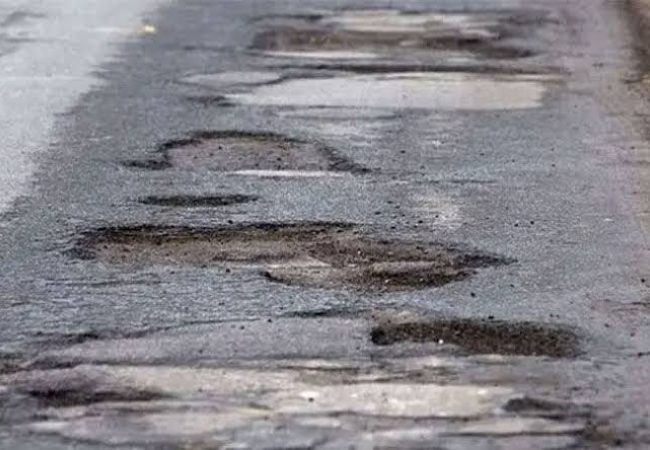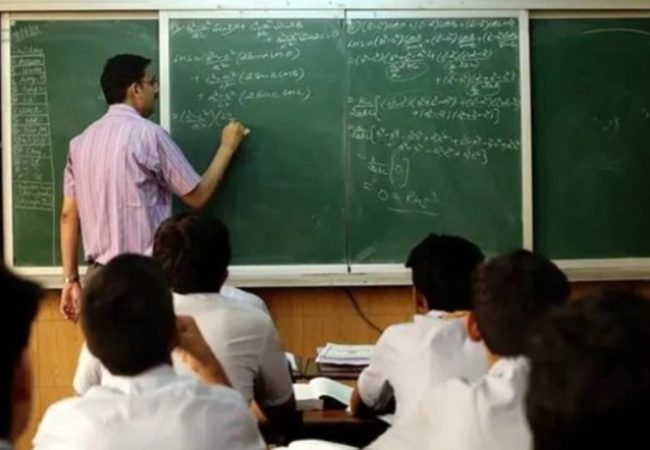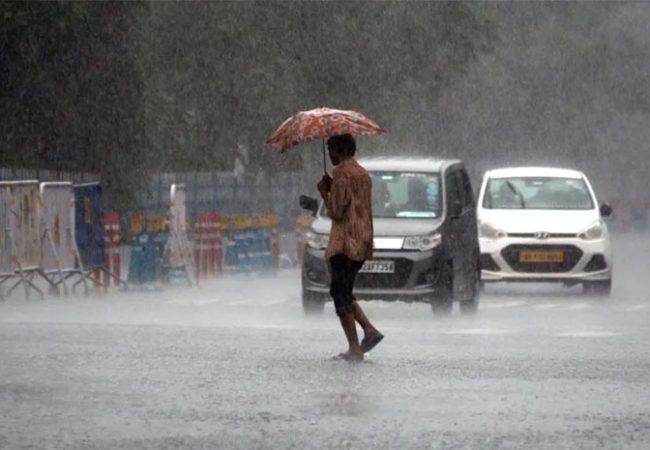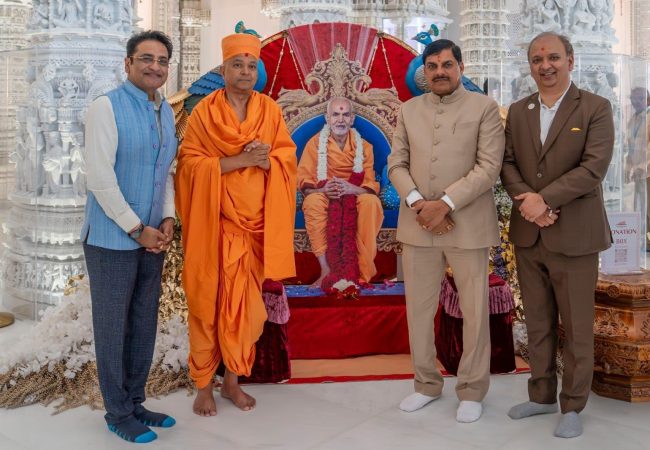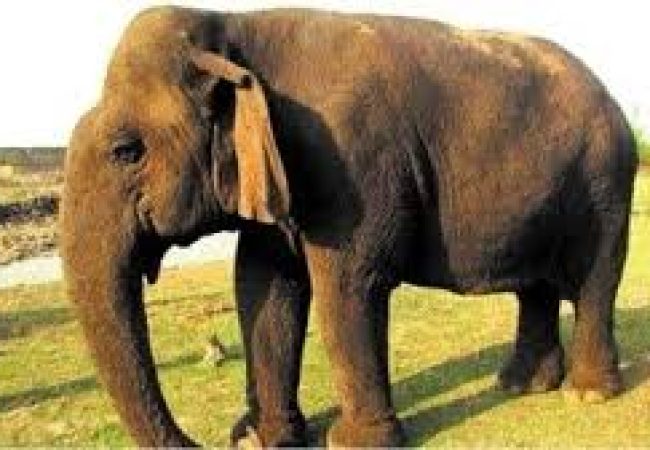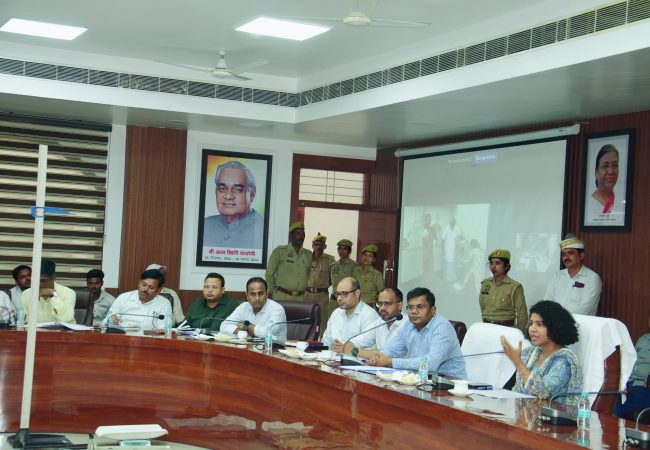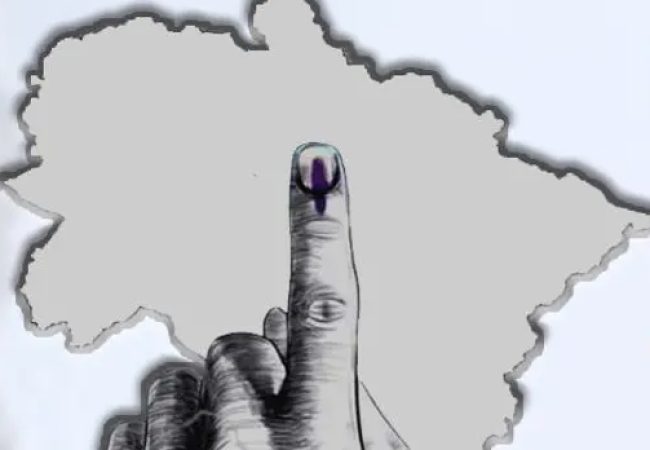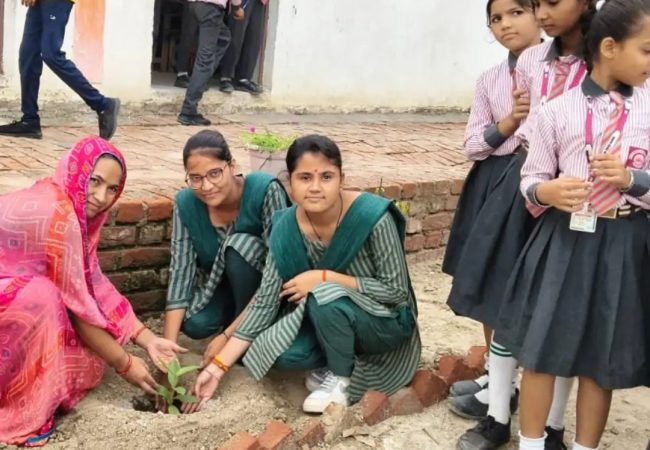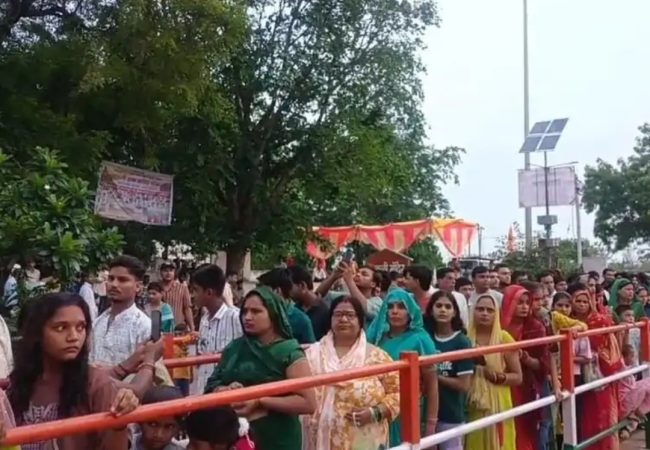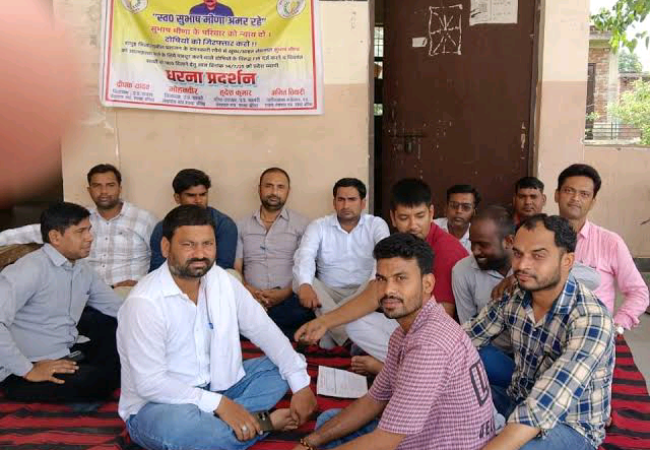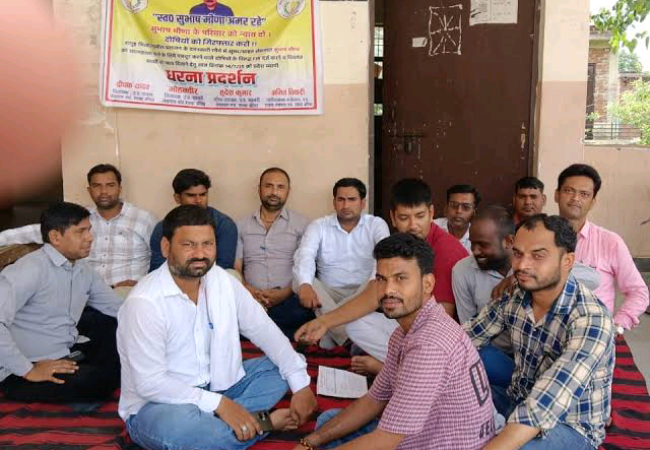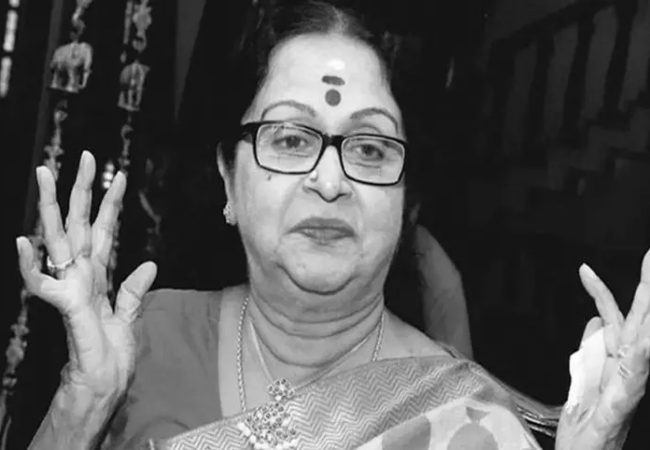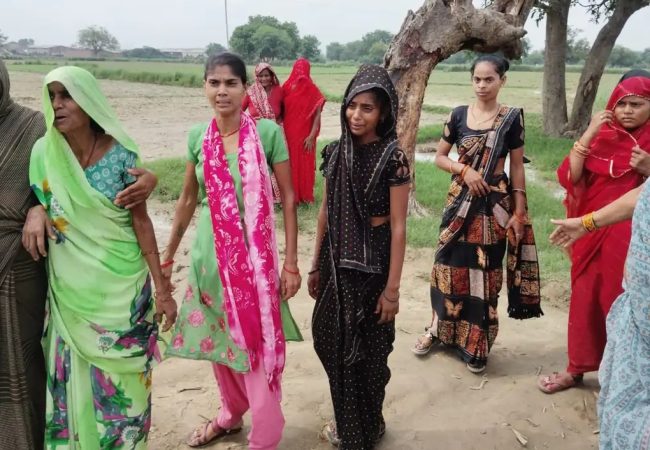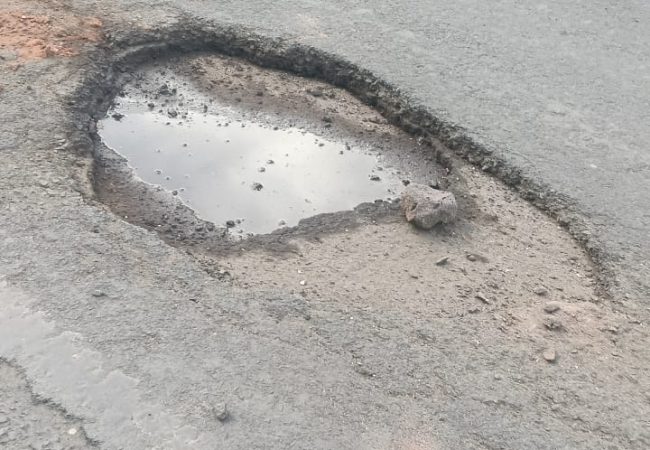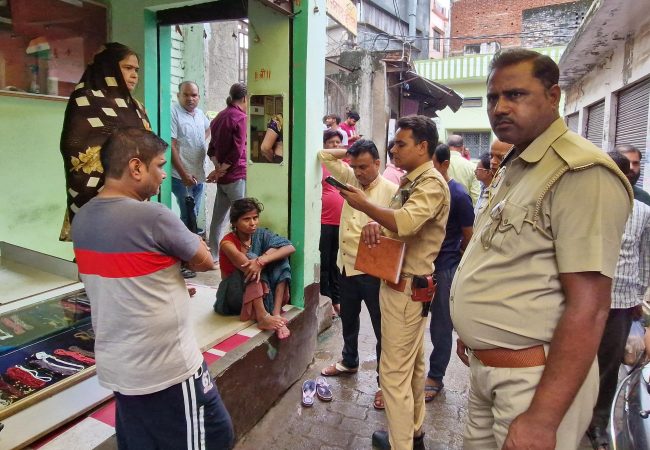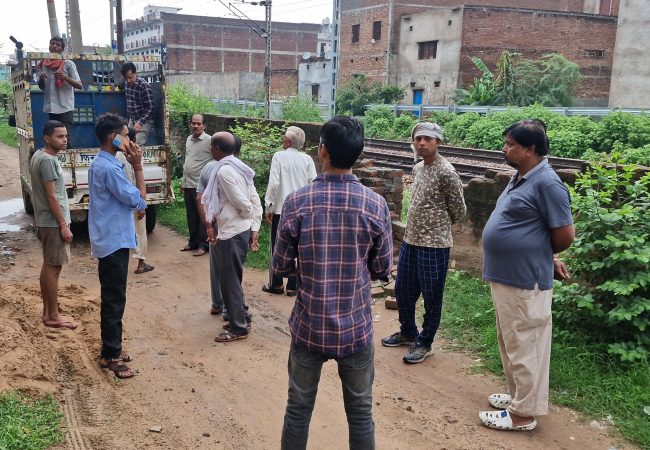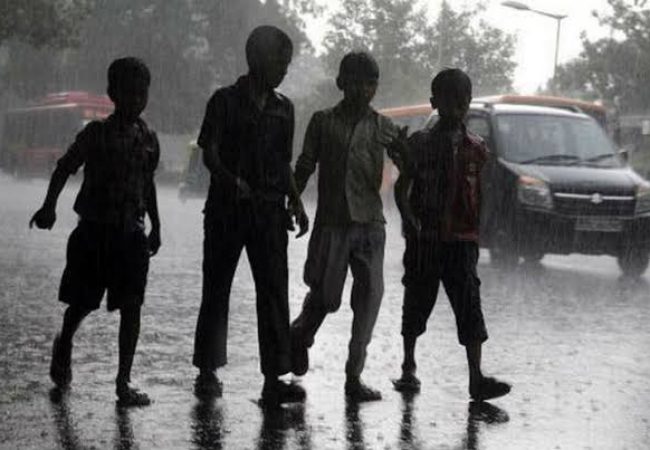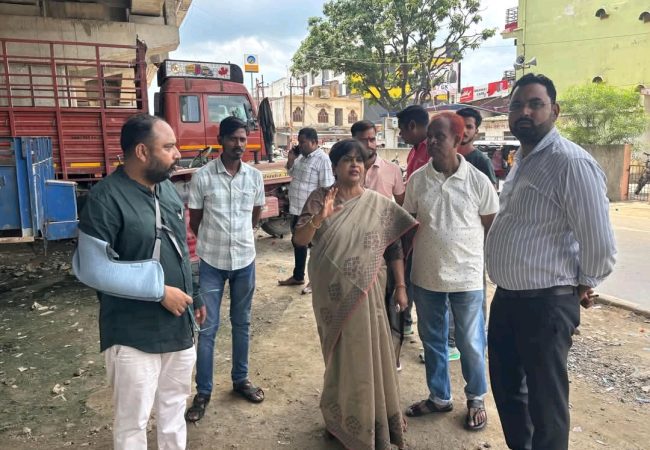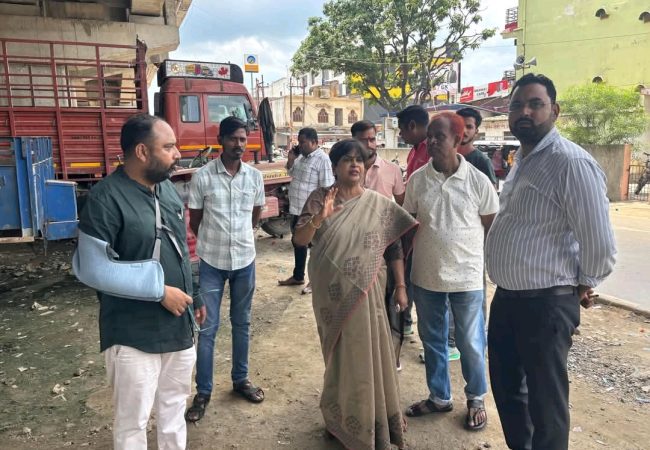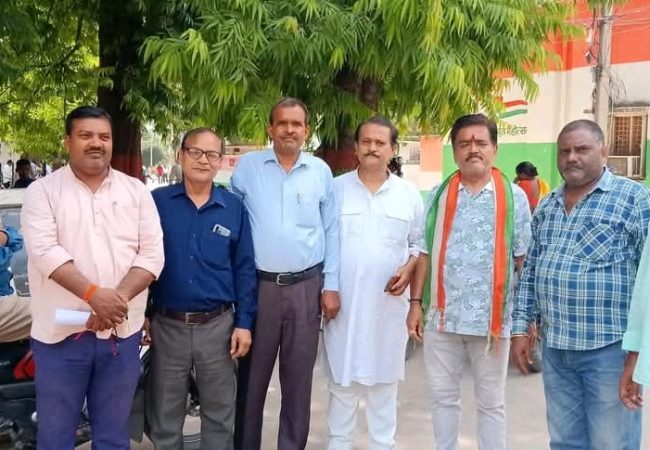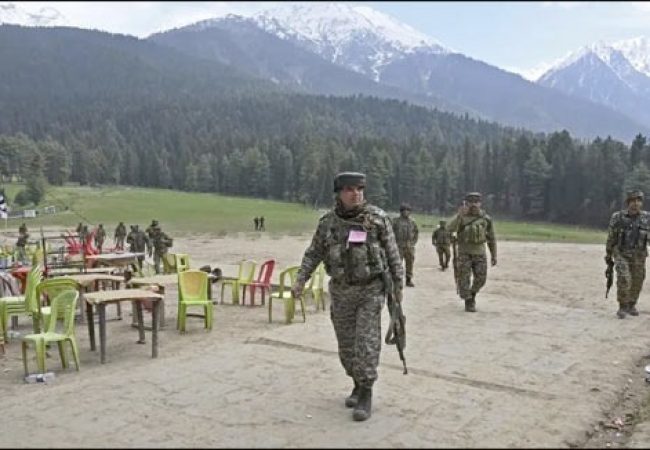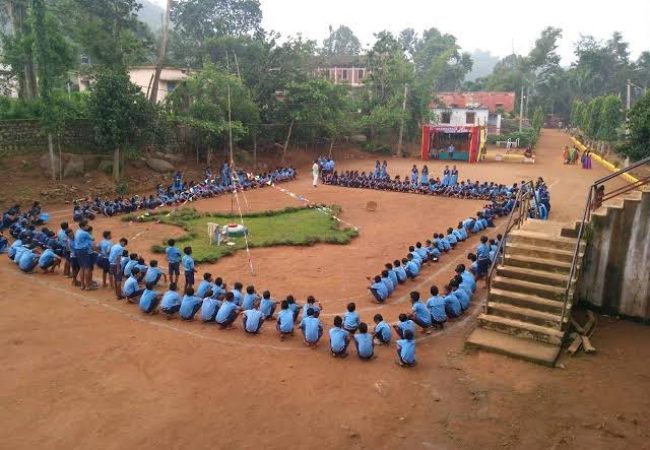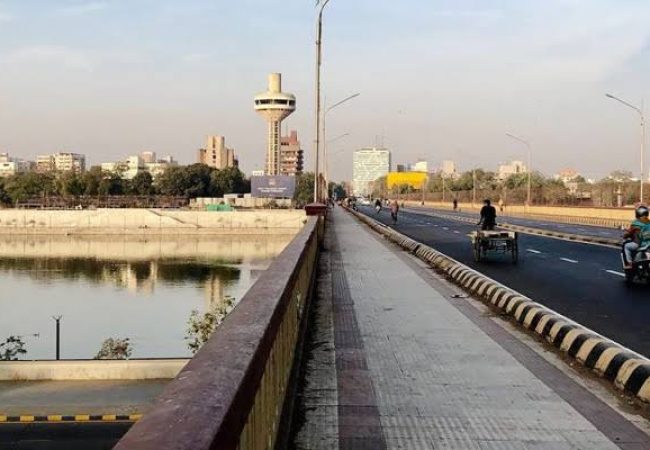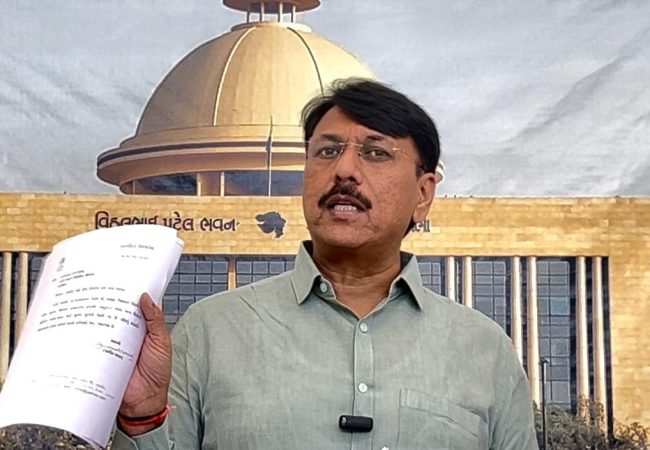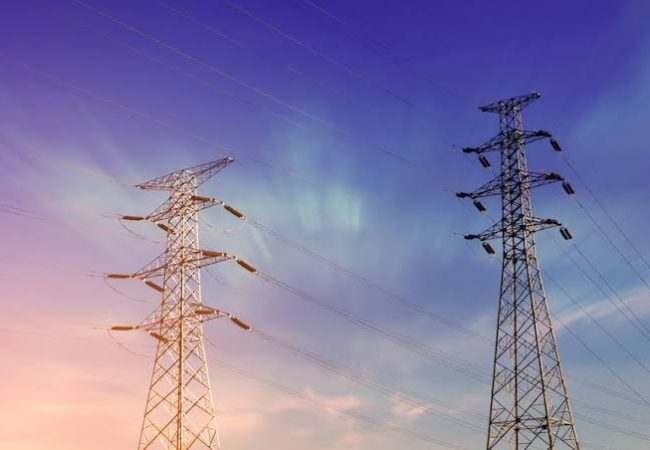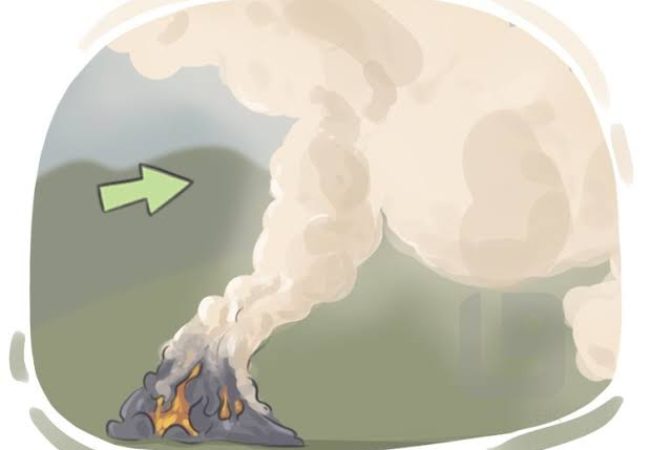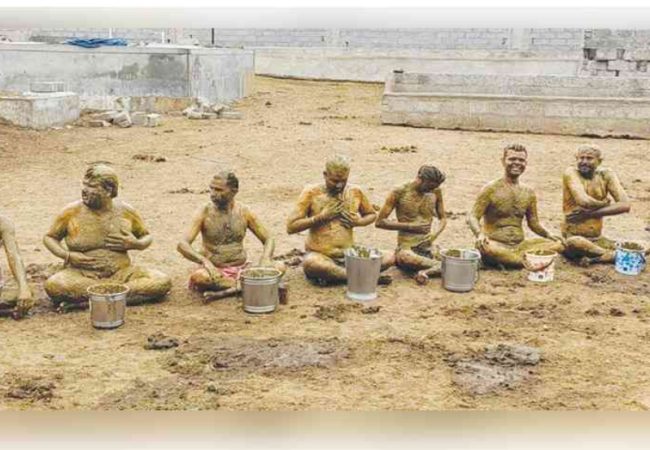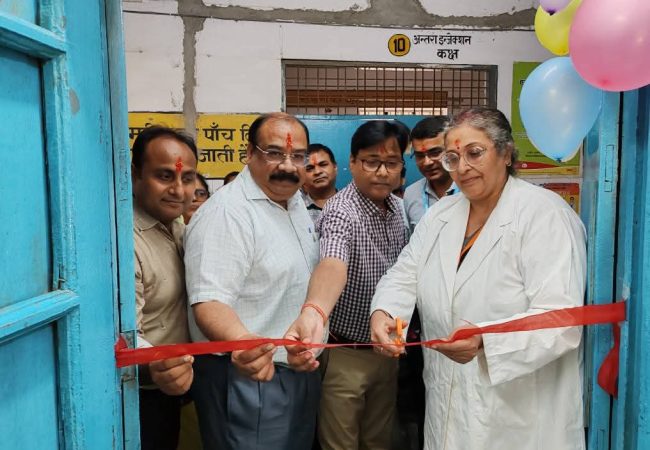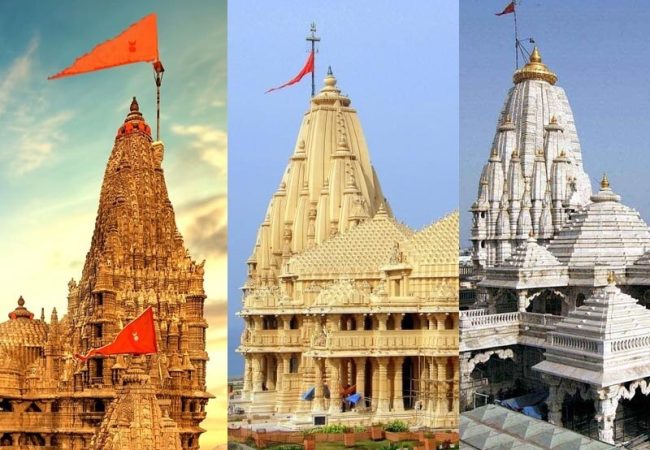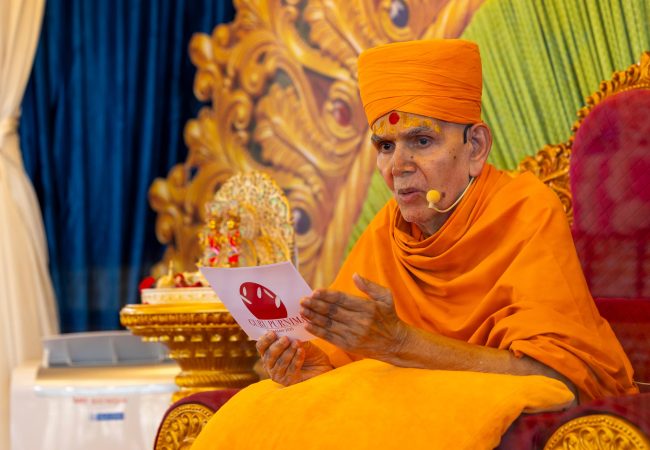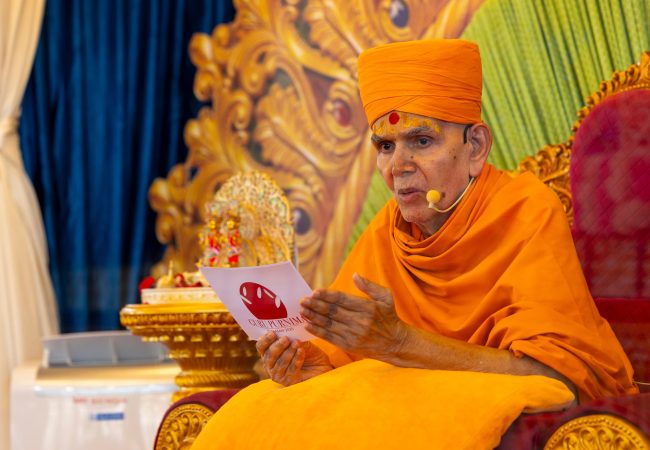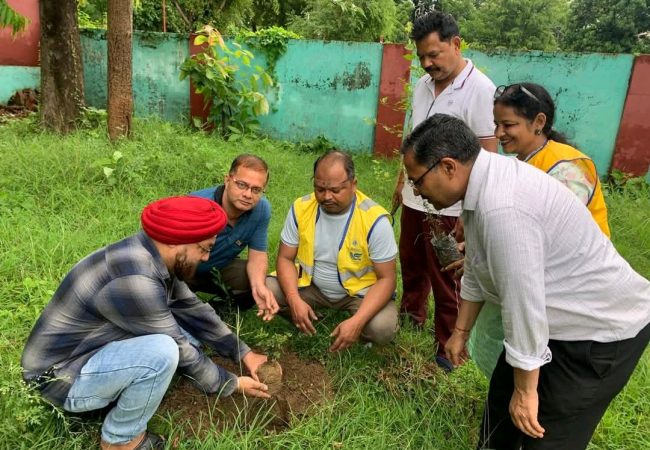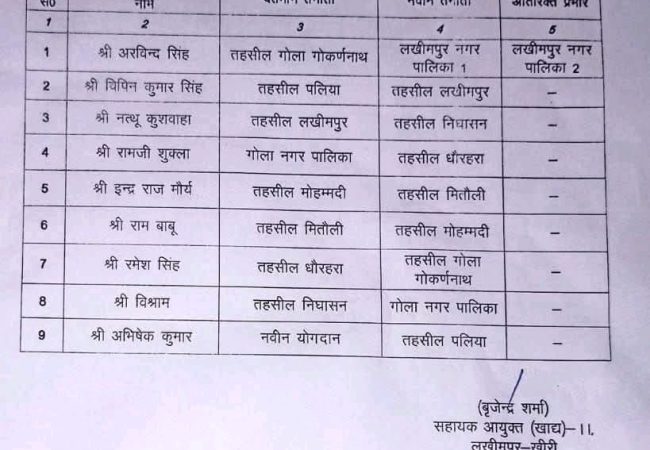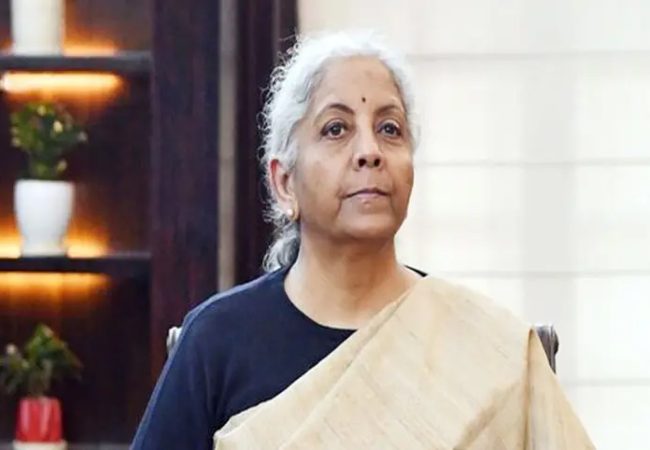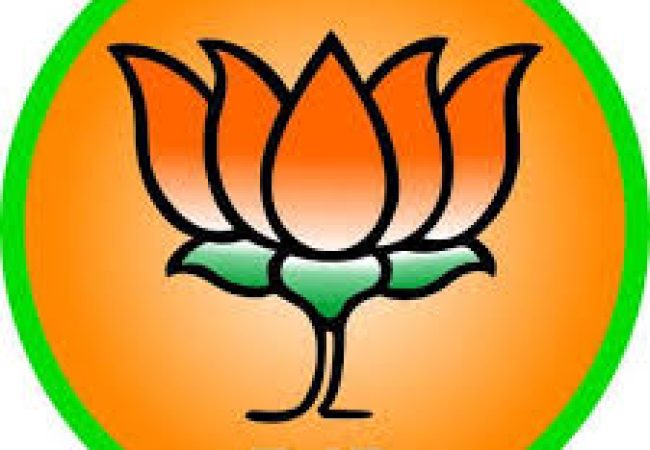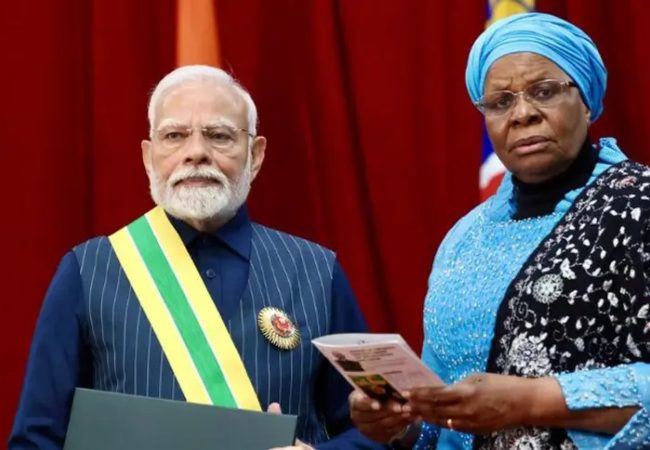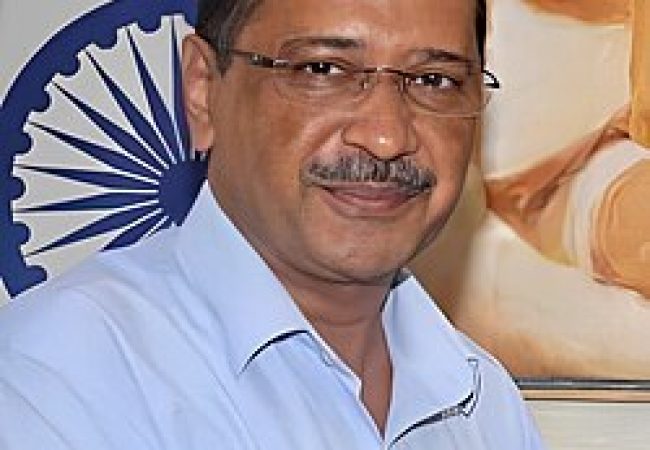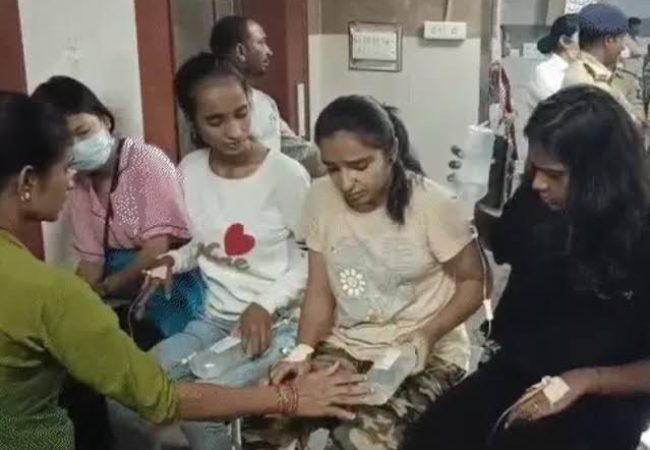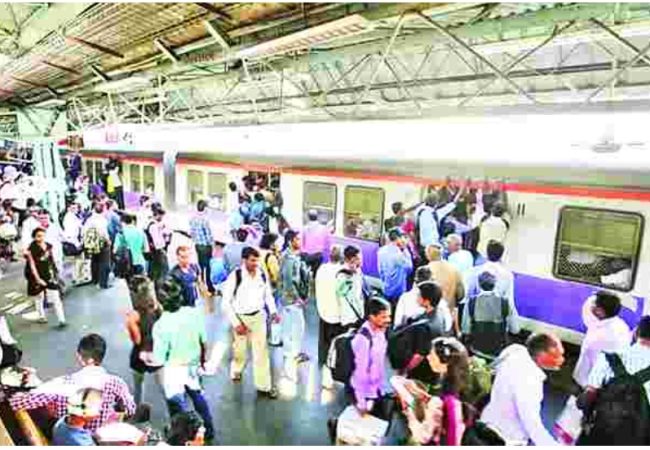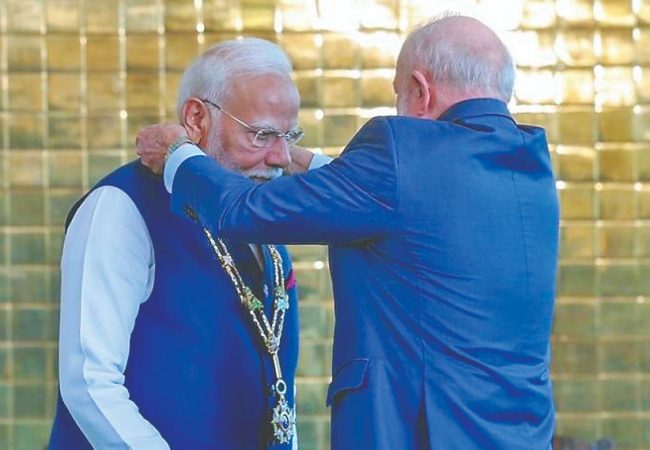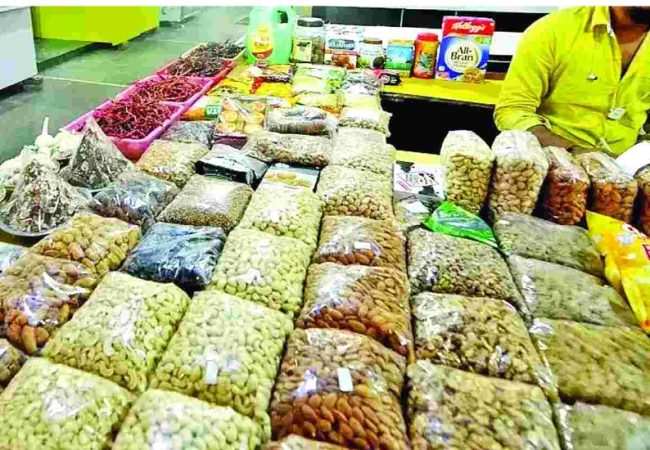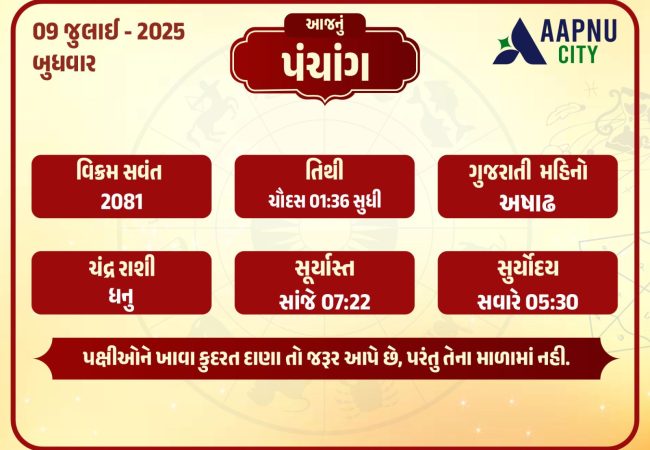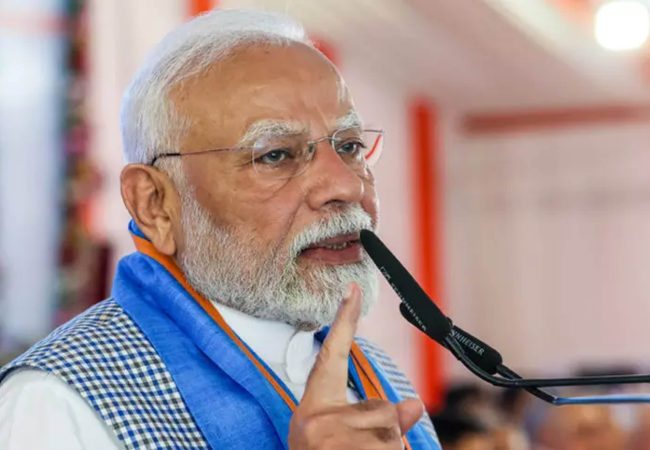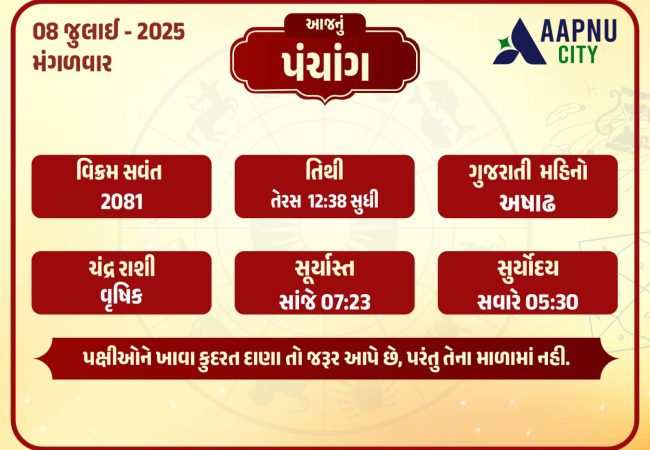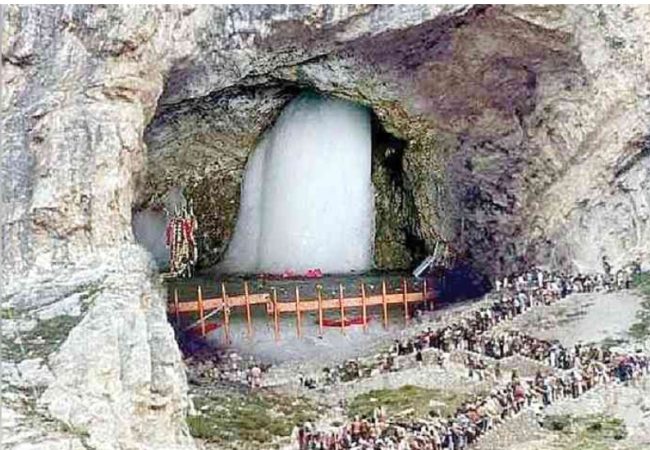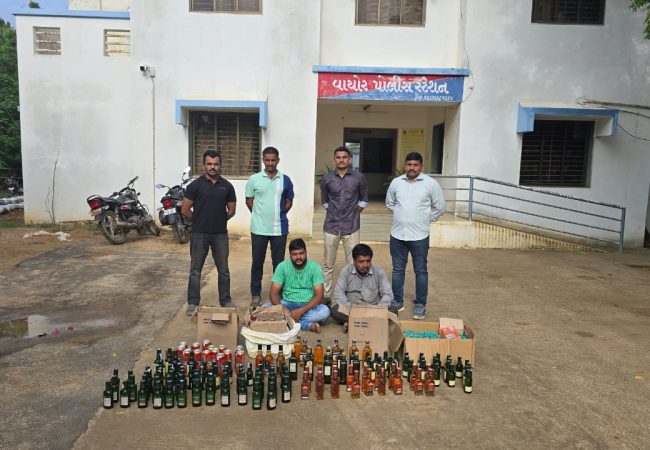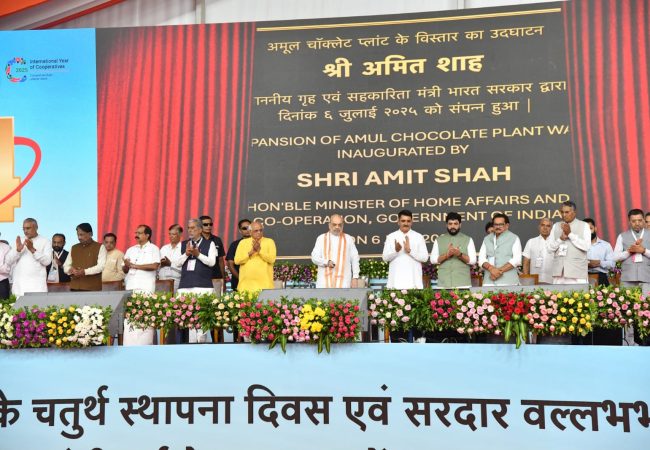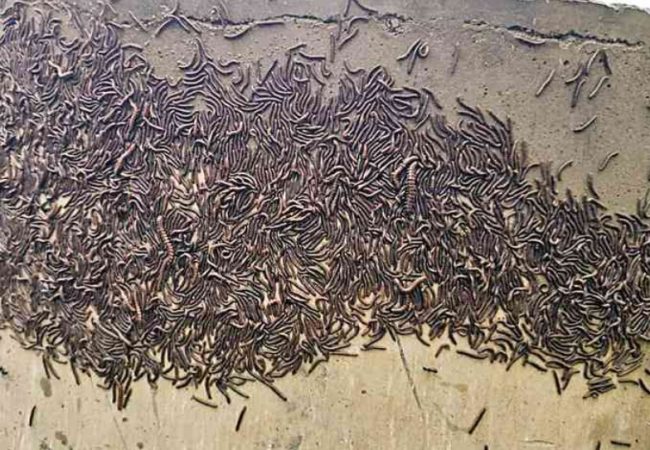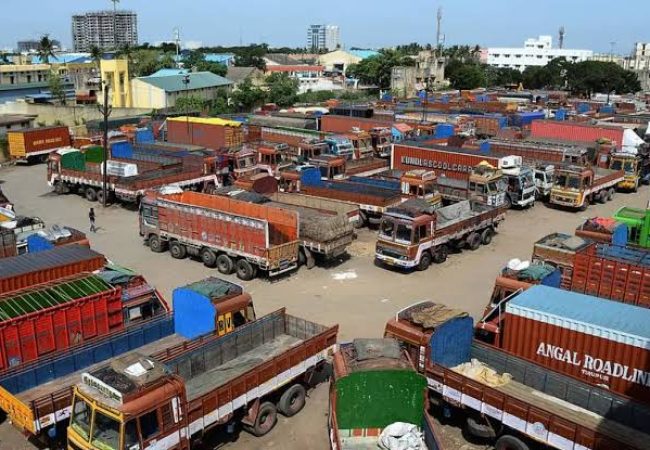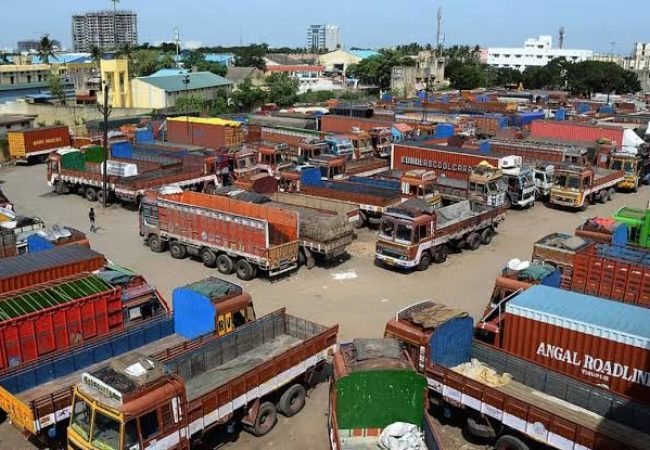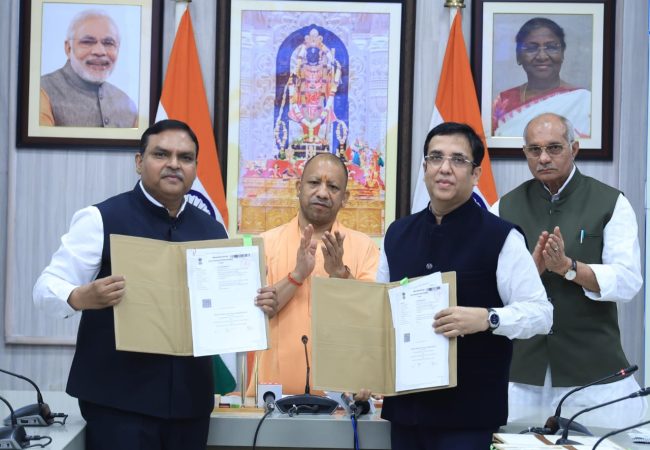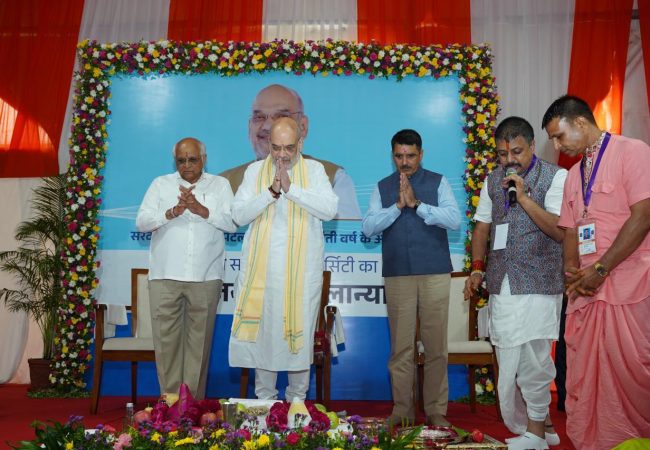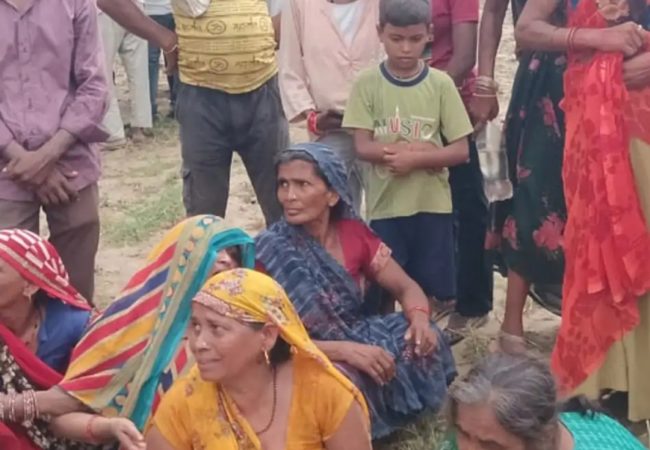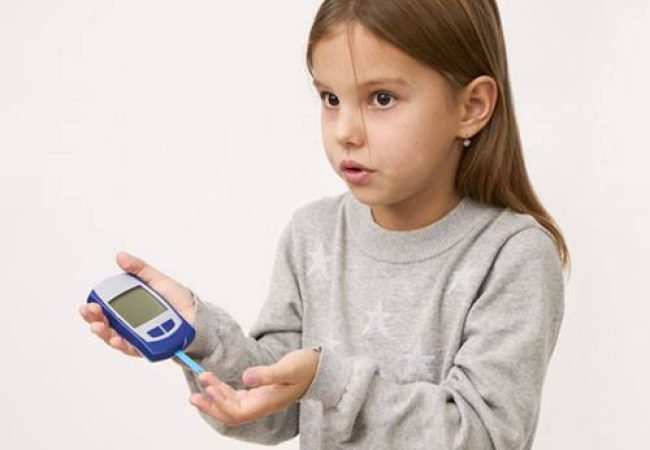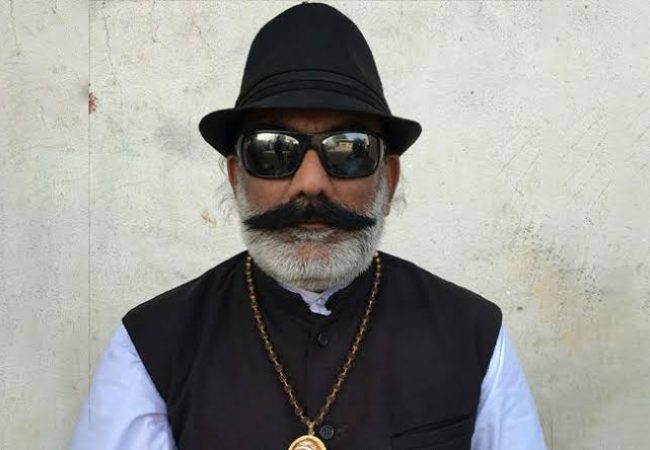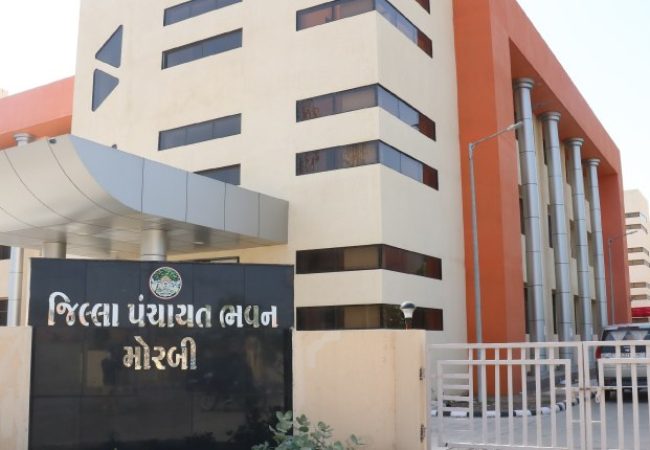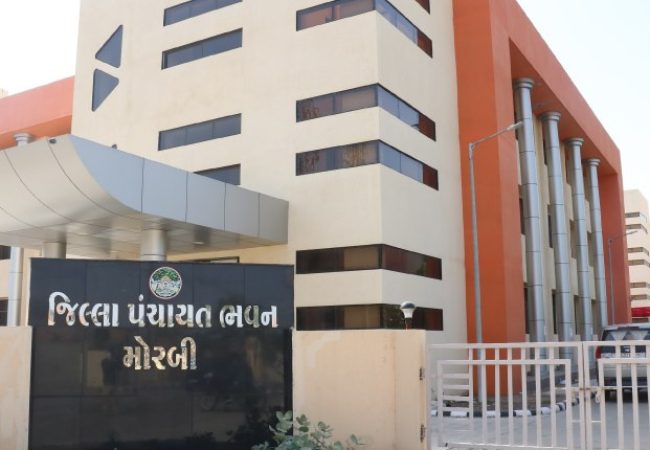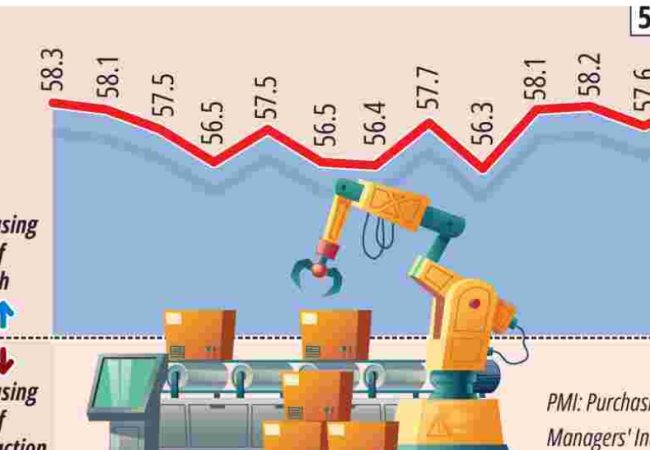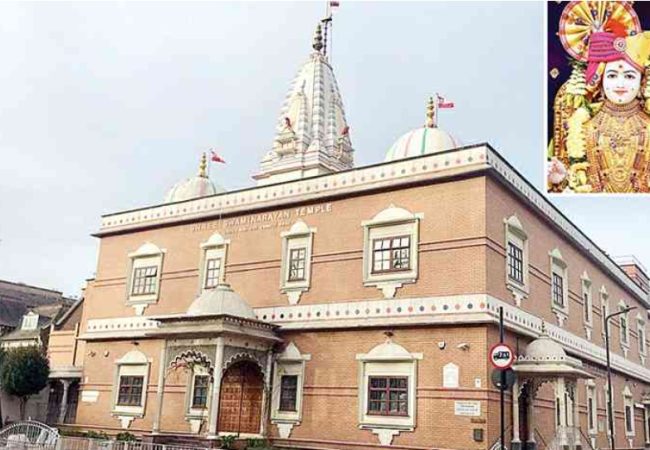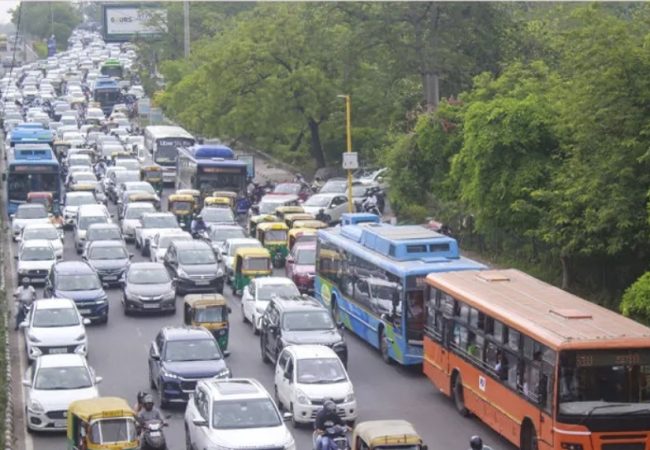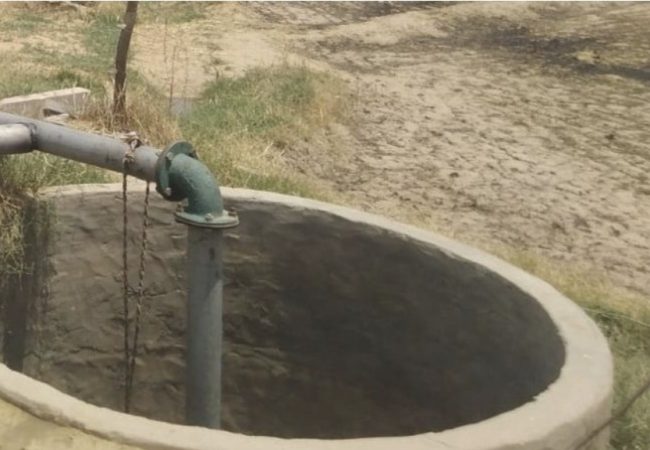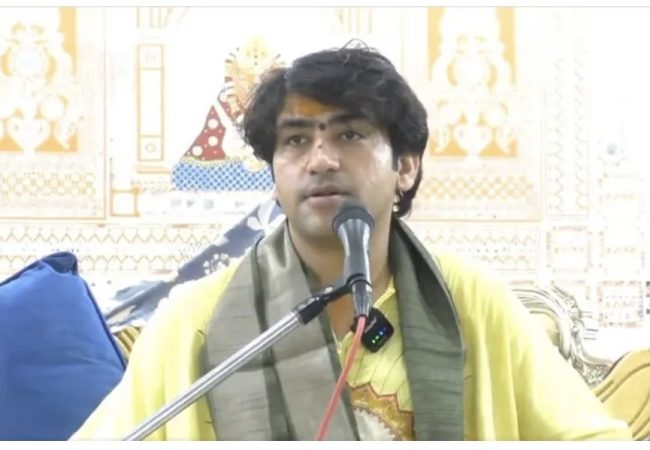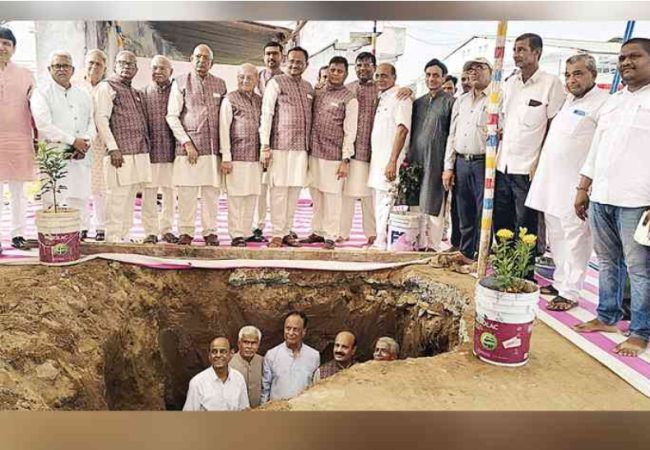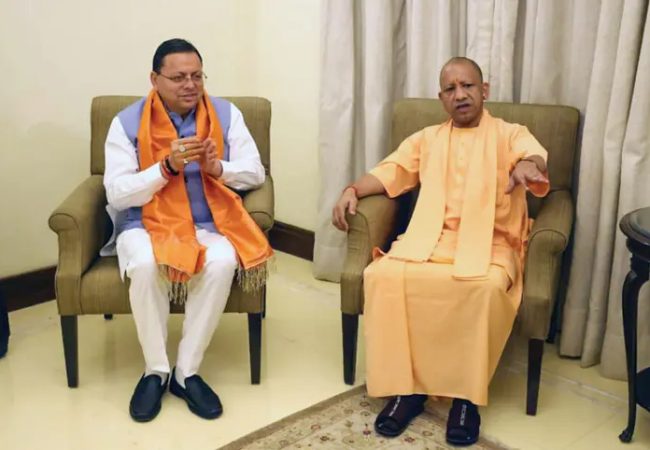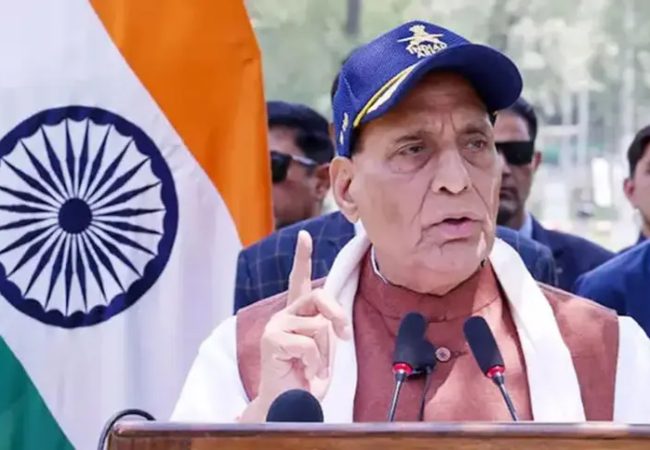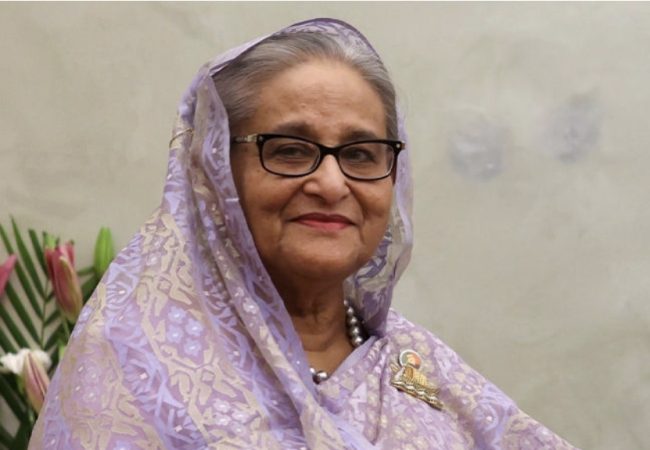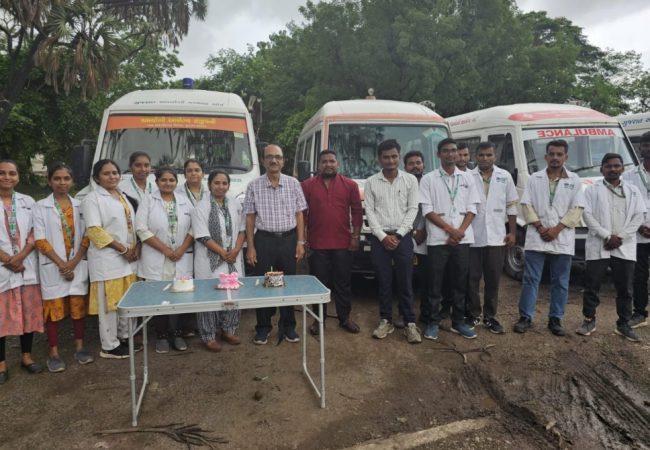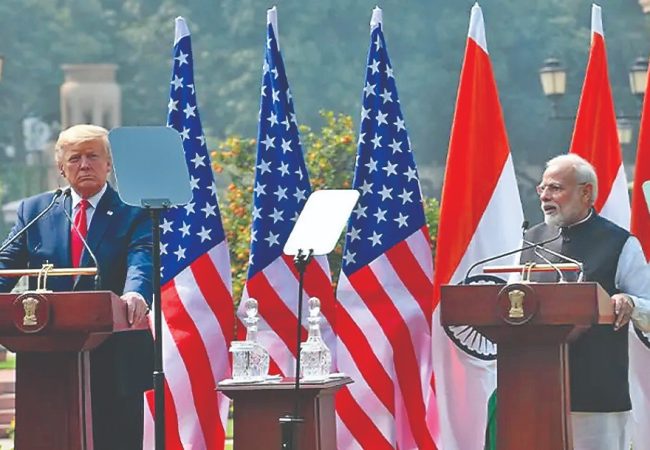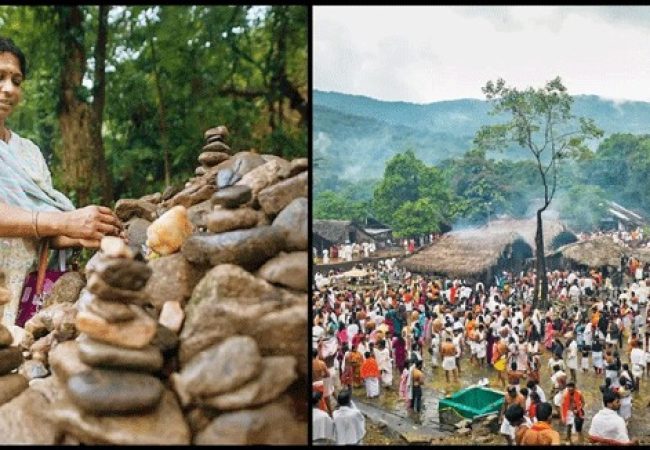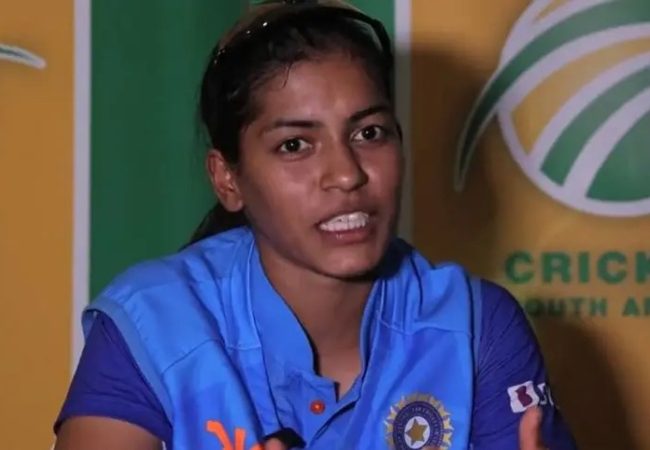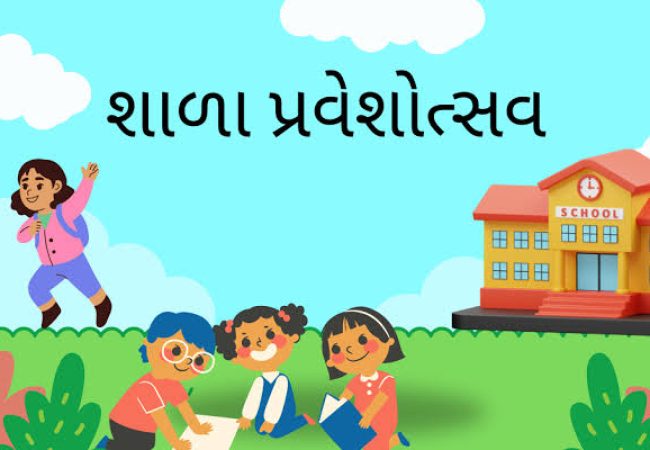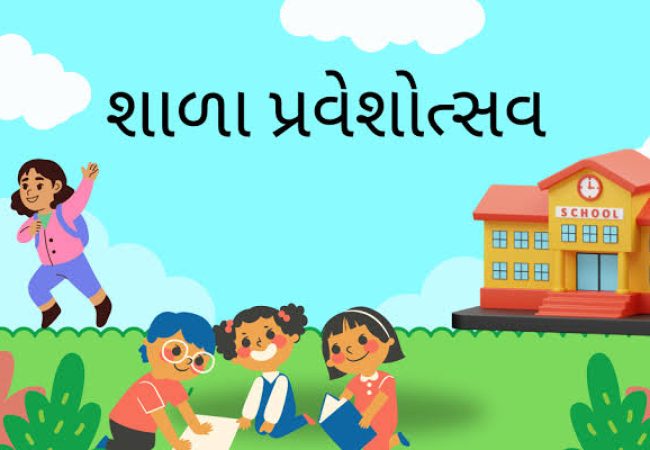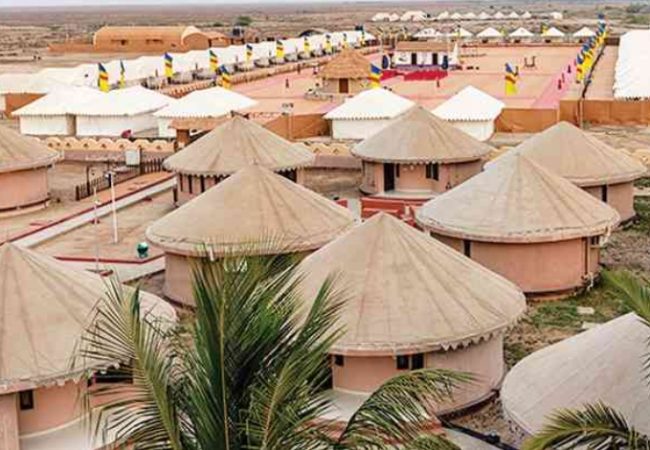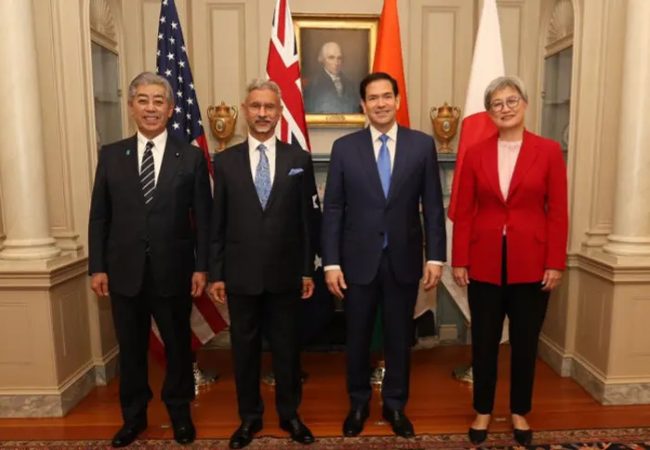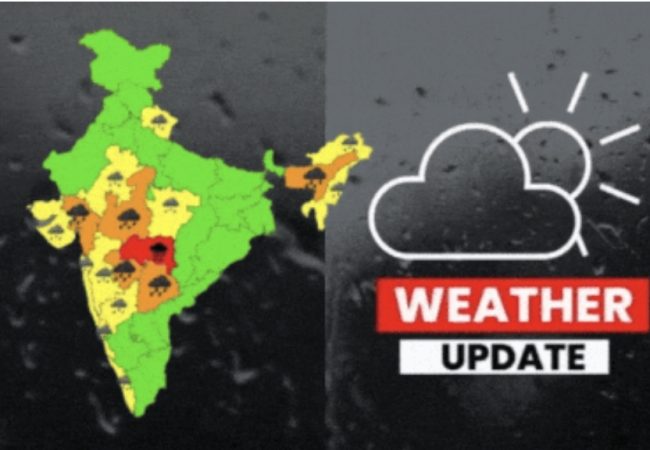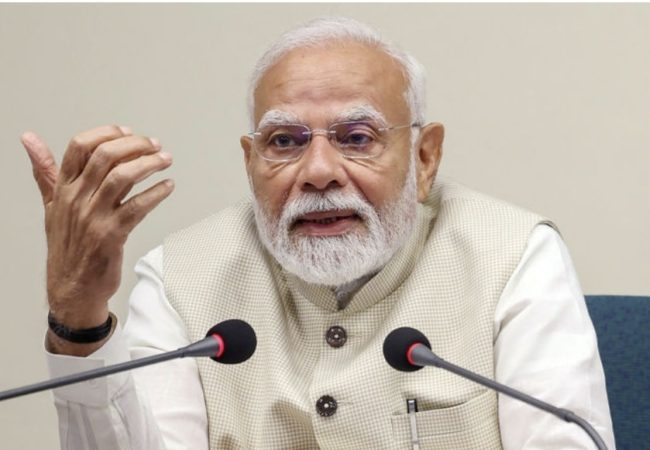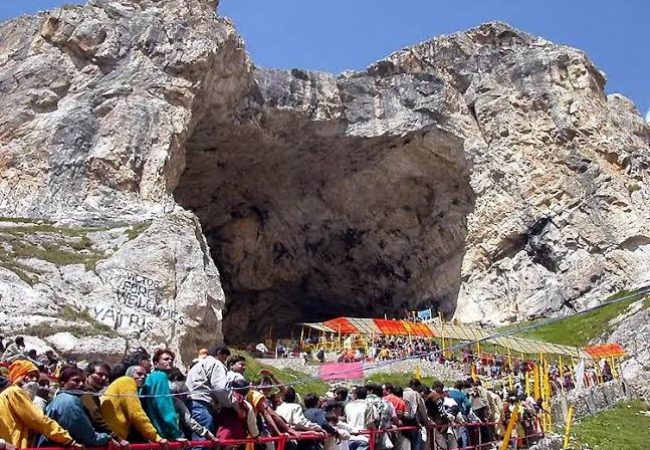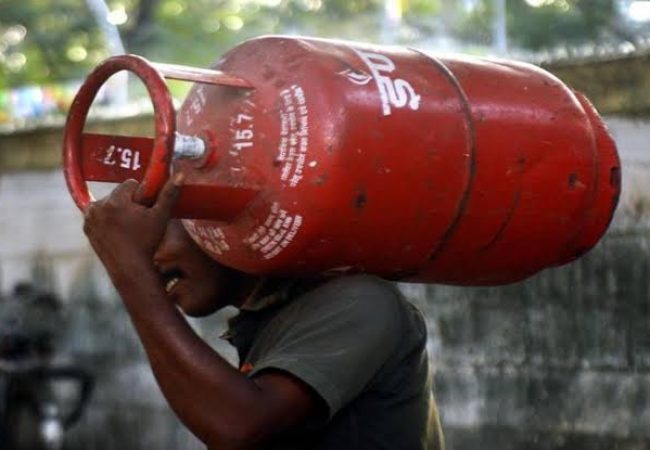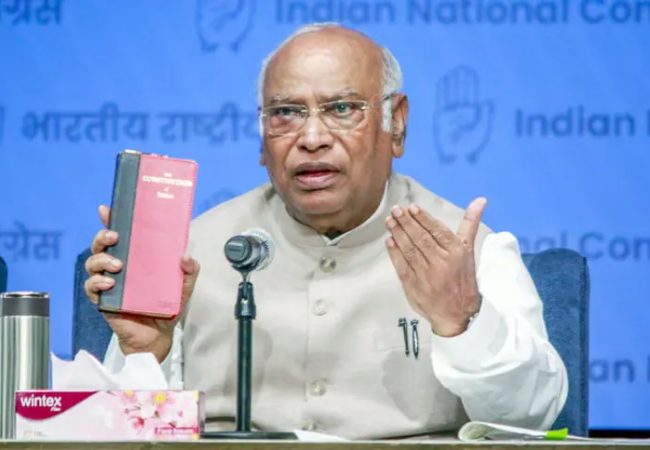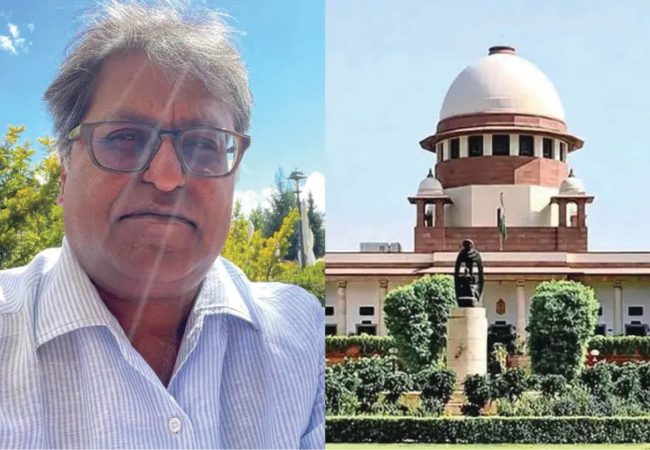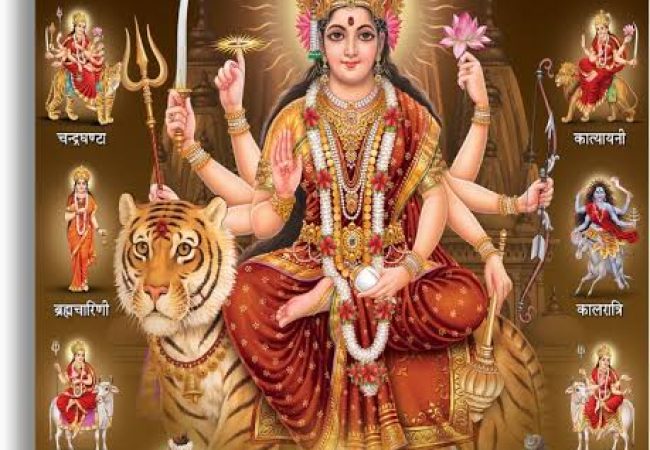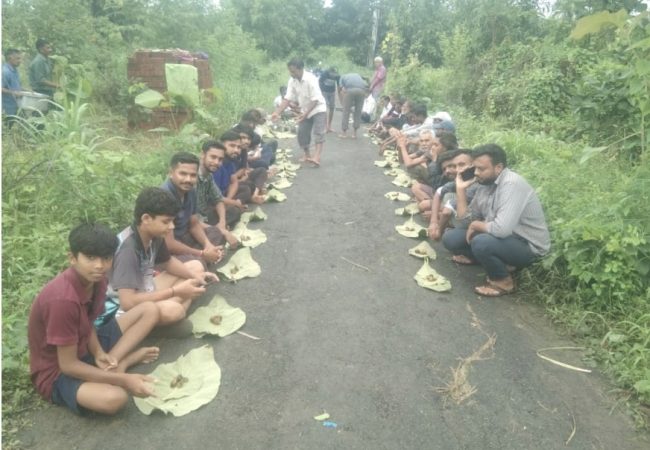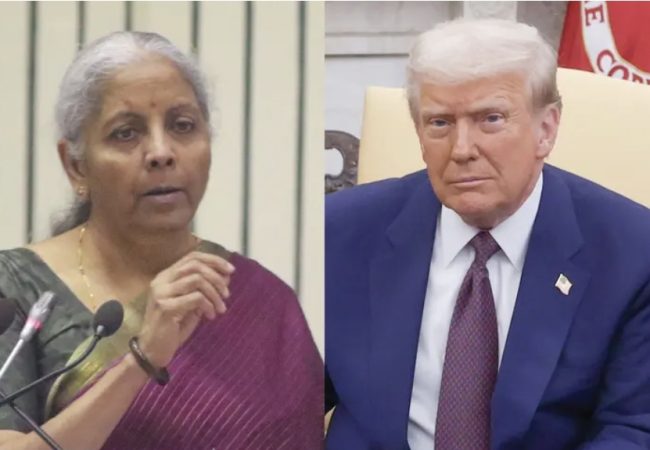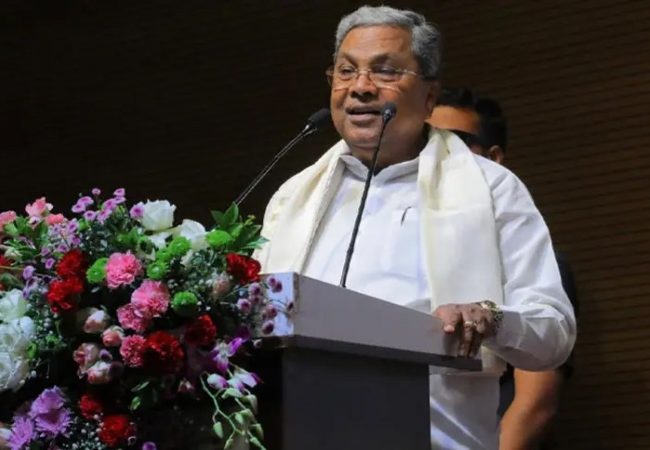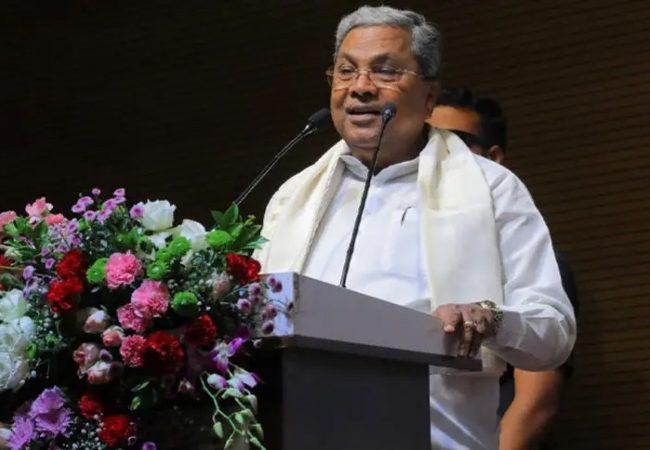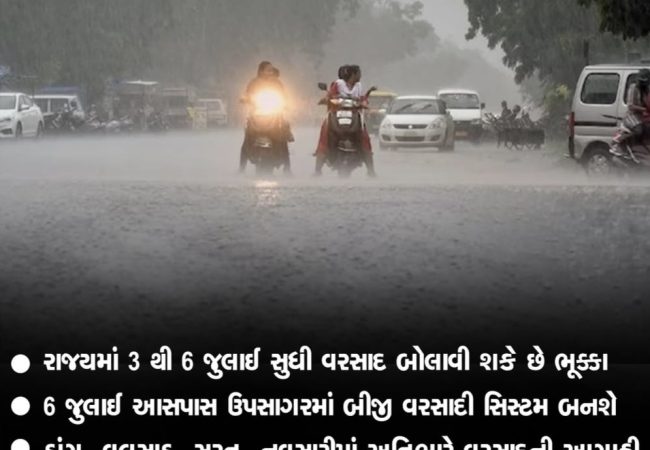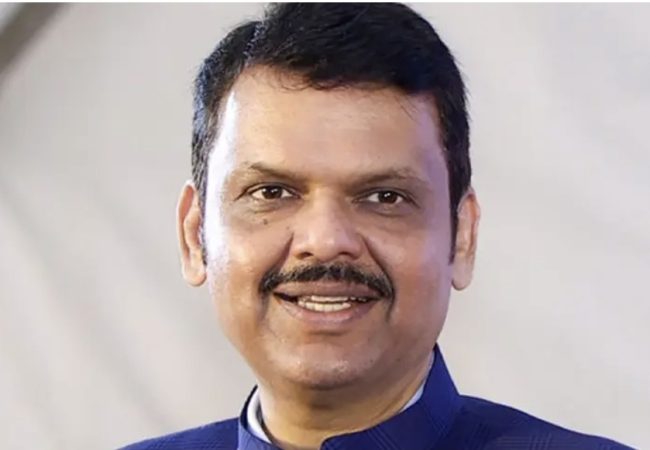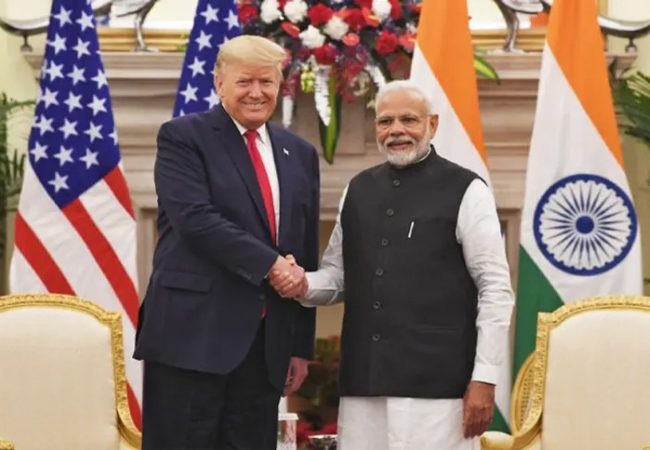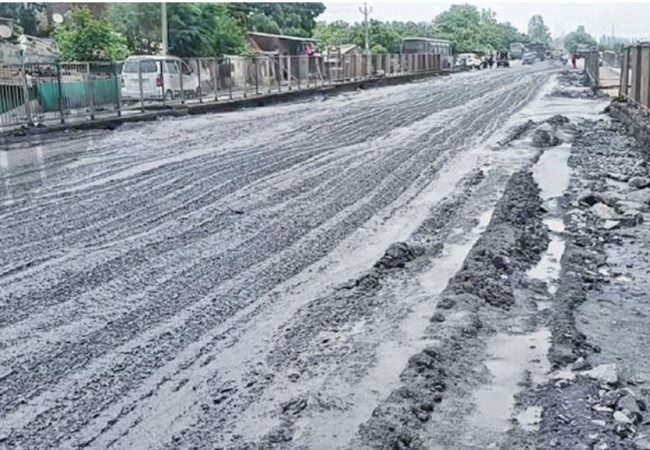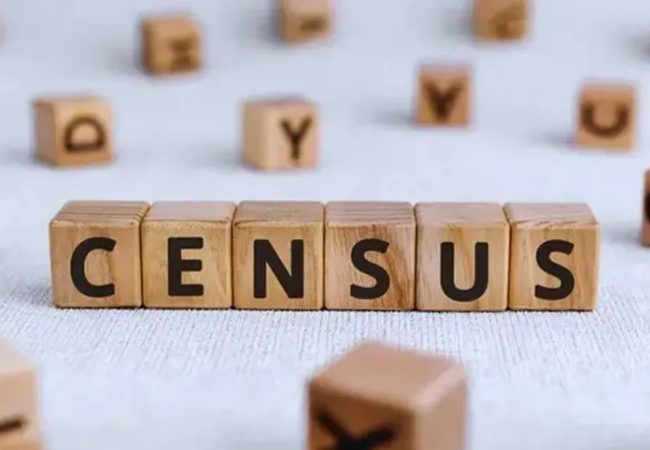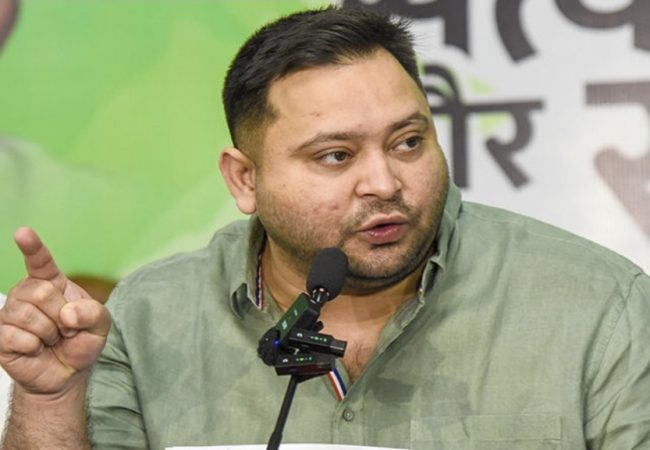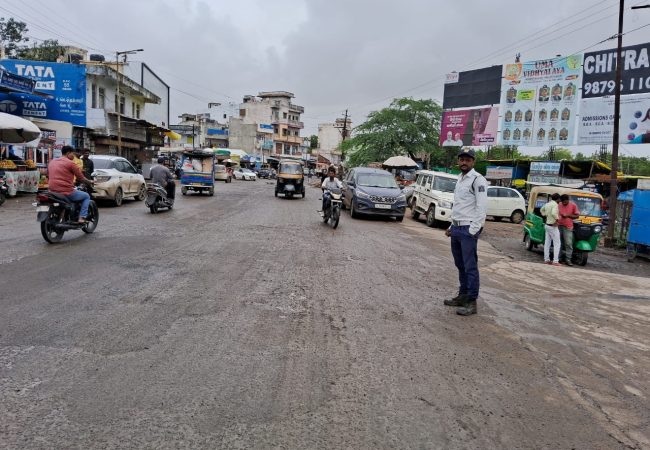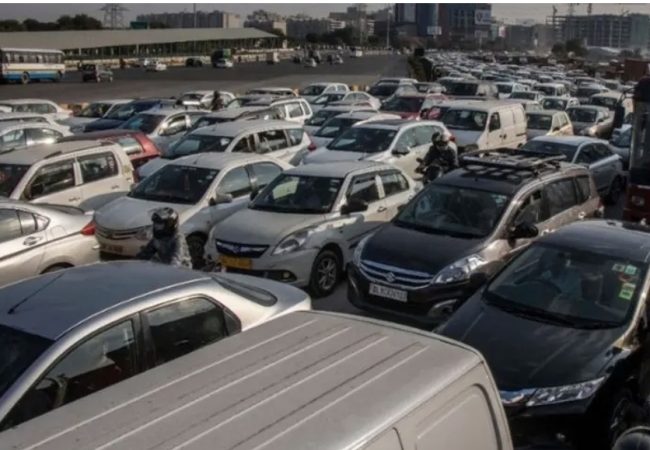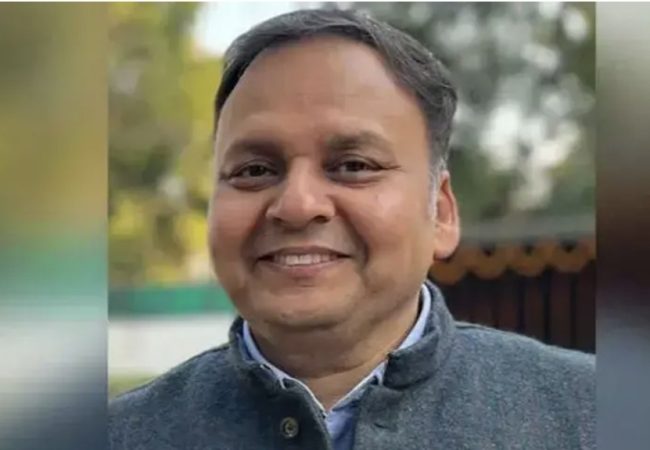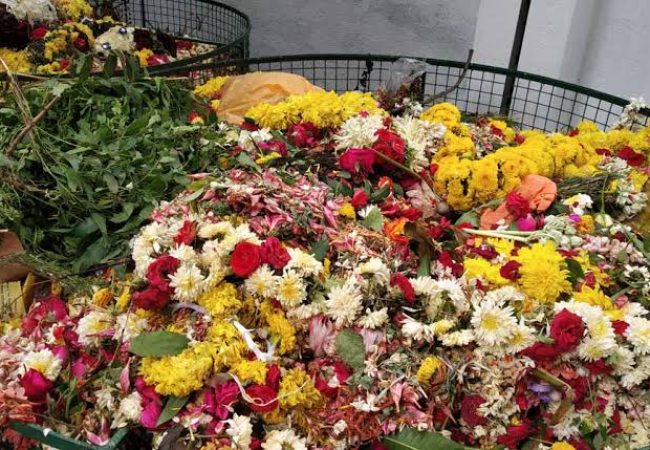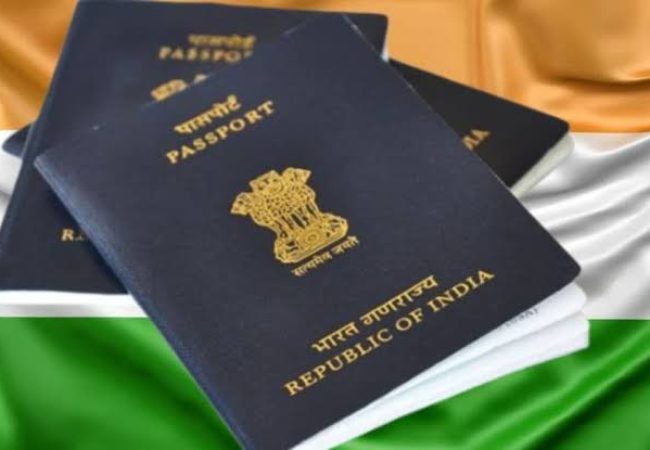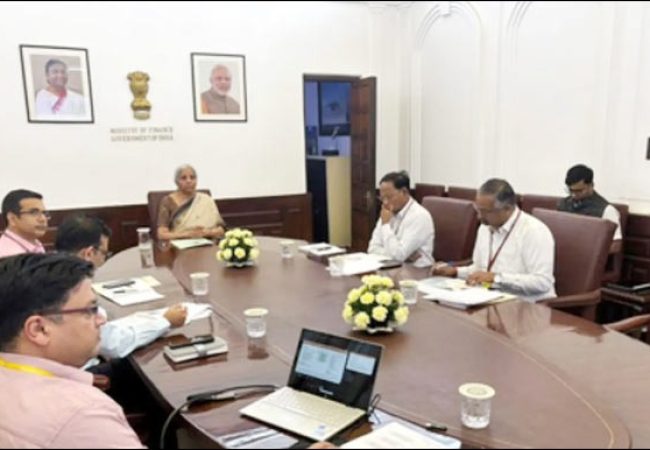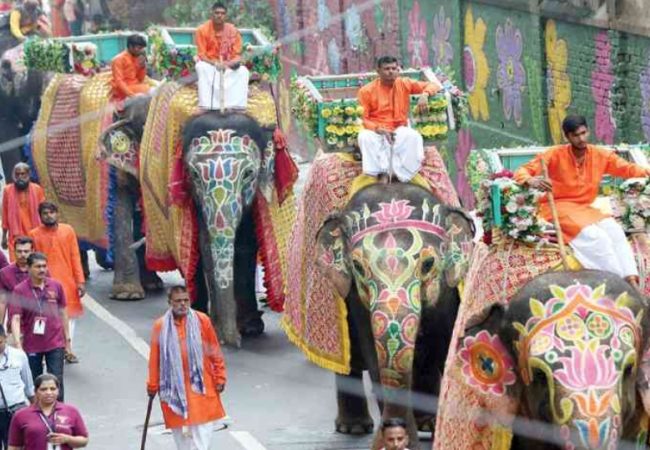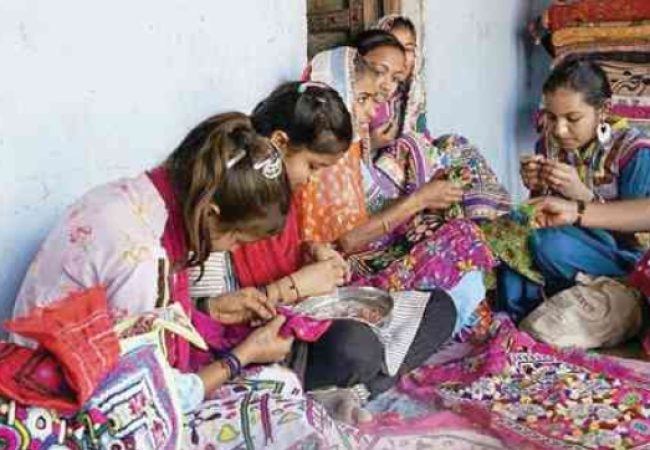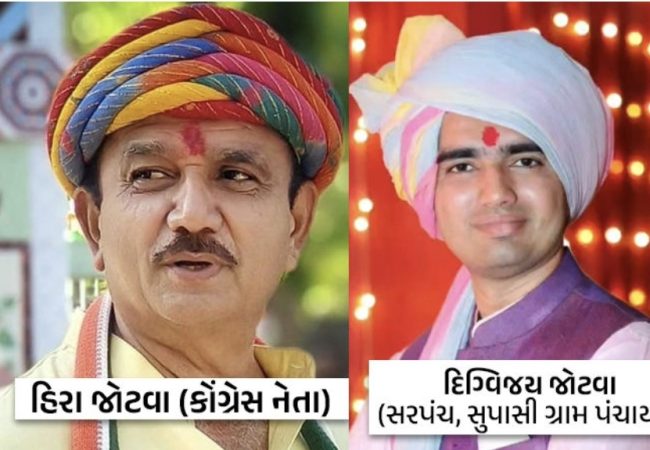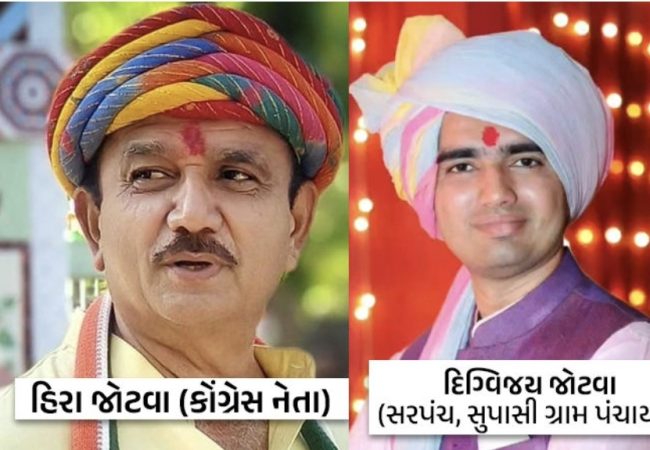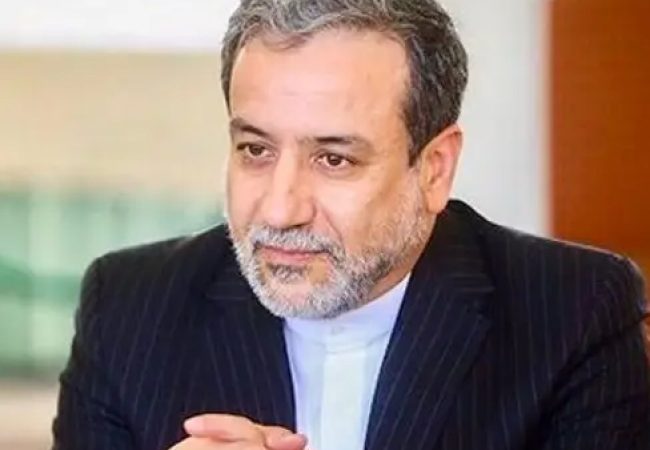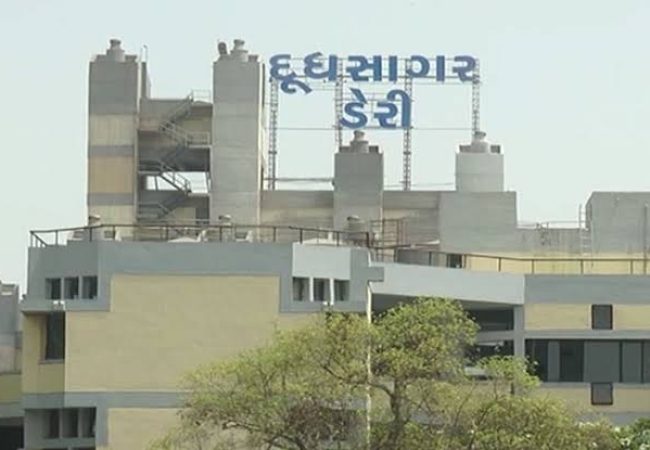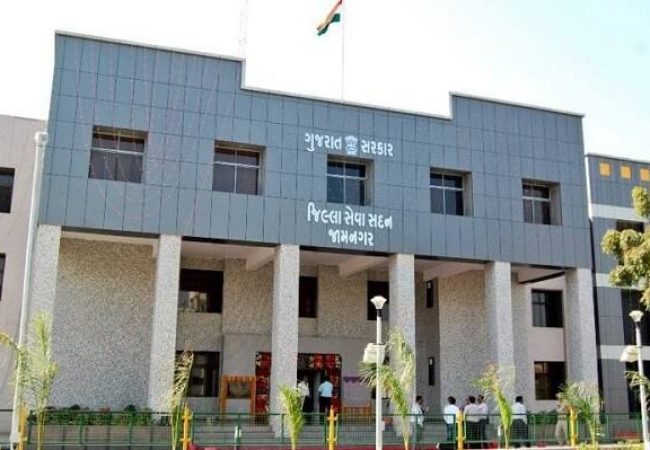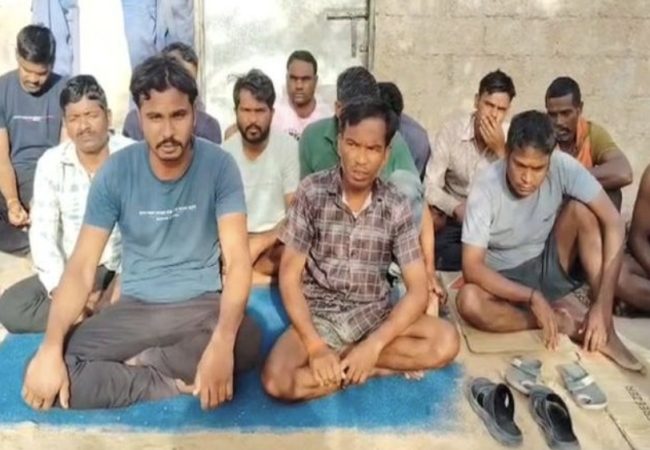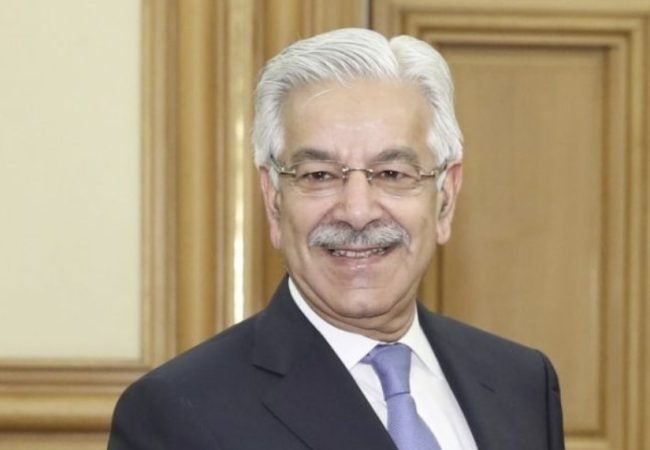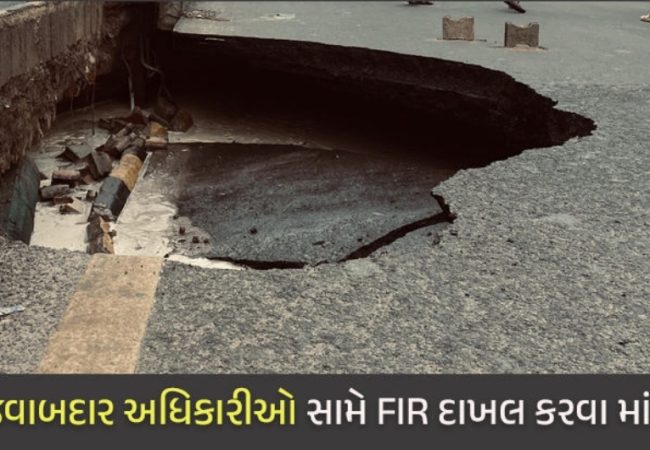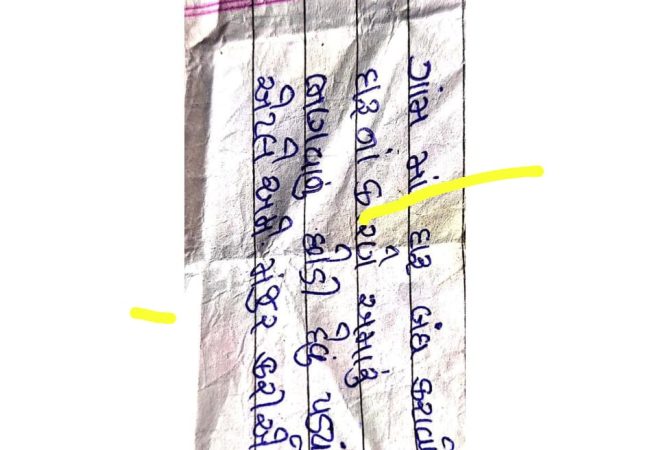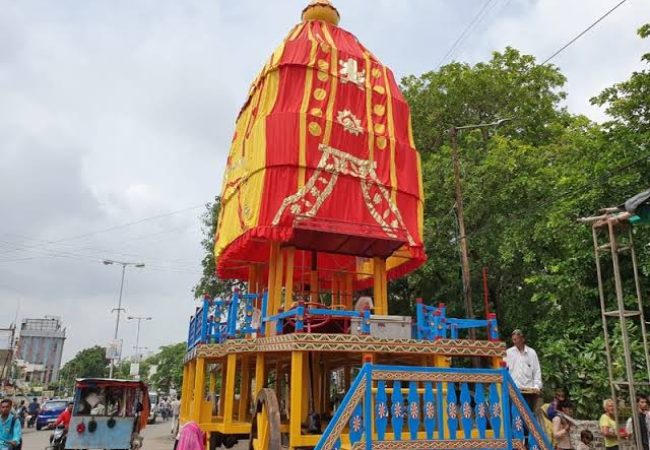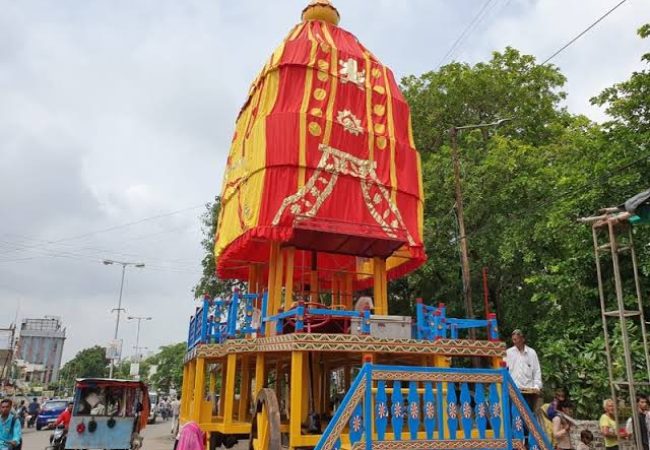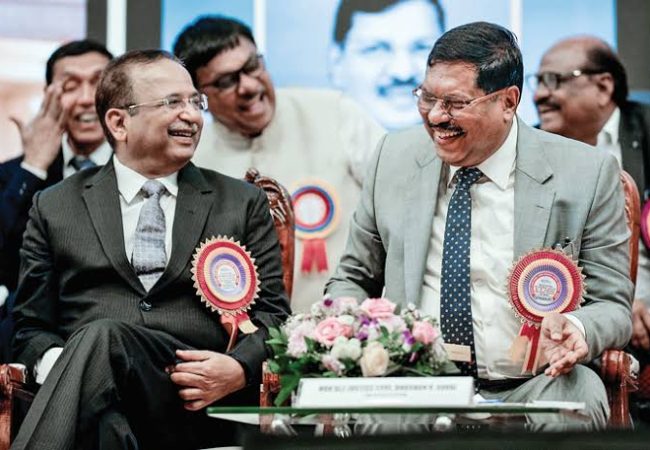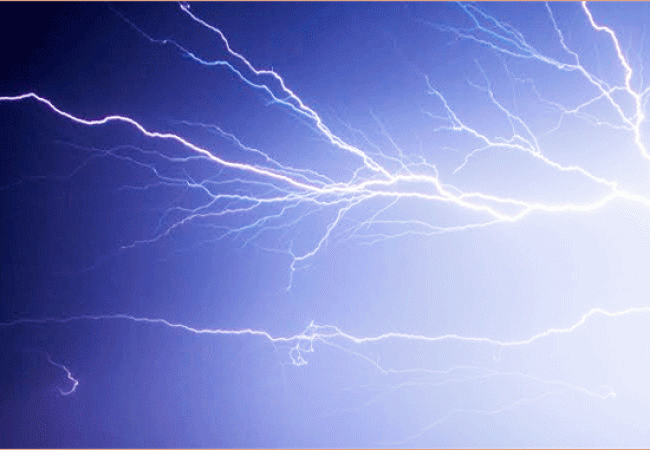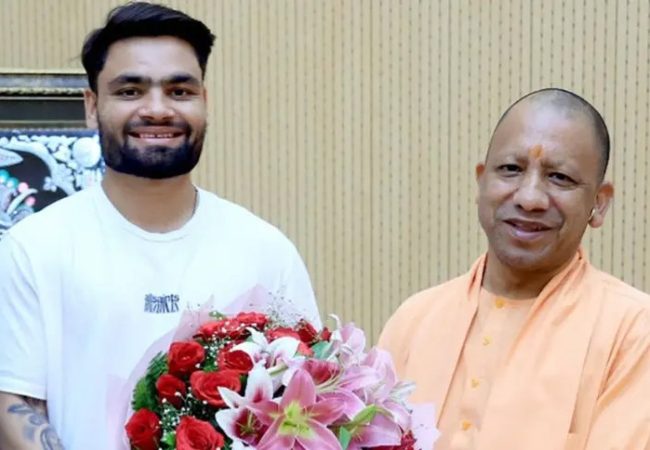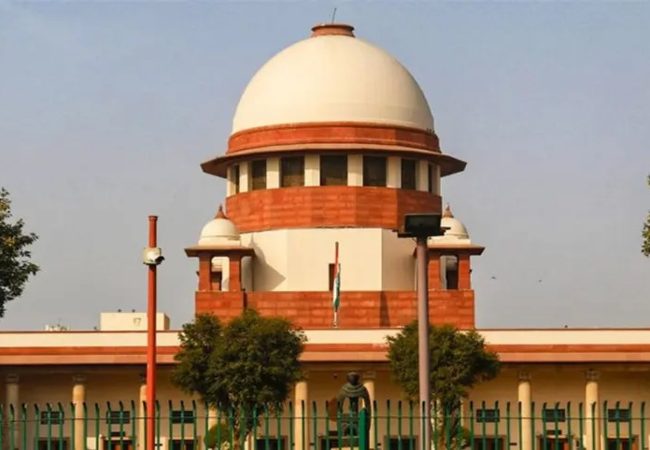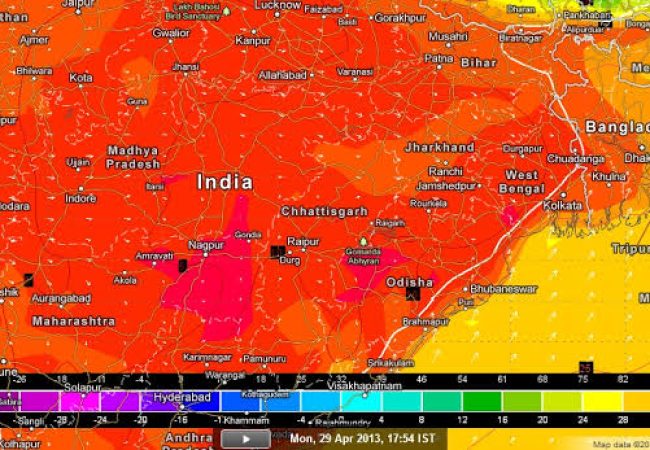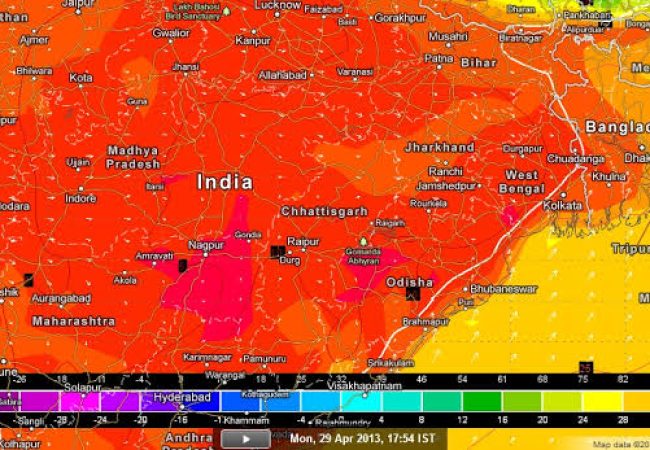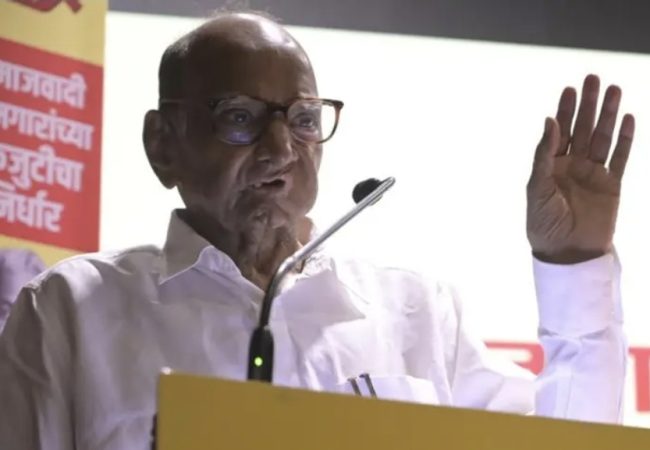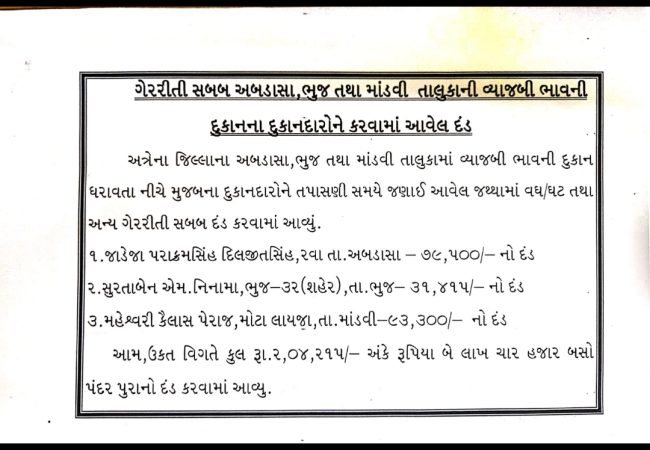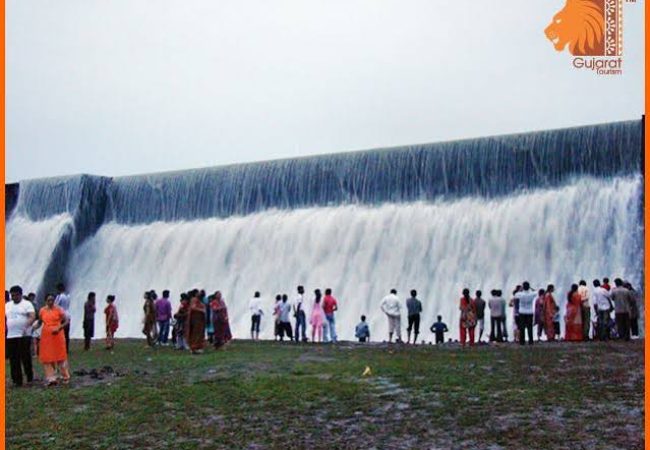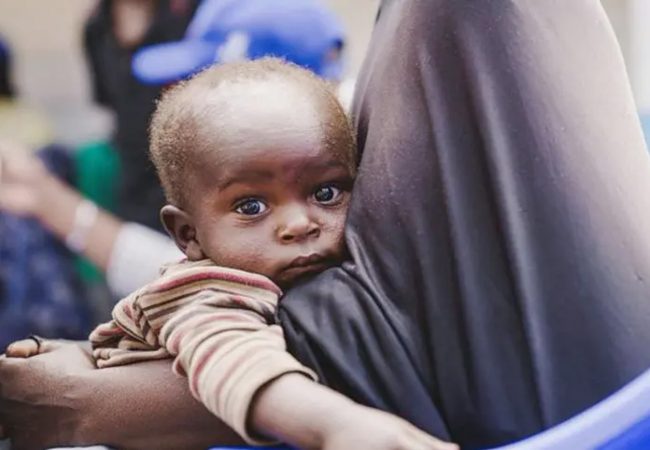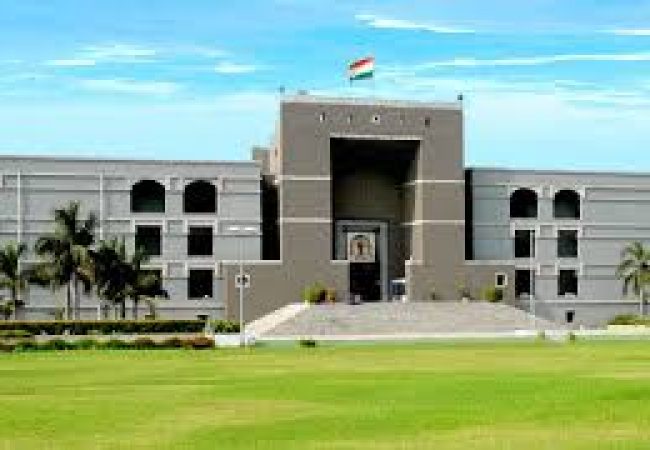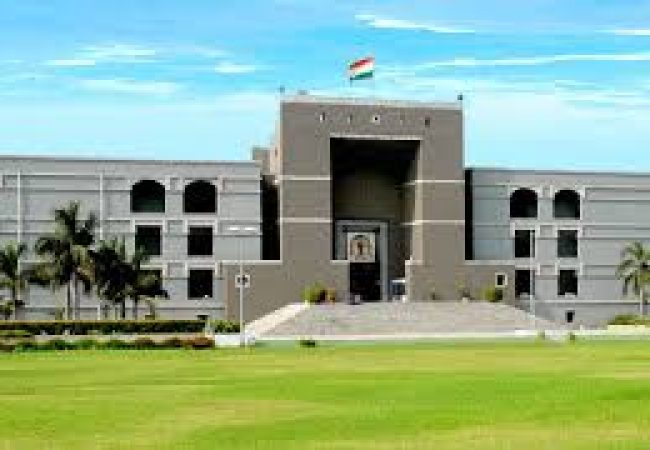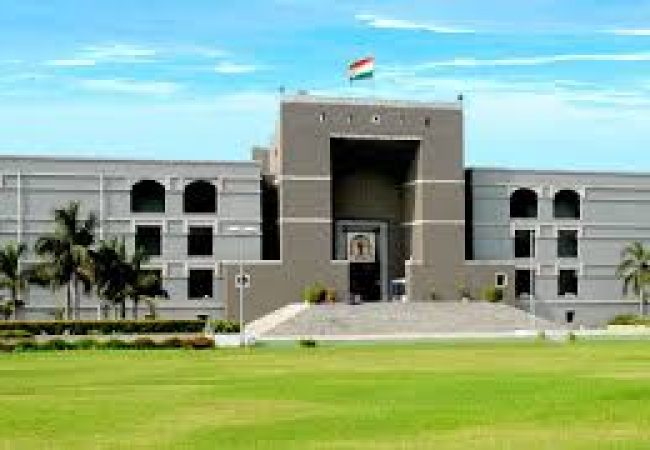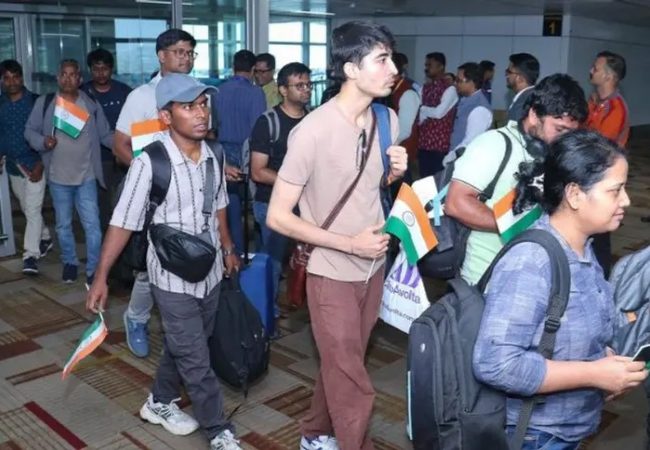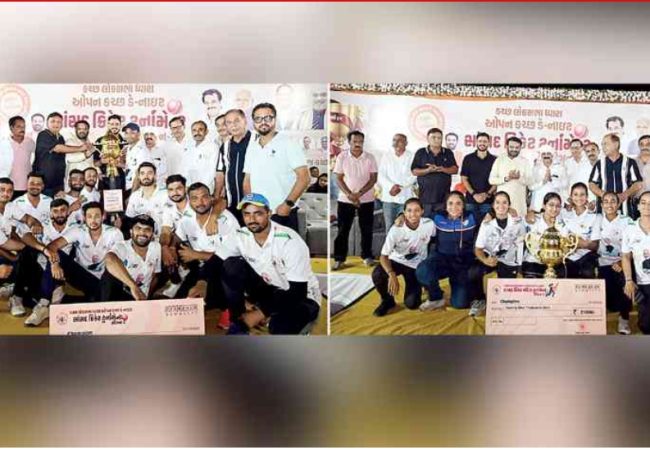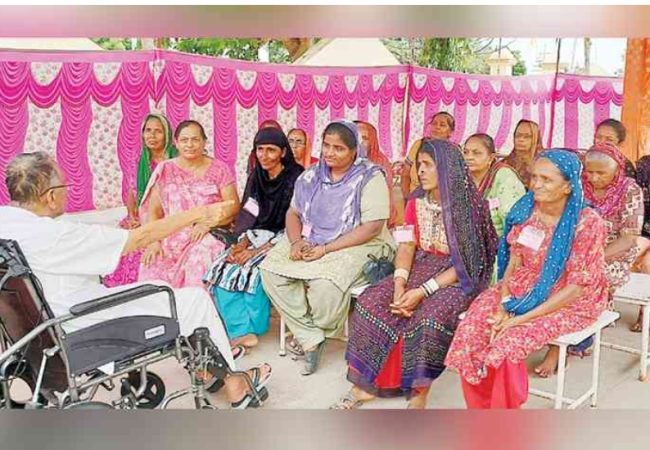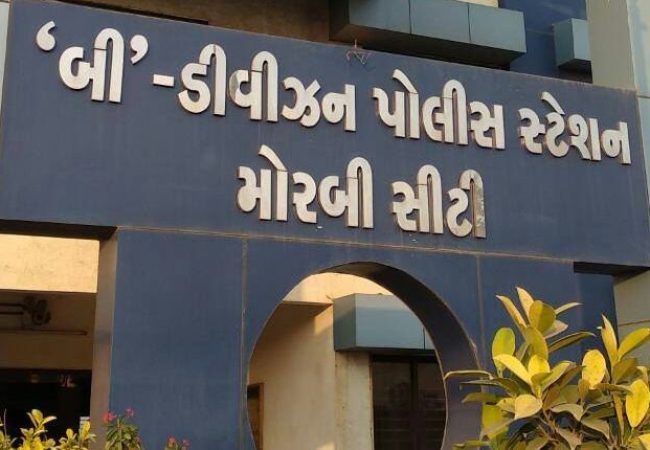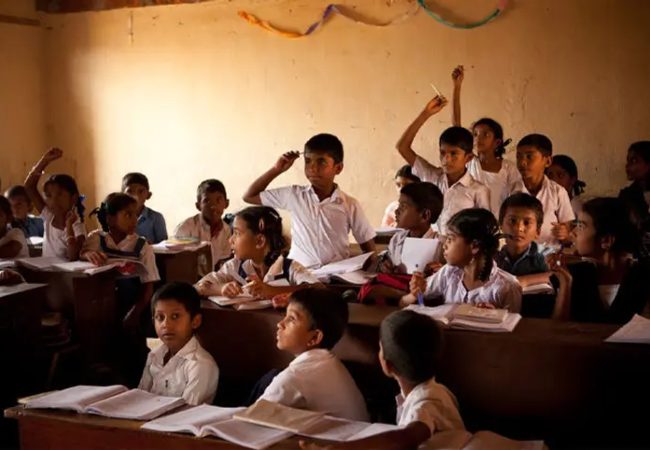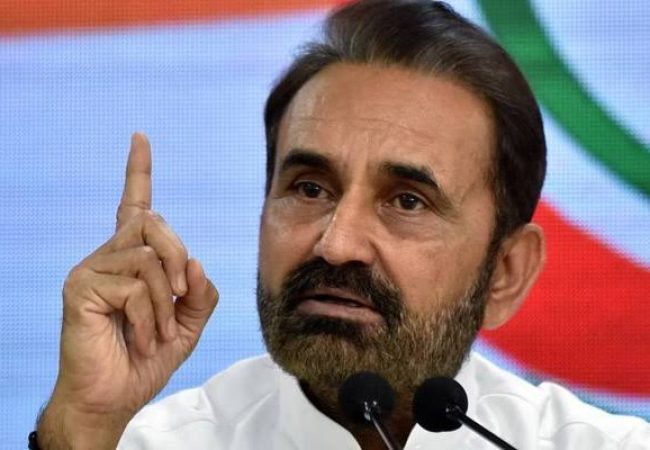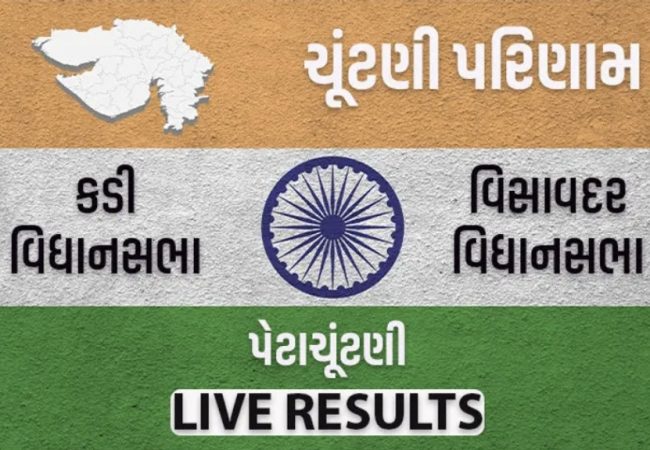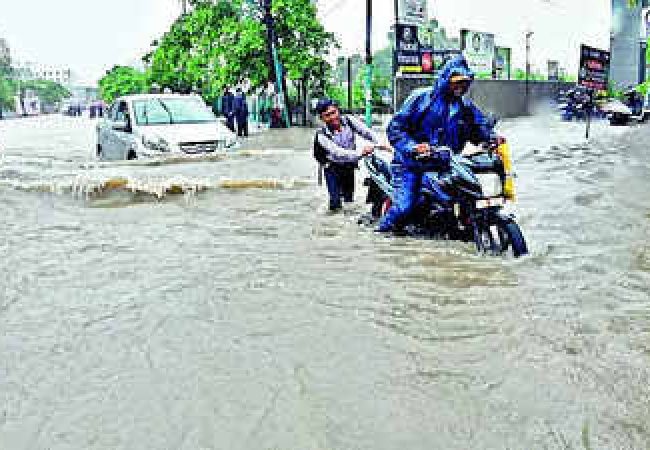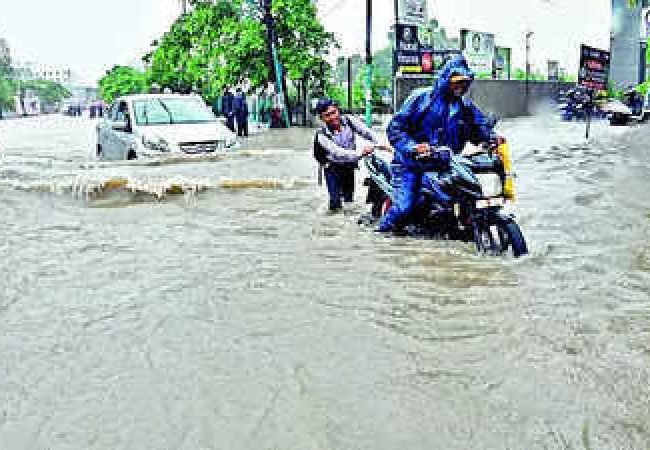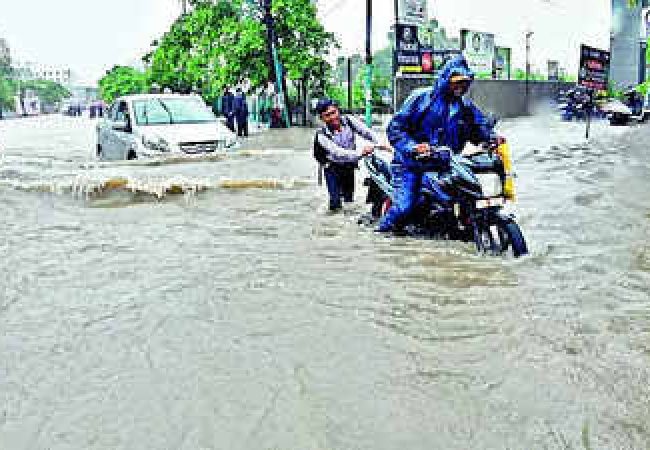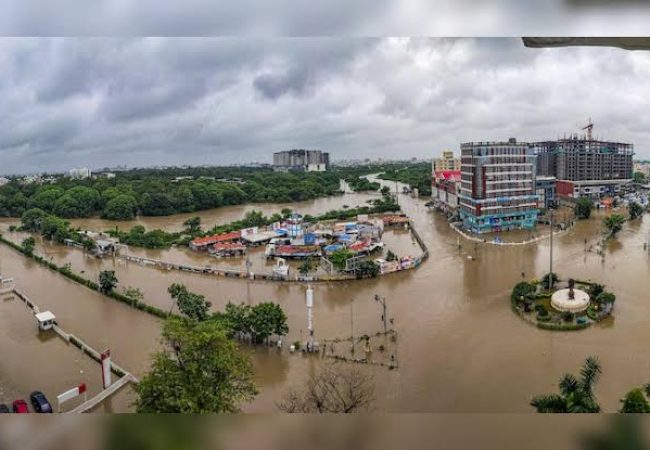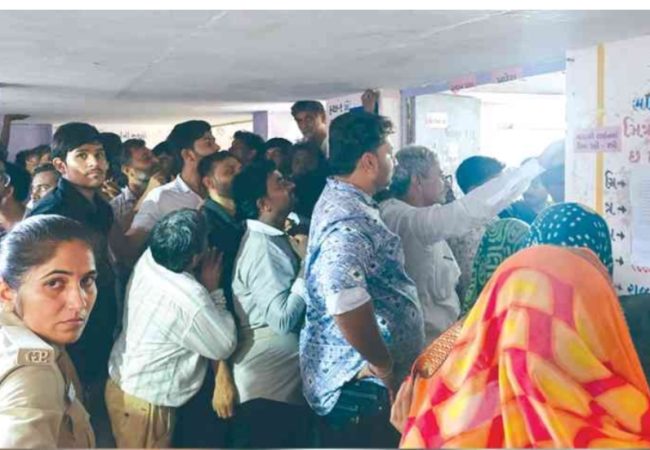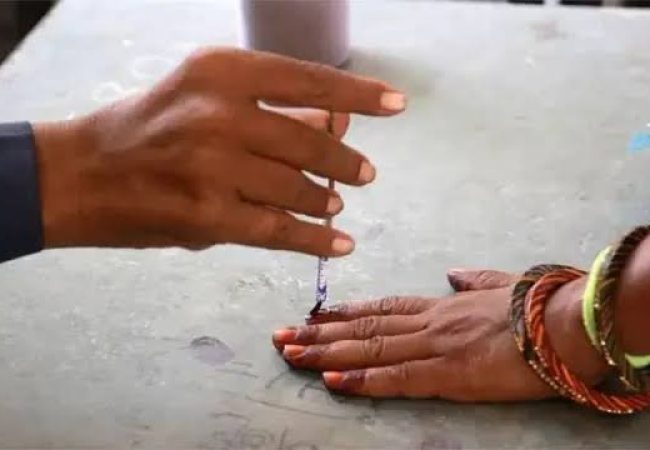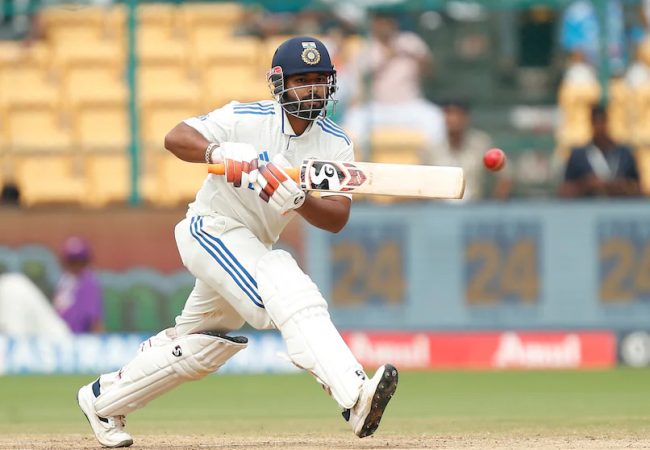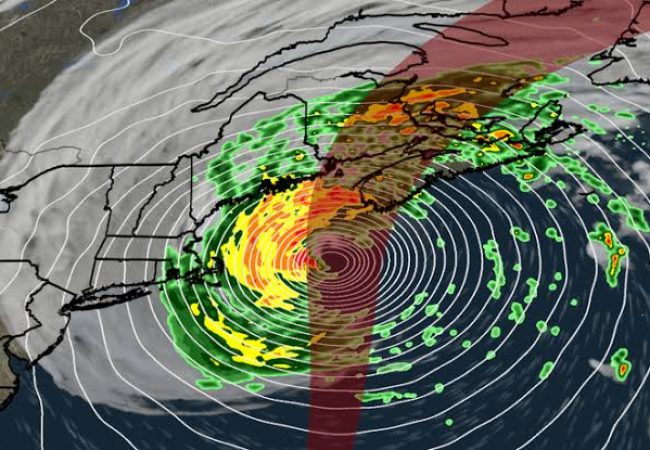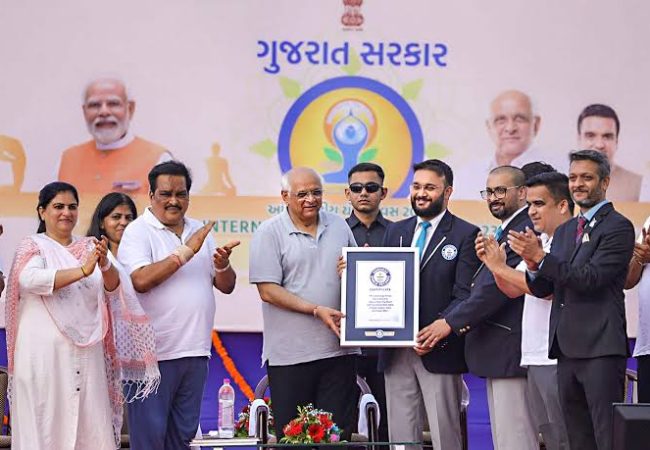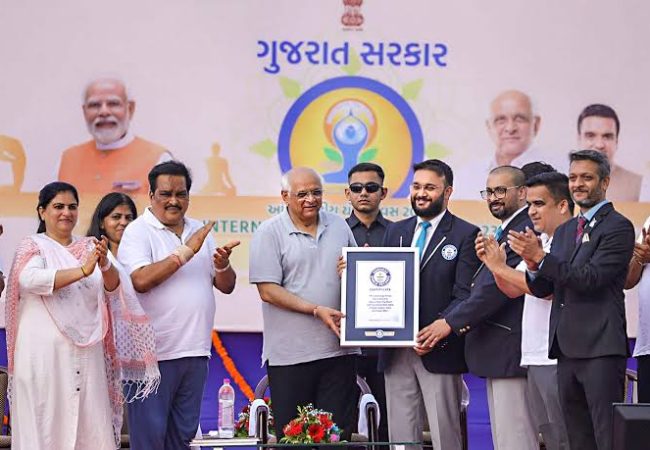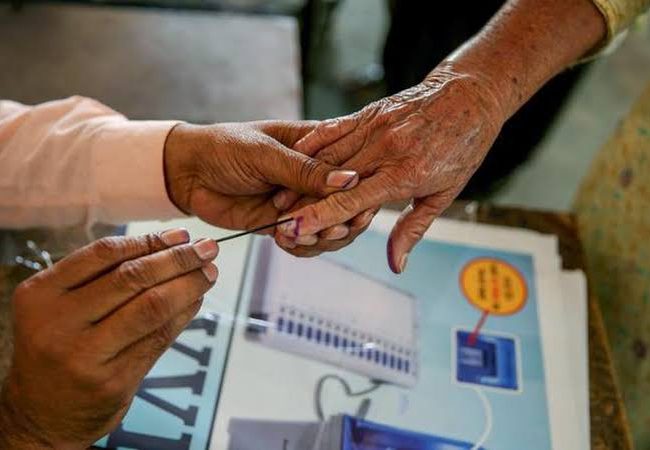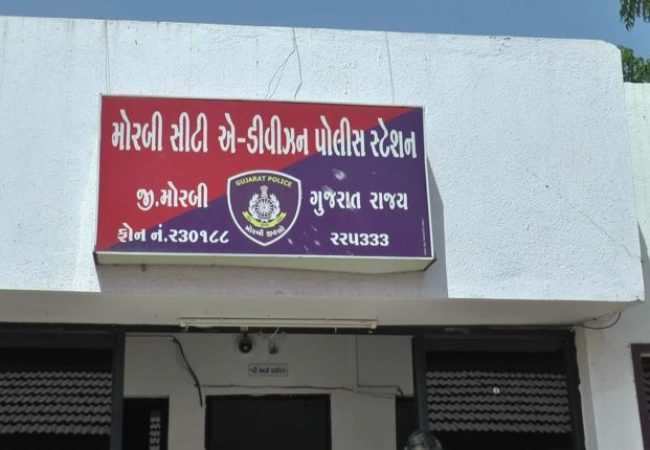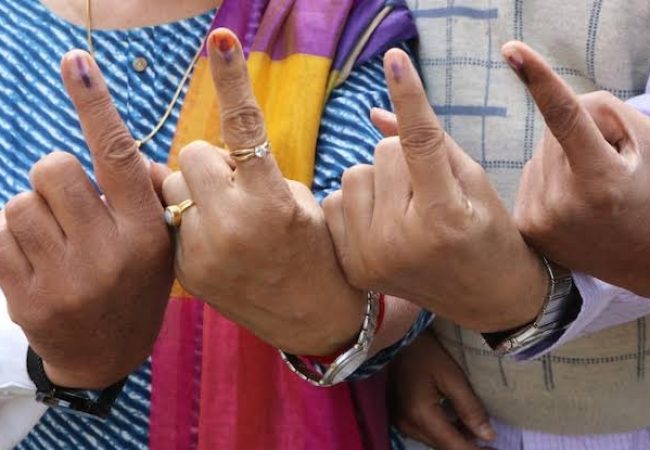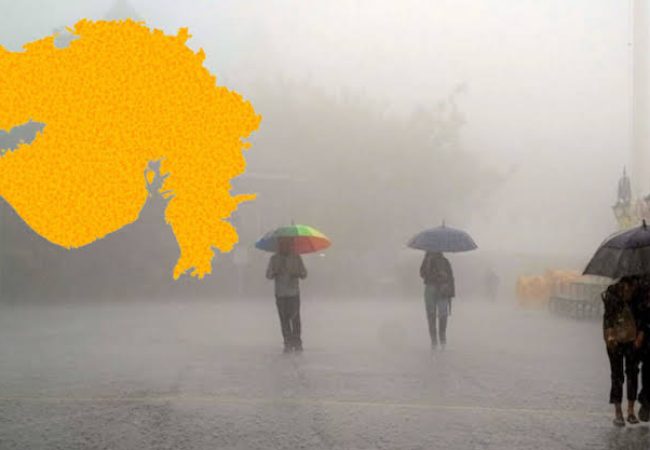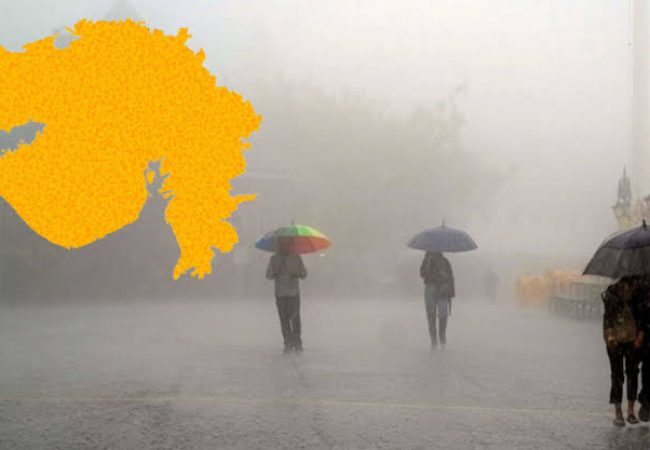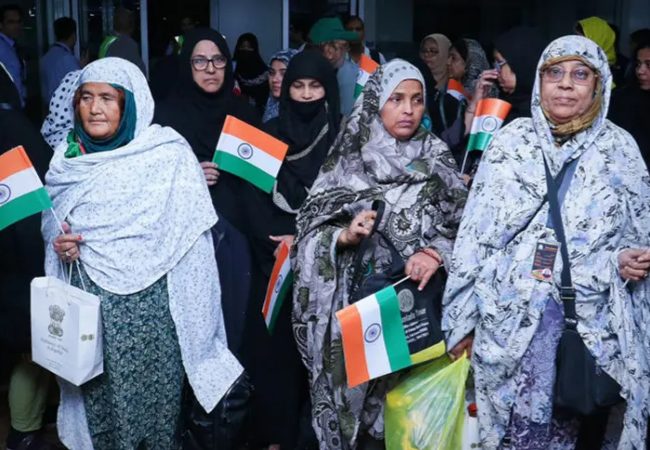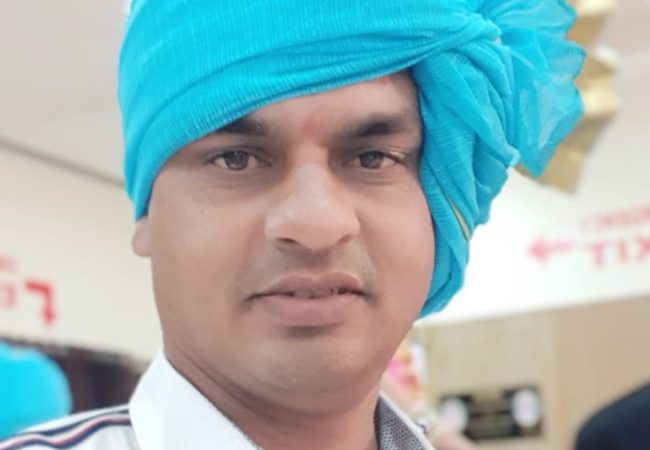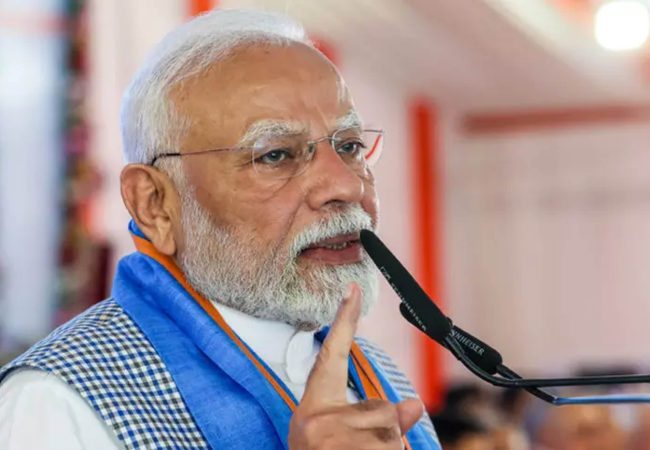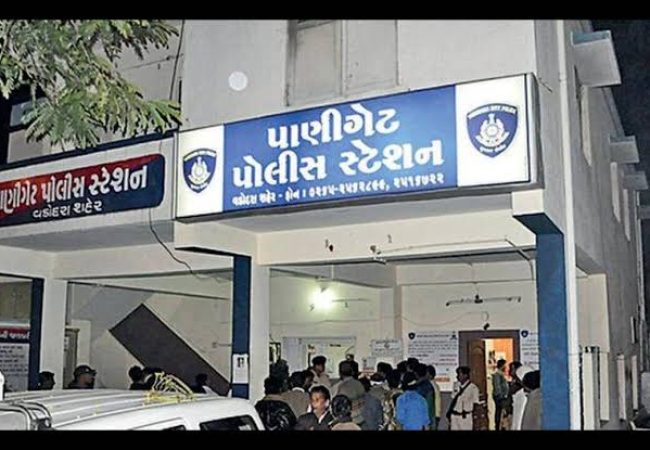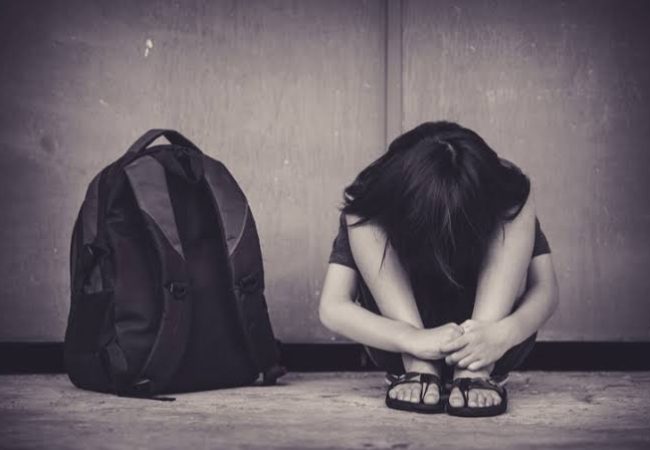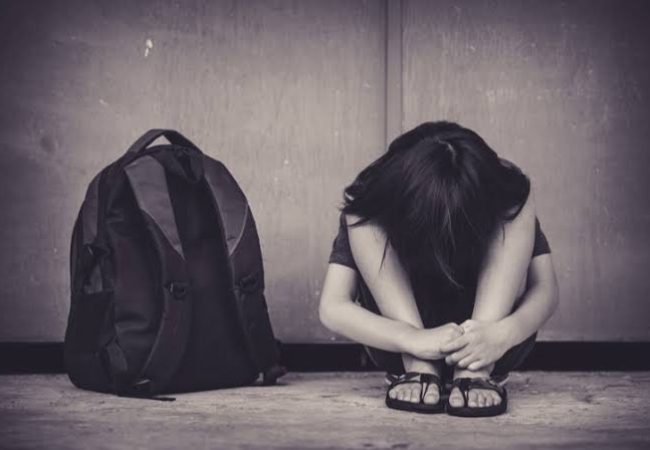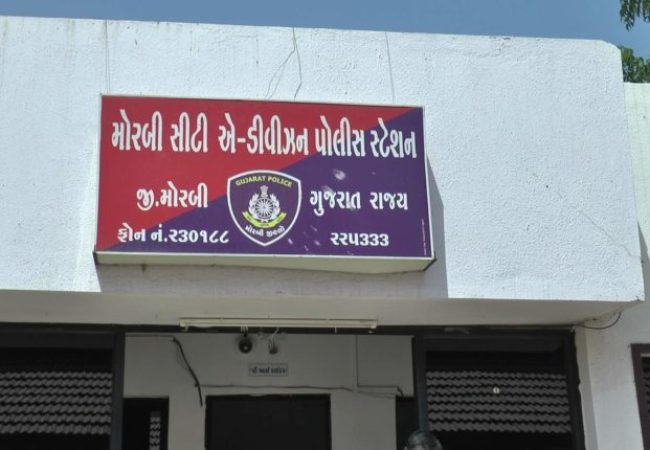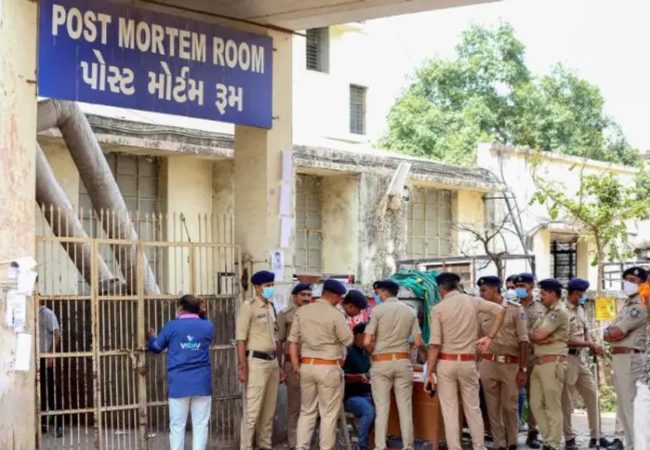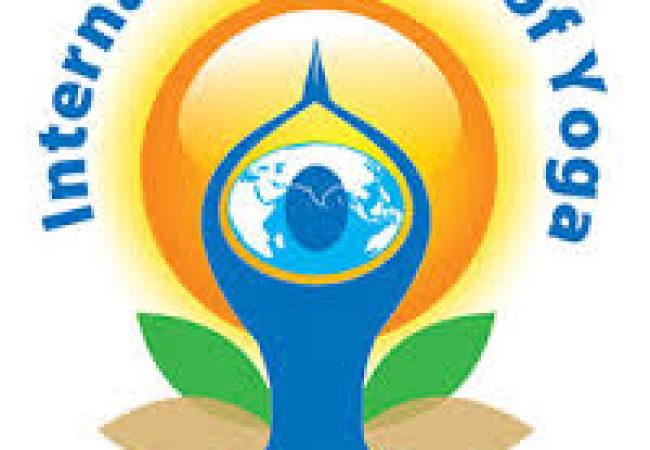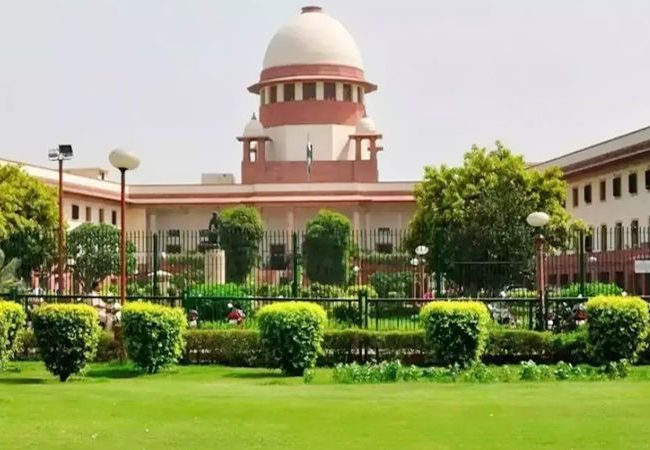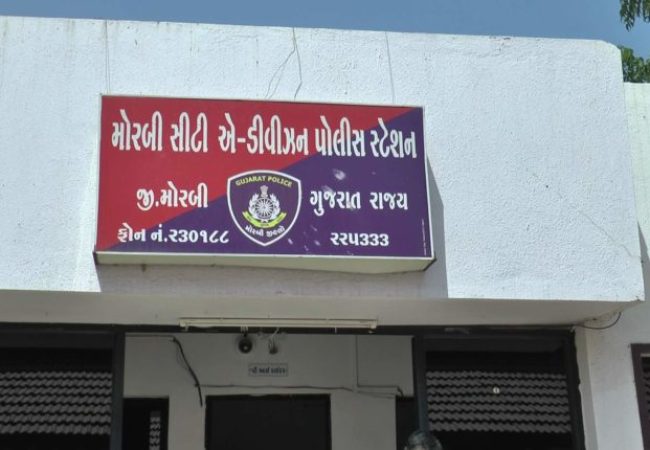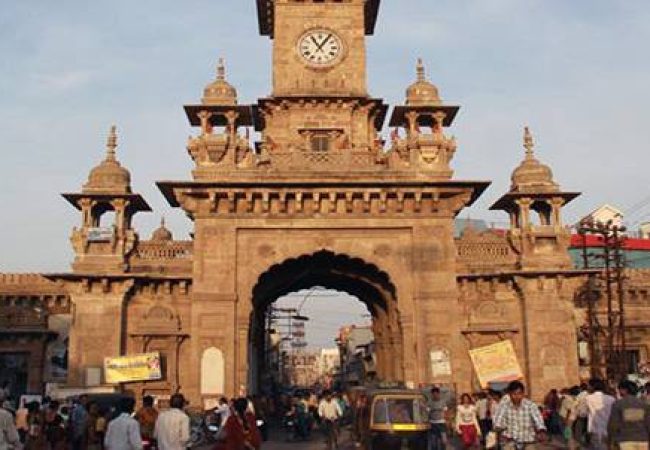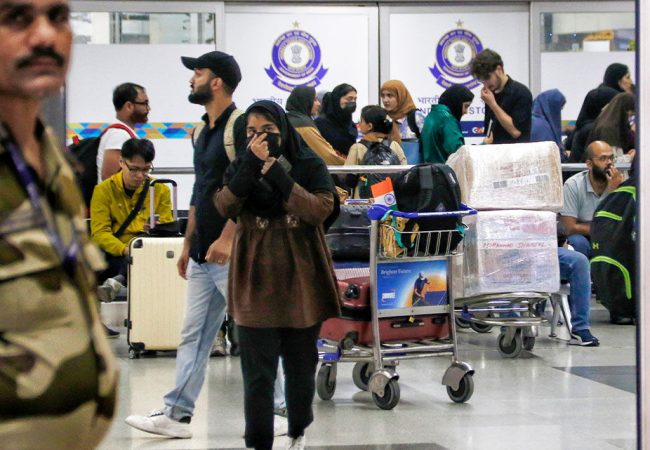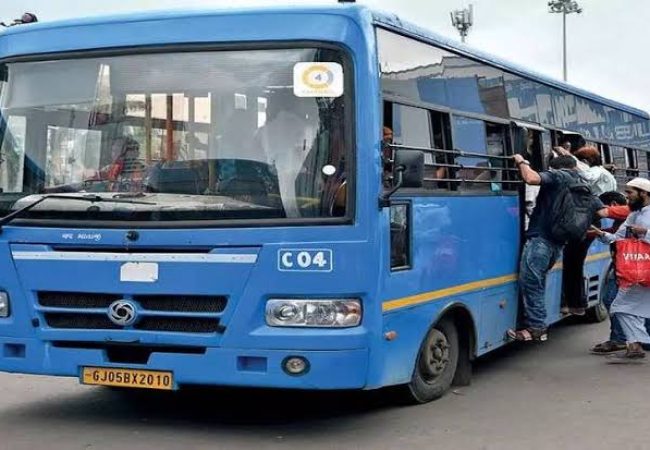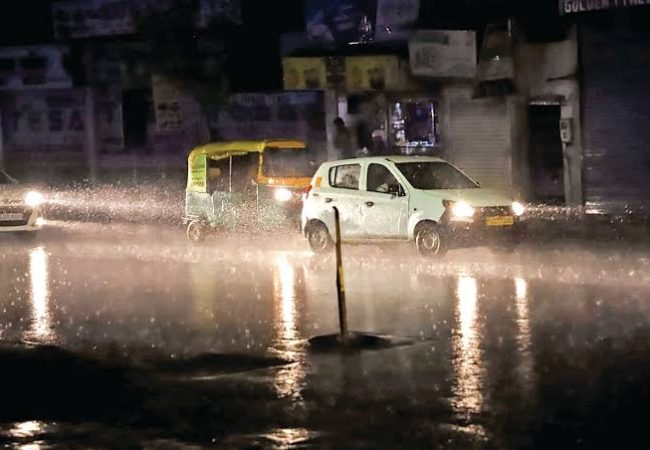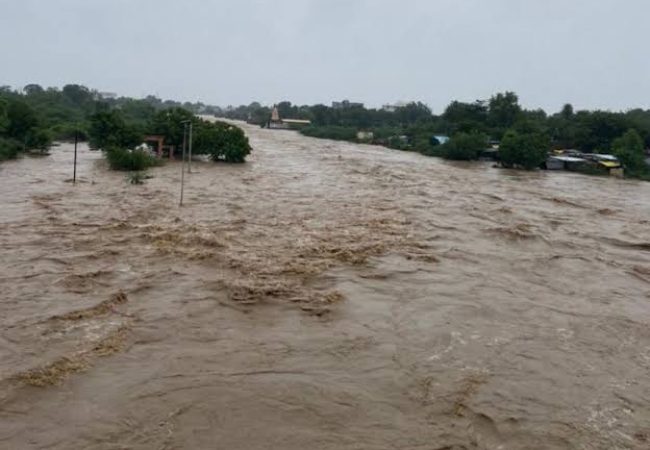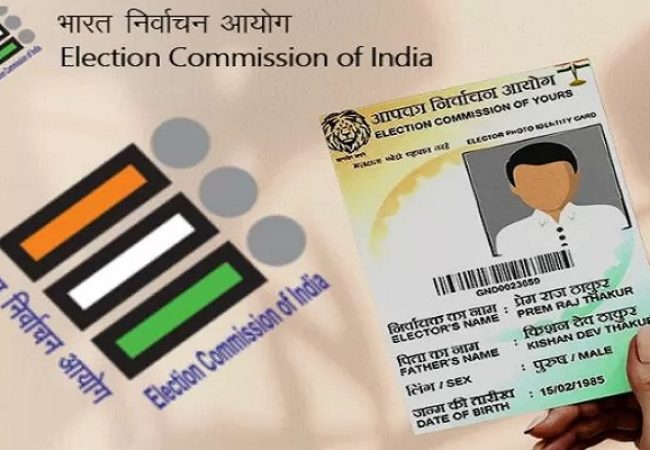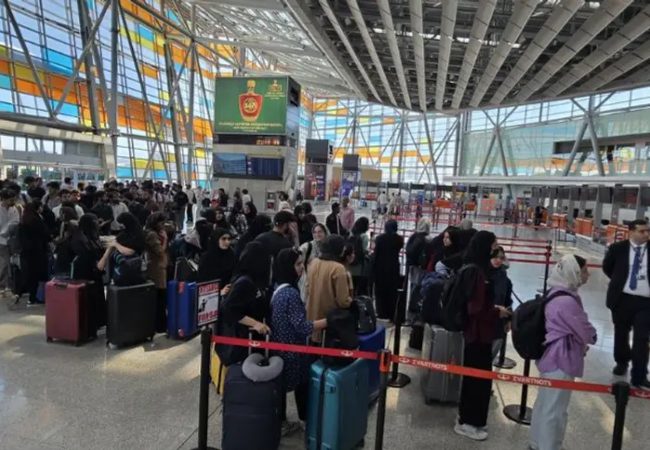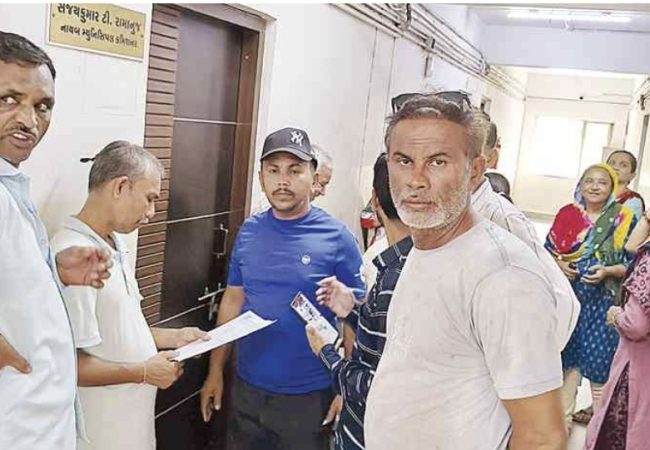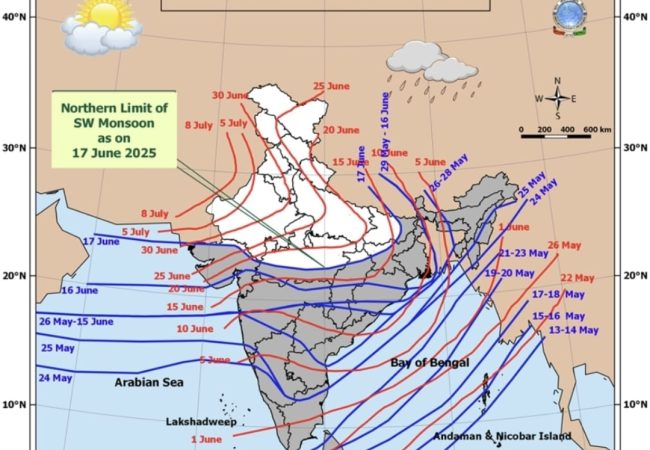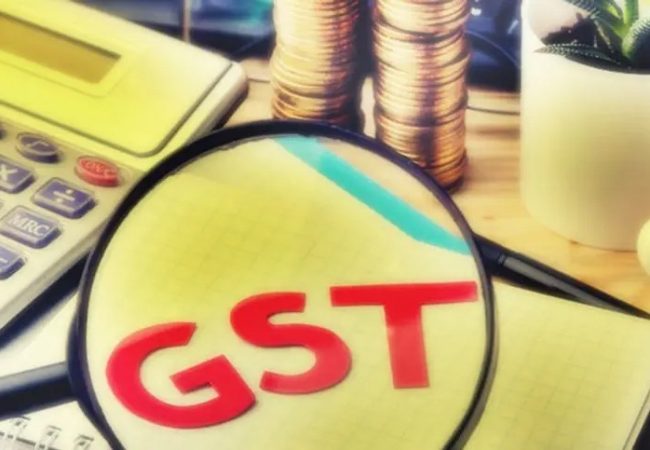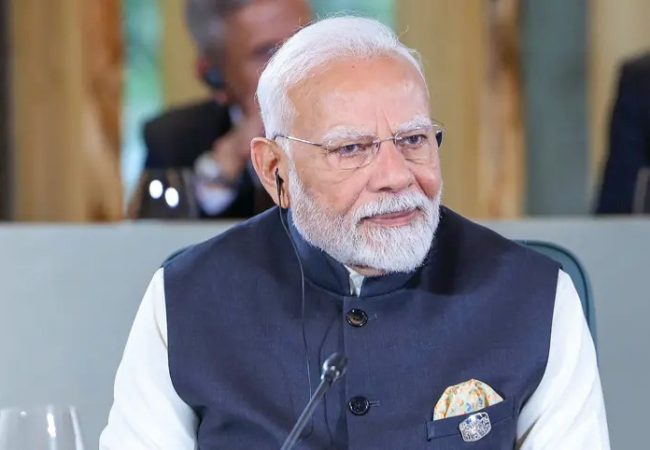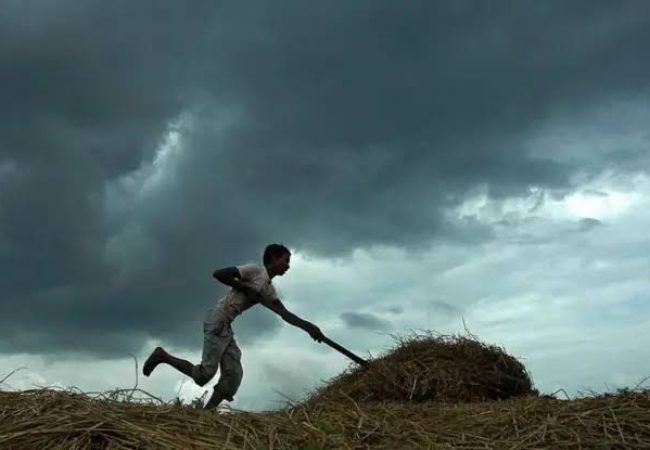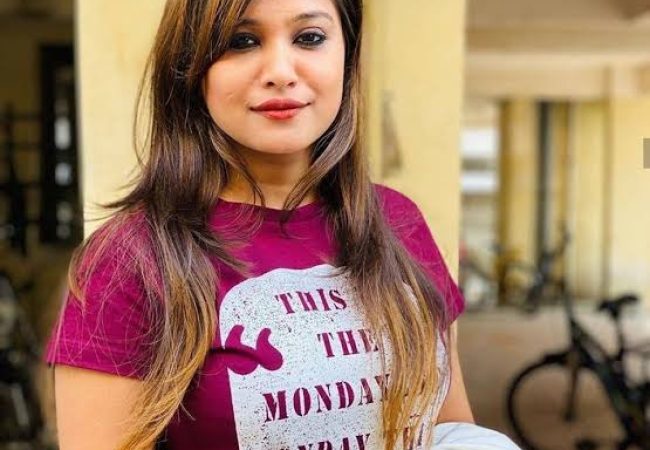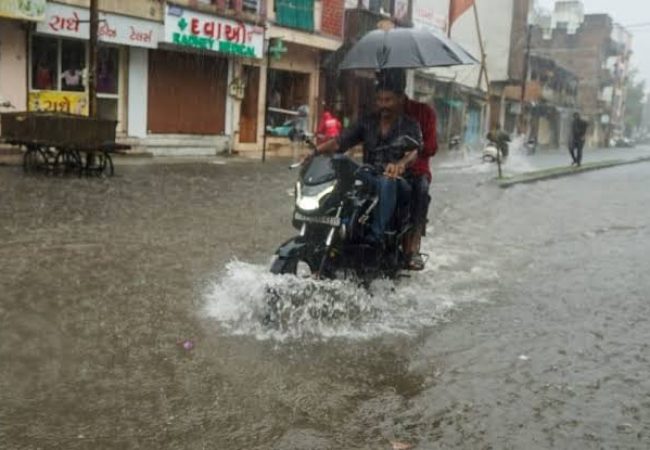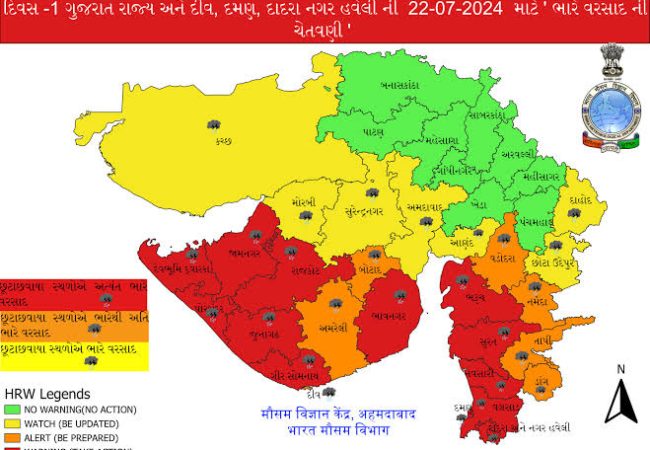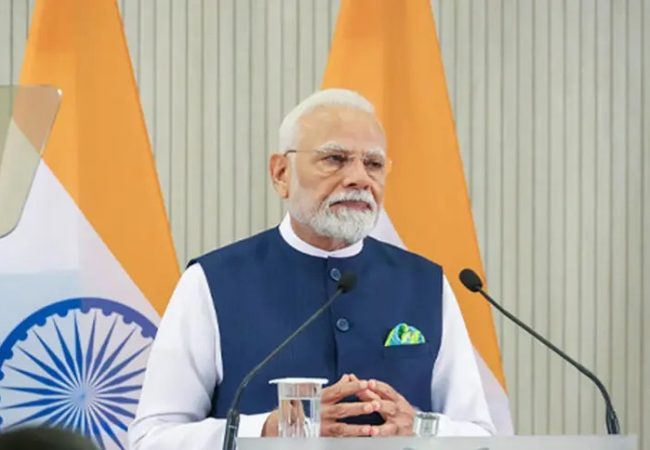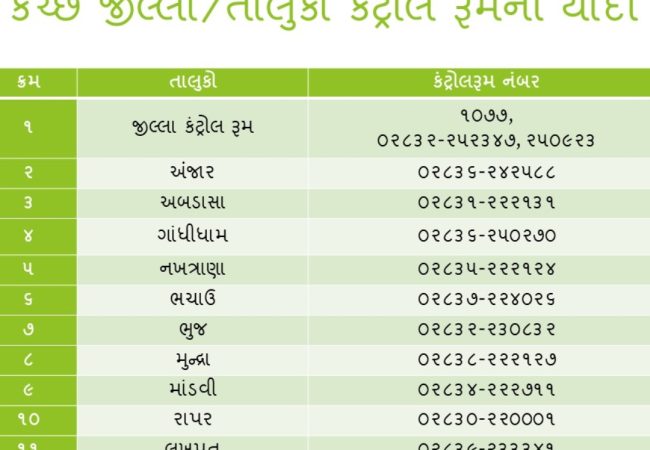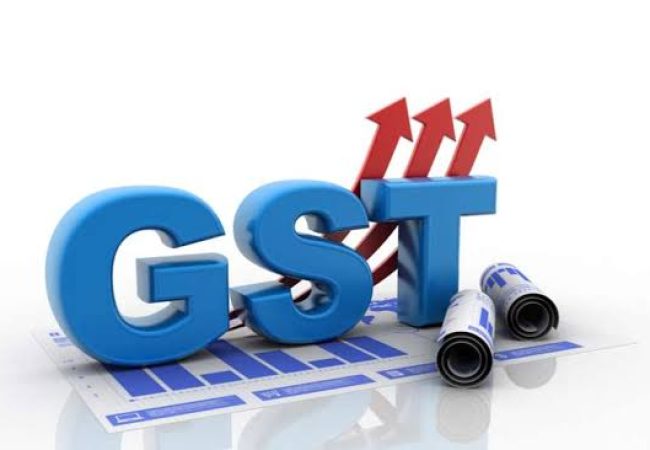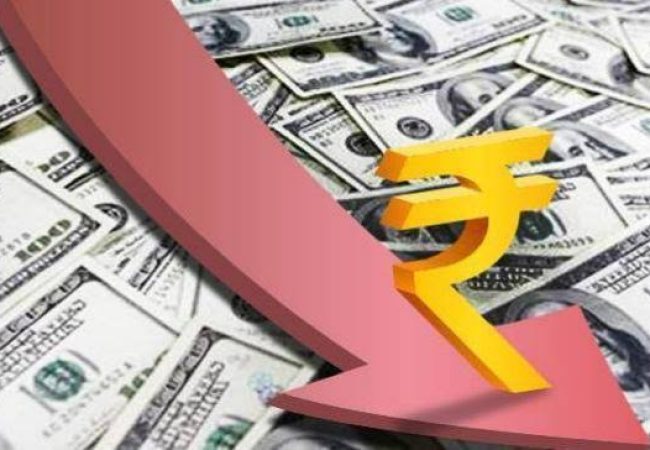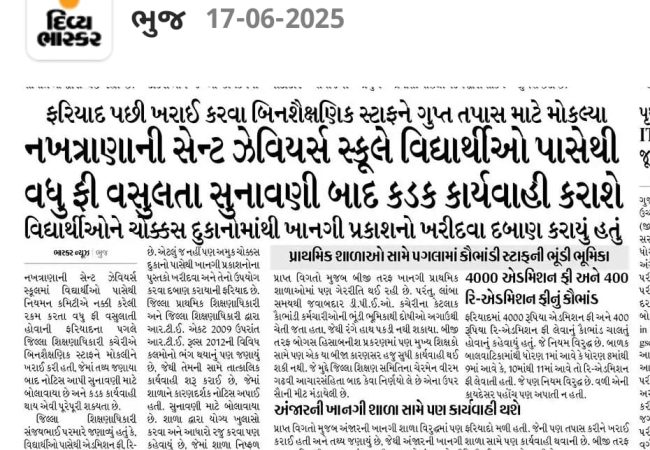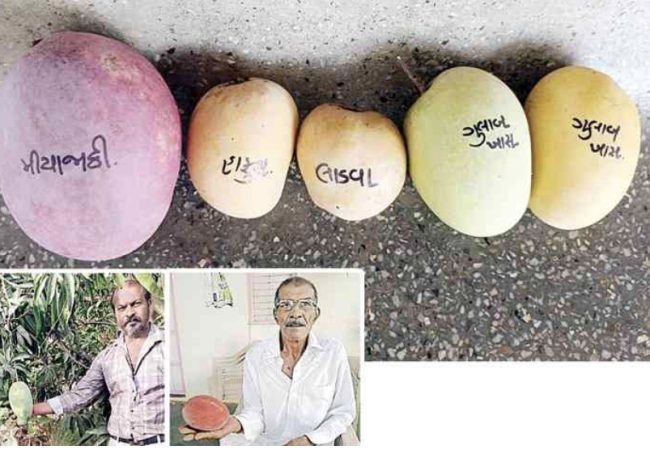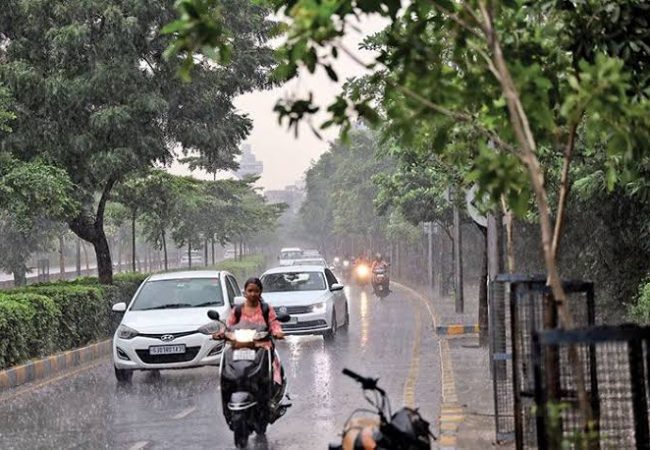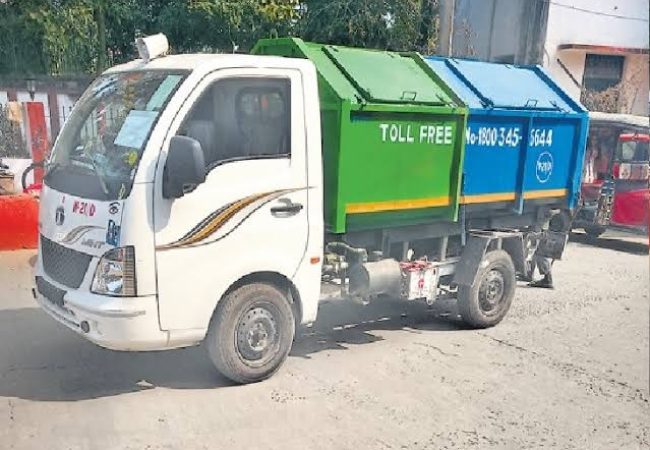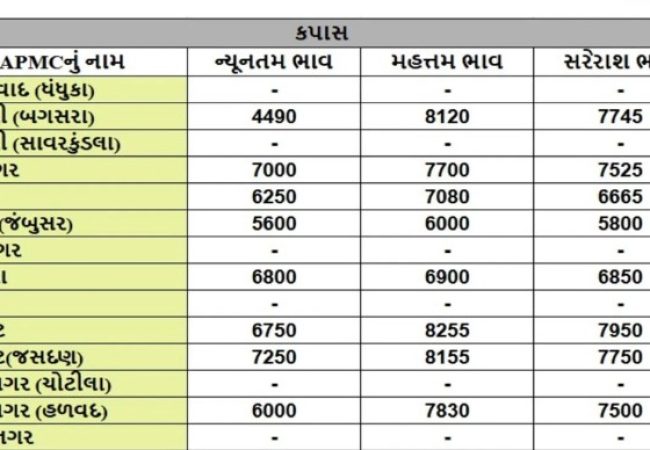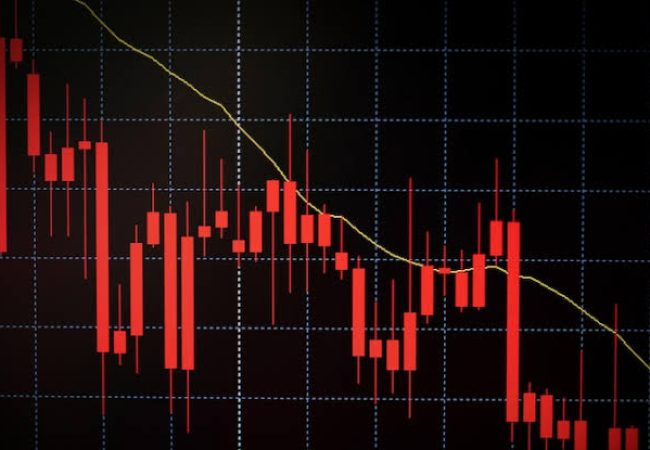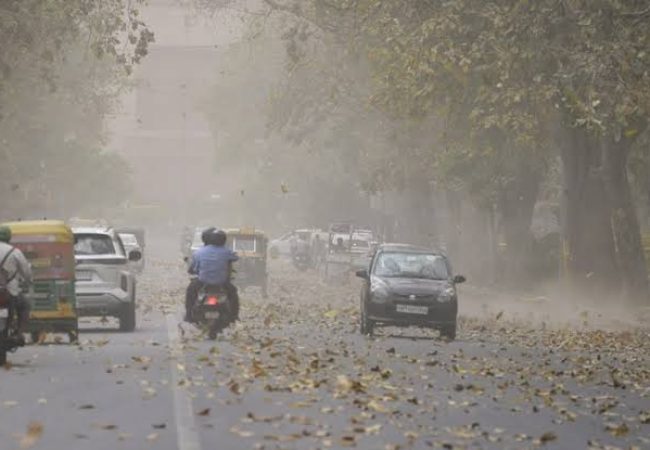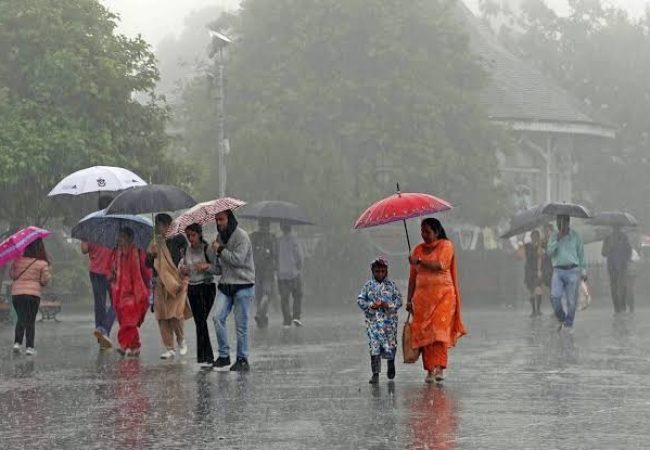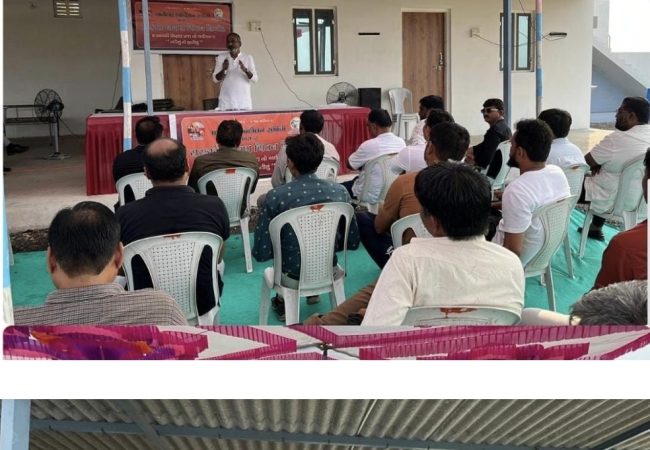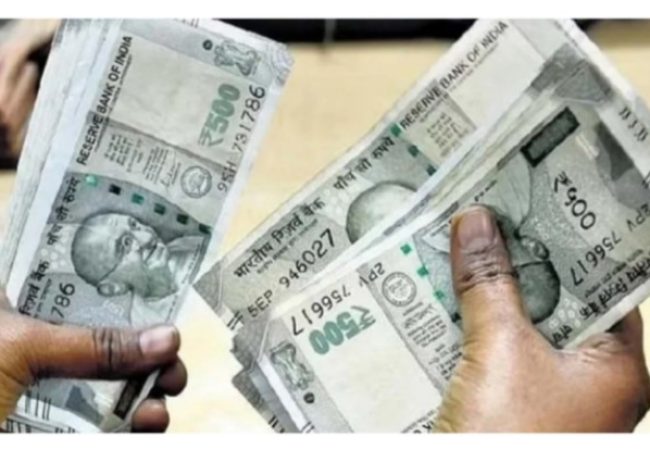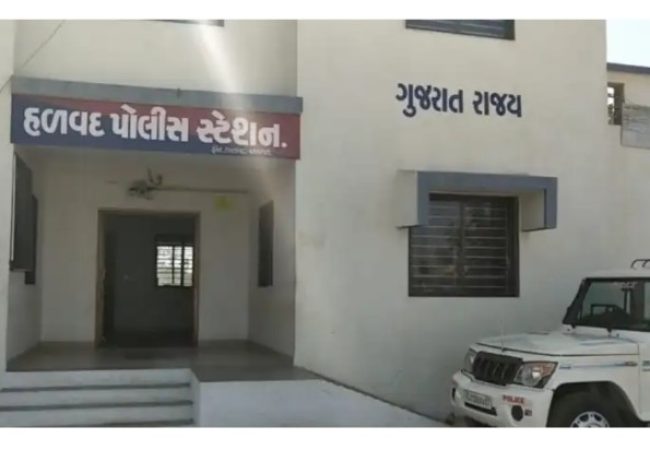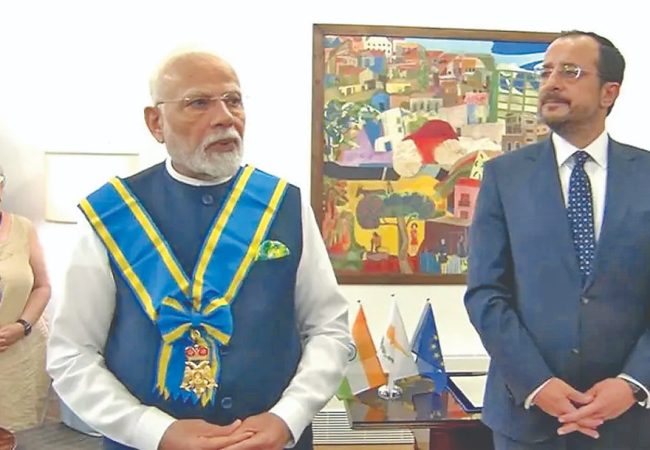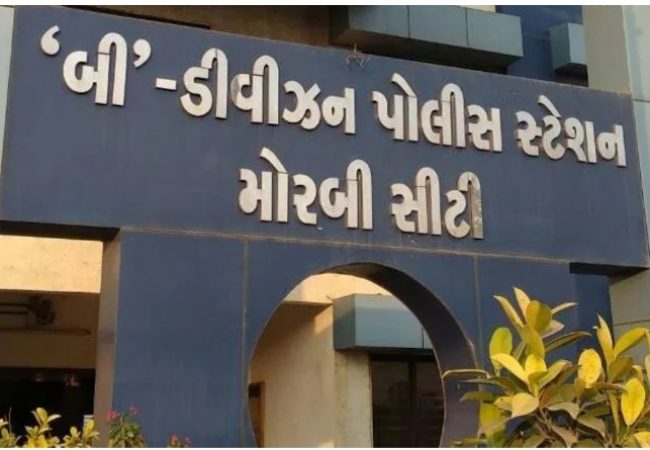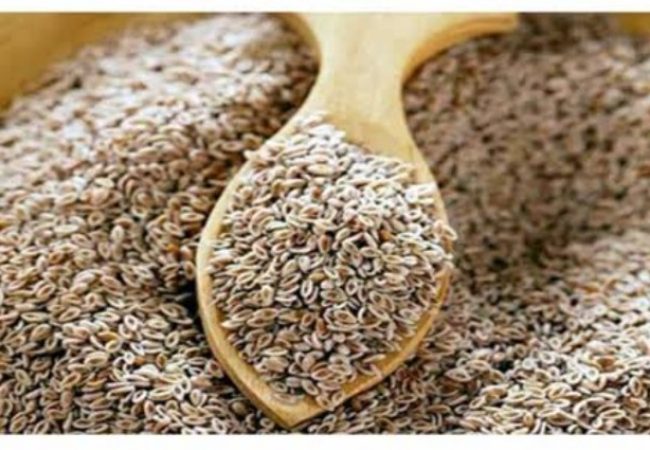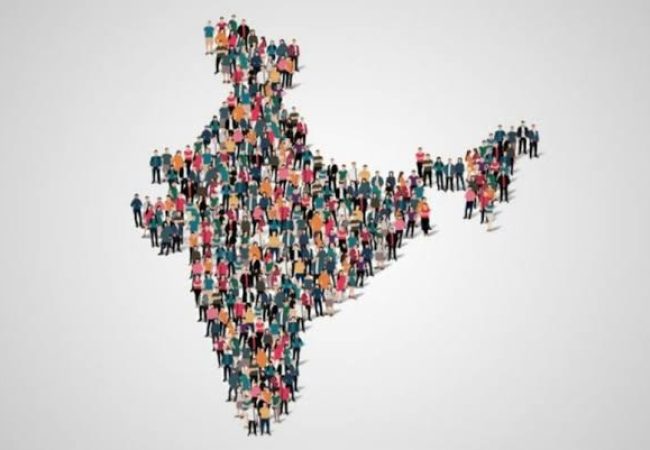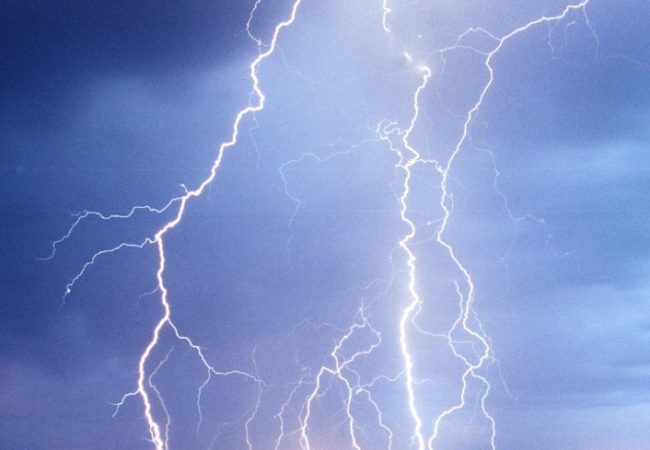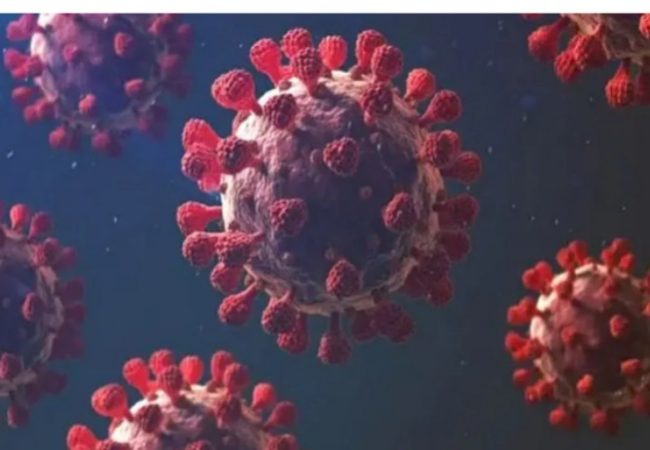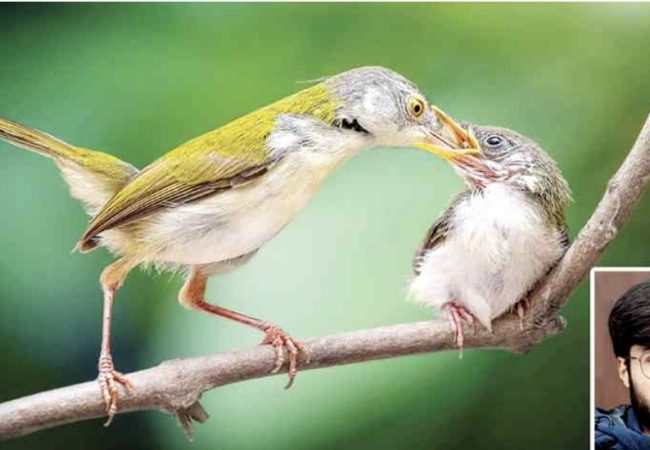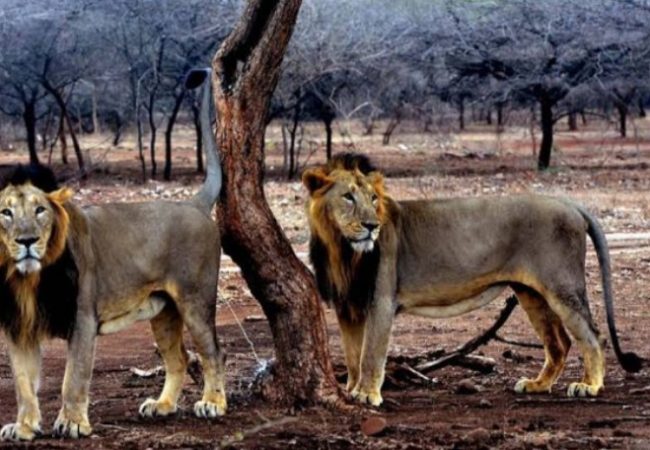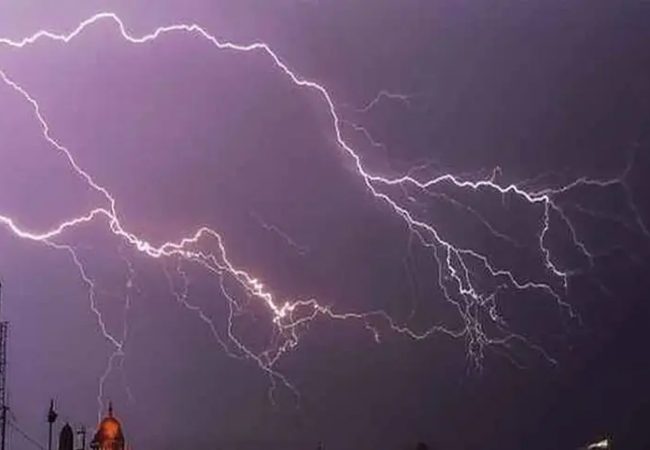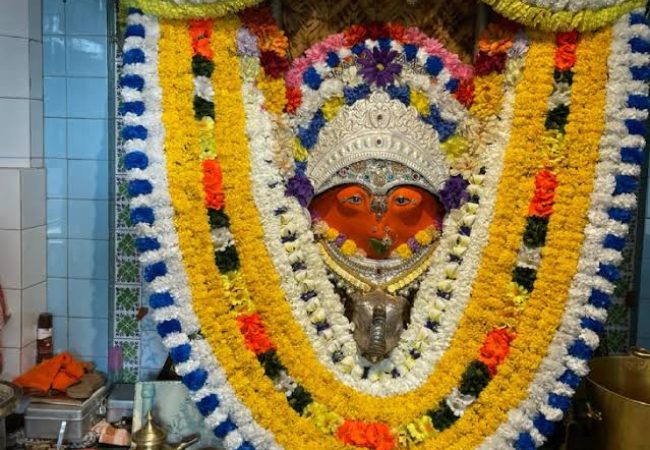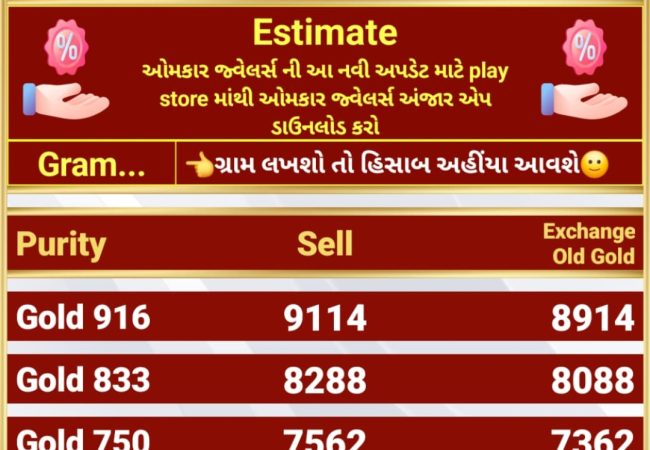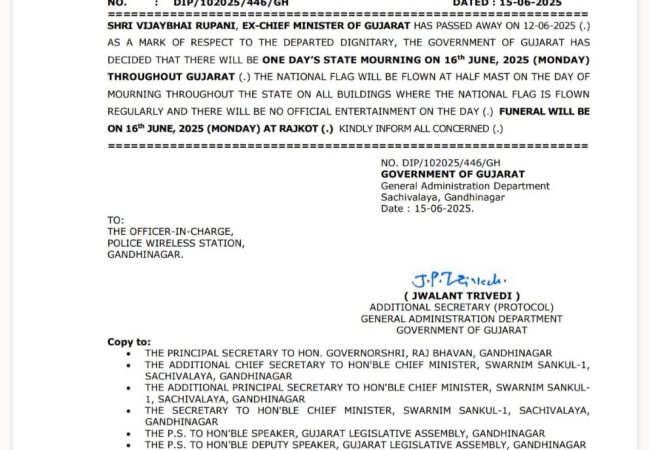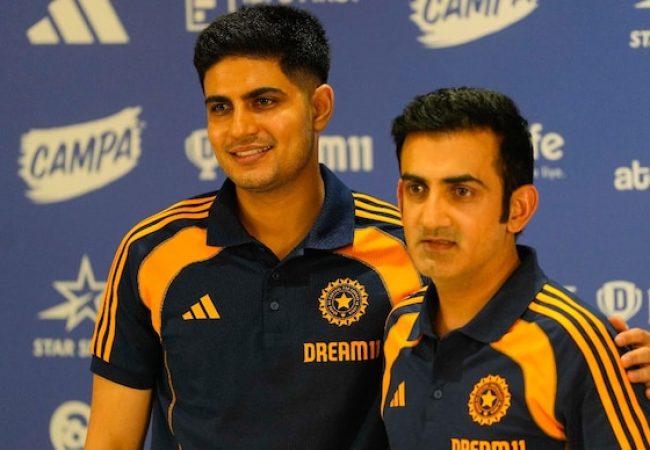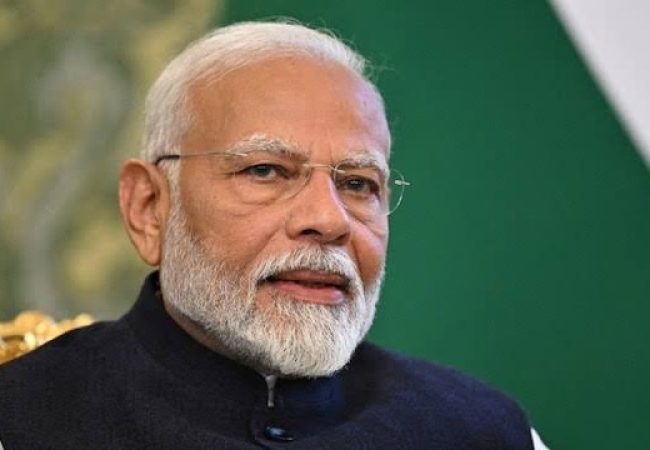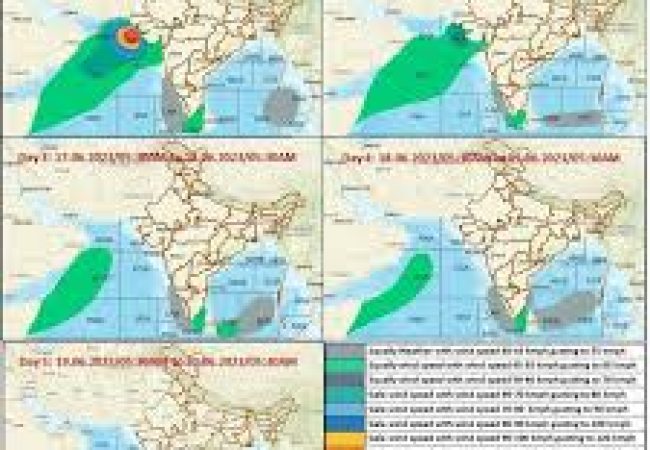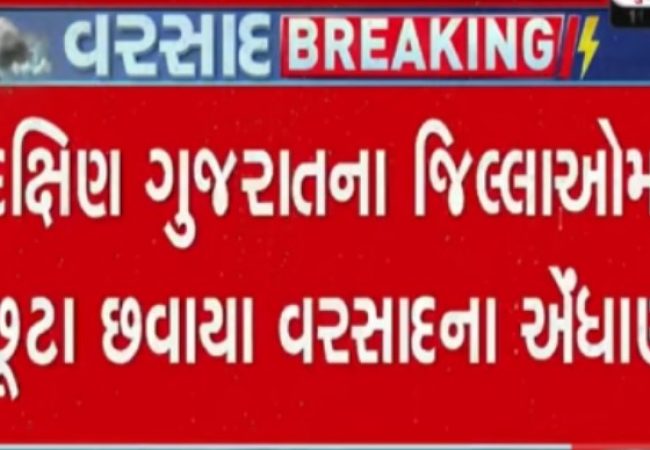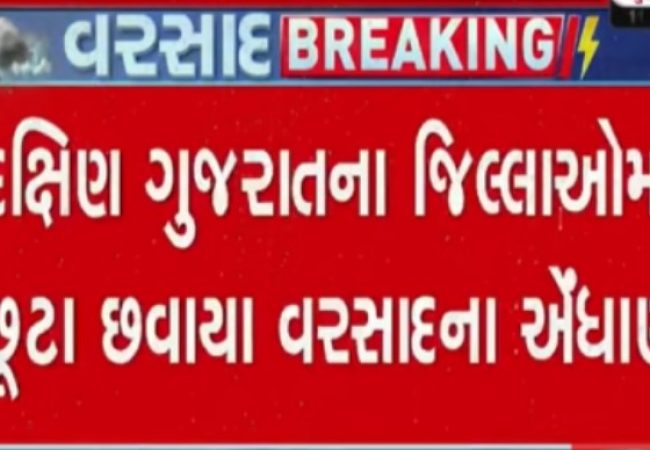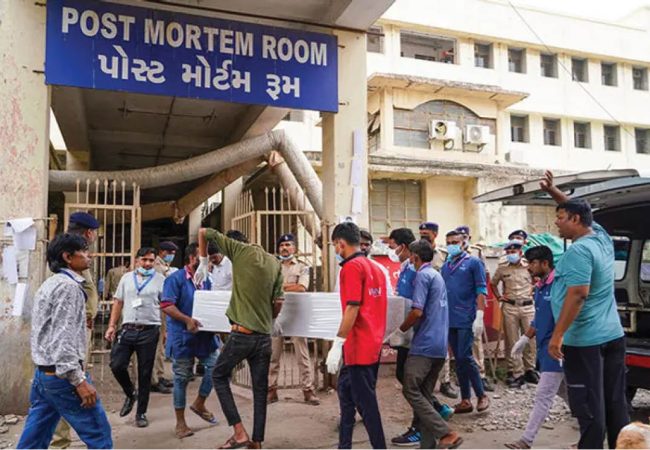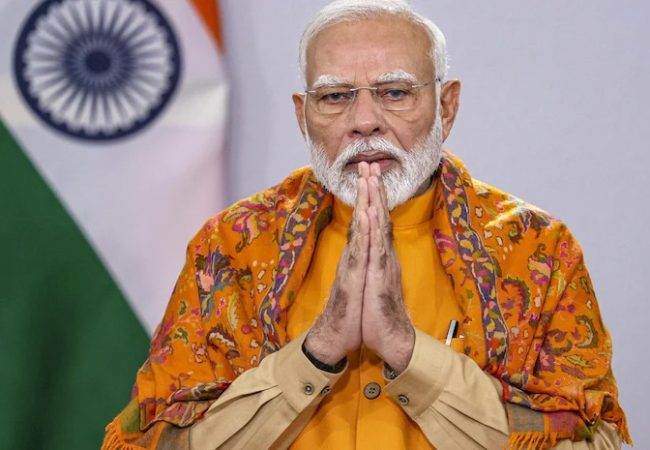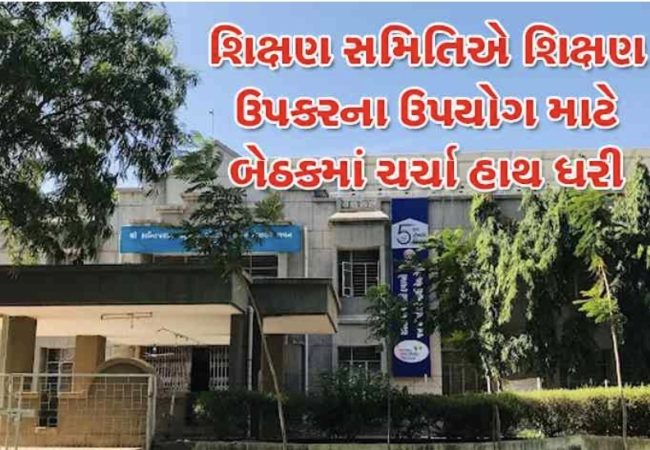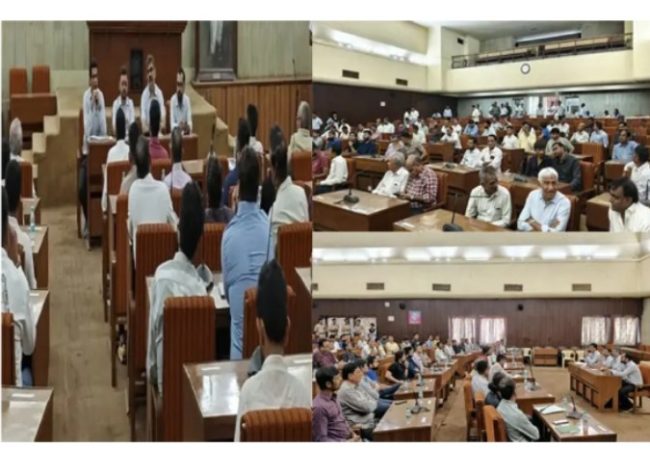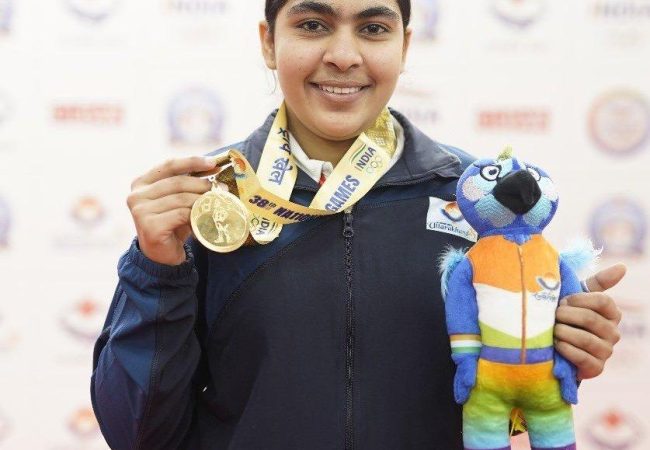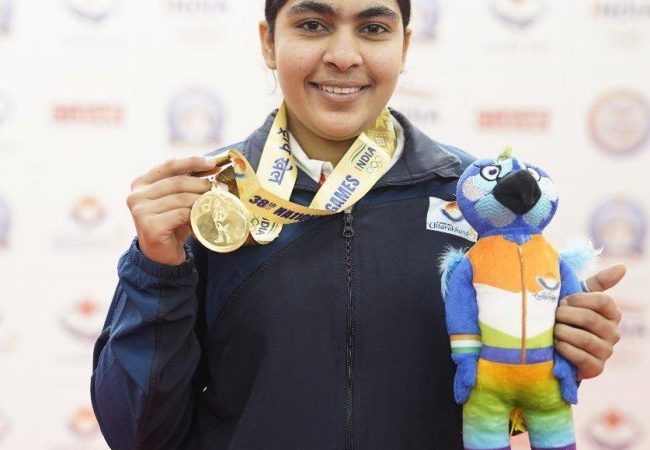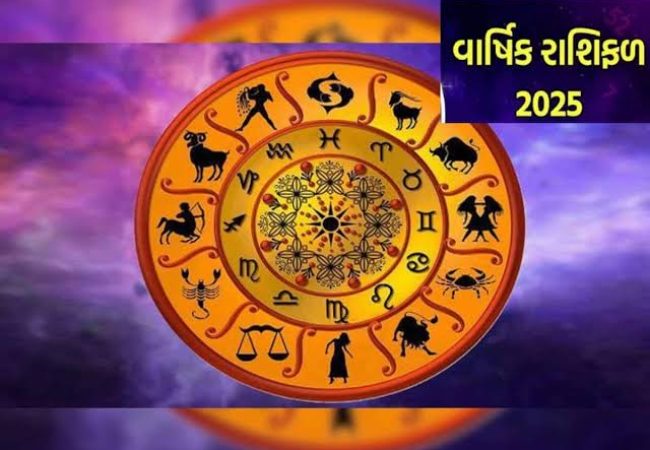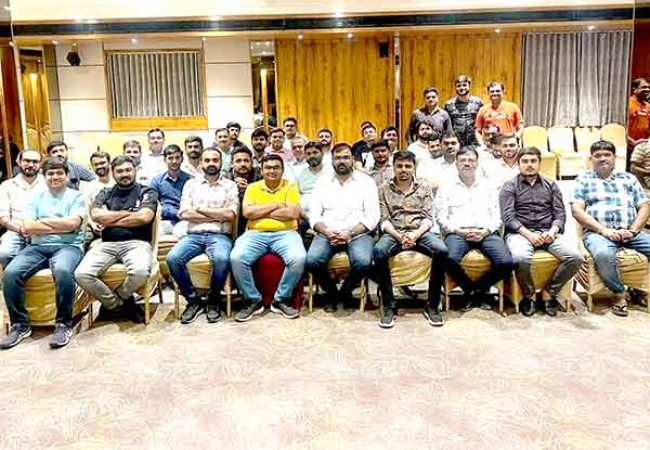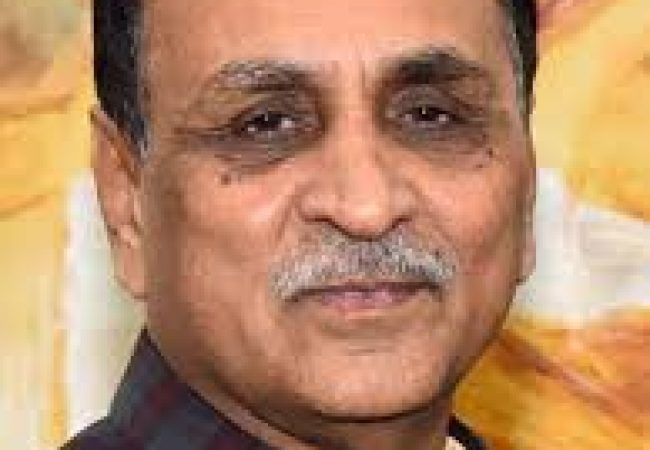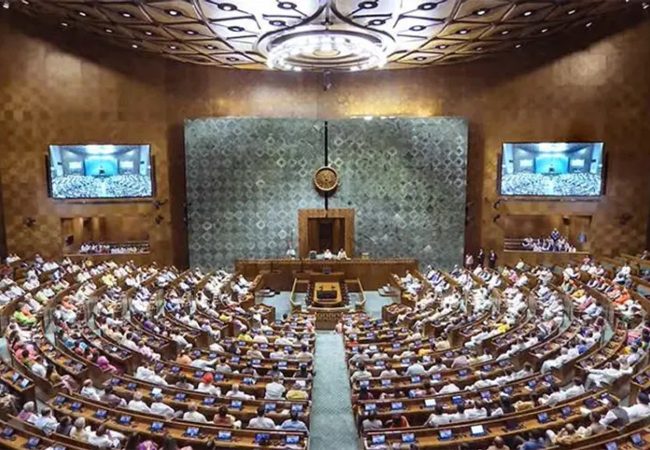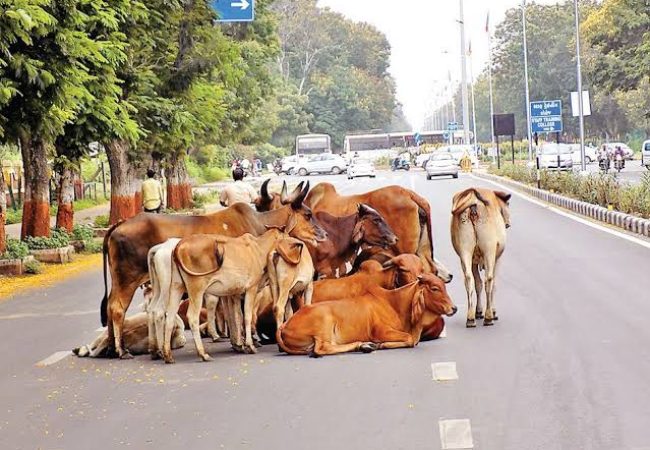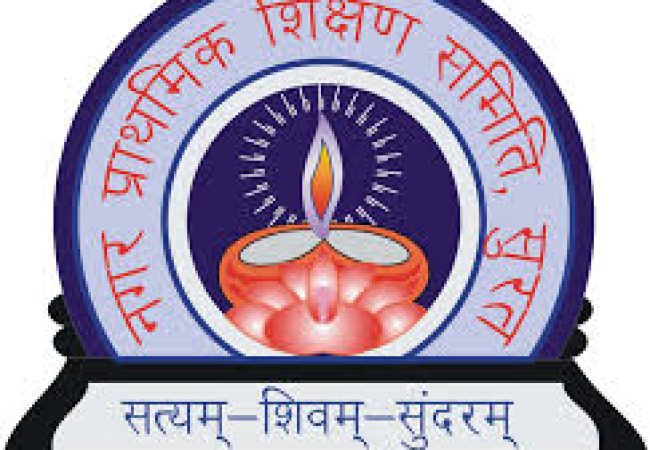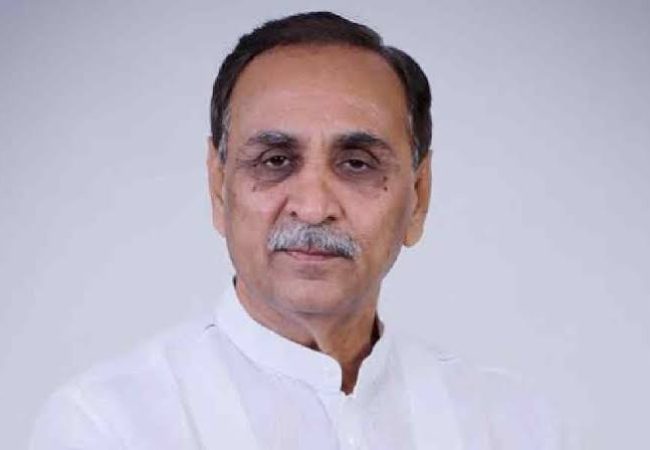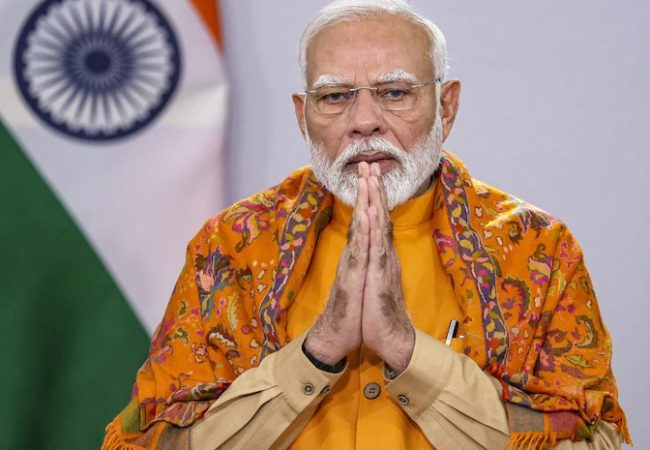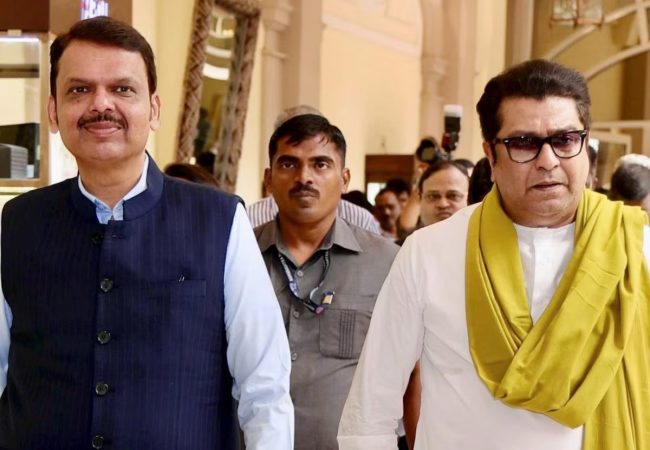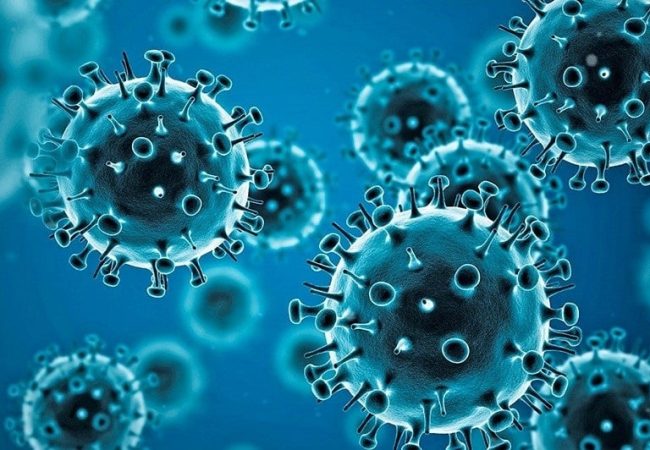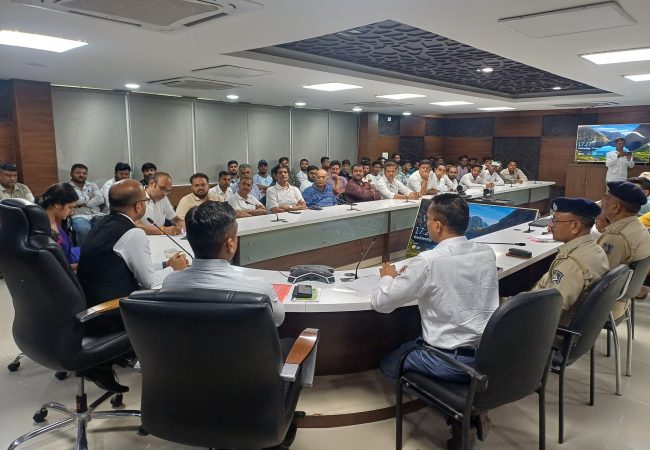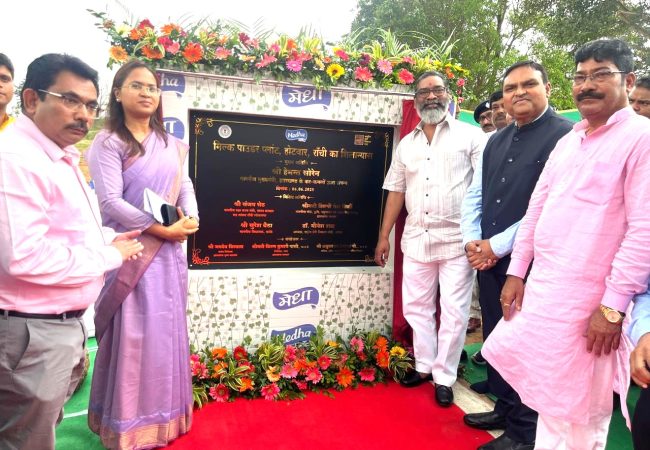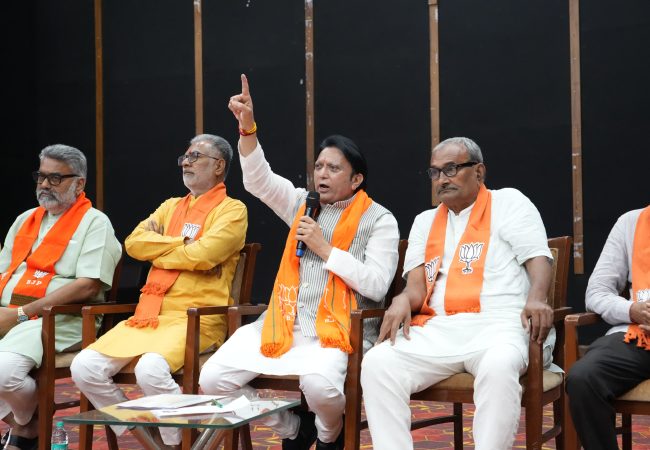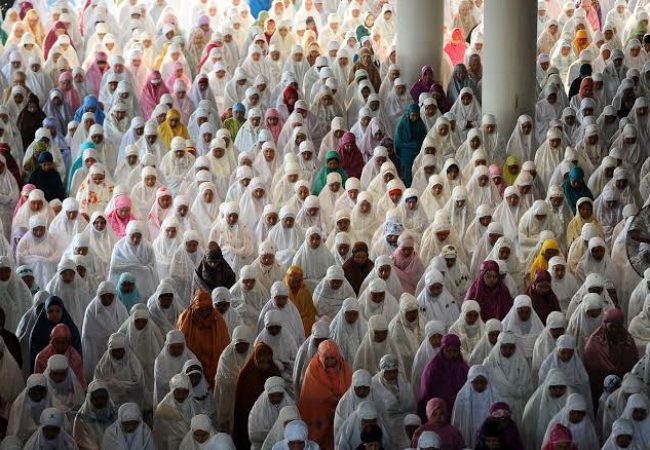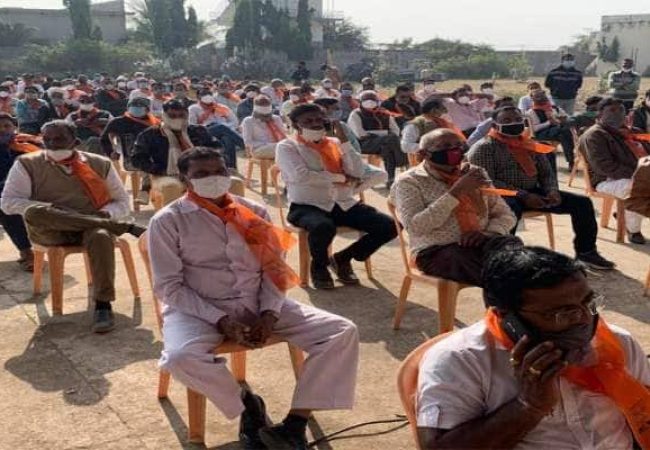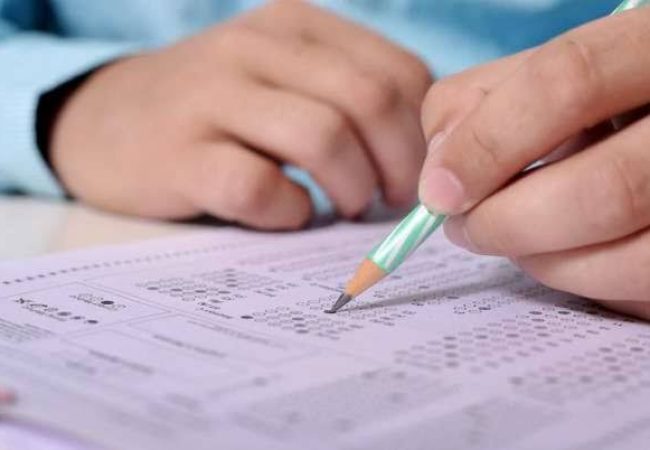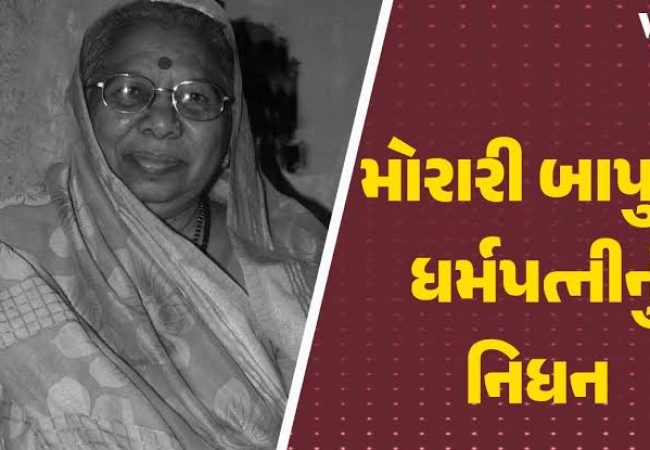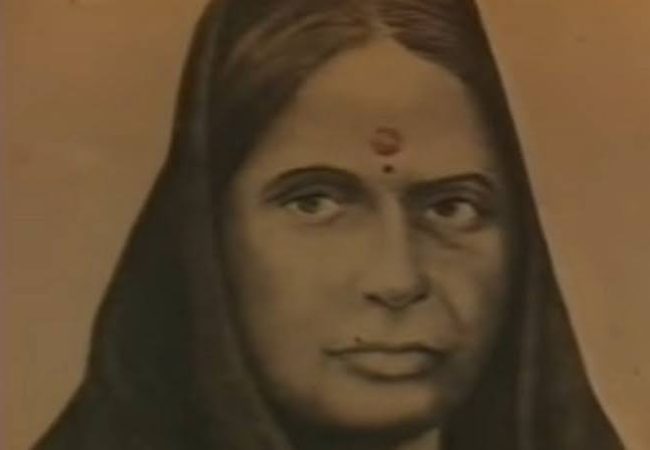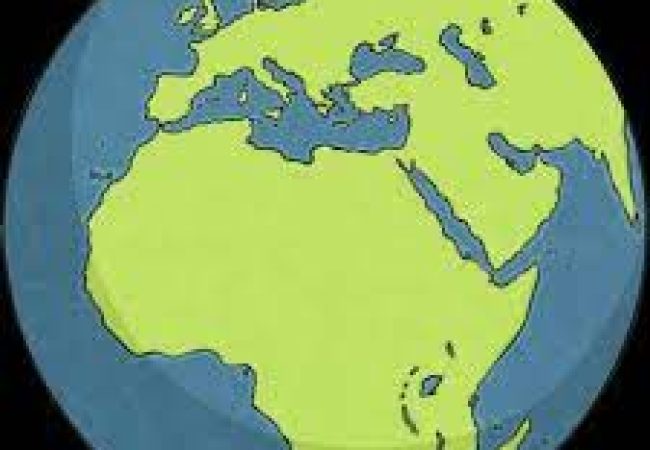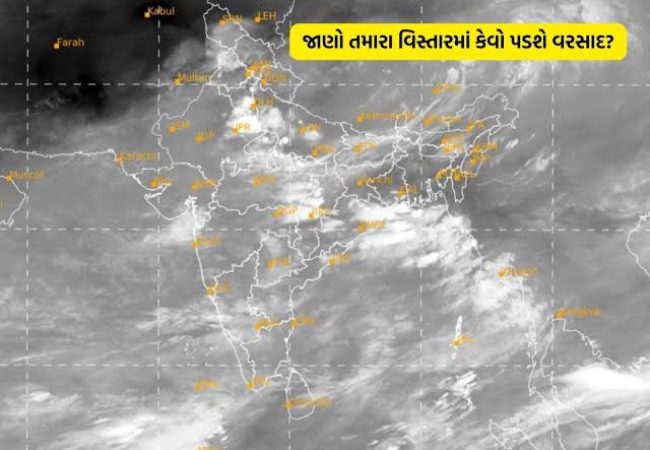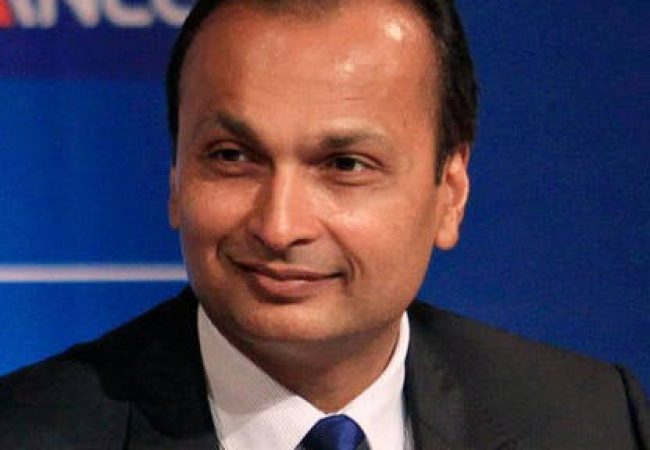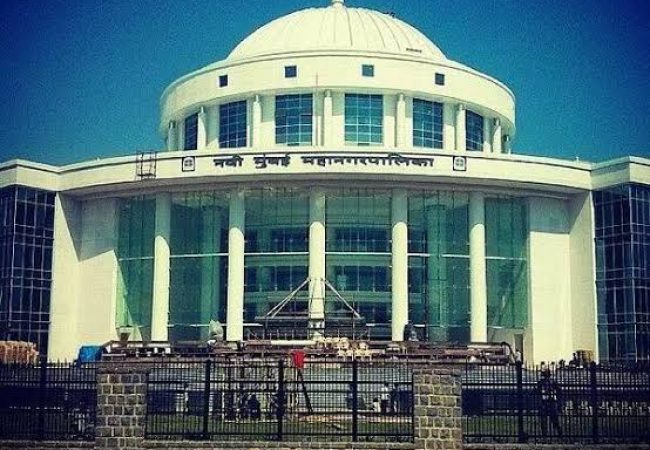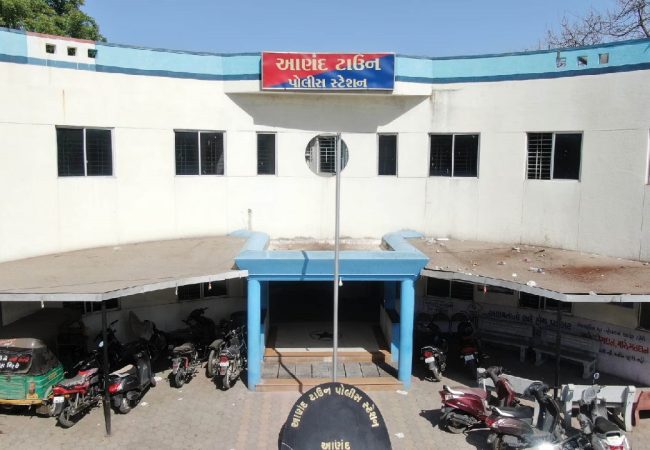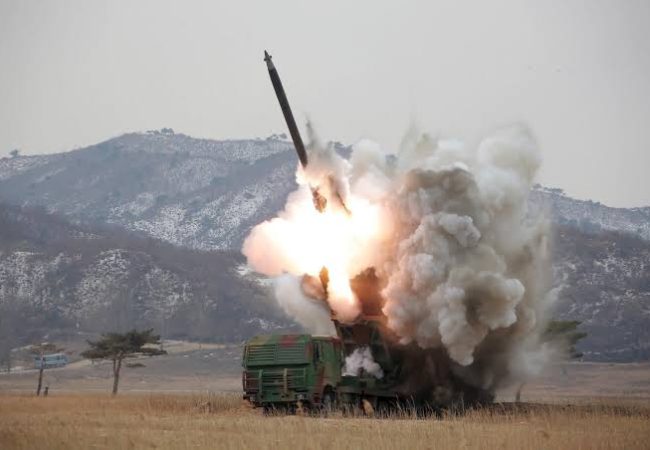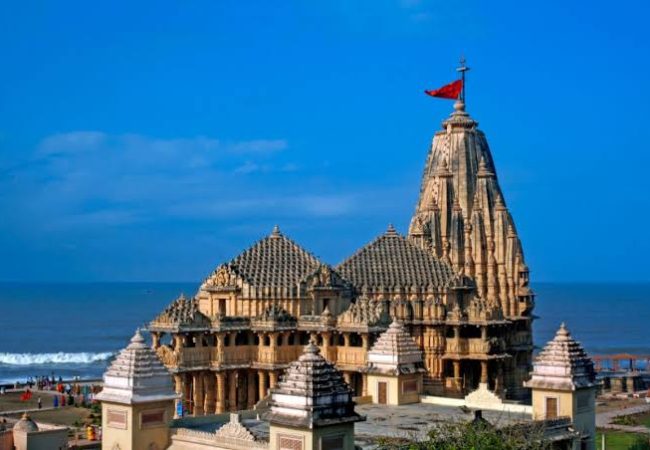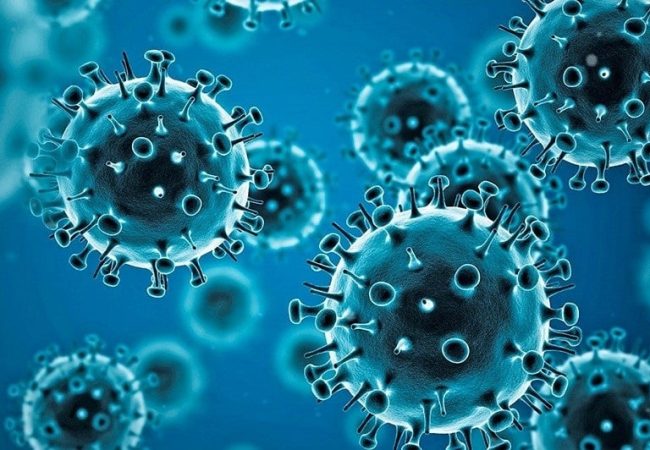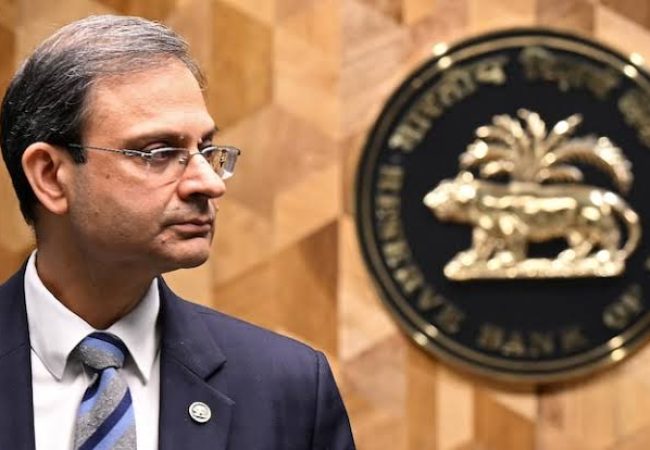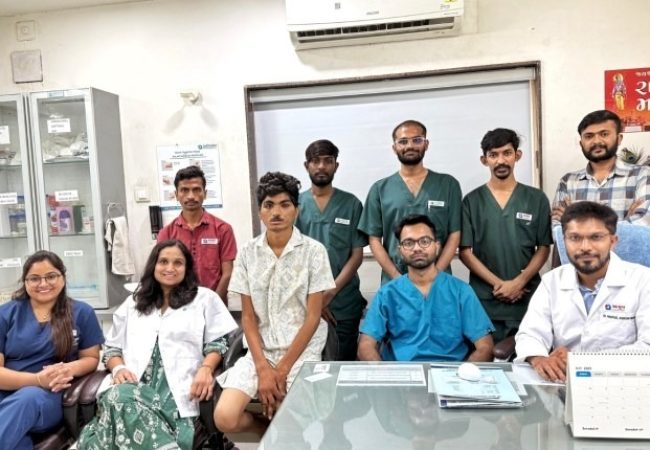રાજયના મૃદુ અને મક્કમ મુખ્યમંત્રી...
તળાવમાં ડૂબતો મોહલ્લા: શહેરની નજીક ગામ જેવી...
ઔરૈયા (યુપી). પોલીસ સર્કલ ઓફિસર સદર અશોક કુમારે...
પત્ની પ્રેમી સાથે ભાગી ગઈ, પતિને ડર છે કે પુત્રી...
કાનપુર, કાનપુર શહેરમાં વીજળીની સમસ્યાઓના...
રાયબરેલી. લખનૌના નાગરમ પોલીસ સ્ટેશન વિસ્તારના...
બ્રેકિંગ આહરૌરા પોલીસ સ્ટેશન વિસ્તારમાં...
સાબરકાંઠા જિલ્લામાં પશુપાલન સાથે સંકળાયેલા...
ઇકદિલ, રાત્રે ભારે વરસાદ અને તોફાની પવનને...
ગુજરાતમાં દારુબંધી હોવા છતા અવારનવાર દારુ...
કચ્છી પ્રજાની સમસ્યા, તેના અરમાનો અને તેની...
ગ્રામ પંચાયત અભયપુરમાં સ્વચ્છ ભારત મિશનનું...
શુક્રવારે, ઇટાવાના ફ્રેન્ડ્સ કોલોની પોલીસ...
શુક્રવારે ઇટાવાના સિવિલ લાઇન વિસ્તારમાં...
વારાણસીના ભૈસાસુર ઘાટ ખાતે વારાણસી નિષાદરાજ...
વારાણસીના કોતવાલી પોલીસે બારા નંબર 5...
કેમિસ્ટ એસોસિએશન લાખણાના નેજા હેઠળ, લખણાના JVS...
ભરથાણા: શુક્રવારે સવારે, ઇટાવા-કનૌજ હાઇવે પર...
બકેવાર શહેરના ઇટાવા રોડ પર એક વેલ્ડીંગની દુકાન...
ઇટાવા: ગુરુવારે ભારે વરસાદ પછી, શહેરના મેવાતી...
મિર્ઝાપુર: વાવાઝોડા અને વરસાદથી ભારે વિનાશ થયો...
મિર્ઝાપુર. થાણા શહેર કોતવાલી વિસ્તારના રામાઈ...
કાશીમાં કારગિલ વિજય દિવસની ઉજવણી કરવામાં આવી...
ઔરૈયા. પોલીસ અધિક્ષકના નિર્દેશનમાં ચલાવવામાં...
*ખેરી પોલીસે ગેરકાયદેસર હથિયારોથી વીજ વિભાગના...
નીમગાંવ પોલીસ સ્ટેશને બળાત્કાર અને પોક્સો...
કાનપુર મેટ્રોએ આજે ICC ગ્રુપના સહયોગથી 'ઓપરેશન...
ઔરૈયા જિલ્લાના અચલદા પોલીસે બે વોરંટ આરોપીઓની...
૨૬ જુલાઈના રોજ, કારગિલ વિજય દિવસ પર, ભારતીય જનતા...
પ્રતાપગઢ. સમાજવાદી પાર્ટી કાર્યાલય મીરા ભવન...
કાનપુર, ઓમકારેશ્વર સરસ્વતી વિદ્યા નિકેતન...
કાનપુર, આજે શુક્રવારે, ઓલ ઈન્ડિયા હમારા સમાજ...
કાનપુર: સમાજવાદી પાર્ટીના રાષ્ટ્રીય અધ્યક્ષ...
કાનપુર, કાનપુર ઉદ્યોગ વ્યાપાર મંડળની જિલ્લા...
કાનપુર, આજે કાનપુર મહાનગર કોંગ્રેસના પ્રમુખ...
બાળ મજૂરી, બાળ ભીખ માંગવી, બાળ લગ્ન, વ્યસન...
કાનપુર, આજે દિવ્યાંગ સશક્તિકરણ નિયામકમંડળના...
મૈનપુરી જિલ્લાના ભોગાવના પદુઆ રોડની રહેવાસી...
મૈનપુરીના જિલ્લા મુખ્ય પશુચિકિત્સા અધિકારી...
રાનીબાગ અને પીલી કોઠી વિસ્તારમાં મોટા પાયે...
સબ-ડિસ્ટ્રિક્ટ મેજિસ્ટ્રેટ અને તહસીલદાર...
લખીમપુર ખીરી *થાણા ફરદાન વિસ્તાર હેઠળના અલીપુર...
પ્રતાપગઢ. જર્નાલિસ્ટ કાઉન્સિલ ઓફ ઈન્ડિયા...
પ્રતાપગઢ. વકીલોની બેઠકમાં લેવાયેલા નિર્ણય...
પ્રતાપગઢ. જિલ્લા જેલના કેદી રક્ષકોએ જિલ્લા...
પ્રતાપગઢ. પ્રતાપગઢ નગર પાલિકા પરિષદ બેલા,...
કુશીનગર પોલીસે બોલેરો વાહન સહિત હત્યાના...
શુક્રવારે ઇટાવામાં બાળ મજૂરી નાબૂદી અંગે...
લક્ષ્મીપુરમાં તળાવમાં ઝેર નાખીને બે લાખ...
નેબુઆ નૌરંગિયા પોલીસ સ્ટેશનમાં બળી ગયેલ...
વાવાઝોડા અને વરસાદને કારણે વીજ વ્યવસ્થા...
વિષ્ણુપુરા વિકાસનું ઉદાહરણ બને છે, નીતિ આયોગ...
કુશીનગરમાં ગાંજાની દાણચોરીનો મોટો ખુલાસો, ૧.૨૮...
ઇટાવામાં, એસએસપી બ્રિજેશ કુમાર શ્રીવાસ્તવના...
ઔરૈયા. શુક્રવારે જિલ્લામાં શાંતિપૂર્ણ રીતે...
મુખ્યમંત્રી શ્રી ભૂપેન્દ્રભાઈ પટેલે આજે આણંદ...
મ્યુનિસિપલ ચેરમેન શ્યામસુંદર કેસરીએ સ્ટેશન...
રાયબરેલીના એક ખાનગી નર્સિંગ હોમમાં સારવાર...
ઇટાવામાં રિઝર્વ પોલીસ લાઇન ખાતે શુક્રવારની...
મૈનપુરી જિલ્લાના ભોગાવ તહસીલમાં સ્થિત...
ઔરૈયા જિલ્લામાં મિશન સમાધાન હેઠળ, બિધુના...
સુનિષ્ઠા સિંહે મૈનપુરી જિલ્લાના ભોગાવ...
કાળઝાળ ગરમીમાં શાળાઓમાં પાણીની કટોકટી, છોકરીઓ...
ઔરૈયા. કોતવાલી પોલીસે જુગાર રમતા 7 લોકોની...
લખીમપુર ખીરી* પોલિથીન બેગમાં પુસ્તકો લાવવામાં...
મિર્ઝાપુર. વિંધ્યાચલ પોલીસ સ્ટેશનના ચાંબે...
રાયબરેલી. સલોન કોતવાલી વિસ્તારના સુચી દાસવાન...
મિર્ઝાપુર: ભારતનું પ્રખ્યાત મા વિંધ્યાવાસિની...
બદાયૂં પોલીસ સ્ટેશન બિલસી નગરમાં આવેલા એક ઢાબા...
મૈનપુરી જિલ્લાના ભોગાવ સ્થિત નેશનલ ઇન્ટર...
લખીમપુર ખીરી ઘણા મહિનાઓથી શાળામાં વીજળી નહોતી,...
બદાયૂંમાં ટ્રેક્ટર દ્વારા કચડાઈ જવાથી એક...
હૈદરાબાદ પોલીસ સ્ટેશને ગેરકાયદેસર પિસ્તોલ...
બદાયૂંમાં શ્રાવણ મહિનામાં એક પછી એક ચમત્કાર...
વારંવાર વીજકાપને લઈને પાલિયા શહેરના વેપારીઓએ...
મિર્ઝાપુર. સમાજવાદી પાર્ટીના નેતા અને...
ટ્રેનની અડફેટે આવતા ગાયોના મોત. હિન્દુ...
બદાયૂંમાં માનવતાને શરમાવે તેવી એક ઘટના...
ઉત્તર પ્રદેશ કોંગ્રેસના પ્રદેશ પ્રમુખ અજય...
AK-47 ગેંગે પત્રકારને મારી નાખવાની ધમકી આપી, કેસ...
નેબુઆ નૌરંગિયા: પરિણીત મહિલાએ પતિ પર ગેંગરેપ,...
રાયબરેલી. સદર તહસીલ વહીવટીતંત્ર દ્વારા...
રાજ્ય સરકાર દ્વારા ખાસ કરીને જન્માષ્ટમીના...
ગુજરાતમાં ફરીથી ચોમાસું ધીરે ધીરે જામી રહ્યું...
ભીષણ ગરમીથી જનજીવન પ્રભાવિત, વીજળી વિભાગ પણ...
ફરુખાબાદ: - જિલ્લા મેજિસ્ટ્રેટ આશુતોષ કુમાર...
મુંબઈ,તા. 22 જુલાઈ, 2025: ભારતમાં નયારા એનર્જી તેના...
કર્મચારીઓની છટણીને કારણે વીજળી વ્યવસ્થા ઠપ થઈ...
સીડીઓએ બ્લોક નાખાનું ઓચિંતું નિરીક્ષણ કર્યું,...
*તારીખ - 25.07.2025* ▶ *કનૌજ પોલીસ UP-112 માં નવા PRV વાહનો...
આણંદ અને વડોદરાને જોડતો તેમજ સૌરાષ્ટ્ર જવા...
વડોદરા ઝોન હસ્તકના ૬ જિલ્લાની ૨૫ નગરપાલિકામાં...
મૈનપુરી જિલ્લાના બેવાર વિસ્તારમાં આવેલી...
ઔરૈયા. ફાફુંડ રેલ્વે સ્ટેશન ઓવર બ્રિજ પર 3...
ગુરુવારે મોડી સાંજે, રાયબરેલીના દેવપુરીમાં...
ફર્રુખાબાદ:- પોલીસે ડ્રોન કેમેરાથી ગુમ થયેલા...
બાબુ માતંગ દ્વારા : નિરોણા (પાવરપટ્ટી), તા. 24 :...
ઔરૈયા તહસીલ વિસ્તારમાં મિશન સમાધાન અભિયાન...
ફરુખાબાદ:- મૂળભૂત શિક્ષણ વિભાગમાં આકર્ષક પદ...
ભુજ, તા. 24 : અહીંના 20 વર્ષથી કચ્છને કર્મભૂમિ...
હેમાંગ પટ્ટણી દ્વારા : ભુજ, તા. 24 : પાકિસ્તાન સાથે...
નડિયાદ મ્યુનિસિપલ કોર્પોરેશન દ્વારા શહેરના...
પેટલાદ શહેરના ગોપાલપુરામાં સ્માર્ટ મીટર...
સ્થાન કૌશામ્બી સંવાદદાતા શ્રવણ તિવારી...
ઔરૈયા. અજિતમલ વિસ્તારના સુરન્યાદા ગામમાં અનુજ...
બોરસદ તાલુકાના ઝારોલા ગામના દર્શિતભાઈ...
આજથી પવિત્ર શ્રાવણ માસની શરૂઆત થઈ ગઈ છે. શ્રાવણ...
ઔરૈયા. બિધુના તહસીલના ઇન્દાપામઉ ગામની હાલત...
બદાયુમાં, એક નોકરે લૂંટની ખોટી વાર્તા બનાવી...
બદાયૂંમાં થયેલા 65 લાખ રૂપિયાના વીજળી બિલ...
રાયબરેલી પેન્શન અપાવવાના નામે એક વૃદ્ધ...
બદાયૂં બિનાવર પોલીસ સ્ટેશન વિસ્તારમાં ગઈકાલે...
ફરુખાબાદ:- સજા ભોગવી રહેલા કેદીની હાલત બગડતા...
ફર્રુખાબાદ: ડિવિઝનલ રેલ્વે મેનેજરે...
ફર્રુખાબાદ: છેલ્લા બે દિવસથી ચર્ચાનો વિષય...
રાયબરેલી એક સાથે ૧૩ પોલીસ કર્મચારીઓના...
ભુજ, તા.22 : જિલ્લા કલેકટર આનંદભાઈ પટેલના...
ગિરીશ જોશી દ્વારા : ભુજ, તા. 23 : કચ્છમાં જાગૃતિનો...
ગાંધીધામ, તા. 23 : ગુજરાતના ઔદ્યોગિકરણનાં...
નખત્રાણા, તા. 23 : અહીંની તાલુકા પંચાયત કચેરીના...
અમદાવાદ, તા. 23 : વિશ્વભારતી સંસ્થાન તથા એસજીવીપી...
મુંદરા, તા. 23 : મુંદરા તાલુકામાં ચાલતા...
ભુજ, તા. 23 : અહીંના વડનગરા નાગર જ્ઞાતિ વ્યવસ્થાપક...
ગાંધીધામ, તા. 23 : ગાંધીધામ અગ્રવાલ સમાજ, યુવા સંઘ...
અંજાર, તા. 23 : અંજાર રોટરી અને રોટરેક્ટ ક્લબના...
ગાંધીધામ, તા. 23 : અહીંની નૃત્ય સંસ્થા માર્ગમ...
આદિપુર, તા. 23 : કચ્છમાં મચ્છોયા આહીર સમાજ સંચાલિત...
કોટડા (ચકાર), તા.23 : કોટડા પંચાયતથી અલગ થયેલી...
બુધવારે માંડવીના પ્રવેશ માર્ગે ધાર્મિક...
માતાનામઢ, તા. 23 : માતાનામઢ જાગીર ટ્રસ્ટમાં...
ભુજ, તા. 22 : કચ્છની ધરતીમાં મહામૂલું ખનિજ...
અંજાર, તા. 23 : છેલ્લા ઘણા સમયથી રખડતા ઢોરોની...
કેરા (તા. ભુજ), તા. 22 : કચ્છીઓ જગતના કોઇ પણ ખૂણે વસે,...
ફતેહપુર જિલ્લાના વિજયપુર વિકાસ બ્લોકના મદૌલી...
ફતેહપુર. ભારતીય કિસાન યુનિયન અરાજકીયના જિલ્લા...
ફતેહપુર. જીએસટીના નામે રાજ્યના કર અધિકારીઓ...
ગુરુવારે, ક્વોટા ઓપરેટર ગ્રામજનો સાથે કલેક્ટર...
જિલ્લામાં મજબૂત કાયદો અને વ્યવસ્થા જાળવવાના...
ઇટાવા જિલ્લામાં જિલ્લા કાનૂની સેવા સત્તામંડળ...
ઇટાવા: ગુરુવારે બપોરથી સતત ભારે વરસાદ વચ્ચે...
વારાણસી. જિલ્લા મેજિસ્ટ્રેટ સત્યેન્દ્ર...
*વોરંટી આરોપી રાજેન્દ્ર પુત્ર રામનારાયણની...
હૈદરાબાદ પોલીસ સ્ટેશને 01 વ્યક્તિના વોરંટ...
ખેરી તારીખ 24.07.2025* *લખનૌ ઝોનના વધારાના પોલીસ...
ટ્રોલીની ટક્કરથી કનવરિયાનું દુઃખદ મૃત્યુ, લાશ...
રાયબરેલી બે ઘરમાંથી ૭૦ લાખ રૂપિયાની ચોરી થતાં...
ગુરુવારે ઇટાવાના સિવિલ લાઇન્સ પોલીસ સ્ટેશને...
લોકમાન્ય તિલક એ આપણને માર્ગ બતાવ્યો, જ્ઞાન અને...
ઇટાવાના જસવંતનગરના કોમ્યુનિટી હેલ્થ...
મિર્ઝાપુર. વિકાસ ભવનના સભાગૃહમાં જિલ્લા...
ખાનગી હોસ્પિટલમાં સરકારી દવાઓ મળી આવવાના...
બાળકોને લઈ જતી ઓમ્ની કાર બાઇક સાથે અથડાઈ,...
મેયર અશોક કુમાર તિવારી અને મ્યુનિસિપલ કમિશનર...
ઇટાવા જિલ્લાના બકેવાર પોલીસ સ્ટેશન વિસ્તારના...
લખીમપુર ખેરીમાં આરોગ્ય વિભાગે મોટી કાર્યવાહી...
ઇટાવાના ભરથાણા કૃષિ ઉત્પદાન મંડીની હાલત...
મિતોલી ખેરી. મિતોલીના ઇન્ચાર્જ શિવાજી દુબેએ...
વારાણસી. વારાણસી વિકાસ સત્તામંડળ (VDA) દ્વારા...
રાષ્ટ્રીય મધ્યસ્થી ઝુંબેશ શરૂ, 15 કેસોમાં...
લોકમાન્ય તિલક જયંતિ પર રાષ્ટ્રીય પ્રેમ છવાઈ...
ખેરી જિલ્લામાં ૧ ઓગસ્ટના રોજ હરિ શંકરી વાવેતર...
સ્વચ્છતા તરફ વધુ એક પગલું: મ્યુનિસિપલ...
દુર્ગાકુંડ પોલીસ ચોકી પાછળ વક્ફ કાયદાના...
આવતીકાલે 25 જુલાઇ 2025ના રોજ મુખ્યમંત્રી...
પ્રતાપગઢ. બુધવારે મોડી રાત્રે કેમ્પ ઓફિસના...
પ્રતાપગઢ. એક્સાઇઝ અને પોલીસ ટીમે બે ગામોમાં...
પ્રતાપગઢ. કૃષિની નવીનતમ ટેકનોલોજીથી ખરીફ 2025-26...
ઔરૈયા. ૨૭ જુલાઈના રોજ પ્રસ્તાવિત સમીક્ષા...
ડિવિઝનલ કમિશનરની અધ્યક્ષતામાં આરોગ્ય વિભાગની...
રાયબરેલી ભાજપના પૂર્વ શહેર ઉપાધ્યક્ષ સંતોષ...
ઔરાઈ (યુપી). પોલીસ અધિક્ષક અભિજીત આર. શંકર અને...
રાપર , તા. 22 : પુલ દુર્ઘટના બાદ તંત્ર દ્વારા પ્રથડ...
ઔરૈયા. પોલીસ અધિક્ષક અને અધિક પોલીસ અધિક્ષકના...
ઔરૈયા. પોલીસ અધિક્ષક અભિજીત આર. શંકરના...
ઔરૈયા. પોલીસ મુખ્યાલય કાકોર ખાતે જાહેર સુનાવણી...
મિર્ઝાપુર. 'સોમેન બર્મા' સિનિયર...
ભુજ, તા. 23 : અબડાસાના જખૌ બંદરના લુણા બેટ પરથી...
ભુજ, તા. 23 : અહીં કચ્છ મહિલા વિકાસ સંગઠન, જિલ્લા...
ઔરૈયા. અજિતમાલ તાલુકાના બિસલપુર ગામમાં...
ભુજ, તા. 23 : શહેરમાં નવા માર્ગો બને અને વિવિધ...
માતાના મઢ, તા. 23 : પ્રસિદ્ધ યાત્રાધામ માતાના મઢ...
ગાંધીધામ, તા. 23 : ગાંધીધામ મહાનગરપાલિકામાં...
ઉત્તર પ્રદેશના ઇટાવાના બધપુરા વિસ્તારમાં...
મોટી વિરાણી (તા. નખત્રાણા), તા. 23 : ગામમાં ચોમેર...
નડિયાદના ધારાસભ્ય પંકજ દેસાઈએ માર્કેટિંગ...
*૨૫ જુલાઈના રોજ લખીમપુર-ગોલા રોડ બંધ રહેશે,...
આણંદના વહેરાખાડી રોડ પર ટેન્કરની ટક્કરે...
જળ શક્તિ મંત્રી સ્વતંત્ર દેવ સિંહ લખીમપુર...
ઔરૈયા. જિલ્લા મેજિસ્ટ્રેટ ડૉ. ઇન્દ્રમણિ...
વારાણસી. જિલ્લા મેજિસ્ટ્રેટ સત્યેન્દ્ર...
વારાણસી: ગુરુવારે, શેરી વિક્રેતાઓએ વડા પ્રધાન...
બદાયૂંમાં બળાત્કાર બાદ પીડિતાએ આત્મહત્યા કરી,...
નિઘાસન ખેરી ચોર સીસીટીવીમાં કેદ થયો, હજુ પણ...
ઇટાવામાં વરિષ્ઠ પોલીસ અધિક્ષક બ્રિજેશ કુમાર...
ધૌરહરા ખેરી ઈસાનગર પોલીસ સ્ટેશન હેઠળ આવતા...
સ્કોર્પિયોની ટક્કરમાં એકનું મોત, બે ઘાયલ,...
બદાયૂં મુસાઝહાગ પોલીસ સ્ટેશન વિસ્તારના...
ઇટાવાના નિઝામપુર ગામમાં દહેજ હત્યા કેસમાં...
કોંગ્રેસ દ્વારા ગુજરાતના સંગઠન માળખામાં...
બેદરકારીને કારણે, પોલીસ અધિક્ષકે હલિયા પોલીસ...
રાયબરેલી. જિલ્લા મહિલા હોસ્પિટલની લિફ્ટમાં...
કાનપુર, ઉત્તર પ્રદેશ ઓટો લોડર યુનાઇટેડ વેલ્ફેર...
રાયબરેલી શહેર વિસ્તારમાં એક જ શાળામાં વારંવાર...
ઔરૈયામાં, જિલ્લા કાનૂની સેવા સત્તામંડળે મહિલા...
રસુલાબાદના લાલ ગામમાં ઝાડીઓમાંથી એક નવજાત...
ચરોતર ગેસમાંથી સીએનજી (CNG) ભરીને નડિયાદ રોડ તરફ...
મિર્ઝાપુર. જીગાના હરગઢ બજારમાં આવેલી ટોલ્સટોય...
દક્ષિણ ગુજરાતને સૌરાષ્ટ્ર સાથે જોડતા...
મિર્ઝાપુર. મિર્ઝાપુર શહેર સેવા દળના ભૂતપૂર્વ...
મિર્ઝાપુર. રાષ્ટ્રીય ક્ષય રોગ નાબૂદી...
ઐતિહાસિક નિષાદ કાજલી મેળાની તૈયારીઓ સંદર્ભે...
ડાકોરના રણછોડજી મંદિરમાં અષાઢ વદ બીજથી એક...
વડતાલ સ્વામિનારાયણ મંદિરમાં શ્રાવણી ભક્તિ...
વિંધ્યાચલના બે પાંડા વચ્ચે થયેલા લોહિયાળ...
ઔરૈયા. બિધુના કોતવાલી વિસ્તારના રુરુગંજ ચોકી...
કાનપુર ઝોનના એડીજી અને કાનપુર ઝોનના ડીઆઈજીએ...
ફતેહપુરમાં, જિલ્લા મેજિસ્ટ્રેટ રવિન્દ્ર સિંહ...
મહિલા શિક્ષણ, સુરક્ષા અને અધિકારોના રક્ષણ માટે...
પ્રાંતીય રમતગમત સ્પર્ધાનું ભવ્ય ઉદ્ઘાટન:...
ઔરૈયા. એસપી અભિજીત આર. શંકર અને અધિક પોલીસ...
ઔરૈયા. શ્રાવણ મહિનાને ધ્યાનમાં રાખીને,...
પોલીસે ગેરકાયદેસર હથિયારો સાથે વોન્ટેડ...
રાયબરેલીમાં થયેલા એક દુ:ખદ માર્ગ અકસ્માતમાં એક...
શ્રાવણ મહિનાના ત્રીજા સોમવારે પોલીસ અધિક્ષકે...
બુધવારે ફતેહપુર જિલ્લા મુખ્યાલયની કેનાલ...
ફતેહપુર. રમતગમત વિભાગ દ્વારા આયોજિત જિલ્લા...
ફતેહપુર. ઇન્ચાર્જ સહાયક નિયામક મત્સ્યઉદ્યોગે...
પ્રતાપગઢ! ઇન્ટરનેશનલ શ્રી રામ નામ લેખન બેંક...
પ્રતાપગઢ. પટ્ટી કોતવાલી વિસ્તારના રામકોલા...
પ્રતાપગઢ. પવિત્ર શ્રાવણ મહિનામાં, તહસીલના...
લખીમપુર ખીરી મુખ્યમંત્રી યોગીના આશીર્વાદથી...
લખીમપુર ખીરી ભાજપ નેતાએ પ્રભાકરન ટાયર્સના...
મંગળવારે રાત્રે ગંગા એક્સપ્રેસ વે પર ચાલતી...
વિંધ્યાચલની પવિત્ર ભૂમિ પર દક્ષિણાને કારણે...
રવાહી પુલ પર અકસ્માત: ટ્રકે બાઇક સવારનું...
લખીમપુર ખીરી ડીએમએ હાવભાવથી મનોબળ વધાર્યું,...
મૈનપુરી પોલીસ લાઇન પહોંચેલા આગ્રાના એડિશનલ...
ફતેહપુર. ઇન્ડિયન રેડ ક્રોસ સોસાયટી, આરોગ્ય...
રાયબરેલી. ઓનલાઈન ગેમ્સમાં લાખો રૂપિયા...
ફતેહપુર. નગર પાલિકા પરિષદના અધ્યક્ષ રાજકુમાર...
ફતેહપુર. બર્મતપુરમાં વહીવટી અત્યાચારો પર...
પ્રતાપગઢ. પટ્ટી નગરના રાયપુર ગામના રહેવાસી...
પ્રતાપગઢના પોલીસ અધિક્ષક ડૉ. અનિલ કુમારના...
પ્રતાપગઢ. પોલીસ વિભાગની પ્રતિષ્ઠાને કલંકિત...
પ્રતાપગઢ. સમસ્યાઓના ન્યાયી, ગુણવત્તાયુક્ત અને...
ઔરૈયા. જિલ્લાભરમાં ગુના અને ગુનેગારો સામે...
બુધવારે, ઇટાવાના ભરથાણા પોલીસ સ્ટેશન...
ઇટાવામાં પ્રાણીઓને રોગોથી બચાવવા માટે...
ભરથાણા કોતવાલી વિસ્તારના મોઢી ગામમાં એક મહિલા...
ફરી એકવાર, ઇટાવાના ઇકદિલ પોલીસ સ્ટેશન વિસ્તાર...
ઔરૈયા (યુપી). પોલીસ અધિક્ષક અભિજીત આર. શંકરના...
મૈનપુરી જિલ્લાના ભોગાવમાં, કાળા વાદળો છવાઈ ગયા...
પ્રતાપગઢ. રાણીગંજ વિસ્તારમાં શ્રાવણ...
જિલ્લા મહિલા અને બાળ અધિકારીની કચેરી, આણંદ...
औरैया। जिले भर में एसपी अभिजित आर. शंकर एवं अपर...
औरैया। श्रावण मास के मद्देनज़र जिले के प्रमुख...
पुलिस ने अवैध असलह के साथ वांछित अपराधी किया...
रायबरेली में एक दर्दनाक सड़क हादसे में एक युवक...
श्रावण के तीसरे सोमवार को लेकर थाना गोला में...
फतेहपुर में जिला मुख्यालय के नहर कालोनी में...
फतेहपुर। खेल विभाग की आयोजित जिला स्तरीय हॉकी...
फतेहपुर। प्रभारी सहायक निदेशक मत्स्य ने बताया...
फतेहपुर। बरमतपुर में हुए प्रशासनिक अत्याचार...
फतेहपुर। नगर पालिका परिषद के अध्यक्ष राजकुमार...
रायबरेली। आनलाइन गेम में लाखों रूपये गंवा देने...
मैनपुरी की पुलिस लाइन पहुंची अपर महानिदेशक...
लखीमपुर खीरी डीएम ने इशारों में बढ़ाया हौसला,...
विंध्याचल पवित्र भूमि पर फिर दक्षिणा के चलते...
रवही पुल पर हादसा: ट्रक की टक्कर से बाइक सवार...
लखीमपुर खीरी पलिया में भव्य शोरूम बनाकर शानदार...
मंगलवार की रात गंगा एक्सप्रेस-वे पर पैदल टहलते...
प्रतापगढ। पट्टी कस्बे के हनुमान मंदिर पर तहसील...
लखीमपुर खींरी मुख्यमंत्री योगी के आशीर्वाद से...
प्रतापगढ। पट्टी कोतवाली क्षेत्र के रामकोला...
प्रतापगढ। ।पट्टी में वितरित किया गया छात्र एवं...
प्रतापगढ। रानीगंज क्षेत्र के सावन शिवरात्रि...
प्रतापगढ। । पट्टी नगर के रायपुर गाँव निवासी...
पुलिस अधीक्षक, प्रतापगढ़ डॉ0 अनिल कुमार के...
प्रतापगढ। पुलिस विभाग की साख को गिराने वाले...
प्रतापगढ। समस्याओं के निष्पक्ष,...
औरैया। जिले भर में अपराध एवं अपराधियों के...
मैनपुरी जनपद के भोगांव में लगभग तीन बजे काले...
इटावा के भरथना थाना क्षेत्र के मोढी गांव में...
इटावा में पशुओं को बीमारियों से बचाने के लिए...
भरथना कोतवाली क्षेत्र के ग्राम मोढी में उस समय...
इटावा के इकदिल थाना क्षेत्र के अंतर्गत आने...
औरैया (यूपी)। पुलिस अधीक्षक अभिजित आर. शंकर के...
औरैया। जिलाधिकारी डॉ. इंद्रमणि त्रिपाठी के...
औरैया। पुलिस ने क्षेत्र में अलग-अलग...
मिर्जापुर। सोमेन बर्मा वरिष्ठ पुलिस अधीक्षक...
औरैया। भाजपा जिलाध्यक्ष सर्वेश कठेरिया ने...
इटावा में बन रहे केदारेश्वर मंदिर को लेकर संत...
भरथना कोतवाली क्षेत्र स्थित पावर हाउस में उस...
उत्तर प्रदेश के इटावा के भरथना कस्बे में एक...
मैनपुरी जनपद में भोगांव की नगर पंचायत को नगरीय...
वाराणसी: उ०प्र० जल निगम के मुख्य अभियन्ता,...
वाराणसी पुलिस कमिश्नरेट को बड़ी सफलता मिली है....
जनपद मैनपुरी में भोगांव के एकमात्र अशासकीय...
अवैध डीजल बिक्री पर प्रशासन की बड़ी...
कानपुर,दादा नगर मिश्री लाल चौराहा स्थित...
कानपुर,मुस्कान फाऊंडेशन ट्रस्ट परिवार ने अपने...
कानपुर,बी.एन.एस.डी. शिक्षा निकेतन इण्टर कॉलेज...
जनपद मैनपुरी के थाना एला क्षेत्र के ग्राम नगला...
इटावा के भरथना कस्बा स्थित मोहल्ला सती मंदिर...
इटावा में यमुना और चंबल नदियों का जलस्तर बढ़ने...
रसूलाबाद।नौहा नौगांव में सड़क पर जल भराव होने...
औरैया। जिले के बिधूना नगर स्थित जेटी गार्डन...
लखीमपुर खीरी: मूकबधिर बच्चों की स्कूल चलो रैली ?...
डीएम ने की खुरपका-मुँहपका टीकाकरण अभियान की...
कुशीनगर: समाजवादी पार्टी के कार्यकर्ताओं ने 9...
बदायूं के बिल्सी थाना क्षेत्र के परौली गांव...
औरैया जिले के दिबियापुर स्थित पीबीआरपी अकादमी...
प्रभारी चिकित्साधिकारी के निरीक्षण में...
बारिश कराने की मांग को लेकर जगह जगह पूजा पाठ...
राज्य स्तरीय इंस्पायर अवार्ड में चयनित होकर...
छितौनी इंटर कॉलेज के प्रधानाचार्य आकाश कुमार...
गरिमा महिला मंडल द्वारा ब्यूटीशियन प्रशिक्षण...
फतेहपुर। इंडियन रेडक्रास सोसाइटी, आरोग्य...
प्रतापगढ़!अंतर्राष्ट्रीय श्री राम नाम लेखन...
मिर्जापुर; सरकारी दफ्तरों में कुछ बाबू वर्षों...
मिर्ज़ापुर की रहने वाली बेटी वर्तिका केसरवानी...
ગુજરાતના મુખ્યમંત્રી 25 જુલાઈના રોજ નડિયાદ...
फर्रूखाबाद:मुख्य विकास अधिकारी अरविंद कुमार...
इटावा के भरथना थाना क्षेत्र के बृजराज नगर में...
Slug : धर्म की आड़ में धर्म परिवर्तन Place : मिर्जापुर...
શક્તિ, ભક્તિ અને આસ્થાનાં કેન્દ્ર એવા અંબાજી...
बदायूं में गौशाला की दुर्दशा को लेकर भाकियू ने...
बदायूं जिले के उझानी कोतवाली में एक हैरान करने...
रास्ते पर लग रहे खड़ंजे का ग्रामीणों ने किया...
ખંભાત તારાપુર સ્ટેટ હાઇવે રોડ ઉપર ભાટ તલાવડી-...
औरैया। सहार ब्लॉक की ग्राम पंचायत ढिकियापुर के...
औरैया। जिलाधिकारी डॉ. इन्द्रमणि त्रिपाठी ने...
जिलाधिकारी के बैठक में पर्यावरण संतुलन व...
મૃતપ્રાય ગુજરાત કોંગ્રેસમાં પ્રાણ પૂરવા...
ડાકોરના રણછોડજી મંદિરમાં અષાઢ વદ બીજથી એક...
क्या आपने कभी सोचा है कि घने जंगलों के बीच अचानक...
कुशीनगर से पीके विश्वकर्मा की रिपोर्ट.. कानून...
એક રાખડી ફોજી કે નામ' અતર્ગત સુપ્રસિદ્ધ...
कैमिकल कंटेनर पलटने से भीषण हादसा: एक की मौत, दो...
मिर्जापुर।देश में गांव गंगा और गीता का सम्मान...
फर्रुखाबाद जनपद में विभिन्न स्थानों पर जिला...
बदायूं मुठभेड़ में दो कुख्यात टप्पेबाजों के पैर...
औरैया। सावन माह की शिवरात्रि पर बिधूना कस्बे...
औरैया। थाना बेला क्षेत्र के पिपरौली शिव गांव...
कानपुर,भारतीय किसान यूनियन ने जिलाधिकारी को एक...
कानपुर। महाराजपुर थाना क्षेत्र में हाथीगांव...
सभी कर्मचारी कर्तव्यनिष्ट होकर करें जनता का...
कानपुर,कानपुर ओलंपिक संघ के तत्वावधान में यूथ...
प्रान्तीय खेलकूद प्रतियोगिता का भव्य शुभारंभ:...
लखीमपुर खीरी छोटी काशी गोला गोकरणनाथ में...
मैनपुरी जनपद में किशनी के मोहल्ला सदर बाजार...
बदाय दातागंज मार्ग पर ग्राम भैरवनगला के नजदीक...
सोनाली यूजीसी नेट परीक्षा में लहराया परचम...
30 जुलाई को कड़ी सुरक्षा व्यवस्था के बीच होगा...
पुखरायां (कानपुर देहात): पुलिस अधीक्षक अरविंद...
पौधारोपण के लिए मियावाकी विधि आज की आवश्यकता...
કરમસદ - આણંદ મહાનગરપાલિકા વિસ્તારમાં આવેલ...
प्रतापगढ़: पट्टी गोलीकांड में आरोपियों पर...
प्रतापगढ़: किसानों समस्याओं को लेकर सड़क पर...
प्रतापगढ़। ग्राम पंचायत शेषपुर आधारगंज विकास...
स्वच्छता और समाधान के संकल्प के साथ बड़खेरवा...
? डीएम की सख्ती: विकास कार्यों की समीक्षा,...
फाइलेरिया उन्मूलन को लेकर रणनीति तय लखीमपुर...
इटावा: सावन के पवित्र माह के दूसरे सोमवार को नगर...
लखीमपुर खीरी आज दिनांक 22/07/2025 को मनरेगा मजदूर...
महिलाओं की शिक्षा, सुरक्षा और अधिकारों की...
फर्जी पहचान और झांसे से नाबालिग का अपहरण, धर्म...
इटावा जिले के भर्थना क्षेत्र में आवारा सांड और...
इटावा में वरिष्ठ पुलिस अधीक्षक श्री बृजेश...
जनपद मैनपुरी में करहल थाना क्षेत्र में पुलिस...
मैनपुरी जनपद के कलेक्ट्रेट पर आधा सैकड़ा...
लखीमपुर खीरी | धौरहरा में बैंक मित्र से दिन...
*सीडीओ ने किया ब्लॉक नकहा का औचक निरीक्षण,...
लखीमपुर खीरी *पुलिस अधीक्षक खीरी संकल्प शर्मा...
मैनपुरी जनपद में भोगांव क्षेत्र के ग्राम नगला...
औरैया। जिले में चलाए जा रहे अपराधियों के...
राजपुर (कानपुर देहात)। बाजरे का बीज लेने गांव से...
इटावा जिले में यमुना और चंबल नदियों का जलस्तर...
इटावा जिले के जसवंतनगर थाना क्षेत्र के सिरहोल...
औरैया। थाना बेला क्षेत्र के सिरयावा गांव...
मैनपुरी के सामुदायिक स्वास्थ्य केंद्र पर...
औरैया। कोतवाली बिधूना पुलिस ने अलग-अलग...
इटावा लॉयन सफारी पार्क में शेरनी रूपा के तीन...
*मिर्जापुर : स्थानांतरण होने के बाद भी गांव नहीं...
इटावा में दिनांक 21 जुलाई 2025 को राष्ट्रीय...
औरैया। पुलिस अधीक्षक अभिजित आर. शंकर के...
इटावा जिले के इकदिल थाना क्षेत्र के बिरारी...
मीरजापुर। जिलाधिकारी प्रियंका निरंजन ने आज...
फर्रुखाबाद:- सपाईयो ने कलेक्ट्रेट पंहुचकर...
रायबरेली न्यायालय के सामने सड़क पर लगा भीषण जाम...
ऊमर वैश्य समाज पिछड़ी जाति में शामिल हो,समाज के...
वाराणसी। भारतीय प्रौद्योगिकी संस्थान (बीएचयू),...
औरैया। राष्ट्रीय विधिक सेवा प्राधिकरण के...
ऊमर वैश्य समाज पिछड़ी जाति में शामिल हो,समाज के...
औरैया। तहसील बिधूना के श्री वनखण्डेश्वर मंदिर...
वाराणसी : जैतपुरा में बाबू सोनकर नामक व्यक्ति...
प्रतापगढ़।बेसहारा पशुओं के लिए मसीहा बना...
रसूलाबाद-बिषधन रोड पर एक व्यवसायी द्वारा 50 वर्ष...
औरैया जिले के अछल्दा कस्बे में जीएसटी स्टेट...
वाराणसी। काशी हिंदू विश्वविद्यालय स्थित...
रसूलाबाद के कहिंजरी चौकी क्षेत्र में बीते...
બી.એ.પી.એસ સ્વામિનારાયણ છાત્રાલય, વિદ્યાનગર ( APC...
औरैया। जिले के तहसील मुख्यालय बिधूना के प्रमुख...
कानपुर,आज मंगलवार को पुलिस उपायुक्त दक्षिण...
कानपुर,पुलिस उपायुक्त (मुख्यालय) एस. एम. कासिम...
जनपद मैनपुरी में किशनी विधायक इंजीनियर ब्रजेश...
मैनपुरी के जिलाधिकारी द्वारा कचहरी में आर ओ...
वाराणसी के सिगरा स्थित नगर निगम कार्यालय पर...
इमामबाड़ा निवासी मोहम्मद साजिद शेख ने कहा...
वाराणसी के चौकाघाट, अंधरापुल और नक्खीघाट जैसे...
फर्रूखाबाद,22 जुलाई 2025, जिलाधिकारी आशुतोष कुमार...
वाराणसी के जिला मुख्यालय पर कांग्रेस...
वाराणसी: सिगरा स्थित नगर निगम कार्यालय पर...
बदायूं में गांव के मैन रास्ते पर गंदगी को लेकर...
वाराणसी पुलिस कमिश्नरेट टीम को बड़ी सफलता मिली...
प्रतापगढ़। दबंग ब्लॉक प्रमुख पर 25 हजार रुपए का...
Pratapgarh. A reward of Rs 25,000 declared on the domineering block pramukh. Pratapgarh SP Dr Anil Kumar declared a reward...
हरी नगर फीडर के किसानों ने सिकंदराबाद पावर...
मैनपुरी के पुलिस अधीक्षक गणेश प्रसाद साहा ने...
A review meeting was held under the chairmanship of State Health Minister and Minister in-charge of Anand district,...
A review meeting was held under the chairmanship of State Health Minister and Minister in-charge of Anand district,...
ભાવનગર વિસ્તારમાં જોવા મળતાં કાળિયાર હરણ...
Farrukhabad: Under the chairmanship of District Magistrate Ashutosh Kumar Dwivedi, a review of the preparations of Review...
फतेहपुर। सदर तहसील के बरमतपुर गांव में...
Farrukhabad: The girl who went missing from school was found safely. After this great success of the police, people thanked...
फर्रुखाबाद:स्कूल से गायब हुई छात्रा सकुशल...
नगर की स्वच्छता व जनसुविधाओं को लेकर नगर...
बाल श्रम, भिक्षावृत्ति, बाल विवाह एवं नशा...
આણંદમાં સહકારી ક્ષેત્રે વિશ્વફ્લક પર નામના...
बदायूं के उझानी नगर पालिका का दूषित पानी रोकने...
बदायूं में विद्युत विभाग की लापरवाही आई सामने...
कानपुर देहात) सिकन्दरा थाना क्षेत्र के...
Kanpur Dehat) Near Ninhaura of Sikandra police station area, a speeding truck hit a bike rider, farmer Santosh Kumar (40) of...
Public awareness campaign launched by AHT police station to eradicate child labour, begging, child marriage and drug...
Auraiya. The nearly 170-year-old canal bridge built during the British rule in Achalda town of Tehsil Bidhuna has now...
Borsad Taluka Panchayat President Mihirbhai Patel provided an excellent example of what a leader should be. છે....
A newly married woman resident of village Puraina of Kasya tehsil area jumped into Khaprela canal on Monday morning. This...
Pratapgarh. The foundation stone of CC road was laid by Vishal Vikram Singh, representative of Nagar Palika President...
Pratapgarh. Police's campaign against vicious criminals continues in Operation Langda. Under the leadership of Pratapgarh SP...
Assam Honorable Chief Minister Dr. Himanta Biswa Sarma Expansion of Purbi Dairy Plant at Panjabari, Guwahati on July 20,...
The tradition of various festivals like Kutch Ranotsav, Navratri Mahotsav, International Kite Festival and Kankaria Carnival...
Farrukhabad: People of Muslim community gave the message of communal harmony by taking out Kanwar Yatra. Also, took a pledge...
Farrukhabad: A student who left school suddenly went missing. The family members searched for her but when they could not...
Auraiya. Due to continuous rain in the area and water released from Kota, the water level of Yamuna river has started rising...
Girls become companions of health dialogue: Rotary Club conducts awareness camp Menstruation, health protection and...
Additional Superintendent of Police Kushinagar took the salute of Tuesday Parade in Reserve Police Line and inspected the...
Kanpur, Uttar Pradesh Secondary Teachers' Union Provincial President Harischandra Dixit told during the teachers' meeting...
Kanpur, On the occasion of Juloos-e-Taboot and Alam 18 Bani Hashim (AS), a free medical camp was organized in the memory of...
Kanpur, today a meeting of the Divyang Mahagathbandhan was held. In the meeting, an agreement was reached with the...
Many giant crocodiles seen in the village, one caught, search for the rest continues Report by Santosh Gupta Mirzapur. There...
Kanpur, People of Gahoi Samaj celebrated Black Day in protest against the former president. Wearing black clothes and...
BSF jawan Shashi Kumar Pandey, a resident of Nirkhi village under Jahanabad police station area of Fatehpur district, died...
Fatehpur. In view of the current challenges of water crisis and excessive exploitation of natural resources, a one-day...
Bindki, Fatehpur. The attack of a wild jackal in Bindki area has created an atmosphere of panic among the villagers....
Fatehpur. District Magistrate Ravindra Singh and Superintendent of Police Anoop Kumar Singh visited Siddhpeeth Shri...
Fatehpur. On the second Monday of Sawan, devotees kept fast and prayed to Lord Shiva in temples, praying to him according to...
A meeting was held with the ferries and cart vendors at the office of the National Ferry Track Cart Businessmen Association...
Review meeting of prosecution and e-prosecution portal concluded in Kushinagar Today, a monthly review meeting related to...
Kushinagar Police's big success, three murder accused sentenced to life imprisonment Kushinagar, 21 July 2025 — Under...
Stolen Tullu Pump Recovered, Patharwa Police Arrested Two Accused Kushinagar, 21 July 2025 — As part of the ongoing...
Additional Superintendent of Police held a review meeting at Tamkuhiraj police station, gave instructions for early disposal...
In Varanasi, the anti-corruption team has caught the Mandi Inspector red-handed taking bribe. The Mandi Inspector has been...
Kasya Police arrested 09 accused playing gambling, cash, motorcycle and mobile recovered Kushinagar, 21 July 2025 – Under...
In Etawah, under the guidance of Senior Superintendent of Police Brijesh Kumar Srivastava, all the police station...
A major success has been achieved in the joint operation of Varanasi Cantt GRP and RPF. On Monday, during checking on...
Auraiya. On Monday, a youth resident of Hamirpur Ruru village of Airwa Katra police station area has given a complaint in...
Auraiya. There is anger among children and villagers regarding the merger process in Primary School Dharampur, Vikaskhand...
Awareness about sugarcane satta demonstration: Officials gave guidelines in Gola mill Gola Gokarnath (Kheri). Now the call...
In Etawah, under the guidance of Senior Superintendent of Police Brijesh Kumar Srivastava, all the police station...
Lakhimpur Kheri CO City Ramesh Kumar Tiwari is personally present on the spot during the Kavad Yatra and is constantly...
District administration issued a statement Police took out the children locked in the school *In the Jawahar Navodaya...
Development of the region is possible only through industrial establishment- Entrepreneurs' problems should be resolved on...
Lakhimpur Kheri: Three arrested on charges of cow slaughter, arms and bike recovered Hyderabad police station arrested three...
Mirzapur. In Kalwari of Madihan police station area, a drunk youth set fire to a motorcycle parked outside the house. The...
Today, Senior Superintendent of Police Etawah, Shri Brijesh Kumar Srivastava organized a public hearing, in which the...
National President of Bharatiya Kisan Union Harpal Group, Chaudhary Harpal Singh, said at Bhogaon Tehsil premises in...
Auraiya. District Magistrate Dr. Indramani Tripathi held a meeting in the Manas Auditorium at the Collectorate with the aim...
Etawah Police conducted a special checking campaign keeping in mind the security of banks operating in the area. Under this...
In Etawah's Jaswantnagar police station area, the police took a big action and arrested four warrantees. All these accused...
Auraiya. Ganesh son of Chhotelal Dohre, resident of Ghazipur, was arrested on 21 July 2025 under the campaign being run by...
UP Bank Employees Union Mirzapur office bearers election for three years from 2025 to 2028 The following office bearers were...
UP Bank Employees Union Mirzapur office bearers election for three years from 2025 to 2028 The following office bearers were...
An awareness seminar was organized by the Ground Water Department on the occasion of Ground Water Week in the Jaswantnagar...
Wanted accused arrested in theft case Kuberstan police of Kushinagar district has arrested the accused wanted in a theft...
On 7 March 2021, Samajwadi Party National President Akhilesh Yadav performed Bhoomi Pujan for the construction of Kedarnath...
Kushinagar: 72 liters of illegal country liquor being taken to Bihar in a luxury car recovered, one arrested In a major...
71-71 Lala gang, which spread terror on social media in Kushinagar, arrested, 12 miscreants arrested with weapons...
On the second Monday of the month of Shravan, a huge crowd of devotees gathered in Shiva temples across the district in...
UP Bank Employees Union celebrated Bank Nationalization Day Report by Santosh Gupta Mirzapur. The meeting was concluded at 9...
Kanpur, Keeping in view the continuous fall in groundwater level in the state and the looming crisis on it, "Groundwater...
Kanpur, On the initiative of District Magistrate Jitendra Pratap Singh, four sewing machines were installed in the women...
Devkali temple located in Auraiya district of Uttar Pradesh is the only Shiva temple in the world, which is named after a...
Kushinagar: Body of minor missing from grave found in bushes, suspicion of black magic A sensational case has come to light...
Samajwadi Party workers have submitted a memorandum to the electricity department at Sikandarpur electricity sub-station in...
Location Kaushambi Correspondent Shravan Tiwari Horrific conspiracy to kill in-laws, sulphas mixed in flour, wife, father...
About 10 wires on 33 thousand high tension poles going to Gidaha sub station of Kaptanganj tehsil area have disappeared,...
There is an outcry among the farmers regarding fertilizer due to non-availability of fertilizer from dozens of cooperative...
On the second Monday of Shravan month, a different kind of gaiety was seen in the Shiva temples. In this scorching heat, the...
Municipal Commissioner Akshat Verma inspected Ravindrapuri, directed to run encroachment and liquor shops worth ₹10,000...
Kheda district in-charge Minister Hrishikesh Patel visited the district today. He held a review meeting at the Collector's...
Kheda district in-charge Minister Hrishikesh Patel visited the district today. He held a review meeting at the Collector's...
A horrific accident took place on Monday afternoon on the Ahmedabad-Vadodara NH48 near APMC on the outskirts of Pipalg...
Under the leadership of Mainpuri's Chief Medical Officer Dr RC Gupta, the team visited the schools of Bhogaon and inspected...
In Ruknpur village of Jaswantnagar tehsil of Etawah, the four bigha millet crop of farmer Ajay Yadav was deliberately...
Children and villagers are forced to walk on the muddy road in village Vairpur Manpur of Dahgawa area of the district...
Three smugglers were arrested with more than 20 kg of doda peel in Alapur police station of Badaun. Police arrested Kabir,...
In Badaun, a teenage cyclist died after being hit by a speeding bike. The accident took place in Jakhora Joharpur village of...
On the second Monday of Sawan, a six-member group of Kanwariyas who reached Bhayanaknath temple in Kudarkot town of Bidhuna...
Bhagya Singh (35), a resident of Hardu village in Bela police station area of Auraiya district in UP, died during treatment....
Bhagya Singh (35), a resident of Hardu village in Bela police station area of Auraiya district in UP, died during treatment....
The work of Pradhan Mantri Awas Yojana was being done by JCB on the vacant plot of Harish, a resident of village Sahara in...
Mirzapur. Nagar Palika President Shyamsundar Keshari held a review meeting with the officials of health and tax department...
Mirzapur. In Songarha village of Halia police station area, a woman had set herself on fire by pouring flammable substance...
Etawah Senior Superintendent of Police Mr. Brijesh Kumar Srivastava organized a public hearing in the police office. In the...
Mirzapur. Vindhyachal police station exposed an active gang involved in theft and snatching. 7 accused including 2 minors...
In Varanasi, on the second Monday of Sawan, Yadav brothers from Seer Govardhan performed Jalabhishek at Vishwanath Temple...
In Varanasi, on the second Monday of Sawan, Yadav brothers from Seer Govardhan performed Jalabhishek at Vishwanath Temple...
A mega oil palm plantation drive was organized under the "National Mission on Edible Oils Oil Palm" at Sarol village in...
Kanpur, In the famous Baradevi temple premises, with the infinite grace and blessings of Maa Baradevi, like every year, the...
Roads and Building (Panchayat) Department, Kheda-Nadiad has undertaken extensive repairs of roads damaged due to rain during...
On the second Monday of Sawan in Auraiya, UP, a huge crowd of Shiva devotees reached Devkali temple and performed...
Bank of Baroda has been operating on Station Road in Petlad city for years, whereas Dena Bank, which was operating for...
The district office of Sanatan Hindu Vahini, formed for the promotion and protection of Sanatan Dharma in Auraiya, was...
Under the guidance of Anand District Collector Shri Praveen Chaudhary, the investigation team of the Assistant Geologist's...
Kanpur, In view of the second Monday of Shravan month, Joint Commissioner of Police (Law and Order) Ashutosh Kumar inspected...
Fatehpur,,, District Election Officer Ravindra Singh informed that Special Intensive Revision-2025 campaign is being...
Young man tied to a pole and beaten to death, young man kept begging for mercy, village turned into a cantonment due to...
Etawah police has arrested 4 members of an organised gang involved in cyber fraud through interstate online gaming....
The police took action under Operation Shikanji campaign being run by Mainpuri's Superintendent of Police Ganesh Prasad...
Auraiya. Rakesh Kumar Rajput (40) consumed poison after a quarrel with his wife in Nagla Bhagat village of Achalda police...
Kanpur Dehat Shivli. The state government organizes Mukhyamantri Arogya Mela every Sunday in every primary health center....
Auraiya. In Sirkharna village of Ayana police station area, due to a land dispute, a group attacked the village farmer...
Saraswati Vidya Mandir immersed in the beauty of Shravan month, organized Teej Special Bagless Activity Lakhimpur Kheri On...
Varanasi: Bhelupur police has got a big success. Police has arrested a wanted accused from near Assi Nala. Gold chain, cash...
The body of Naina, 8-year-old daughter of Satendra Tiwari, resident of village Kakawai in Karhal police station area of...
Kanpur Dehat. There was a stir in village Baliapur of Thana Mangalpur area when after a minor altercation, a youth sitting...
Kanpur Dehat. There was a stir in village Baliapur of Thana Mangalpur area when after a minor altercation, a youth sitting...
Ayodhya: Two youths caught dressed as beggars with Muslim attire and Hindu Aadhar card. The villagers, on suspicion, caught...
* Body of a youth found stuck in the canal, villagers informed the police. Body of a youth found stuck in Kishundaspur...
District Magistrate Satyendra Kumar conducted a surprise inspection of the mental hospital on Sunday and reviewed the...
Anupam Yadav, a resident of Mohalla Gandhi Nagar, Bhogaon, Mainpuri district, has said in the complaint given to the police...
The 75-day ward stay and cleanliness campaign was inaugurated in Varanasi city south assembly constituency on Sunday. Former...
Health and Family Welfare Department State Government. Former Union Minister and MP Shri Devsinh Chauhan laid the foundation...
Etawah police has busted an interstate gang involved in cyber fraud under the guise of online gaming. Police arrested four...
Farrukhabad: The enthusiasm of the Kanwar pilgrims during the month of Saab is worth seeing. Har Har Mahadev chants can be...
Fatehpur: In Mohankheda village of Malwa police station area, a mob tied a young man to a pole and beat him brutally on...
*Youth of Palia Kalan Kheri arrested in Nepal with brown sugar* *Big news from Lakhimpur Kheri from intelligence sources...*...
Lakhimpur Kheri – Police Station Mailani took tremendous action, robbery of 12th July was exposed Two vicious robbers...
Lakhimpur Kheri – Police Station Mailani took tremendous action, robbery of 12th July was exposed Two vicious robbers...
At Karhal crossing of Kotwali area of Mainpuri district, pickpockets stole 12 kg silver from bullion traders. Jitendra alias...
LPG cylinder caught fire while making tea in Badaun, video of the fire went viral Villagers tried to extinguish the fire for...
Under the banner of Ek Ped Maa, on Sunday, the workers of Gadhdhari Sena took a pledge to make Kashi clean and beautiful by...
After a picture went viral from Asauthar police station premises in Fatehpur district of Uttar Pradesh, there has been a...
Around 109 small and big bridges built on the road in Anand district have been inspected. At that time, work including...
Auraiya. Under the intensive campaign being run against criminals, under the guidance of Superintendent of Police Abhijeet...
Wife poisoned husband: After being caught with lover, she mixed poison in water and made him drink it, admitted in hospital...
Farrukhabad: - In the accident, driver Sandeep, son of Ramesh Chandra, resident of village Yakutganj from Kotwali Fatehgarh...
In Shastri Nagar Colony, Dalit woman Manju Devi Gautam was beaten up by goons. The victim has demanded action against the...
Shilpi, wife of Atul, resident of village Durjanpur of police station Ochha in Mainpuri district, hanged herself to death in...
Married lover ran away with lover taking in-laws' jewellery This is from Kodarwar village under Sultanpur Ghosh police...
In a press conference at the Gujarat Legislative Assembly, Congress Party leader Shri Amitbhai Chavda said that for the last...
In a press conference at the Gujarat Legislative Assembly, Congress Party leader Shri Amitbhai Chavda said that for the last...
Anand Amul Dairy increased the price of buffalo milk per liter from Rs. 51.74 to Rs. 63.53 in 2021-22, an increase of Rs....
Lakhimpur Kheri The government and administration have made strict arrangements for the security of the devotees in Gola...
Farrukhabad: Gangster Anupam Dubey's troubles are not showing any signs of decreasing. Property worth Rs. 3 crore 10 lakhs...
Varanasi: Rohania MLA Dr. Sunil Patel inaugurated the Vidyut Seva Maha Abhiyan Mega Camp organized on Saturday at the...
Varanasi: Youth Spiritual Summit-Drug Free Youth" program was organized at Rudraksh Convention Center, Sigra. "Kashi...
Varanasi: Youth Spiritual Summit-Drug Free Youth" program was organized at Rudraksh Convention Center, Sigra. "Kashi...
In Fatehpur, a seminar was organized at the Congress office Jwalaganj under the joint aegis of the District and City...
Fatehpur. Villagers reached the collectorate with a complaint that some people of the village were operating a wood depot by...
Fatehpur. Today, the Kotwali police arrested the woman friend of the main accused in the case of the murder of a young man...
Fatehpur. Today, the Kotwali police arrested the woman friend of the main accused in the case of the murder of a young man...
Kanpur Dehat. A fertilizer inspection campaign was conducted in Derapur area on the instructions of the government to...
Mirzapur. An important meeting was organized by All India Brahmin Ekta Parishad in Hotel Spring located in Bajirao Katra of...
Devotees of Auraiya district have started the first 470 km long Kanwar Yatra from Haridwar to Kudarkot. This yatra is being...
Kanpur, today under the ambitious scheme of our Prime Minister and Chief Minister - "Empower Mother & Baby", "Sampoorna CME"...
Senior Superintendent of Police Etawah flagged off 10 new four-wheelers for police stations today to make the services of UP...
Surajnagar market area resounded with Har Har Mahadev Dozens of devotees from villages like Punn Chhapra, Khajuria,...
Preparations for the huge Kavad Yatra organized by All India Hindu Mahasabha and Jai Bhole Baba Committee are complete....
In a major action, the Anti Corruption Team arrested 3 persons red handed while taking bribe. Three employees of Varanasi...
In Nagla Radhe Moja Banamai village of Bharthana area, two parties came face to face over an old dispute. Sticks were used...
Villagers of Mirgaon have to travel 10 kms every day for treatment, serious allegations against CHO Kanpur Dehat, Sikandra...
Mirzapur. District Magistrate Priyanka Niranjan inspected the under construction Maa Vindhyavasini University. The District...
Naurangiya's son becomes Para Commando, village gives grand welcome to the brave son By getting selected in the most...
Colourful competitions based on rainy season concluded Auraiya. Various competitions related to rainy season were organized...
Relief to farmers due to prompt action of administration on irrigation crisis in Vishunpura area The long-standing...
There was a stir in Bharthana area of Etawah district when a flour mill shopkeeper died on the spot due to electric shock....
During the Sampoorna Samadhan Diwas organized in Jaswantnagar Tehsil, the attitude of the District Magistrate was seen to be...
Mirzapur. Katra police station has arrested the accused of misbehaving and forcibly raping a woman. The victim woman had...
Asking for money for alcohol proved costly, wife killed husband by beating him with a stick A heart-wrenching incident has...
The meeting of the District Coordination and Grievance Committee was held at Anand Circuit House under the chairmanship of...
Auraiya. Taking action in various cases, Kotwali Bidhuna police has arrested a total of 9 accused and taken legal action...
Farrukhabad:- A member of Gau Rakshak Dal is missing since 4 days but the police is not listening to the plea of the family....
Mirzapur. The fear prevailing for 48 hours due to the poisonous snake hidden in the house vanished in 10 minutes. After...
Two youths died in a collision with an unknown vehicle near the Bhewan Ramganga Canal Road Mazar in Shivli police station...
Complaint of substandard drain construction in Samadhan Diwas. Allegations of violation of standards have come to light...
Shivli, Kanpur Dehat. A farmer who was filling water in the fields from a water tank to transplant paddy saplings was bitten...
After the death of a person resident of Rajau Asalatganj of Rasulabad tehsil area, the Lekhpal transferred the land in the...
In the Shramana training camp being conducted at the YBS Centre in Jasrajpur village of Bhogaon district Mainpuri, the monks...
High-tech boundary wall, museum and lighting plan worth Rs 45 crore finalised in Ram Mandir premises. Ram Mandir Nirman...
Mirzapur. Today, a fight broke out between some Kanwarias on platform number one in front of the booking office at the...
Auraiya. A medical assessment camp was organized for disabled children in BRC Auraiya, in which 62 children from various...
*Major action on fertilizer shops: one sealed, one license suspended, notice to many* *Samples taken for quality check, raid...
Honorarium stopped due to negligence, serious negligence came to the fore in center operation and following instructions....
23 year old Sonam, wife of Jitendra Singh, resident of Nagla Rate village of Karhal police station of Mainpuri district was...
Farmer's file missing from SDM office: Woman wandering for justice for 15 months, farmer union officials are protesting....
In the course of the special enforcement campaign being run in Fatehpur district on the instructions of the Excise...
Beautification of Sant Ravidas Park, children will be introduced to the biography of Ravidas ji Varanasi: Sant Ravidas...
In Radhanagar police station area of Fatehpur, a wife tried to poison her husband. Hrithik Yadav and Sushila Yadav were...
Location Kaushambi Reporter Shravan Tiwari Village Development Officer found guilty in Block Development Officer's...
Location Kaushambi Correspondent Shravan Tiwari School bags distributed to children in Primary School Birner on the...
A complete solution day was organized in Kuravali tehsil of Mainpuri district. District magistrate Anjani Kumar and...
Lakhimpur Kheri “Sampoorna Samadhan Diwas” was organized at each tehsil level of the district. District Magistrate...
An ambitious plan is being prepared with the aim of accelerating the development of Kanpur city and reducing the increasing...
The administration has taken major action against illegal encroachment in Malupur of Gram Panchayat Dharamgandpur of...
Samajwadi workers have started a special padyatra from Etawah. The purpose of this 900 km long padyatra is to bring Akhilesh...
A lineman died a painful death after coming in contact with an 11,000 volt line in Bilampur village of Ikdil police station...
A grand Sanatan Yatra was organized under the aegis of Shivshakti Akhara in Nagar Panchayat Asauthar of Fatehpur district....
Renowned doctor Dr. V.B. Dhuria seriously injured in road accident Sidhauli (Sitapur). The sad news has been received that...
A meeting was held in the auditorium of Mainpuri's Reserve Police Line under the chairmanship of Area Officer Santosh Kumar...
Auraiya. The video of theft of lakhs of rupees from the house of a businessman in Kiratpur of Bidhuna police station area of...
Kanwariyas were given a grand welcome, Nagar Palika President Ira Srivastava showered flowers Lakhimpur. Kanwariyas who went...
In Kanbhaipura Gram Panchayat of Anand taluka, wife Parulben Vinubhai Thakor was elected as Sarpanch. While in the Up...
The Hindola festival has started in the Ranchhodji temple of Dakor for a month from Ashadh Vad Bij. During this month,...
The foot market opposite the railway station in Anand has turned into a dilapidated condition. When the report was...
A tablet distribution program was organized at Sugriv Singh Memorial Institute of Paramedical Sciences and Nursing College...
Mainpuri District Magistrate Anjani Kumar Singh took stock of the problems related to the Kanwar Yatra route during the...
Review meeting of development works in Mohammadi Tehsil, absence of many departments felt Mohammadi, 19 July. A review...
Participants showed their skills in the dress and bag competition, winners were honored. Prize distribution ceremony...
ABVP Lakhimpur's Phoolbehad city unit workers ran a membership campaign Akhil Bharatiya Vidyarthi Parishad Lakhimpur...
On 19-07-2025, a meeting of the Members of Parliament Road Safety Committee was held in the Collectorate Auditorium,...
Death of Mathana Dham's Amarnath Baba Lakhimpur Kheri. In the holy month of Shravan, a very sad news has been received from...
Kanpur, Today on Saturday, District Magistrate Jitendra Pratap Singh participated in the Sampoorna Samadhan Diwas organized...
There is a lot of anger among the villagers of Karamsad village after the state government's decision to declare Anand a...
Thieves broke the lock of Shri Jawaharlal Nehru Secondary School located in Kheda Buzurg village of Thana Jaswantnagar area...
Youth Spiritual Summit Nasha Mukt Yuva for Vikasit Bharat program was organized at Varanasi's Banaras Railway Station....
Varanasi: Thieves broke into the closed house of former veterinary officer Dr Aditya Narayan Upadhyay, who had built a house...
Varanasi: During the Kanwar Yatra, lakhs of people travel together, and in such a situation the importance of cleanliness...
Karamsad- Under the instructions and guidance of the Commissioner of Anand Municipal Corporation, the roads damaged due to...
The rains had taken a break in Gujarat for the last few days. However, now the rains have decided to come back. Heavy rains...
Farrukhabad: Due to stress, the son of a Pradhan hanged himself and ended his life. Police took the body into custody and...
The traffic police in Etawah launched a commendable campaign to promote road safety. On the instructions of Senior...
Location Kaushambi Correspondent Shravan Tiwari 20 thousand looted from a grocery shopkeeper in broad daylight in Kaushambi,...
Kanpur: Divine Angels Group organized a Shiv dedicated Saavan program in Pind Balluchi restaurant located in Arya Nagar, in...
Nazia (26 years), a resident of Mohammadpur village of Block Bhitora of Fatehpur district, had called 102 ambulance when she...
Hathgam, Fatehpur. Prior to the Foundation Day of Bank of Baroda, which has achieved top most achievements in the rural area...
Bindki, Fatehpur. Two groups of farmers clashed over tying a ridge in the field. Four people including a woman farmer were...
Government's big step regarding women's safety, now it is mandatory for the driver to write his name, Aadhaar and mobile...
Kanpur, a cunning smuggler from Bihar, who was waiting for a train to go home, was arrested with 3 kg 900 grams of hashish...
Kanpur Nagar In view of the state-wide decline in groundwater level and the seriousness of the crisis arising on it, the...
Along with comfortable travel, food and beverage facilities are being expanded at Kanpur Metro stations, tender issued for...
Kanpur, Today at Green Park crossing, the sector in-charge made people aware of traffic rules. People were told not to drive...
Auraiya. Under the direction of Superintendent of Police Abhijit R. Shankar, all the station in-charges of the district...
Fatehpur- Superintendent of Police Anoop Kumar Singh conducted a surprise inspection of the Cyber Crime Police Station of...
Auraiya. On Friday, District Magistrate Dr. Indramani Tripathi held a quarterly review meeting of the District OTD (One...
Auraiya. Fireman Gaurav Kumar Shakya of the fire department set an example of honesty by returning a mobile phone found on...
Fatehpur. In the monthly meeting of Bharatiya Kisan Union (Tikait) Kisan Mazdoor Mahapanchayat, the issue of dilapidated...
More than half a dozen hand pumps are lying defunct in Brahmin village of Ajanpur Indauti Gram Panchayat of Rasulabad...
Thieves raided a secondary school located in the police station Jaswantnagar area of Etawah district last night and stole...
Rasulabad Priya Tiwari, wife of Akshay Tiwari, resident of Narkhas, told the police in a written complaint that her neighbor...
District Magistrate of Mainpuri Anjani Kumar Singh today conducted a surprise inspection of the Government Library. During...
Auraiya. As per the instructions of the government, Sampoorna Samadhan Diwas is being organized on the first and third...
Gram Pradhan representative Satendra Kumar sent off the Kanwariyas by applying Tilak on them. Rasulabad Kanpur Dehat. In the...
Auraiya. On Friday, District Magistrate Dr. Indramani Tripathi reviewed the development works and schemes through a zoom...
Police received information from Bhogaon village Jeevanpur Barauli in Mainpuri district that an unknown person ended his...
A meeting of the Block Education Officer Association of Kanpur Dehat unit was called unanimously. In the meeting, the old...
In Etawah, the official Facebook page of Samajwadi Party national president Akhilesh Yadav's cousin and district panchayat...
Mainpuri's Chief Medical Officer Dr RC Gupta inspected the special cleanliness campaign regarding the special communicable...
District Magistrate gave instructions for compliance of rules, prompt disposal and installation of information boards Kanpur...
Vaibhav Pandey, a resident of Kanpur, is a resident of Benajhabar Colony. With his hard work, he succeeded in JEE Advanced...
Auraiya. On Thursday, teachers and students of Axis Public School located in the town of Phaphund planted trees in the...
For the last five days, women have been protesting outside the liquor shop in Ghasiari Tola, Durgakund, Varanasi. Dozens of...
Varanasi. The monthly review meeting of the District Health Committee Governing Body was held on Saturday in the...
Kishani police has taken major action under Operation Shikanja campaign being run by the Superintendent of Police of...
Eastern State President Vipin Tiwari handed over the nomination letter to Rasulabad Block President Ranveer Yadav of...
।। Amrit Bharat train was welcomed by MP with flower garlands।। When the new Amrit Bharat Motihari to Anand Vihar...
There is an outcry among the farmers for urea fertilizer. Urea is missing from the committees. In such a situation, 220 bags...
Students are getting troubled by waterlogging and garbage at the school gate Due to the accumulation of rainwater and...
The financial assistance announced by the state government was distributed to the families of the deceased in the Gambhira...
Location Kaushambi Correspondent Shravan Tiwari Mobile number 9628443364 *Snake bites woman grinding masala on grinding...
Due to heavy rain on Thursday night, the roof of a kutcha house collapsed in Patel Nagar of Bakewar town of Etawah, due to...
Auraiya. On July 17, a joint police team of Thana Bidhuna and SWAT arrested two drug smugglers during checking on...
A meeting was held with the elite citizens and traders of the district in the Police Line auditorium of Mainpuri district....
Auraiya. In Tilak Nagar market of Bidhuna town, at around 2 o'clock in the night, lightning struck a battery shop, due to...
Special meeting held to ensure participation of ex-servicemen in city development Lakhimpur Kheri. A special meeting was...
Samajwadi Party condemns police brutality in Sankarpur Bhadura Lakhimpur Kheri, 16 July 2025. A situation of chaos arose...
Advocates of the civil court of Mainpuri district reached the District Magistrate's office to demand the resumption of the...
There was a stir at Ganga Barrage in Kanpur when a youth from Pawa in Unnao suddenly jumped into the barrage from gate...
Eastern State President Vipin Tiwari was present in the Kisan Kharif seminar in Kanpur Dehat on behalf of Bharatiya Kisan...
Kanpur, Deputy Commissioner of Police (South) Dipendra Nath Chaudhary conducted a public hearing at his office. During the...
According to the information received, Santosh Yadav (42) son of Deshraj, a resident of Saran village of Moth police station...
According to the information received, Santosh Yadav (42) son of Deshraj, a resident of Saran village of Moth police station...
Among the various festivals in Indian Hindu culture, Chaturmas holds great importance. One of the festivals that falls under...
Kotedaar Amit Kumar of Gundela village of Rasulabad did not give ration to the card holders from April to June. He made the...
The meeting of the Governing Body of the District Health Society was held at the Collector's Office, Anand under the...
Devendra Singh Kataria, an advocate of the District and Sessions Court of Mainpuri, has sent a memorandum to the Chairman...
A mega camp was organized on the second day of the three-day camp being run at the Executive Engineer's office in Mainpuri...
Janakshree Devi (30), a woman Panchayat member of Samajwadi Party, died due to electric shock in village Udhanpura of Ikdil...
In Rahatpura village of Bakewar police station area of Etawah, a daughter-in-law, along with her father, beat up her...
Fatehpur Toll Ghotala: A huge scam has been exposed at Jindpur toll plaza situated on Banda-Tanda road in Fatehpur district...
Fatehpur Toll Ghotala: A huge scam has been exposed at Jindpur toll plaza situated on Banda-Tanda road in Fatehpur district...
Fatehpur Toll Ghotala: A huge scam has been exposed at Jindpur toll plaza situated on Banda-Tanda road in Fatehpur district...
In Badayun, two sides clashed over an old rivalry and sticks were used. The video of the fight went viral on social media....
A roadways bus and an ambulance collided violently in Badaun, a major accident was averted. The ambulance went out of...
Auraiya. In Kiratpur village of Bidhuna police station area, thieves stole cash worth about two lakh rupees from a...
Fatehpur. In the sequence of Chief Minister Yogi Adityanath's decision to close schools, a case of primary school Bhatpurwa...
Fatehpur- The weather became pleasant due to the rain after many days. People got relief from the humid heat, while on the...
*Fatehpur: Contract for construction of drain in Naveen Market again given to the same contractor* These days, the work of...
Farrukhabad: (Rajepur) Family members of a businessman, who was not found for three days, blocked the Etawah-Bareilly...
Farrukhabad: (Rajepur) Family members of a businessman, who was not found for three days, blocked the Etawah-Bareilly...
On 28th June, the body of an 8 year old girl was found in a field near village Alipur Kheda in Bhogaon police station area...
The Commissioner of Anand Municipal Corporation has formed 15 teams to inspect the structures of the municipal buildings in...
In Etawah, Senior Superintendent of Police Brijesh Kumar Srivastava took the salute and inspected the weekly parade at the...
District:- Farrukhabad Report:- Varun Dubey Anchor- The accused of rape and murder of an 8-year-old girl in Farrukhabad was...
Farrukhabad: A youth died after being hit by a train. On receiving information, police reached the spot. The body could be...
In Badaun, four people kidnapped a 13-year-old minor girl from her home and gang-raped her. A 13-year-old minor girl...
Auraiya. A major accident was averted near Diwhara village on Bidhuna-Kishni road under Erwakatra police station area of...
48 year old Bhoop Singh Shakya, resident of village Khadepur of Kishani in Mainpuri district was sleeping on the roof of his...
Karamsad - The Commissioner of Anand Municipal Corporation has asked to catch the animals roaming on public roads in the...
A meeting of the state cabinet was held in Gandhinagar under the chairmanship of Chief Minister Bhupendra Patel. Giving...
Under the 'Good Morning Mainpuri' campaign being run by Mainpuri's Superintendent of Police Ganesh Prasad Saha, the police...
Kanpur. Allen Career Institute, the country's leading coaching institute, inaugurated Talentex 2026 at its Kanpur center. On...
In Kanpur Dehat, Bhognipur police station has arrested the miscreant who committed robbery on bike riders on Wednesday...
Farrukhabad:- The village's strong Yadavs seriously injured a girl from Shakya community over the issue of field embankment....
Kanpur, who does not feel sad to see the young generation in our society moving towards addiction? Unfortunately, this evil...
Kanpur, Deputy Commissioner of Police (South) Dipendra Nath Chaudhary held a meeting related to IGRS. Officers and employees...
In Bahbalpur village of Thana Mangalpur area of Kanpur Dehat, thieves targeted two houses at night and stole cash and...
Sikandra (Kanpur Dehat) Local people have started coming out openly against the famous Surya Dhaba of Sikandra and the...
The condition of the secretariat in Thanhamirpur Gram Panchayat of Rasulabad development block is worrying. Only walls are...
Benipur Gaushala has become an example of hell, four dead cows are rotting amidst the filth, villagers are angry due to the...
Shivli, Kanpur Dehat. In the National Icon Award 2025 organized by the Ministry of Defense, Government of India at the Prime...
Shivli, Kanpur Dehat. In the National Icon Award 2025 organized by the Ministry of Defense, Government of India at the Prime...
Shivli, Kanpur Dehat. In the National Icon Award 2025 organized by the Ministry of Defense, Government of India at the Prime...
Kanpur Dehat Shivli. Ramadhar son of late Chhabi Nath Gautam, resident of Sunvarsha Maitha railway station of Shivli Kotwali...
The Gram Panchayat Secretary had issued a show cause notice to Rozgar Sevak Sobran Singh on July 7 for not getting the tree...
In Rasulabad Nimbhu village, 25 KVA electricity transformer is out of order for the last one month. Due to this, villagers...
The condition of the Government Veterinary Hospital located in Kursi Kheda village of Rasulabad tehsil area of Kanpur has...
The condition of the Government Veterinary Hospital located in Kursi Kheda village of Rasulabad tehsil area of Kanpur has...
The transport department team raided Rasulabad town at 5:30 pm. On seeing the team, many drivers left their buses and...
An important meeting was organized to promote women empowerment in Rasulabad development block under the National Rural...
Farrukhabad Block Mission Manager beaten with slippers. Beaten while holding a group meeting in the block. A woman from the...
Kanpur, A joint team of Thana GRP Kanpur Central and RPF achieved a major success late Thursday night and arrested a youth...
Kanpur, District Divyangjan Empowerment Officer is organizing an important camp for Divyang children, the objective of which...
Kanpur, Colonelganj police has arrested an interstate ganja smuggler. 19.926 kg of illegal ganja was recovered from the...
Kanpur, Taking an important step towards the social empowerment of construction workers, the Kanya Vivah Sahayata Yojana is...
Farrukhabad 15 days ago in Farrukhabad district, after a police constable was accused of raping a minor, on the order of the...
Kanpur, the victim appealed to the police commissioner for justice. Let us tell you that Anil Singh, who is a resident of...
Young man jumps from house during Haryana Police raid, dies during treatment Auraiya. Haryana Police raided the house of...
Mainpuri's district magistrate Anjani Kumar Singh himself visited the spot and inspected the shops selling country liquor...
Negligent teacher suspended, action taken on electricity problem of smart class. CDO conducted surprise inspection of two...
Important organizational changes have been announced in the Gujarat Pradesh Congress Committee. The Congress high command...
On the fourth day of the five-day FLN training being conducted at Bhogaon DIET in Mainpuri district, DIET Principal Dr...
23-year-old Resu alias Munshi from Adarsh Nagar South of Bakewar town of Etawah went missing under mysterious circumstances....
In Etawah city, in broad daylight, a young man posing as a policeman duped an old man of Rs. 4,500. Mukhtar Mohammad of...
In Etawah city, in broad daylight, a young man posing as a policeman duped an old man of Rs. 4,500. Mukhtar Mohammad of...
In Mainpuri district, the tonsure ceremony of the people who had come to the Shramner camp being held at the YBS Centre in...
Uttar Pradesh Rural Journalist Association provided financial assistance to the family of late journalist JP Mishra...
In Etawah's Saifai police station area, police, SOG and surveillance team have arrested two fake SDMs in a joint operation....
Auraiya. A dumper returning after unloading goods from Malhousi village under Bela police station area of Bidhuna tehsil...
Mainpuri's Superintendent of Police Ganesh Prasad Saha organized a meeting on crime control in the police line. All the...
The police has taken major action under Operation Shikanja campaign being run on the instructions of the Superintendent of...
In Kishani of Mainpuri district, unafraid of the police, miscreants created a ruckus at Kishani intersection. The car riders...
Farmer Greesh Chandra had gone to the Bank of India branch located at Kusmara in Mainpuri district to deposit money in his...
In Badaun district, people demonstrated demanding replacement of dilapidated electricity pole. Allegations of no hearing...
Smuggler arrested with smack worth Rs 30 lakh in Dataganj of Badaun district, 155 grams of smack, illegal knife and Rs...
Auraiya, 17 July 2025. District Magistrate Dr. Indramani Tripathi visited village Shikharna of Tehsil Ajitmal under Mission...
Auraiya. District magistrate Dr. Indramani Tripathi conducted a surprise inspection of the cow shelter located in village...
In Mainpuri district, traders protested fiercely under the leadership of Kishini Nagar President Danny Yadav. Let us tell...
BJP leader Riya Shakya listened to the problems of the people, assured of quick solution Auraiya. Former BJP Vidhan Sabha...
DM took stock of the rising water level, instructions for safety Auraiya, 17 July 2025. District Magistrate Dr. Indramani...
Auraiya. District Magistrate Dr. Indramani Tripathi inspected the Gram Panchayat Itha of Bhagyanagar development block under...
Auraiya. District Magistrate Dr. Indramani Tripathi inspected the Gram Panchayat Itha of Bhagyanagar development block under...
The advocates of the civil court of Mainpuri district united and reached the court premises to demand the resumption of the...
Auraiya. Under the mediation campaign started by the District Legal Services Authority Auraiya on July 1 on the instructions...
There was a stir on Thursday evening in the incomplete petrol tank complex located in Khajuria village of Nebua Naurangia...
The police has taken action under Operation Shikanja campaign being run by the Superintendent of Police of Mainpuri...
Pensioners staged a sit-in protest against pension amendment, submitted a memorandum Auraiya. A sit-in was held at Kakor...
The encroachment that has been spreading for years in the village council Sirsia Kala of Padrauna tehsil has now taken a...
Awareness camps organized on CSC Day, people participated enthusiastically in teleconferencing Auraiya. The 16th CSC Day was...
Horrific road accident in Kushinagar: Two bikes collide head-on, two killed, two injured A tragic road accident took place...
In Kushinagar district, when politicians shower promises from the stage, then former Block Pramukh of Vishunpura Amit...
There was a stir in the area when the body of a 24-year-old newly married woman was found hanging from a noose in Tola...
Auraiya. Two bikes collided heavily near Gali Mod on Bidhuna road in Bela police station Bela area of the district. One...
Auraiya. Two bikes collided heavily near Gali Mod on Bidhuna road in Bela police station Bela area of the district. One...
Farrukhabad The condition of five children deteriorated due to food poisoning. A girl died due to food poisoning. Four...
After the payment of farmers' dues, the exercise to run the mill intensified The Kanodia sugar mill of Kaptanganj, which was...
Congress MP and Leader of Opposition in the Lok Sabha Rahul Gandhi on Thursday accused the Election Commission of supporting...
The Karnataka government has submitted a report to the High Court in the case of the stampede that took place during the...
The only petrol pump in Pipra Bazaar has become a cause of trouble for the residents of the area these days. People are...
A resident of village Jai Chhapra of Tehsil Padrauna area has accused the Halka Lekhpal and Revenue Inspector of harassment...
Farrukhabad The body of a youth was found inside the bus under suspicious circumstances The youth was coming from Gurgaon to...
Farrukhabad: - The electricity department is not refraining from doing as it pleases on Railway Road. They are placing...
In the case of daylight robbery in Etawah in 2015, the special court has convicted three accused and sentenced them to five...
Badaun - 58-year-old Bhagwan Shree from Hotipur village of Sahaswan Kotwali area died a painful death. While the woman was...
Breaking Badaun A youth who was released from jail a few days ago was attacked with a sharp weapon and was seriously injured...
An awareness rally was taken out as part of the Ground Water Week organized in Mainpuri district. The rally was inaugurated...
Fertilizer crisis in Sarpathi Khurd committee, system locked for two weeks, farmers blew the bugle of agitation Padrauna,...
Badaun Breaking The body of a farmer returning from the field was found lying in water People nearby saw it in the morning...
Badaun In Jarifnagar village, Mohit Gupta, a youth hurt by the beating of his in-laws, poured kerosene on him and set...
Assembly elections are to be held in Bihar this year. Before the elections, the Nitish government has given a big relief to...
The electric pole installed at the intersection in Mohalla Chaudhari of Bhogaon in Mainpuri district has been damaged due to...
A massive fire broke out in a hypermarket in the Iraqi city of Al-Qut on Thursday, killing at least 50 people. According to...
Kanpur, Sales Tax Bar Association Lakhanpur organized a Direct Tax Study Circle meeting. The meeting was started by Akhilesh...
The results of Swachh Sarvekshan 2024-25 have been declared. In which two major cities of Gujarat have been selected. Which...
The results of Swachh Sarvekshan 2024-25 have been declared. In which two major cities of Gujarat have been selected. Which...
Bangladesh is burning in the fire of domestic violence. A violent clash took place between the Awami League and the police...
UIDAI has given important information about children whose Aadhaar cards were made before the age of five. According to the...
UIDAI has given important information about children whose Aadhaar cards were made before the age of five. According to the...
Three important decisions have been taken in the cabinet meeting of the Modi government. One of them is in the interest of...
A seminar of Kanpur Health Committee, constituted of experienced doctors of Kanpur city, was organized at Sumitra Eye Care...
Kanpur, The campaign against school vehicles run by the enforcement department of the divisional transport department has...
In Etawah, storytellers Mani Yadav and Sant Prasad did not get relief from the court in the case of hurting religious...
In Etawah, storytellers Mani Yadav and Sant Prasad did not get relief from the court in the case of hurting religious...
Four people including two women were injured in a head-on collision between an auto and a bike near Birokhi turn on...
24-year-old Monu Jatav, son of Badal Singh Jatav, died of electric shock in Kari village of Chaubia police station area of...
West Indies all-rounder Andre Russell is set to announce his retirement from international cricket. Russell has been...
Farrukhabad: After Dilip's death on 14th July, a new twist has come. Neeraj, wife of Dilip who hanged himself alleging...
Kannada actress Ranya Rao has been sentenced to one year in jail in a gold smuggling case. The order was issued by the...
A passport is required to travel from one country to another, but it will be surprising to know that not only humans but...
There was chaos at Etawah Junction when a passenger fell under the express train going from Patna to Kota. The incident...
Kanpur, Sheela Mishra, wife of late Ajay Mishra, resident of Maksudabad Tehsil Sadar, submitted application forms to...
Kanpur: On the safe return of Shubhanshu Shukla from space, special prayers were offered at the shrine of Khanqah-e-Hussaini...
In the sequence of organized special campaign of CRP and RPF to prevent the continuous incidents of theft at Kanpur Central...
Kanpur Central RPF has rescued a kidnapped minor girl from train number 12424 Dibrugarh Rajdhani. The girl is 14 years old...
Groundwater week was inaugurated in Kanpur, the objective of which is to increase public awareness towards water...
Continuous efforts are being made under the leadership of Cooperative Estate Chairman Vijay Kapoor to resolve the...
Farrukhabad: (Mohammadabad) Due to discord at home, the woman had a quarrel with her husband. Due to which she committed...
Kanhaiya (25), a resident of Patel Nagar in Bakewar town of Etawah, committed suicide by hanging himself from a fan in his...
" Sometimes life brings you to such a point where neither your loved ones are with you nor the circumstances. But at such a...
The journey of devotees immersed in devotion in the month of Sawan turned into a painful accident. A tempo full of devotees...
"The laborer cried for his wife… when relations backed off, two strangers became the support of his breath" Padrauna...
A case of love affair has come to light from Sohrauna village of Padrauna Kotwali area of Kushinagar district, in which a...
A case of love affair has come to light from Sohrauna village of Padrauna Kotwali area of Kushinagar district, in which a...
Padrauna Kushinagar. On Wednesday afternoon, in Tola Manshachhapar of Katai Bharparwa of Jatha Bazaar police station area,...
Padrauna Kushinagar. On Wednesday evening, the Anti Corruption Gorakhpur team took an important action and arrested a...
In Majra Rajpur of Ilahabans Gram Panchayat of Kishani Vidhansabha area in Mainpuri district, the villagers have constructed...
Sunil Gurjar, posted as driver at Kusmara outpost in Kishani area of Mainpuri district, died suddenly while on duty. After...
A tragic road accident took place on Wednesday morning on Vijaynagar-Pachavali Road under Friends Colony police station area...
District Mainpuri has received 11 new four-wheeler PRV vehicles from UP 112 Lucknow headquarters. The vehicles received...
Friends Colony police have arrested three clever thieves while they were planning a theft. These thieves used to do recce of...
In Kishani area of Mainpuri district, SDM Gopal Sharma along with his team launched a campaign against polythene in the...
Dr RC Gupta, Chief Medical Officer of Mainpuri district, inspected Mohalla Shaheed, Fazilganj and Green Valley School of...
An accident happened on NH 91 highway in Mainpuri district. In which a truck hit a highway authority car parked on the...
Bridge Collapse Risk in Gujarat: The government has woken up after the Gambhira Bridge accident. All the bridges in the...
An auto rickshaw lost control and overturned at Surajpur turn in Airwa Katra police station area of Auraiya. The driver lost...
Badaun police is once again in the headlines for its actions. Woman consumed poison outside SSP office, condition serious....
Transport businessman, wife and daughter went to Kedarnath From our representative A transport businessman from the small...
Loan Scams: The heinous business of apps and agencies that trick gullible people and charge huge amounts from them in the...
This year, gold prices have risen by 30 percent and silver prices by 25 percent. Mumbai, Date 15: Silver has also caught up...
A major accident has taken place on the Rudraprayag-Badrinath highway in Uttarakhand. Here, a bus packed with passengers...
Today, Ashathi Bij, i.e. on June 27, 2025, Lord Jagannathji's Rath Yatra will start across the country including Gujarat. At...
Heavy to very heavy rains are falling in Gujarat. In the last 24 hours, 155 talukas in the state have received rain,...
A suicide bomber targeted a military convoy in the Khaddi area of North Waziristan in Pakistan's Khyber Pakhtunkhwa province...
The ongoing discussions to change the Chief Minister in Karnataka for the last few days came to a complete halt on Wednesday...
Ten central trade unions of the country have jointly called for a Bharat Bandh on July 9, 2025. More than 25 crore employees...
Road Accident In Mahisagar: Road accidents in Gujarat are continuously increasing. Then a triple accident has come to light...
According to the information given by the Meteorological Department on Sunday, monsoon may set in some parts of Gujarat...
A village accident has occurred in Jammu and Kashmir's Doda district. Five people have died and more than 10 people have...
A family living in a house near the Nayug School near Sadar Bazaar in Fateganj area of Vadodara city had gone to sleep at...
According to the information received by the District LCB, a truck was found parked in the parking lot of Shraddha Hotel...
Jamnagar's government GG Hospital parking lot suddenly became a traffic jam at 12 noon on Tuesday. Due to the traffic jam...
After the interesting results of the recent Gram Panchayat elections in Vadodara district, the election of Deputy Sarpanch...
After the interesting results of the recent Gram Panchayat elections in Vadodara district, the election of Deputy Sarpanch...
In the case of the attack on the former member of Jamnagar District Panchayat and the Sarpanch of Vadwala village in...
In the case of the attack on the former member of Jamnagar District Panchayat and the Sarpanch of Vadwala village in...
It seems that now it has become a common practice in Gujarat that a major accident happens, people die and then the...
There are 33 collectors in Gujarat, but Collector IAS Arpit Sagar has come into the limelight for his strict action. Arpit...
July 15 witnessed a historic moment at 3 pm when Indian astronaut Group Captain Shubhan Shukla returned to Earth after an...
The fierce conflict between Israel and Iran has now escalated into a war. It is clear that US President Donald Trump is also...
The fierce conflict between Israel and Iran has now escalated into a war. It is clear that US President Donald Trump is also...
According to the weather department's forecast, heavy rains have lashed many areas of the state. At that time, heavy rains...
The rural areas of Chhota Udaipur taluka are facing serious problems due to the lack of roads. A recent incident in...
For the past few years, incidents of children being forced to work in schools in various districts of Gujarat have been...
For the past few years, incidents of children being forced to work in schools in various districts of Gujarat have been...
In Himmatnagar, cattle farmers resorted to violence and staged a fierce protest over the issue of not getting adequate milk...
The Valsad District Congress Committee staged a massive protest at the Bagwada Toll Plaza on Tuesday as the highway became...
P.T. Jadeja, known as the leader of the Kshatriya community of Gujarat, was arrested by the police. P.T. Jadeja had...
A red light incident has come to light for parents from Bhavnagar's Talaj. In which two siblings playing in a car in the...
While incidents of students being made to do cleaning and other work in many schools in the state are coming to light,...
The epidemic has increased in Rajkot and the cases of water-borne and mosquito-borne diseases have increased. After the...
As monsoon weather has set in in Gujarat, the Meteorological Department has predicted light to moderate rains in the state...
Now Congress leader Lalit Vasoya has come in support of the ride operators of Rajkot. Lalit Vasoya has demanded relaxation...
Surat Municipal Corporation has sealed 37 illegal dyeing mills in Limbayat area. These units were illegally discharging...
In the incident of the dilapidated bridge between Ajak-Antroli villages near Mangrol in Junagadh district, the...
In the incident of the dilapidated bridge between Ajak-Antroli villages near Mangrol in Junagadh district, the...
A team of the Mines and Minerals Department has raided illegal mining of Carbocell in Chorvira village of Sayla taluka. The...
There are two overhead water tanks in Ranipara area near Chabutara Chowk in Mandal, one of which was in a residential area...
Six accused have been arrested for stealing by breaking the shutters of Sharanya Industrial Estate in Moraiya area. Police...
A Hindu girl was kidnapped by a heretic man in Jetpur with the help of his friends and taken to Hyderabad and married by...
- Near Odd Chowkdi in Umreth - While a friend was getting a parcel delivered at a food shop, another bike hit him at high...
A four-member team of the Government of India conducted a physical inspection of the district hospital, CHC, PHC and...
A short circuit caused a fire in a 400 KV transformer located at the block intersection in Achhalda town of Auraiya on...
DM Durga Shakti Nagpal inspected Anganwadi centers to identify weak children and improve nutrition. Lakhimpur Kheri, July...
There was a stir in the morning when the body of a young man was found in Virshua Bamba of Barnahal police station area of...
The X-ray machine in the 100-bed joint hospital of Auraiya has been out of order for the past four days, due to which...
The traditional seating arrangement has been changed in all government schools in Tamil Nadu. Till now, students used to sit...
Australian fast bowler Mitchell Starc created a historic record in the third Test match against the West Indies in Kingston....
Indian astronaut Subhanshu Shukla's 18-day journey to the International Space Station (ISS) has ended. He landed in the...
The Karnataka government on Tuesday took a big decision to fix the price of film tickets across the state. The government...
Like every year, this time too, the Jamnagar Municipal Corporation has organized a 15-day Shravani Mela from August 10 to...
A major accident took place in Uttarakhand's Pithoragarh district on Monday, in which 8 people died. While 3 people were...
A major accident took place in Uttarakhand's Pithoragarh district on Monday, in which 8 people died. While 3 people were...
A major accident took place in Uttarakhand's Pithoragarh district on Monday, in which 8 people died. While 3 people were...
A couple attempted suicide in Nagla Bari village of Etawah on Tuesday, which caused a sensation. The body of the young man...
One person has died after drowning in a canal in Gandhinagar. After one person's death, the administration has taken notice....
According to the information received, there is a clear lack of cleanliness in the university canteen. Despite repeated...
Thousands of cattle breeders from Sabarkantha and Aravalli districts are likely to intensify their protest against Sabar...
In Auraiya, National President of Sarvajan Sukhay Party Shiv Prasad Yadav raised the major problems of the state by...
The problem of jam at 13-S crossing on Delhi-Howrah railway route in Achalda of Auraiya is getting serious. Heavy jam...
Due to the repair of Yamuna bridge in Auraiya, traffic will be completely closed from 15 July to 14 August. Pedestrian...
22-year-old woman Anchal died due to snake bite in Bhagga ka Purwa village of Dibiyapur police station area of Auraiya. She...
Uttar Pradesh Skill Development Mission, Auraiya organized a job fair in Dibiyapur. The fair was held at the Late Shiv Balak...
Shocking information has come to light from Katargam in Surat. Where a 19-year-old teacher teaching tuition has ended her...
Shocking information has come to light from Katargam in Surat. Where a 19-year-old teacher teaching tuition has ended her...
A 30-year-old labourer named Vivek Rajkumar Sharma, originally from Bihar, living in Meghpar village of Lalpur taluka of...
An incident has taken place in the Dared GIDC area near Jamnagar where a mobile phone was snatched from the hand of a young...
A farmer Dharmendra Singh Yadav died under suspicious circumstances in village Ajit Purva under Bela police station of...
After the death of a Lekhpal in Hapur, the Uttar Pradesh Lekhpal Sangh protested in Bidhuna of Auraiya. The organization...
After the preliminary report of the plane crash in Ahmedabad was released, many questions have arisen. There are...
A tragic accident took place in Etawah's Dhoomanpura area on Monday night. A speeding uncontrolled car crushed 4-year-old...
Meta has informed about a major action, in which the company has blocked 1 crore accounts. The company has deleted all these...
A case of forced conversion and marriage of a girl by luring her has come to light in Bharthana area of Etawah district. The...
In a single rain, due to poor quality, a total of more than 3 thousand km of roads in Gujarat have been washed away. In...
Uttarakhand: A terrible tragedy was averted in Haridwar. 5 people were swept away while bathing at the Ganga ghat. 5 members...
Kutch News: A Pakistani teenager who had entered Indian waters while fishing in the coastal area of Lakhpat taluka of Kutch...
Despite the government's resolution and rules that school teachers cannot provide private tuition, a written complaint was...
It has only been a few days since the collapse of the Gambhira Bridge in Vadodara, now a bridge collapse has also come to...
It has only been a few days since the collapse of the Gambhira Bridge in Vadodara, now a bridge collapse has also come to...
Seven tourists from Gujarat, who were going to Luxembourg via Dubai with the help of fake Schengen visas, were deported...
According to the weather department's forecast, there is a possibility of rainy weather in the state. According to the...
A 25-year-old tourist from Gujarat died while paragliding at Bangotu near Dharamshala. The accident occurred during takeoff,...
On Sunday, July 13, 2025, the Hon'ble Chief Minister of Madhya Pradesh, Dr. Mohan Yadav visited the BAPS Hindu Temple in Abu...
Cattle farmers created a ruckus by stopping vehicles on the National Highway. Stones were also pelted on vehicles. Tear gas...
20 gates of Bhavnagar Shetrunji Dam opened 6.5 inches in Dantiwada, 4 inches in Palanpur, water on Abu Ahmedabad highway,...
Asia's oldest elephant, Vatsala, who lived for more than 100 years, breathed her last in Panna Tiger Reserve in Madhya...
*Weakest children will be examined at 100 Anganwadi centers, Growth measurement campaign will run from July 15* *Nutrition...
This time, something is going to happen in some villages of Nainital district, which will be seen for the first time after...
The Indian Air Force's Group Captain Shubhanshu Shukla and his team have left space to return to Earth after completing a...
A special tree plantation program was organized on the first Monday of Sawan in Veena Vadini Shishu Mandir School located in...
After the recent rains, the roads in Rajiv Nagar of Ajitmal town of Auraiya are filled with knee-deep water, due to which...
A huge crowd of devotees gathered at the famous Devkali temple of Auraiya on the first Monday of Sawan. From the morning...
New executive committee of Adarsh Deaf and Dumb School formed. Surendra Kumar Tolani became the President. Lakhimpur, Adarsh...
An alert citizen from a rural area of Vadodara district called the 181 helpline and said that a sister has been found and...
On the first Monday of the month of Sawan in Etawah, a huge crowd of Kanwariyas reached the Kedareshwar Temple. Chanting Har...
In protest against the death of accountant Amar Meena in Hapur, the accountant union organized a Dharna in Ajitmal tehsil of...
In protest against the death of accountant Amar Meena in Hapur, the accountant union staged a dharna in Ajitmal tehsil of...
An Air India plane crashed in Ahmedabad on June 12. A month after the accident, the preliminary investigation report came on...
The third Test between India and England at Lord's saw a clash between the two teams on the fourth day. England scored 192...
External Affairs Minister S. Jaishankar is currently on a visit to China. He has reached China directly from Singapore. Here...
A sad news has come out from the film world. Veteran actress of South cinema B. Saroja Devi has passed away. She has...
The world's largest cryptocurrency Bitcoin crossed the historic $120,000 mark for the first time on Monday. The surge comes...
On Sunday evening, a speeding truck lost control and collided with the main gate of Kunera Power Station located in Friends...
After the storyteller in Etawah, now the police took immediate action when the video of a saint being beaten up went viral....
*New Inspector Vivek Kumar Upadhyay took charge of Padhua police station* *Adopted two villages to control crime and tighten...
The body of 35-year-old Madan Singh was found hanging from a mango tree on Sunday morning in Bhainsul village of Phaphund...
38-year-old farmer Surendra Yadav committed suicide by hanging himself in village Khiriya of Kishani police station area of...
Despite collecting as much toll tax as it wants on loading vehicles on the Bhuj Nakhatrana Highway, the government seems to...
Bus brakes fail at Nakhatrana bus stand, vehicles crushed Major casualties averted A bus coming from Mandvi was going...
In the country's most ambitious Ahmedabad-Mumbai high-speed corridor, the Japanese bullet train will be replaced by a...
In the country's most ambitious Ahmedabad-Mumbai high-speed corridor, the Japanese bullet train will be replaced by a...
News of the death of veteran actor Kota Srinivasa Rao, known for playing many big and important roles in South films, is...
Incessant rains are lashing most of the districts of the state. Especially on Sunday, people have suffered a lot due to...
The Federal Bureau of Investigation (FBI) in the US has arrested 8 people associated with the Khalistani terrorist network....
The government is preparing to take strict action against junk food. There is news that now like cigarettes, popular snacks...
Muslim girl took her Hindu friend to her house and got her raped by a Muslim boy, after rape she forced her to change her...
In the US, the visa process has become stricter than before due to the strict immigration rules of the Donald Trump...
Ukrainian President Volodymyr Zelensky said that Russia launched 597 drones and 26 missiles into Ukraine on Friday night....
KL Rahul has created history by continuing his brilliant batting on the England tour. After scoring a century in the first...
On Saturday in Etawah's Bharthana area, a shopkeeper caught a woman red-handed while trying to rob a jewellery shop....
A farmer died after being hit by a train while crossing the Delhi-Howrah railway track in Bharthana police station area of...
*Rain arrives in East Kutch* *Rain to cover the rain* *Rain arrives after heat and humidity* *Water flows out of the village...
During patrolling in Etawah's Usrahar police station area, police arrested two notorious robbers Surjeet Shakya and...
Ansar Mahlood got the responsibility of taking over the reins of Ghosi Samaj Appointed as the State President of All India...
The trade deal between India and America has not been finalized yet. Representatives of both the countries are trying to...
After the declaration of the results of class 10-12 in Gujarat, supplementary examinations were held during June-July 2025...
After the declaration of the results of class 10-12 in Gujarat, supplementary examinations were held during June-July 2025...
Lakhimpur Nagar Palika's big initiative to welcome Kanwariyas A grand rest house will be built at LRP crossing, special...
Lakhimpur Nagar Palika's big initiative to welcome Kanwariyas A grand rest house will be built at LRP crossing, special...
On World Population Day, a memorandum addressed to the Prime Minister was handed over, demanding implementation of the...
12 forts of Chhatrapati Shivaji Maharaj have been included in the UNESCO World Heritage List. Maharashtra Chief Minister...
A leading American newspaper has claimed that no malfunction was found in the Air India plane crash that occurred in...
Vadodara Padra Vadodara Anand The operation is going on for the third consecutive day in the Gambhira Bridge accident. On...
The Gambhira Bridge collapsed in Ahmedabad-Anand, killing more than 20 people. The fitness reports of all the bridges in...
The hotel and restaurant industry in Maharashtra has come out openly against the government's tax policies. The Indian Hotel...
Indian fast bowler Jasprit Bumrah has performed brilliantly in the Lord's Test match against England. Bumrah gave away 74...
People were swept away in the river after the bridge over the Mahi river, connecting Mujpur in Padra taluka of Vadodara...
After the Pahalgam terror attack, Pakistan-backed terrorist organizations are once again planning to infiltrate India. A top...
Due to heavy rains, the Ganga Aarti venue has been changed for the second consecutive day as the water level in the Ganga...
Children's programs at Asarwani Municipal School are conducted by having the children raise their chairs and perform labor.
In the month of June, several areas of the state, including Saurashtra and South Gujarat, have received heavy rains. While...
Total 38 bridges built before 2010 will be inspected and repaired in two days Vadodara Gambhira Bridge Accident Part...
The extent of the damage caused by the fierce war between Iran and Israel last month is slowly being revealed. Iran released...
Ajay Devgn's most awaited film of 2025, 'Son of Sardaar 2' will be released in theaters on June 25. The film has a team of...
After the status of Anand Municipal Corporation was granted by the Urban Development Department of the State Government,...
Congress party leader Shri Amit Chavda said in the assembly that a situation has been created in Gujarat where the life of...
Two youths were killed after being hit by a train in the Navsari railway station area. Both Kalyan Bhai and Uttam Thokar had...
A video of the citizens publicly criticizing suspended engineer Nayakawala in the Gambhira Bridge accident connecting Padra...
The Indian Coast Guard (ICG) rescued a US yacht 'Sea Angel' and its two crew members stranded 52 nautical miles southeast of...
Lions Club Upkar honoured Abhay Verma Expressed pride on selection in Bollywood and getting International Glory Award...
There is good news for patients suffering from diseases like cancer and HIV. Very soon, the burden of expensive medicines on...
An earthquake of magnitude 4.4 struck near Jhajjar in Haryana this morning and its tremors were felt as far as Uttar Pradesh...
We have heard that there is only one twelfth moon between mother-in-law and daughter-in-law, but a video of a mother-in-law...
There has been a big and comforting change regarding health insurance claims. Now you do not need to stay in the hospital...
Horrifying news has been received from Gondal. PGVCL employees were working in the feeder opposite the Gondal sub-jail,...
A horrific incident has taken place in Surat. Three members of the same family have tragically died due to suffocation in...
Fertilizer shop of a relative of Additional District Agriculture Officer posted in Sitapur sealed due to over-rating, two...
Nearly 2,300 people died in 12 European cities in the 10 days ending July 2 due to heatwave-related causes, a study...
New changes are being made every day regarding visas in America. Now visa fees have been increased for Indian tourists,...
At least 120 people have died and more than 160 are still missing in the worst Fourth of July flooding in five decades in...
Heavy rains have caused terrible devastation in Uttarakhand. After the landslides in several districts of the state,...
Maharashtra Chief Minister Devendra Fadnavis on Thursday inaugurated the newly constructed Karnak Port Railway Flyover...
Despite the fact that every thing based on cow dung and cow urine, including the cow dung of the native cow, is easily...
The Union Minister for Commerce and Industry, Hon’ble Shri Piyush Goyal and the Chief Minister of Haryana, Hon’ble Shri...
Health department launched a campaign to protect children from malnutrition, night blindness and infection Children between...
Lakhimpur Kheri 10 July Anushka of Kalicharanpur village of Gola Gokarnath area of Lakhimpur Kheri has increased the pride...
While devotees have thronged the major temples in the state on the occasion of Guru Purnima, a large number of devotees have...
Ashadh Sud Poonam, Thursday, July 10, the “Guru Purnima Utsav” in the holy presence of Guru Hari Prakthya Brahma Swarup...
Ashadh Sud Poonam, Thursday, July 10, the “Guru Purnima Utsav” in the holy presence of Guru Hari Prakthya Brahma Swarup...
There has been a surge in the prices of edible oil in Rajkot. As the festivals approach, there has been a sudden increase in...
There has been a surge in the prices of edible oil in Rajkot. As the festivals approach, there has been a sudden increase in...
There has been a fight between the workers in the Congress office in Aaram, Bihar. A felicitation ceremony was organized for...
Lions Club Lakhimpur Upkar took a pledge of plantation in a big way with the campaign of adorning the earth. Lakhimpur, The...
Reshuffle in the area of food safety officers, new responsibility assigned to nine officers District Magistrate Office,...
*Earthquake tremors in Delhi NCR* *Earthquake tremors in Noida Delhi* *Earthquake intensity recorded at 4.1* *Earthquake...
The Enforcement Directorate (ED) has taken major action against 29 well-known film actors, YouTubers and Instagram...
Finance Minister Nirmala Sitharaman has warned non-banking finance companies not to adopt an aggressive approach in giving...
The abuse of two corporators at the Surat BJP office was part of the BJP's factionalism, and even after receiving a show...
The Parliamentary Standing Committee on Transport, Tourism and Culture held a meeting on Wednesday (July 9). In this...
The Uniform Civil Code has come into effect in the state of Uttarakhand from January 27, 2025. Under this, it has been made...
The 40-year-old Gambhira bridge on the Mahisagar river, connecting Central Gujarat with Saurashtra, collapsed, drowning many...
The 45-year-old Gambhira Bridge over the Mahisagar River, connecting central Gujarat to Saurashtra, collapsed early this...
There were reports that the UAE would offer a lifetime golden visa for Rs 23 lakh. However, now UAE officials have said that...
Monsoon has become fully active across the country. On one hand, people have got relief from the heat, on the other hand,...
Prime Minister Narendra Modi has achieved another historic achievement. He has become the first Indian Prime Minister to be...
Former Delhi Chief Minister and Aam Aadmi Party National Convenor Arvind Kejriwal said, "I should get the Nobel Prize for...
After more than 100 students living in the girls' hostel of M.S. University got food poisoning, a team of food safety...
*Bridge collapse case on Mahisagar river* *3 people confirmed dead in serious accident* *Five people rescued.. treatment...
Adani Electricity, the power utility in Mumbai, has strengthened its commitment to curbing power theft, recognizing that it...
The incident took place on June 9th, when five passengers travelling in a local train fell to their deaths near Mumbra...
In Anjar, Modh Jeevan Devkaran Dharamshala Trust inaugurated A.C. - Non A.C. and Dormitory accommodation system, Vardhaman...
Prime Minister Narendra Modi is on a 5-nation tour and during his visit to Brazil, he was conferred with the country's...
US President Donald Trump has once again started dropping tariff bombs. After a 90-day lull, he is once again making tariff...
The Mahagathbandhan had announced a state-wide Chakka Jam against the Special Intensive Revision (SIR) campaign being run by...
Of the seven reservoirs that supply water to the metropolitan city of Mumbai, the Madhya Vaitarna reservoir, said Hindu...
The season of fasting for virgins and married women has begun. With the advent of fasting, the sale of dry fruits increases,...
Nirona Dam, which provides irrigation facilities to thousands of acres of land in eight villages of Powerpatti, was welcomed...
The 45-year-old Gambhira Bridge on the Mahisagar River, connecting Central Gujarat to Saurashtra, collapsed early this...
Modern technology is not possible without electronic components. From smartphones to computers, televisions, automobiles and...
Dog attacks are common in Gujarat. Similar incidents have occurred in Surat and Surendranagar districts, where two people...
Brazilian President Luiz Inacio Lula da Silva has responded to US President Donald Trump's tariff threats. The Brazilian...
10 central trade unions of the country have jointly announced Bharat Bandh on July 9, 2025. More than 25 crore employees of...
*In the middle of Bhuj..*..... *Full scale MOCK drill held at Bhuj Airport: A massive exercise for immediate response in a...
Police conducted a raid near Balambhadi village in Kalavad taluka of Jamnagar district regarding gambling, and arrested six...
The death of 12 Turkish soldiers in Iraq has caused an uproar in the capital Ankara. Questions have also been raised about...
Prime Minister Narendra Modi has called for BRICS to act as a driving force for global cooperation and to become an...
Two people have been arrested for raping a minor girl from a Varkari community family and robbing her of her jewellery while...
In the first four days of the holy Amarnath Yatra, more than 50 thousand pilgrims have had darshan of the snow Shivalinga in...
Heavy rains from July 4 to 6 have caused widespread flooding in the Texas Hill Country of the United States. More than 100...
Bageshwar Dham Accident: A woman devotee from Uttar Pradesh died and 11 people were injured in Bageshwar Dham on Tuesday...
On 7 July 2025, Basrehar police station of Etawah arrested a wanted criminal Ramji alias Karan from near Basgawan bridge. A...
In Etawah's Civil Lines police station area, a dispute between two brothers over land division turned into a bloody...
Police raided Kachpura village in Etawah and arrested three history-sheeter accused with illegal weapons. Shivam Kushwaha,...
A municipal employee died in a tragic road accident in Etawah's Civil Lines police station area. 65-year-old Deepraj, who...
Padhar police arresting the culprit of the temple theft who entered the Padhar police station and Nakhatrana police station...
Bhuj LCB branch seizes a quantity of English liquor from Viarar police station area
The entire Charotar region is filled with joy after the arrival of Guruhari Pratcha Brahmaswaroop Mahantswami Maharaj in...
NSUI made strong representations to the faculty dean today on the issue of admission of students in the commerce faculty of...
Jamnagar city, Dhrol, Jodiya and Lalpur as well as Kalavad continued to receive rain yesterday, Sunday, and reports of half...
Bhavnagar: On the occasion of the holy festival of Muharram of the Muslim community, about 130 artistic processions of...
Recently, a state-level kabaddi player died after contracting rabies due to a dog bite in Uttar Pradesh. On the other hand,...
Amarnath Yatra, a symbol of power, devotion and enthusiasm, is going to give a booster dose of about 400 crores to the...
A grand cooperative conference was held at Dudh Nagri Anand in the presence of Union Home and Cooperation Minister Shri Amit...
After the rains, black caterpillars appeared in large numbers in the fields of Netra village of Nakhatrana taluka, causing...
The truck owners' strike, which has been going on for the last three days, has been postponed till July 30 to ensure that...
The truck owners' strike, which has been going on for the last three days, has been postponed till July 30 to ensure that...
Dr. Dhiren Shah, a leading cardiothoracic and vascular surgeon of Gujarat who has performed 51 heart transplants and six...
In the presence of Hon'ble Chief Minister of Uttar Pradesh Shri Yogi Adityanath, Hon'ble Minister for Animal Husbandry and...
Union Minister for Cooperation and Home Affairs, Hon’ble Shri Amit Shah on Saturday laid the foundation stone of...
A new initiative was taken towards environmental protection at the Siddha Peeth Mahamaya Mangalakali Temple located in the...
A dam has burst in Himachal Pradesh. After Mandi, a dam has also burst in Chamba area, causing flood devastation. Life has...
Police have taken strict action against illegal soil mining in Achalda police station area of Auraiya district. During...
The series of suicides in the same family in Sakat village of Mainpuri's Bewar police station area is not stopping. On...
A 17-year-old minor girl from Karhal police station area of Mainpuri suddenly disappeared from home on July 1 at 5 pm. She...
The body of Vinay Yadav, who lived in Etawah's Ikdil area, was found hanging from a tree today. When the family came to know...
After the decision of the state government, today Saturday was implemented as Bagless Day. Students reached hundreds of...
Black spots were identified on National Highway No. 48 of Vadodara city, including Jambuva GEB Cut, near Kapurai Bridge,...
Deepika Padukone has become the first Indian actress to be selected for the Hollywood Walk of Fame. This is not a paid...
Gujarat has been witnessing cloudbursts since the beginning of the monsoon. But, for the last several days, North Gujarat...
The Gujarat Education Board has issued a circular to all DEOs to set up sugar boards in schools to monitor and reduce sugar...
P.T Jadeja, known as the leader of the Kshatriya community of Gujarat, has been arrested by the police. The police have...
A five-storey building on Fida Hussain Sheikha Road in the Baghdadi area of Lyari collapsed in Karachi, Pakistan on Friday...
Prime Minister Narendra Modi arrived in Buenos Aires, the capital of Argentina, on Friday (July 4) evening. This is the...
The central government has issued a new rule under the Wakf Act. This new rule relates to the Wakf portal and database of...
Security forces to carry out operations like this again Keeping in mind the sensitivity of the situation in the Northeast,...
Heavy rains overnight have wreaked havoc in the Hill Country region of the US state of Texas. According to reports, more...
Russian President Vladimir Putin has become aggressive after talking to US President Donald Trump. Russia has launched a...
Students who have studied for 1 year from Std. 1 to 8 in a government primary school in Morbi district and have obtained...
Students who have studied for 1 year from Std. 1 to 8 in a government primary school in Morbi district and have obtained...
The office bearers of Morbi, India's largest industrial organization, Laghu Udyog Bharati, which works with the noble aim of...
The country's manufacturing sector output rose to a 14-month high of 58.4 in June 2025, up from 57.6 in May, the HSBC India...
The death toll in the devastation caused by cloudbursts in 18 places in Himachal Pradesh in a single night has reached 19....
The AI Research Department of China's Tsinghua University has built the world's first AI-powered hospital. This hospital has...
Shia has announced the formal recognition of the Taliban government in Afghanistan. Russian Ambassador Dmitry Zhirnov met...
The central government will tighten its grip on those spreading hatred against the country on social media. People who share...
The central government will tighten its grip on those spreading hatred against the country on social media. People who share...
A court has remanded accused teacher Bipasha Kumari (40 years) to judicial custody in a case of sexual abuse of a...
Adani Ports and Special Economic Zone Limited (APSEZ) has released its business update for the month of June and the first...
The nine-day festival of the Willesden Swaminarayan Temple in London, built by the Santaratna Shatri Dharmajivandasji Swami...
*Vehicle movement prohibited on Matanamadh to Kotda road* *Notification issued by District Magistrate Shri Anand Patel* In...
New Delhi has withdrawn the decision to close vehicles under the End of Life Vehicle (ELV) policy implemented from July 1....
40 pilgrims returning from Kedarnath Dham in Rudraprayag district of Uttarakhand were trapped in the Sonprayag slide zone....
The case of the death of actor Sushant Singh Rajput's former manager Disha Salian has come under discussion once again. In...
The proverb that even if the bride and groom die, even if they die, my tarbhana will be filled has come true. Because, the...
A major tragedy has taken place in Bageshwar Dham located in Garha village of Chhatarpur district of Madhya Pradesh. One...
A series of cloudbursts in Himachal Pradesh and heavy rains, floods and landslides in Odisha have caused widespread...
Income Tax is also keeping an eye on the income of taxpayers through crypto. For this, during the assessment of the returns...
Deepika Padukone is once again making India proud all over the world. With her strong acting skills and outstanding...
The 151-year-old institution, Kutch Bidda Visa Oswal Jain Mahajan, was inaugurated with a scriptural puja by the donor...
A major disaster has struck near Bali, a major tourist destination in Indonesia. A boat carrying about 65 tourists to the...
Amidst the weather department's forecast that the rain activity will continue for the whole week due to the influence of two...
Three Indian nationals have been abducted in a terrorist attack in the West African country of Mali. The Indian government...
A Gujarati jeweler was robbed in Sunnyvale, California on Sunday (June 29) afternoon. The robbers came in a filmy manner and...
Prime Minister Narendra Modi arrived in Ghana on Wednesday on a two-day visit, his first bilateral visit to the West African...
A heart-wrenching fact has come to light in progressive Maharashtra. Since a very poor and elderly farmer from Latur did not...
Five people, including four children, of a family were killed in a horrific road accident between a truck and a bike in...
*Video of drunk driving in Kutch goes viral* *Drunk trailer driver loses control, container overturns on highway* *Live...
There has been a dispute between Uttar Pradesh and Uttarakhand over the division of government assets and liabilities for...
Amid tariffs and trade wars, America has increased tensions with its rival China. The USA has recently signed agreements...
India has given a clear message to the world on terrorism under Operation Sindoor that if India is attacked, it will respond...
India is taking the initiative to host the Olympic Games for the first time. There have been discussions on this issue from...
The state government has taken another pragmatic decision. Under which, the fixed travelling allowance (F.T.A.) of Rs. 200...
Google is now making a simpler service for Android users. Every user on WhatsApp can edit the messages sent. This feature is...
Former Bangladesh Prime Minister Sheikh Hasina has been sentenced to 6 months in prison in a contempt of court case....
The matter has heated up after the youth of the Amarnath Youth Group were refused to perform aarti at the Amarnath temple on...
Reliance Jio has strengthened its position as the top performing telecom operator in Ahmedabad city across key voice and...
A special program was organized on the occasion of “Doctors’ Day” on July 1 by the staff of Mobile Health Unit (MHU)...
After the shooting of the first part of Ranbir Kapoor and Sai Pallavi's film 'Ramayana' was completed, Ranbir Kapoor, who...
In Raika village near Vadodara, a leopard was spotted on the outskirts at night, causing panic among the villagers. Leopards...
Trade talks between India and the US have now reached the final stage. In such a situation, US President Donald Trump said...
Cab aggregators will now be able to charge more than the fixed fare during peak traffic hours. The Ministry of Road...
According to Hindu mythology, the Mahakumbh of the South has begun in Kottiyur village of Coonoor district of Kerala. This...
The Indian women's cricket team, which has arrived in England to play five T20 and three ODI matches, is still in full...
As the new session begins, the entrance festival is being celebrated with great enthusiasm in government schools. From the...
As the new session begins, the entrance festival is being celebrated with great enthusiasm in government schools. From the...
The then TPO Mansukh Sagathia, who was negligent in illegal construction in the Rajkot fire incident, may face increased...
The government has decided to collect the same amount of premium, i.e. double royalty, in addition to the royalty charged on...
Tibet's 14th Dalai Lama turns 90 on July 6. The world's attention is focused on Tibet's spiritual leader as the world's most...
Adani Logistics Limited has taken a leap to redefine freight mobility. The first double stack rack service has been launched...
Adani Logistics Limited has taken a leap to redefine freight mobility. The first double stack rack service has been launched...
Mumbai Municipal Corporation has announced the rejuvenation of Siddhivinayak Temple at a cost of Rs. 100 crore. There is a...
The Prime Minister himself expressed his joy at the development of Dhordo village in Kutch, which has become famous all over...
Deendayal Port, which has regained its position as the number one port in the country, has been filled by a permanent...
People are leaving Jammu for the Amarnath Yatra today. Lieutenant Governor Manoj Sinha has flagged off the yatra from...
The QUAD countries, namely the US, India, Japan and Australia, in a joint statement on Wednesday condemned the terrorist...
The Department of Education has announced the closure of 1,300 schools in the French capital Paris as the mercury crossed...
*Truck carrying containers overturns in Bhuj* *Truck overturns on bypass circle near District Industrial Center* *Truck with...
Elon Musk has recently filed a lawsuit against his company Neuralink. Neuralink makes brain chips. Musk says that even...
While the monsoon has just begun in the country, Meghraja has taken on a ferocious form in many states including Himachal...
Sony SAB's TV serial 'Taarak Mehta Ka Ooltah Chashmah' is currently in the limelight, for two main reasons, the first reason...
The Union Cabinet on Tuesday (July 1) approved several major schemes related to youth and infrastructure. The Union Cabinet...
*Windmill catches fire in Lafra* *Incident occurred in the border area of Lafra in Mundra taluka* *The fire incident...
*Police seize large quantity of liquor in Kera Sim area of Bhuj taluka* *Mankuwa police raided Kera Sim area based on...
Despite the expenditure of Rs 33 crores by the Yatradham Tourism Board at Matana Madh, the road from the main entrance of...
Navi Mumbai Police has registered a case against a brick manufacturer for cheating building material suppliers, it was...
As of March 31, 2025, Gujarat ranks third in India in terms of registered taxpayers, with a 6.38% increase in taxpayers for...
The Defence Ministry is going to hold a crucial meeting this week, in which defence modernisation projects worth over Rs 1...
Amidst floods and rains, there has been a lot of destruction in Himachal Pradesh. News of cloudbursts has come to light in...
The holy Amarnath Yatra is going to start from July 3 and all the preparations for this are nearing completion. So far this...
Fire breaks out in reactor due to chaos - Many workers may still be trapped in the factory after the explosion: Firefighting...
According to a notification issued by the Finance Ministry, the interest rates of small savings schemes like PPF, SSY, NSC...
April's industrial production rate revised to 2.6 percent - Industrial production declined in May due to weak performance of...
LPG users have got a big relief in the beginning of July. Oil marketing companies have reduced the price of LPG cylinders...
A ship that had set off after discharging chemicals from Kandla suddenly caught fire near Oman. The Indian Navy managed to...
If you invest in Post Office Fixed Deposit (FD), Public Provident Fund (PPF), National Savings Certificate (NSC) schemes,...
RSS General Secretary Dattatreya Hosbole recently spoke about removing the words socialism and secularism from the preamble...
India is ready to test the K-6 hypersonic missile, which is more deadly than Brahmos and has a range of 8000 kilometers....
India is ready to test the K-6 hypersonic missile, which is more deadly than Brahmos and has a range of 8000 kilometers....
Indian Railways is now preparing to give a big relief on cancelled tickets. Currently, if a ticket is booked and it is...
China and Pakistan, the first to open a front against India, are preparing to play a new diplomacy. According to the report,...
After the Enforcement Directorate (ED) imposed a fine of Rs 10.65 crore on fugitive Lalit Modi, the Supreme Court has also...
The nine days of Navratri are considered very sacred. The 9 days of Gupta Navratri are considered special for Tantra-Mantra...
In a village in Valod taluka of Tapi district, the nature worshippers of the tribals worshipped Naduria Dev with great joy...
India has responded after US President Donald Trump expressed his desire to make a trade deal with India. Trump had...
Satellite police raided and arrested some young men and women living in a PG in Vaibhav Apartment near Shivranj's Char Rasta...
The monsoon has started with a bang in Gujarat. On Monday, Megharaja also called in Devbhoomi Dwarka. Due to the heavy rains...
Politics has heated up in Karnataka. Speculations about changing the Chief Minister have intensified in the state. Even...
Politics has heated up in Karnataka. Speculations about changing the Chief Minister have intensified in the state. Even...
Heavy rains have caused loss of life and property in the hill states of Himachal Pradesh and Uttarakhand as well as Bihar....
Shimla, the capital of Himachal Pradesh, has been receiving heavy rain since late last night. The rain has increased the...
Bhuka may bring rain in the state from July 3 to 6 Another rain system will form in the Gulf around July 6 Very heavy rains...
A massive explosion has taken place in a chemical factory in Sangareddy, Telangana. The fire in the pharma company was so...
Remittances sent to India by Non-Resident Indians (NRIs) living abroad have increased to a record level. In the last...
The decision to make Hindi mandatory as a third language in schools in Maharashtra has become a headache for the Fadnavis...
*East Kutch Police has exposed the new modus operandi of bootleggers to smuggle foreign liquor into Kutch* *1 crore 8 lakh...
In the waiting room of the OPD of a hospital in Ahmedabad, many children, teenagers and young patients are sitting waiting...
Vishwa Hindu Parishad Central Joint General Secretary Dr. Surendra Jain said on Saturday that due to the growing wave of...
A massive fire suddenly broke out in the engine room of the Palau MT Yi Cheng 6, which was going from Kandla, Gujarat to...
The main sewer line of Bidda village passes through Bhabhutiya Wadivistar, which has been damaged for a long time, and...
Online cheaters are constantly active by adopting old and new methods. Two years ago, many people were sent a notice that...
Online cheaters are constantly active by adopting old and new methods. Two years ago, many people were sent a notice that...
Let's go to school... but who will teach? Situation: There are students in Kothara Primary Girls' School but no teachers!...
Tensions are rising in Belgrade, the capital of Serbia, a peaceful country in Europe. Thousands of students have taken to...
The interim trade agreement between India and the US may be finalized on July 8. Sources have revealed that both the...
Heavy rains lashed many places in Himachal Pradesh on Sunday. This has caused heavy damage in Shimla, Solan and Mandi. Road,...
In Pahalgam, terrorists killed Hindus by asking their names on May 22, in response to which the Indian Army carried out a...
In Pahalgam, terrorists killed Hindus by asking their names on May 22, in response to which the Indian Army carried out a...
The National Highway 64 road in Amod taluka of Bharuch district was built a year ago at a cost of Rs. 10 crore. This road...
Yajna is the best way to remove the disorders that have entered the body unknowingly, said Dr. Kamal Narayanji, who has done...
The date for starting the census process has been announced. This time the census is to be conducted in two phases. The...
Tesla delivers to customer on day before Musk's birthday Tesla's Model Y reaches an average speed of 116 kmph, video of...
Chief Minister Bhupendra Patel has decided to give a big discount in the amount of duty payable for housing transfers to...
A recent statement made by India's Defence Attaché in Indonesia, Captain Shiv Kumar (Navy), at a seminar has sparked...
Muslim organizations have raised their voices against the Waqf Amendment Bill in Patna. A rally was organized by the...
Police on alert to solve traffic problem in Nakhatrana Police personnel TRBCRD cadets from bus stand to Vathan are on foot...
There is big news for Non-Resident Indians (NRIs) living in America. The US Senate has reduced the remittance (money...
With the monsoon starting with a bang in Gujarat, the average water level in 206 reservoirs has increased to 46.21 percent....
Due to the rainy weather across Gujarat, the condition of the roads has also started deteriorating and the number of...
Prime Minister Narendra Modi spoke to Group Captain Subhanshu Shukla on Saturday (June 28). Indian Air Force (IAF) officer...
The Canadian government has ordered Chinese video surveillance equipment manufacturer Hikvision to cease all operations in...
All kinds of sorrows and difficulties come in a person's life. During this, people often take some steps that put the lives...
Indian intelligence agency RAW has got a new boss. Parag Jain has been made the new chief of Research Analysis Wing (RAW)....
A protest rally was taken out in Rayadurgam for immediate resolution of the problems of engineering workers working in the...
Now, according to the officials of the Army, Air Force and Navy in Haryana, the Agniveers who have won the Gallantry Award...
During a fun among the children at Uma Vidyalaya in Vadodara city, another child lost his eye after getting hit in the eye...
After the completion of the Rath Yatra of Lord Jagannathji on Ashadhi Bij in Vadodara city, the corporation's sanitation...
To keep passport data secure, the government has also decided to launch Passport Seva 2.0. On 24th June 2025, during the...
The Modi government at the Centre is considering doubling the life insurance amount under the Pradhan Mantri Jeevan Jyoti...
Over 600 devotees were injured and had to be admitted to hospital during the Rath Yatra festival of Lord Jagannath, brother...
The nearly year-long wait for a new BJP national president may end before the monsoon session of Parliament starting July...
A new change is going to happen in the voting process before the Bihar assembly elections. Bihar is going to become the...
US President Donald Trump has dealt a major blow to Canada by ending all trade relations with it. This order has come into...
Today, for the first time during the Rath Yatra in Ahmedabad, a Gajraj became uncontrollable, creating chaos. The elephants...
A grand procession of Lord Jagannath was taken out at Vardhman Nagar, Galpadar, in the taluka, in which a large number of...
With the arrival of Ashadh, the minds of the Kutchis become happy. The land and people, scorched by the intense heat of...
Convoy stalled after water mixed with diesel - All 19 cars were filled with diesel from the same petrol pump: 10 litres of...
Famous actress and model Shefali Jariwala, who became famous for the song 'Kanta Laga...', has passed away due to a heart...
Defence Minister Rajnath Singh is currently in China to attend the SCO summit. During this, he also met Chinese Defence...
Diljit Dosanjh's film 'Sardar Ji 3' has been in controversy due to Pakistani actress Hania Aamir. Now, all the posts related...
After Gujarat Pradesh Congress Vice President Hira Jotwa was arrested yesterday (June 26) in the case of a MNREGA scam worth...
After Gujarat Pradesh Congress Vice President Hira Jotwa was arrested yesterday (June 26) in the case of a MNREGA scam worth...
Iran's Foreign Minister Abbas Araghchi has finally admitted that three of Iran's nuclear facilities were severely damaged in...
Opposition Leader and Congress MP Rahul Gandhi met with representatives of the tribal community in the Lok Sabha and...
The Gujarat High Court on Friday (June 27) gave a big relief to Asaram in the rape case. The court extended his interim bail...
There has been a huge uproar in the meeting of the Board of Directors of Mehsana Dudh Sagar Dairy. In this meeting, the...
In the meeting of the Standing Committee of Jamnagar Municipal Corporation held today, the expenditure on various...
Continuous heavy rains in southern China for the past 5 days have caused flooding, landslides and bridge collapses....
Elon Musk believes that the population is decreasing very soon. He believes that if this continues, the end of the human...
This week has been a proud one for Indian cinema. Famous actor Kamal Haasan and Ayushmann Khurrana, who has won everyone's...
People give priority to railways for long journeys. Passengers also get many types of facilities for traveling in trains. In...
An incident has come to light of 15 workers from Jharkhand being stranded in Abu Dhabi, UAE. These people had gone there to...
Limbdi - Today, on the day of Ashadhi Bij, Lord Jagannathji's Rath Yatra will take place for the first time in Limbdi. Lord...
PCB police received information that Dhawal Kahar, who lives in Sai Mala Apartment in Kutrawadi, sells cheap plastic English...
Pakistan has admitted that it received help from China in the tension against India. Pakistan's Defense Minister Khawaja...
Smart City Ahmedabad The municipal administration has not made enough arrangements to handle two to four inches of rain in a...
Today, Ashathi Bij, i.e. on June 27, 2025, Lord Jagannathji's Rath Yatra will start across the country including Gujarat. At...
A woman from Uttar Pradesh created a stir by driving a car on the railway tracks in Telangana's Rangareddy district. She...
The Jagannath Rath Yatra is a great festival that is a center of devotion and enthusiasm all over India. On this occasion,...
If... something has happened... now voters are expressing their opposition even in the ballot box. A slip came out of the...
Since the beginning of the monsoon, Gujarat has been experiencing light to heavy rainfall with thunder and lightning, and...
Indian astronaut Shubhaanshu Shukla has taken a giant leap into the vastness of space by taking off from the Kennedy Space...
An Air India plane crashed shortly after take-off in Ahmedabad on June 12. Now the Aircraft Accident Investigation Bureau...
In Vadodara city, there are pressures like a cat's claw on all sides of the internal and public roads and when brokers are...
In Vadodara city, there are pressures like a cat's claw on all sides of the internal and public roads and when brokers are...
Chief Justice of India (CJI) B. R. Gavai has said that the Constitution of India is supreme and all three organs of...
After years, Gujarat has received heavy rains in Jethmas, the end of Jeth month and the rainy month of Ashadh is starting...
After years, Gujarat has received heavy rains in Jethmas, the end of Jeth month and the rainy month of Ashadh is starting...
There is a happy atmosphere in the AAP with the victory of AAP candidate Gopal Italia in the recently held Visavadar...
There is a happy atmosphere in the AAP with the victory of AAP candidate Gopal Italia in the recently held Visavadar...
Just 50 km from Ranchi, the capital of Jharkhand, the beauty of Vajrama village in Namakum is worth seeing. Dense forests,...
From 2026, CBSE Class 10 students will be able to take the exam twice a year. However, for this, the students will have to...
The rising star of the Indian cricket team, Rinku Singh, has been given a big honor by the Yogi government of Uttar Pradesh....
Bhavnagar: With the appointment of a permanent vice-chancellor in M.K.Bhav. University, the administration has turned lazy...
Two students studying in the third year of MBBS at Gotri Medical College drowned in a canal in Ankodiya village near...
In a money laundering case, two senior lawyers were summoned by the central agency ED for providing legal advice to an...
A case has come to light in Mexico where gunmen opened fire indiscriminately while people were celebrating during an event....
After Saurashtra and South Gujarat, Central Gujarat has also witnessed heavy rains. While most parts of the state are...
After Saurashtra and South Gujarat, Central Gujarat has also witnessed heavy rains. While most parts of the state are...
It has come to light that police constable Laxman Chaudhary of Narmada Cyber Cell has committed cyber fraud worth crores of...
NCP (SP) President Sharad Pawar on Wednesday (June 25) said that the Emergency imposed in the country 50 years ago was...
After successful biopics on Indian cricketers like MS Dhoni and Kapil Dev, fans have been eagerly waiting for a Sourav...
Destruction has been seen in Himachal Pradesh since the beginning of the monsoon. Heavy rains and landslides are being...
The Jammu and Kashmir High Court has ordered the return of a woman deported from India to Pakistan. The woman was sent to...
The Meghmaher continues in Gujarat. In such a situation, the situation is becoming miserable due to heavy rain in many...
Every year, on the day of Ashadhi Bij, a Rath Yatra is organized. In which Lord Jagannath comes out of the temple and...
The stock market has come into a frenzy after the announcement of a ceasefire between Iran and Israel. Sensex and Nifty...
Raj Bhavanben Vinodbhai Nandwana, who has been the Sarpanch for the last 10 years in Juna Ugla village, was defeated by her...
Surat's Limbayat zone faces the problem of creek flooding and rain flooding every year. The zone office, which handles water...
India is once again set to create history in the field of space. Group Captain Subhanshu Shukla and three other astronauts...
The illegal activities of apps and agencies that cheat innocent people and take huge amounts from them in the name of giving...
Chinese scientists have developed tiny drones the size of mosquitoes that can carry out military operations. The drones were...
Lord Jagannath will leave for the city procession in Ahmedabad on Friday (June 27). However, like every year before this,...
Lord Jagannath will leave for the city procession in Ahmedabad on Friday (June 27). However, like every year before this,...
According to the Indian Meteorological Department (IMD), Mumbai is likely to receive moderate to heavy rainfall today. The...
According to the Indian Meteorological Department (IMD), Mumbai is likely to receive moderate to heavy rainfall today. The...
Fines imposed on shopkeepers of fair price shops in Abdasa, Bhuj and Mandvi talukas due to irregularities
In a shock to the passengers, the Indian Railways has announced an increase in the fares of AC and Express trains from July...
In a shock to the passengers, the Indian Railways has announced an increase in the fares of AC and Express trains from July...
An important decision has been taken under the CM Setu Scheme in the meeting of the state cabinet chaired by Chief Minister...
The second round of Meghraja has started in Jamnagar city and district. Heavy rains have been recorded in talukas like...
Gujarat has been receiving heavy rains for the last two days. In which many districts of South Gujarat and North Gujarat...
Gujarat has been witnessing Meghmaher for the last two weeks. However, Meghraja is becoming a disaster for South Gujarat....
Gujarat has been witnessing Meghmaher for the last two weeks. However, Meghraja is becoming a disaster for South Gujarat....
Stock Market Today: The stock market has jumped after Donald Trump claimed that Iran and Israel have agreed to a ceasefire....
Usually, during the monsoon season, the coast of Gujarat is witnessing sea currents and high waves. But this time, due to...
Clouds have been seen across the state for the last two weeks. In such a situation, the problem of waterlogging has come to...
The number of accidents in the state, including Ahmedabad, is continuously increasing. On Tuesday morning, a private school...
The United Nations International Children's Fund (UNICEF) has said that more than 1.36 lakh people have been forced to seek...
The announcement of a ceasefire in the war between Iran and Israel that has been going on for the past 12 days has led to a...
For a long time now, attempts have been made across the country to scare people by sending threats to blow up some public...
For a long time now, attempts have been made across the country to scare people by sending threats to blow up some public...
For a long time now, attempts have been made across the country to scare people by sending threats to blow up some public...
With the onset of monsoon, there is a fear of an increase in cases of mosquito-borne diseases. Now, AI (Artificial...
In view of the ongoing war between Iran and Israel, the work of evacuating Indian citizens trapped in Iran under India's...
Vadodara School Gets Bomb Threat: For the second consecutive day, a bomb threat has been received in Vadodara. On Tuesday...
Gujarat has been witnessing heavy rains for the last two weeks. However, on Monday too, the mercy of the Meghraja was seen...
In a vast country like India, where there is geographical, cultural and food diversity, the lifestyle of each state is...
Iran and Israel have been at war for the past several days. After the announcement of US President Donald Trump, both...
Gujarat Police has proposed to make begging on city roads a punishable offence to ensure smooth flow of traffic and protect...
US President Donald Trump has announced a ceasefire between Iran and Israel. Trump claims that both countries have agreed to...
For 108 days, the MP Cricket Tournament concluded with a final match at the city's Jubilee Ground on Sunday, amidst an...
A three-day Trirog Camp was organized by Bhojay Sarvodaya Trust. In the camp organized by Kasturben Dungarshi Gala Navneet...
Damascus: A terrorist suddenly entered the Mar-Elias Church in the Dwila suburb of Damascus during Sunday morning mass,...
Gujarat has been witnessing heavy rains for the last two weeks. However, on Monday too, the mercy of the rains was seen...
Rainfall has been predicted in Saurashtra and Kutch for the next five days. As the monsoon is active in the state, heavy...
According to the information received, a young man named Laxmanbhai Devjibhai Parmar (age 40), residing at Vijayanagar...
The conflict between Israel and Iran that has been going on for the last 10 days is threatening the world with a third world...
Tripura has become the third fully literate state after Goa and Mizoram. Its literacy rate is recorded at 95.6 percent. The...
A mysterious girl who created terror by sending bomb blast threat emails to Gujarat and 11 states of the country has finally...
The results of the by-elections on two assembly seats in Gujarat have been declared today. Shaktisinh Gohil has resigned...
Surat city is receiving heavy rains, due to which many areas have been flooded. In such a situation, Surat DEO has declared...
Road accidents in Gujarat are continuously increasing. On Monday (June 23rd) morning, a horrific accident took place between...
Air India has announced a temporary reduction in its narrowbody network, which will be in effect till July 15, 2025. The...
The Surat Municipal Corporation announced the e-vehicle policy five years ago, which is now going to expire. Due to which...
Gopal Italia will win Visavadar stronghold, AAP weakened in Kadi After the 13th round, the total votes of Aam Aadmi Party in...
Gujarat Education Board will conduct supplementary and re-board examinations for class 10 and 12 from Monday (June 23). This...
While a series of heavy rains has started in Gujarat, today after Sabarkantha, Meghraja seems to have taken the turn of...
While a series of heavy rains has started in Gujarat, today after Sabarkantha, Meghraja seems to have taken the turn of...
While a series of heavy rains has started in Gujarat, today after Sabarkantha, Meghraja seems to have taken the turn of...
The stock market has been shaken by the increase in geopolitical tensions. Today, at the beginning of the week, the Sensex...
The stock market has been shaken by the increase in geopolitical tensions. Today, at the beginning of the week, the Sensex...
Meghraja's stormy batting continues unabated in Gujarat. In the last 24 hours, light to heavy rain has lashed many areas of...
A total of 1713 Indians have been evacuated from Iran under India's Operation Sindhu amid the Israel-Iran war. The second...
A suicide attack was carried out by terrorists on a church in Syria. Many people were praying in the church at the time of...
After the formation of three Gram Panchayat Samaras in the taluka, elections were held in six Gram Panchayats today. The...
Even after a fortnight has passed since the start of the new academic session, students of private schools across the state...
Voting for the general and by-elections of Gram Panchayats in the state has been held today. .Today, the voters will decide...
The Meteorological Department has released the rainfall data for the last 24 hours. According to which, Meghraja had called...
Tuition class manager raped 4-year-old girl in Vadodara, police arrest What details could have been stolen? According to the...
China has spoken out in clear terms about Iran-Israel in the United Nations Security Council (UNSC). Making a clear...
China has spoken out in clear terms about Iran-Israel in the United Nations Security Council (UNSC). Making a clear...
It has been decided to give a chance to retired employees in the Railways. Now, to fill the vacancies of non-gazetted...
The first match of the five-match Test series between India and England is being played at the Headingley Cricket Stadium in...
Russian President Vladimir Putin made a big announcement and said that Moscow's working plan for long-term economic...
The rains in Gujarat played only one inning, causing havoc in Saurashtra and Central Gujarat. Many places were flooded....
International Yoga Day is being celebrated across the country today, Saturday (June 21), while India has gained special fame...
International Yoga Day is being celebrated across the country today, Saturday (June 21), while India has gained special fame...
Gram Panchayat Elections In Gujarat: The Gujarat State Election Commission has announced the schedule for holding general,...
The flooring of the indoor stadium built to promote sports in Surat was damaged due to its use for garba and entertainment....
According to the information received, a young man named Sonubhai Ram Sureshbhai Bagnoli (aged 33), a resident of...
Voting for the by-election to the Visavdar assembly seat has been completed. The highest number of voters is from Visavdar...
Amitkumar Vijaybhai Gulrajani, who lives in Matrupuram Society opposite Vrajdham Temple in Manjalpur, Vadodara, has filed a...
A new CT crane was launched by the trust at Mata Meghbai Premji Jetha Hospital and Research Center run by Kutch Education...
Gujarat University Animation Scam Revealed Direct Tax Collection Rises India's direct tax collection for the financial year...
Gujarat Monsoon Rain Update: Due to the changing weather conditions in the entire state for the last three to four days, the...
Gujarat Monsoon Rain Update: Due to the changing weather conditions in the entire state for the last three to four days, the...
Anjum Jusab Saman of Bhuj was caught by the SOG team of West Kutch Police while trying to cheat people by making fake IDs on...
Anjum Jusab Saman of Bhuj was caught by the SOG team of West Kutch Police while trying to cheat people by making fake IDs on...
After committing a crime in an organized manner and accumulating illegal property worth Rs. 1,23,76,000 in the name of...
You must have traveled by train many times. Whether you want to catch or leave the train, you have to reach the station....
The extreme heat in Srinagar has broken a 20-year record. The temperature in Srinagar reached 35.5 degrees, which was 1.1...
The Indian government is carrying out Operation Sindhu to evacuate Indians stranded in war-torn Iran. On Friday (June 20)...
Today, June 21, the 11th International Yoga Day is being celebrated in the country and the world. This year, under the...
Bhavnagar: A woman has filed a complaint at Ranpur police station against an Ahmedabad-based tour operator who cheated and...
Tuition class director raped a 4-year-old girl in Vadodara, police arrested Hanumanji resides in Gunasada village of Songadh...
Tuition class director raped a 4-year-old girl in Vadodara, police arrested Hanumanji resides in Gunasada village of Songadh...
Congratulations to Dineshbhai Rudani and Ishwarbhai Patel on their appointment as directors of Nakhtrana Taluka APMC.
India's young female chess player Divya Deshmukh has sensationally defeated world number one player Hou Yifan in the blitz...
In Kutch, import and export cargo from Kandla and Mundra ports is transported by rail, but now to transport domestic goods...
Prime Minister Narendra Modi, while addressing the people in Bhubaneswar, Odisha today (June 20), has made a statement that...
Vadodara Crime: A couple living in the Gajarwadi area of Vadodara city had a fight with a family claiming that their dog was...
The Indian stock market has started the week with a bullish start amid America's entry into the Israel-Iran war. In which...
Ahmedabad Plane Crash: The investigation into the plane crash that took place in Ahmedabad is currently underway. The...
According to experts, the yellow metal has reached its peak and may fall by about 10% in the next one or two months and by...
Morbi: Lakhdhirpur Gram Panchayat Survey No. 72/1 Pai 1 approved by the order of Deputy Collector Morbi, Devjibhai...
Koday (T. Mandvi), T. 19: During the presentation of various public issues including mid-day meal, embezzlement of old...
Student commits suicide on birthday According to the information received, a 16-year-old student living in Bhestan committed...
Student commits suicide on birthday According to the information received, a 16-year-old student living in Bhestan committed...
Vadodara: A young man who had to bathe in a lake in Waghodia New GIDC of Vadodara district died due to drowning. While the...
Just as airbags have become mandatory in cars, now anti-lock braking system (ABS) is being made mandatory in bikes. The...
On the Morbi-Kutch highway, from the bridge of Haripar village, Maliya (Min) police have seized a total of Rs 8,91,440/-...
16 billion passwords and login credentials of Apple, Facebook, Google and many other companies have been leaked. This is...
A person named Titubhai died after being hit by an unknown vehicle driver near the Croma Center, ahead of the Sama Gate on...
Air India's Boeing 787-8 Dreamliner aircraft, which was going from Ahmedabad to London, crashed on Thursday (June 12). Due...
Nirona (Powerpatti), Date 19: Heavy vehicles are parked haphazardly on both sides of the road near the private solar company...
International Yoga Day: With the noble intention of bringing the science of yoga, a priceless gift to mankind through the...
Air India 8 Flights Cancels Due To Many Reasons: After the Ahmedabad plane crash, Indian airlines have become extremely...
Stock Market Today: The stock market has recovered today after falling in the last three trading sessions. The Sensex has...
The stock market has recovered today after falling in the last three trading sessions. The Sensex has risen by 824.5 points...
S&P Global Ratings has said that the Reserve Bank of India's (RBI) new rules for lending against gold pledge will change the...
2 more officers have been retired under the Gujarat government's Operation Gangajal. The government has ordered the...
Ahmedabad 148th Rathyatra: Big news has come out regarding the Rath Yatra to be held in Ahmedabad on June 27, Ashadhi Bij....
Gujarat Rain: With the arrival of the southwest monsoon in Gujarat, Meghraja is pouring down rain. In the last 24 hours, 101...
Ordering the Karnataka government to take action against those who refused to release actor Kamal Haasan's film Thug Life in...
Morbi City A Division Police have arrested three people with a total value of Rs. 1140 from Nova Spa on the fourth floor of...
Indian Railways has taken an important decision for the convenience of passengers and to control crowding in trains. The...
A complaint has been registered at the Morbi Taluka Police Station that seven people, acting on old enmity, beat a young man...
IRCTC Confirm Tickets: Indian Railways has taken an important decision for the convenience of passengers and to control...
Another revelation has been made about the fire incident at the official residence of former Delhi High Court judge Justice...
The war between Iran and Israel is becoming more serious day by day. In such a situation, India has started Operation Sindhu...
During his address at the St. Petersburg International Economic Forum (SPIEF), Russian President Vladimir Putin has hinted...
Anil Ambani's Reliance Aerostructures Limited has signed an agreement with French company Dassault Aviation to manufacture...
According to the weather department's forecast, there is a possibility of heavy rain in many areas of the state today. Red...
are classified as ‘variants under surveillance’ – meaning that they may require priority attention and tracking by...
Surat Municipal Corporation has taken steps to prevent ticket theft in city and BRTS buses by collecting fines and...
Gujarat Rain: Meghraja is making waves in Gujarat. In the last 24 hours, light to heavy rains fell in 160 talukas of the...
Bollywood actor Dino Morea was summoned by the Enforcement Directorate (ED) in the Mithi River cleaning scam case in Mumbai,...
Ahmedabad Plane Crash: Preparations are being made to send the extremely useful black box to America to find out the cause...
IndiGo's Delhi-Leh flight 6E 2006 had to make an emergency landing today, Thursday. The plane developed a technical fault...
Rain has battered the city in the middle of the night in Ahmedabad. Heavy rains accompanied by thunder and wind lashed...
Dhandhuka: Due to heavy rains in Dhandhuka Panthak, the Bhadar river in Dhandhuka overflowed after the gates of Bhadla Dam...
Ahmedabad Plane Crash: Tata Group-owned Air India on Wednesday (June 18) announced that it will reduce its international...
Citizens of the country will no longer have to wait for months to get their voter ID card or change it. Citizens of the...
Tensions are rising between Israel and Iran. Due to which the Indian government has given top priority to the safety of...
Apart from HDB Financial, Sambhav Steel Tubes, which got approval from market regulator Sebi in March this year, is also set...
Gandhidham, Date 18: There is a road network of more than 370 kilometers in the twin cities of Gandhidham and Adipur. Out of...
Social media star Kirti Patel has been arrested from Ahmedabad after 10 months of absconding. A case was registered against...
A spark of pure love in a jewellery shop on the evening of life - Gave Rs 1120 along with small and large notes and other...
*Southwest monsoon arrives in Kutch* *Monsoon reached Kutch yesterday* *Monsoon arrived 13 days ahead of schedule*...
The Goods and Services Tax Network (GSTN) has alerted taxpayers that pending GST returns older than three years will not be...
Prime Minister Narendra Modi has addressed the G7 Summit and presented several issues including India's 4A formula, energy...
Rajkot News: With the arrival of monsoon in Gujarat, widespread rains have been recorded across the state including...
Bhuj, Date 17: Kutch University has received NEC recognition after 21 years of its recognition, and the optimism that this...
Due to heavy rains in Gujarat, new water has come into most of the reservoirs. At the same time, heavy rain has also fallen...
Building collapse Near Gandhinagar: The rainy season is currently underway. At that time, incidents of wall and soil...
Electricity scams start as soon as the rain starts: People are troubled as power supply is disrupted for hours: Dayapar...
Surat Police Arrested Kirti Patel: Kirti Patel, who is constantly in controversies and became famous through TikTok, has...
Mundra, Date 17: Meghraja has officially arrived in Mundra city and taluka for the last two days. After a thunderstorm on...
Vadodara: On the eve of International Yoga Day (June 20), the city will celebrate Yoga Day for the first time with a unique...
Vadodara: On the eve of International Yoga Day (June 20), the city will celebrate Yoga Day for the first time with a unique...
Surat Airport: After the Ahmedabad plane crash, the controversy over the building that is a nuisance to Surat Airport has...
Since the arrival of monsoon in Gujarat, there has been heavy rain. At that time, Amreli Panthak also received heavy rain...
7 to 8 villages in low-lying areas alerted People rejoice as dam overflows with the first rain in the monsoon season...
The arrival of rains was being awaited due to unbearable heat and gusty winds for the last few days. Then the monsoon...
On the second day of the G-7 Summit, Prime Minister Narendra Modi interacted with world leaders on important global issues...
Bhuj, Date 17: Usually, the Kutch New Year, in the period of Ashadhi Bij and after the beginning of Adra Nakshatra, the...
Doctors saved the life of a 30-year-old man by removing an 8-centimeter metal spoon stuck in his stomach through a 30-minute...
If help is needed in heavy rain situations, the information and phone number of the Kutch District Control Room is...
New Delhi, Date 16: The exercise of changing the GST system has started. Before the next meeting of the GST Council, Finance...
Ahmedabad: Despite the weakness in the dollar, the Indian rupee has been underperforming its Asian counterparts. The rupee...
Union Petroleum and Natural Gas Minister Hardeep Puri said on Monday that this huge reserve of crude oil and gas has been...
Drama in the name of tree plantation in Nakhatrana, trees withered due to lack of maintenance, benches were demolished by...
Bhavnagar School Will Shut Due To Heavy Rain: Bhavnagar has been witnessing heavy rain for the last two days. Due to Megh...
Strict action will be taken after hearing on charges of charging high fees from students at St. Xavier's School in...
By Jignesh Acharya: Gadhshisha (Date Mandvi), Date 16: Thus, the saffron mango of Kutch has become a source of income not...
Mandvi, Date 16: A thief stole a treasure chest from the Rang Mandap of the 143-year-old derasar run by Adeshwarji Maharaj...
Bhuj, Date 16: The monsoon, which set in Gujarat four days early on Monday, also brought rain to Kutch. Tonight, clouds also...
Israeli tanks opened fire indiscriminately on the southern Gaza Strip city of Khan Younis, killing 45 Palestinians and...
Rain in Ahmedabad: After scorching heat and unbearable storms, the eagerly awaited monsoon season has arrived in Gujarat...
Vadodara: Local residents are getting disturbed due to frequent accumulation of dirty water along with drinking water in the...
Many big celebrities are being questioned in the online betting case. According to information received from ED sources, the...
Surat Corporation: In the central zone of Surat Municipality, there has been a situation where there are piles of garbage in...
Mobile Blast in Sidhpur: In the modern era, the use of mobile phones has increased a lot. Life has become very easy due to...
Find out what the prices of different crops were in various APMCs of Gujarat on 16-06-2025. Farmers will be able to know...
After Donald Trump's statement on social media, signals from global markets started weakening. Dow Futures fell by almost...
Heavy Rain In Gujarat: After the unbearable storm, the eagerly awaited monsoon season has arrived in Gujarat with a bang. 4...
Big news has come out for people with Aadhaar card. It is being said that a new rule regarding Aadhaar card is being...
Heavy Rain in Botad: Since Monday, most of the districts of the state have been receiving continuous rain. Especially in...
Corona cases are continuously increasing in the country. The number of people who have lost their lives due to Corona has...
*Dumper falls off Bhujodi Bridge* *Dumper falls off bridge after colliding with tractor* *Dumper suffers heavy damage in...
Megharaja storm, flood-like situation created in Sihor Bhavnagar
*"Even if it comes to me" Megharaja's arrival in Kutch* *Rain recorded in 8 talukas of the district in the last 24 hours (6...
SG Highway, Shivranjani, Bodakdev, Satellite, Gota, Ghatlodia, Bopal, Shilaj, Naroda, Narol, Krishnanagar, Maninagar, Geeta...
Morbi: Multispecialty AYUSH Hospital, known for providing the best health facilities in Morbi, has achieved a milestone in...
Demand to make the entire structure of government education from playhouse to PhD as convenient as private: Applications...
Indian Prime Minister Narendra Modi, who is on a three-nation tour, has reached Cyprus and made an important statement on...
So far this year, a total of 5 incidents of helicopter crashes and emergency landings have been reported in the Kedarnath...
After heavy rains in Amreli city and district, Meghraja has arrived since early morning. Rain has been falling in...
Mumbai: After Israel launched a large-scale military operation against Iran's nuclear and military facilities, crude oil...
Jamnagar Vehicle Theft Case: A complaint has been filed with the police that three different motorcycles were stolen in the...
Heavy rain in Bhavnagar: Amidst the onset of monsoon in South Gujarat, a situation like a water burst has been created in...
A strange incident took place in Sanosara village of Manavadar. A complaint has been registered that an unknown person took...
A 25-year-old youth died after getting an electric shock from a board in a farm room on Sara Road in Halvad. The Halvad...
Prime Minister Narendra Modi has been felicitated with Cyprus' highest honour. Cypriot President Nikos Christodoulides has...
A 46-year-old migrant man was rushed to the hospital after he fell down near Mahendranagar Chowkdi, but the man died before...
The Iran-Israel war did not have any significant impact on the stock market today. Today, the Sensex rose 663 points after...
Rajkot, Date 15: Spice prices in Unjha Ganj market are sluggish. Cumin is the main commodity of Unjha but the signs of...
Census of India: The Union Home Minister reviewed the preparations for the upcoming census with the Union Home Secretary,...
Soybean and sunflower oil prices fall New Delhi, Date 15: Following the reduction in import duty on crude edible oil last...
US President Donald Trump's administration is planning to expand its travel ban policy, which could include a ban on...
Lucknow, Date 15: In Uttar Pradesh, 17 people died in the last 24 hours in the deadly lightning incidents, including two...
Bhavnagar: People are relieved as no new case of corona virus has been reported in Bhavnagar city today, Sunday, while no...
Moti Virani (Ta. Nakhatrana), Ta. 15: The young photographer from Nakhatrana, Parth Kansara, was awarded the runner-up award...
Plane Crash In Ahmedabad: A total of 278 people, including former Gujarat Chief Minister Vijay Rupani and 241 passengers,...
When Hajj 2025 was over, the Saudi Arabian government had earlier imposed a temporary ban on block work visas for 14...
Sasan Safari will be closed for 4 months from June 16 to October 15, the park remains closed for 4 months every year due to...
After the onset of monsoon in South India, it has now started approaching the northern and western states. Due to which,...
Gold prices have risen due to rising tensions and conflict between Iran and Israel. Analysts believe that due to the...
A strong earthquake struck the South American country of Peru on Sunday night. Officials said the quake struck off the...
After claiming that America had no role in Israel's attack on Iran, US President Donald Trump threatened Iran that if it...
5300-year-old Harappan remains found in Lakhapar, Kutch, success during Kerala University excavations Gujarat Lakhapar...
An earthquake tremor was felt in Gujarat early on Saturday (May 3). (ISR) Institute of Seismology Research informed that a...
Oswal IPO related details Oswal Pump IPO opened for retail investors on Friday and money can be invested in it till June 17....
The historical city of Patan is also called a religious city. There are many religious places and ancient temples in the...
Monsoon officially arrives in South Gujarat, 3.5 inches of rain in Umarpada and 3 inches in Ahwa Monsoon officially arrives...
Flashback to the tragedy. See this front page of 'Gujarat Samachar' of Thursday, October 20, 1988. An Indian Airlines plane...
Click on the link below for daily gold and silver prices Instagram Page Facebook Page
Political mourning across the state tomorrow. Tricolor at half mast..
Indian cricket team head coach Gautam Gambhir has returned to India from England. According to ANI, Gambhir has returned to...
Heavy rains lashed Gujarat's districts including Saurashtra and South Gujarat on Saturday (June 14). The Meteorological...
Modi will attend the G-7 summit for the sixth time - Cyprus on the 15th, Canada on the 16th-17th, Croatia on the 18th, and...
Major accident near Kedarnath, helicopter crash in Rudraprayag, 5 devotees killed, CM expresses grief Major accident near...
Heavy to very heavy rain forecast for next 5 days in Gujarat, yellow-orange alert in more than 15 districts Heavy to very...
Israel's defense minister warned on Saturday (June 14) that if Iran continues to fire missiles at Israel, it will burn...
There were 242 people on board the London-bound Air India Dreamliner plane crash in Ahmedabad on June 12, of which only one...
According to the weather department's forecast, many areas of Gujarat may witness rainfall. The weather department has...
According to the weather department's forecast, many areas of Gujarat may witness rainfall. The weather department has...
There were 242 people on board the plane in this accident. Out of which only one person survived the accident. More than 30...
On June 12, an Air India Dreamliner crashed into a medical college hostel while flying from Ahmedabad to London. There were...
Breaking News: Fire in a garbage heap spreads to the company, chaos in the surrounding areas as the fire becomes fierce,...
Prime Minister Narendra Modi will make a foreign visit once. He will visit 3 countries in 5 days. In which Prime Minister...
According to Vedic astrology, whenever the transit and zodiac sign change of the Moon and Rahu, it has a direct impact on...
According to Vedic astrology, whenever the transit and zodiac sign change of the Moon and Rahu, it has a direct impact on...
Nowadays, smartphones and smart TVs have become common in everyone's homes and both gadgets have become an important part of...
The National Testing Agency (NTA) has declared the results of NEET UG 2025 on June 14, 2025. In which Mahesh Keshwani from...
By Hemant Chavda: Bhuj, Date 13: The amount of education cess collected by the six municipalities of Kutch is handed over to...
Surat Corporation: The contribution of TP scheme in the development of Surat city has been important and the municipality...
Ahmedabad London Plane Crash: Four students, including two first-year and two second-year students studying in MBBS at BJ...
Indian woman shooter Suruchi Inder Singh has created history by winning the gold medal with her brilliant performance in the...
Indian woman shooter Suruchi Inder Singh has created history by winning the gold medal with her brilliant performance in the...
Archaeologists from Kerala University have discovered a 5,300-year-old settlement near Lakhapar village in western Kutch,...
After the fake account address was found, the railways decided that Aadhaar link is necessary for instant booking Evening...
The plane crash in Ahmedabad is currently India's biggest accident, in which a large number of casualties and property...
Income from crypto currencies is now under investigation by the Income Tax Department. The department has sent emails to...
Authorities evacuated thousands of people, closed schools and canceled flights as a tropical storm lashed parts of China's...
The temperature in Rajasthan is continuously rising. The maximum temperature in Sriganganagar was recorded at 49.4 degrees...
The Ayodhya Development Authority (ADA) in Uttar Pradesh has banned the construction of tall buildings around the Ram Temple...
Aries: From the beginning of the day, you will have to be constantly busy with some work. As the work gets resolved, you...
After the plane crash, the bodies of the deceased have been kept in the Civil Hospital. After the postmortem and DNA samples...
Gold hits new high of Rs.102000, jumps by Rs.2500 in two days - Safe-haven buying of funds in gold as tensions rise in the...
It has been decided in the meeting that all packaging industrialists manufacturing corrugated boxes in Morbi will no longer...
After the Air India plane crash in Ahmedabad yesterday (June 12), the Directorate General of Civil Aviation (DGCA) of India...
US President Donald Trump has advised Iran to make a nuclear deal in the wake of the renewed war between Israel and Iran. He...
Meta Role in Online Shopping: A report was recently released by Meta Company. According to this report, 80% of users who...
M S University Vadodara: M.S. University authorities have taken action for the recruitment of Divyangs. According to the...
Vijay Rupani funeral in Rajkot: There is an atmosphere of political mourning after the news of the death of former state...
An Air India flight bound for London crashed shortly after take-off in the Meghaninagar area near Ahmedabad Airport on...
An Air India flight bound for London crashed shortly after take-off in the Meghaninagar area near Ahmedabad Airport on...
The Union Cabinet last month approved the caste-based census and the government announced this month that the census will be...
Vadodara: In Vadodara Gorwa area, a cattle farmer let his cattle stray on a public road. One of the cows was caught by the...
Surat Corporation: The school session of the Surat Municipal Corporation-run Nagar Primary Education Committee has started...
In the heartbreaking plane crash that took place in Ahmedabad yesterday, 241 people died. In which the only person who was...
An Air India flight made an emergency landing in Thailand today after an Air India flight crashed in Ahmedabad. An Air India...
After Israel's attack on Iran, today, i.e. June 13, the stock market is witnessing a decline. The Sensex is trading at...
Industrial visits are being organized for the students of BP College of Business Administration (BBA) affiliated to Kadi...
Industrial visits are being organized for the students of BP College of Business Administration (BBA) affiliated to Kadi...
In the bullion market of big cities like Delhi, Mumbai, Rajasthan, the price of 10 grams of 24 gold is trading above Rs...
Human organs found at the crash site A day has passed since the plane crash, a search operation has been carried out at the...
Fears of another war breaking out in the Middle East have increased. Blasts were heard everywhere as Israel attacked the...
A 5.9 magnitude earthquake struck Taiwan on Wednesday evening. The United States Geological Survey said the quake was...
A 5.9 magnitude earthquake struck Taiwan on Wednesday evening. The United States Geological Survey said the quake was...
Ahmedabad, Date 12: The Air India plane crash in Ahmedabad has shaken the entire country. More than 200 people have died in...
An Air India plane going from Ahmedabad, Gujarat to London crashed at 1:40 am on Thursday (June 12). There were 230...
An Air India plane going from Ahmedabad, Gujarat to London crashed at 1:40 am on Thursday (June 12). There were 230...
A joint military exercise 'Shakti 2025' between the armies of India and France will be held at La Cavalerie, France from...
It is not easy for women to make a career in any field. They have to go through many challenges. When a female player wants...
Prime Minister Narendra Modi has expressed grief over the plane crash in Ahmedabad. He is emotional over this heartbreaking...
Today, i.e. on June 12, the stock market is witnessing a decline. Sensex is trading at 82,150 with a decline of more than...
Ahmedabad Air India Plane Crash News: A very tragic scene has emerged in the accident that occurred when an Air India plane...
The fierce conflict between Israel and Hamas for the past 20 months has caused immense devastation in Gaza. According to the...
Maharashtra Chief Minister Devendra Fadnavis met Maharashtra Navnirman Sena (MNS) chief Raj Thackeray on Thursday. The...
During the monsoon in Gujarat, all the sanctuaries and national parks of the state will be completely closed for tourists...
The ED team raided around 24 places in Gujarat, Rajasthan and Delhi on Thursday morning. According to sources in the...
Almost all major cities in India are currently facing extreme heat. Extreme heat is likely to continue in the coming days....
Indian Foreign Secretary, Shri Vikram Misri was impressed by his visit to the BAPS Hindu Temple in Abu Dhabi. The Chief...
Covid Cases In Gujarat: Corona cases are increasing in the country. The number of active cases of Corona across the country...
Indian Railways has made major changes in the rules for booking Tatkal tickets. From July 1, 2025, Aadhaar authentication...
More than 1.2 crore central employees and pensioners across the country are eagerly waiting for the Eighth Pay Commission....
Ahmedabad Air India Plane Crash News: A major accident has occurred when an Air India plane flying from Ahmedabad to London...
*Jitendra Patel - Ganesh Mahotsav-2025: Meeting held for peaceful and smooth planning* Godhra, : As part of the smooth...
171-Air India Boeing plane has crashed in Meghaninagar IGP compound of Ahmedabad city. This plane took off at 1.38 pm and...
The world may witness another war. According to media reports, US officials have said that the Israeli army is fully...
An Air India plane bound for London from Ahmedabad crashed while taking off from Sardar Vallabhbhai Patel International...
Hon’ble Chief Minister of Jharkhand Shri Hemant Soren laid the foundation stone of a 20 MTPD state-of-the-art milk powder...
The Indian Meteorological Department (IMD) has issued a red alert for rain in Karnataka. Divya Prabhu, Deputy Commissioner...
A press conference was organized in Palanpur to review the achievements of the Modi government in 11 years under the...
US on Pakistan Terrorism: US Central Command chief Michael Kurilla has described Pakistan as a key partner in...
US President Donald Trump on Thursday launched a waitlist website for a new visa program known as the Trump Card. The...
Collector tells GPCB ‘Do not mention number, date while presenting in court’ GPCB-Government lawyer informed that...
Many states in North India are currently in the grip of intense heat and heat waves. In such a situation, a report related...
A large number of people from Gujarat have gone on the Char Dham Yatra. A bus full of Gujarati devotees overturned while...
The biggest blow after the declaration of Anand Municipal Corporation is that under the municipal government, a 4,000 liter...
The biggest blow after the declaration of Anand Municipal Corporation is that under the municipal government, a 4,000 liter...
In the Bakrol area of Anand, the gas line was damaged twice on Tuesday night and Wednesday morning while the MGVCL was...
YouTuber with 11 lakh followers caught spying for Pakistan - Jasbir, associated with Pak. spy Jyoti, arrested in Punjab -...
Chandigarh Farmer News: A farmer has started the construction of a wall on a state highway in Haryana. Due to which traffic...
Including Nalsarovar Bird Sanctuary Will be closed from June 16 to October 15 due to the mating season of animals Sanand -...
The looter bride who filed a rape complaint against the director who gave Monalisa a chance in the film turns out to be New...
Donald Trump and Elon Musk News: US President Donald Trump has accepted the apology of industrialist Elon Musk. White House...
Udhna Police has taken the biggest action against cyber fraud. More revelations have been made in the biggest cyber fraud in...
Muslim Population: A recent report by the Pew Research Center has made an important revelation about the world's population....
Bardoli: Chief Minister Bhupendra Patel will preside over a farmers' conference to be held in Bardoli, the birthplace of...
Amidst the continuous decline, gold prices rose on Wednesday. The impact of the increase in gold at the international level...
Rushikesh Patel Statement on Corona and Jagannath Rath Yatra: Gujarat BJP spokesperson and Health Minister Hrishikesh Patel...
The intense heat wave continues across the country. In the last seven days, the temperature has increased by 8 to 13 degrees...
A special religious tradition was performed in Dakor temple on the full moon day of Jeth month. After Mangala Aarti at 5:15...
Gujarat Unemployment: Gujarat Subordinate Service Selection Board has undertaken the recruitment process of Talati. Since...
Aadhaar card is a very important document for any person in the country. With its help, you can do many things, including...
Breathed her last at her Talgajarda residence, cremation was performed at 9 am today The wife of Gujarat's famous...
Moraribapu Wife passes away: Narmadaben Moraridas Haryani, the wife of Gujarat's famous storyteller Moraribapu, passed away...
There is good news for train travelers. The Railways is now considering a new rule. This will reduce the difficulty faced by...
There is good news for train travelers. The Railways is now considering a new rule. This will reduce the difficulty faced by...
A recent report by the Pew Research Center has made a big revelation about the composition of the world's population....
Gujarat Visa Fraud Surges: After Canada tightened its visa policy for the last three years, in the six months since Trump...
Gujarat Visa Fraud Surges: After Canada tightened its visa policy for the last three years, after which in the six months...
Canada's New Citizenship Bill: Canada has recently introduced a proposal for a 'New Citizenship Bill' (New Citizenship Bill...
India Heavy Rain Alert: While many states including Gujarat are currently facing unbearable heat, the India Meteorological...
Horrible solar flares reached Earth from 2020 to 2024 due to unimaginable turbulence in the sun Washington/Mumbai: Due to...
Gujarat SamacharMumbai Mumbai's first underground metro train starts: Know all the information besides stations, timings,...
Gujarat SamacharBusiness Anil Ambani's Reliance Power banned for 3 years, accused of submitting fake documents in tenders...
Gujarat SamacharMumbai High Court orders MMRDA to pay Rs 1169 crore to Anil Ambani's Mumbai Metro High Court orders MMRDA to...
Anand: The family feud of veteran Congress leader Bharatsinh Solanki finally reached the city police station today. The...
Anand: The Health and Sanitation Department of Anand Municipal Corporation conducted a random inspection of public hygiene...
ChatGPT Down: Users were upset today when ChatGPT suddenly went down all over the world. Due to this, millions of users had...
Rohit Sharma's ODI career over? BCCI preparing for 2027 World Cup: Report Updated: Jun 10th, 2025 Rohit Sharma's ODI career...
The 148th Rath Yatra of Lord Jagannath is scheduled to start in Ahmedabad city on June 27. Before this, a water procession...
Rajasthan News: A major tragedy occurred in Rajasthan's Tonk district on Tuesday (June 10). 11 youths who had gone to bathe...
The Meteorological Department has made a big prediction about rain in Gujarat, the monsoon is advancing rapidly in the state...
National Guard Controversy: The American city of Los Angeles is in the grip of violence these days. Protesters and security...
Indian Army QRSAM: The Indian Army may soon get a new indigenous air defense system. According to sources, the Defense...
15 lakh devotees flocked in two months of April-May: The three-way confluence of Saturday-Sunday holidays, Mavatha break and...
Two people have died so far in the violence that has been going on for 4 days in Los Angeles, California, USA. These violent...
Covid Cases In Gujarat: Corona cases are increasing in the country. The number of active cases of Corona across the country...
Mumbai Local Train Accident: A tragic incident took place in a local train in Mumbai on Monday morning. This accident took...
Surrender in UP, 3 attackers also arrested; Father said- daughter is innocent, police is making up a story Indore Transport...
Water Reservoirs of Gujarat: There was a possibility that the monsoon season would arrive in Gujarat by June 10. But now a...
The rains had taken a break for quite some time now, now Meghrajani is about to re-enter Gujarat. Yes it is red. According...
Speaking to reporters after the Monetary Policy Review Meeting, the RBI Governor said that the loan-to-value (LTV) ratio on...
Nifty Futures Target Bullish Above 25008 Points The Indian stock market witnessed a surge on the fourth trading day of the...
The Reserve Bank of India (RBI) has reduced interest rates by 0.50% to 5.50%. This means that loans may become cheaper in...
The operation was successfully performed by the anesthesia team and plastic surgeon Dr. Ashish Hadiyal at AYUSH Hospital A...
How can sudden release of water cause floods in Northeast India, what is Pakistan's role
Shares of Bajaj Finance fell 5.27% today after the results of the fourth quarter of FY 2024-25. Shares of the non-banking...
The total income of Adani Power Limited, a company of Adani Group, stood at Rs 14,536 crore in the fourth quarter. This is...
